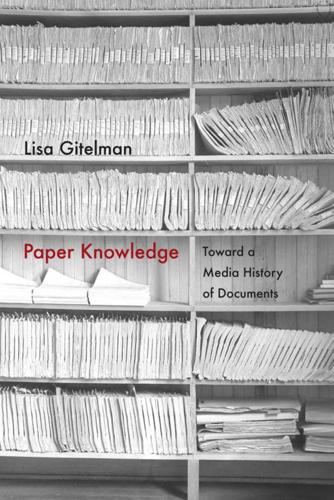
Paper Knowledge: Toward a Media History of Documents
by
Lisa Gitelman
Published 26 Mar 2014
Selden, 34–35, 44, 161n39, 161n42 Baker’s Register of Receipts and Disbursements, 34 Barthes, Roland, 112 Bartleby, 12 Beacon Press, 87 Bell Labs, 97–99 Beniger, James, 12 Benjamin, Walter, 49, 62–63, 77–79, 82, 129–30 Binkley, Robert C., 14, 20, 53–83, 114, 116, 117, 121, 132; Manual on Methods of Reproducing Research Materials, 57, 61, 63–68, 71–72, 78–79, 81, 87; Methods of Reproducing Research Materials, 53, 54, 57 blank books, 21–23, 26, 158n9 blank forms, 21, 23, 24, 30–35, 49, 52, 77 Bowers, Fredson, 85 Briet, Suzanne, 2–3 British Museum, 73–74, 80 Buckland, Michael, 2–3, 17 bureaucracy, 5, 13, 16–17, 24, 30–31, 37, 69, 92–93, 103, 106, 124 Busa, Roberto, 55 Bush, George W., 95, 97, 116 Bush, Vannevar, 119 captcha technology, 134, 135 carbon paper, 10, 64, 79, 84, 92, 95 Carlson, Chester, 84, 98 Central Intelligence Agency, 26, 89 Cheney, Richard, 97 children’s periodicals, 141–43 Chun, Wendy Hui Kyong, 152n12 Cincinnati, 33, 43–45, 47, 163n62 Civil War, 52, 77, 137, 142 Cleveland Public Library, 75 Cohen, David, 41 Commager, Henry Steele, 61–62 “Commentary on the Sixth Edition unix Operating System” (Lions), 16, 84–85, 97–100, 107, 175n50 Computer Aided Design (cad), 120 copyright, 33–34, 41, 72–74, 95–96, 107–8, 110, 170n68 Crain, Patricia, 24–25 Crary, Jonathan, 9 Davis, John, 107 de Certeau, Michel, 16, 182n71 Dean, John W., III, 96 Denning, Michael, 13 Derrida, Jacques, 7, 29, 159n18 desktop publishing, 122–25, 137–38, 150, 187n46 DeVinne, Theodore, 51 Dickinson, Emily, 31–32, 103 Dictionary of American Bibliography, 66–67 Dies, Martin, Jr., 75 digital documents, 17–18, 99–101, 110, 114–19, 122–35 digital humanities, 55–56, 71, 78, 80, 167n9, 171n88 documentary methods, 1, 11–13, 17, 19, 41, 56, 60–64, 67, 72, 78–79, 82, 83, 85, 92, 96, 98, 103, 106, 114, 116, 124, 132, 155n54 206 INDEX Drucker, Johanna, 69 Duncombe, Stephen, 136, 185n18 Dundes, Alan, 104–7 Early English Books Online, 79–80 ebsco Information Services, 47, 80, 164n6, 183n4 Edison, Thomas, 19 Edwards Brothers, Inc., 53, 54, 57, 68, 73, 80, 82 Ehrlichman, John D., 96 Eisenstein, Elizabeth L., 8 electronic books, 68, 71, 80, 115 Ellsberg, Daniel, 16, 17, 20, 84–89, 91–96, 101, 103–4, 106, 109–10, 114, 116 Engelbart, Douglas, 100, 121 Enron, 97 Erewhon (Butler), 143 Facebook, 74, 116 fanac Fan History Project, 147 Farm Securities Administration (Department of Agriculture), 13 faxes (facsimile transmissions), 84, 104, 123, 125–27, 133 Federal Theater Project (Works Progress Administration), 75 Federal Writers Project (Works Progress Administration), 13, 75 Flickr, 134 Folger, Henry Clay, 63 Ford, Gerald Ford, 97 Foucault, Michel, 19, 87, 157n71 Franklin, Benjamin, 25, 74, 144 Freedom of Information Act, 97 Fulbright, J. William, 91 Gardner, Jared, 142 Garnett, Alex, 132–33 Gascoigne, Bamber, 112 Gelb, Leslie, 89, 91, 93 “Gentlemen’s Agreement,” 72–74, 107–8, 170n68 Gernsback, Hugo, 146 Geschke, Charles, 123 glasnost, 95 Goble, Mark, 61, 64 Golden Days for Boys and Girls, 142 Google, 58, 74, 116, 132, 134, 166n3 Graham, Martha, 13 Gras, Norman, 58, 61 Gray, L.
…
Katherine, 69 Health Insurance Portability and Accountability Act of 1996, 97 Hilderbrand, Lucas, 109 Hinman, Charlton, 85 Historical Records Survey (Works Progress Administration), 62, 75–78 History E-Book Project, 80 Howells, William Dean, 36 Humanities E-Book Database, 80, 169n52 Huntington, Henry E., 63 Huntington Library, 73 Illustrated Catalogue of Ruling Machines &c (W. O. Hickok), 23 Immortal Storm, 146 Index of American Design (Works Progress Administration), 64 Information Transfer Experiments (Intrex), 120 Inland Printer, 45, 71 Institut International de Bibliographie, 59 International Catalogue of Scientific Literature, 59 International Standards Organization, 118 International Typographical Union, 25, 45 Jackson, Virginia, 103 Jenkins, Henry, 15, 137 job printing and printers, 11–12, 16, 24– 27, 30, 36–51, 56, 81, 135, 138–40 Johns, Adrian, 8, 9, 113 Johnson, Barbara, 29 Joint Committee on Materials for Research (ssrc and acls), 14, 54–62, 66, 72–73, 79–81 Joseph, Miranda, 141 Journal of Documentary Reproduction, 61 Kafka, Ben, 16, 31, 158n4 Kafka, Franz, 19 Kahana, Jonathan, 60 Keen, Andrew, 137 Kelsey Press Co., 52 Kelty, Christopher, 98 Kinko’s case, 107 Kirschenbaum, Matthew, 7, 69, 118, 134 Labussière, Charles Hippolyte, 16 Lacan, Jacques, 29 INDEX 207 Laney, Francis Towner, 147–48 Lange, Dorothea: “Migrant Mother,” 62 Lanier, Jaron, 11, 111, 116 Larcom, Lucy, 50 Latour, Bruno, 5–6, 152n7, 176n64, 178n6 letterpress printing, 7, 10, 11, 13, 14, 20, 36, 52, 66, 70, 81, 84, 113, 119, 137 Levi, Primo, 130 Levy, David, 7, 17, 169n55, 174n35 Library of Amateur Journalism, 184n6 Library of Congress, 47, 72, 73 Lions, John, 16, 17, 83–85, 97–100, 107, 110.
…
Interestingly, a similar semantics inhabits the more widely used term “documentary,” which designates the genre—or metagenre, in Jonathan Kahana’s helpful formulation26—that was so characteristic of the 1930s. The Great Depression made “a documentary approach” seem compulsory somehow,27 and social documentary in particular emerged as a cardinal form of cinema, photography, literature, dance, theater, and other arts, both with state sponsorship—under the aegis of the Works Progress Administration (wpa ) and the Farm Security Administration—and without. “The power of social documentary comes,” Kahana writes, “from its allegorical displacement of particular details onto the plane of general significance”—that is, its alignment of granular particularities and critical syntheses, along with its persistent interrogation of the effects and conditions of such an alignment.28 60 CHAPTER TWO “Documentary”—like “document”—is of course a capacious term.

The Warhol Economy
by
Elizabeth Currid-Halkett
Published 15 Jan 2020
First, several of the most important formal institutions of art were founded: the Museum of Modern Art (MoMA) in 1929, the Solomon R. Guggenheim Museum in 1937, and the Whitney Museum in 1931, which is responsible for the Whitney Biennial, an event that features lesser known but promising American artists. Second, and arguably even more important, was the Works Progress Administration (also known as the Works Projects Administration or WPA), which ran from 1935 until 1943 under Franklin Delano Roosevelt’s New Deal. The WPA gave artists projects to create public art and murals under the program’s Artists’ Project. The program employed over 5,000 artists, with New York accounting for nearly half of the participants.13 Most important, the program was instrumental in establishing artists’ careers and reputations, and for creating a network or community within the art world.
…
Index Abel, Lionel, 25 Above the Rim (film), 124 Abstract Expressionists, 155, 159; break from European influence, 25; creative culture and, 12, 20–21, 25, 38; New York City structures for, 25–26; post–World War II era and, 24–27 Action Painters, 24 activism, 40–41 Addy, Jo, 98 Adidas, 40, 102, 123, 128, 151 Aerosmith, 142 Agnes B, 17 Ahern, Charlie, 154 AIDS, 33, 36, 38, 40 Ailey, Alvin, 166 ALIFE, 123, 160 Altria, 166 Alvin Ailey American Dance Theater, 166 American Journal of Sociology, 75 American Sociological Review, 75 Anderson, Margaret, 19 “Andre the Giant Has a Posse” (Fairey), 117–21 Anheuser-Busch, 139 Antonelli, Paola, 84 Apollo Theater, 22, 27 Apple, 73 APT, 96, 99, 108, 136 Arden, Elizabeth, 23 Arenberg, Louis, 21 Arenberg, Walter, 21 Armani, Giorgio, 149, 160 Armory Show, 21 art: accessibility and, 31; activism and, 40–41; bohemians and, 20–21; break from European influence, 25; buzz and, 130–32, 139; Chelsea and, 41, 99–100, 106, 158, 175, 179; commodification of, 36–42, 117–26; as concept, 45; creativity and, 1–2 (see also creativity); critical mass of, 89–93; Downtown Collection and, 29; East Village movement and, 11–12, 35, 159; economic issues and, 7, 182–83 (see also economic issues); education and, 169–72; employment from, 2, 49–51 (see also human capital); flexible career paths and, 150–53; interdependency of, 7–11, 27–28, 31–34, 114, 140, 183–85; lessons from, 181–85; marketing and, 114–53 (see also marketing); networking and, 24, 75–86 (see also networking); New York School and, 24; nightlife and, 31–34; Paris and, 20–21; parties and, 19–20; peer review and, 115–16, 140–45, 147–50; performance, 31–33, 35, 129; policy and, 11–14; postmodernism and, 30–32; post–World War II era and, 23–28; refugees and, 18, 21, 24; role of, 2–7, 10; scene importance and, 102–10; symbolic capital and, 35; taste and, 4–6, 77; weak ties and, 75–86; Works Progress Administration (WPA) and, 23–24 ArtForum magazine, 1 Art in America, 35 Artist and Repertoire (A&R), 173 “Artists and Prostitutes” (LaChappelle), 102 Artists’ Club, 25–26, 88 artists-in-residence, 164–65, 178–81 Artist’s Project, 23–24 ARTnews, 2 Art Worlds (Becker), 94, 180, 226n35 AsFour, 109 Ashbery, John, 26 Aspen, 181 Astor, Patti, 32, 35 Austin, 176 Australia, 184–85 autarky, 70–71 avante-garde, 37 Babbo, 94–95 Baez, Joan, 27 Bailey, Glenda, 149 Ballad of Sexual Dependency, The (Goldin), 33 Bambatta, Afrika, 31, 33 Banksy, 165 Bape, 99 Barney, Matthew, 41 Barney’s, 21–22, 40, 91, 136, 142, 156, 171 Barrymore, Drew, 142 Basquiat, Jean-Michel, 11, 43, 93, 224n21; drugs and, 32, 36; networking and, 31–33; SAMO and, 1–2, 31, 154; tastemakers and, 154–55, 170 Batali, Mario, 95, 173, 175 Bathing Ape, 142 Beans, 90, 96 Beastie Boys, 37, 83, 128 Beatles, The, 126 Beat writers, 27, 30–31 Beaverstock, J.
…
See also nightlife; specific clubs Cobain, Kurt, 2 Coffee Shop, 96 Cole, Kenneth, 40 Coleman, 81 Colt45, 105, 136 Coltrane, John, 27 Columbia Records, 89, 97 Columbia University, 75, 127, 178 Combs, Sean John (Puff Daddy), 40, 125–26, 150 Coming of a Post-Industrial Society, The (Bell), 68 commodification, 227n1; cultural analysis of, 36–42, 121–26; Fairey and, 117–21 communications services, 53 Conley, Dalton, xviii Connecticut, 55 Connecticut College, 137 Connolly, James, xvii–xviii, 163 contemporary art, 37 Cope, 123 Cornell, Joseph, 26 Cosmopolitan, 142 Costa, Francisco, 15, 79, 91, 96, 140–41, 156–57 Costume Institute, xiii, 7, 23, 116, 160 Cotton Club, 22 Council of Fashion Designers of America (CFDA), 83 Crane, Diana, 135 creative class, 46 creative destruction, 127 Creative Industries: Contracts Between Art and Commerce (Caves), 77 Creative Time, 81 creativity: artists-in-residence and, 178–81; blending and, 126–29; career path flexibility and, 150–53; commodification of, 36–42, 115–26, 227n1; as concept, 45; critical mass of, 89–93; economic issues and, 45–46; education and, 170–72; environment for, 12–14; exchange nodes and, 93–94, 107–10; flexible career path and, 150–53; formal institutions and, 99–101; Great Depression and, 24; Homebrew Computer Club and, 72–73, 88; hyper-socialization and, 79; interdependency of, 34–35; location and, 45; networking and, 75–86; new ideas and, 13; nightlife and, 31–34; policy for, 11; public funding and, 177–78; recession and, 29–30; reputation and, 77–78; role of, 2–7; scene importance and, 102–10; social life of, 5–6; spatially bound chaos and, 111–13; spontaneity and, 11; supporting, 172–77; symbolic capital and, 35, 40; tax initiatives and, 177–78; weak ties and, 75–86; workings of, 77–78 credibility, 124–26, 145–46 crime, 74, 123–24, 132–33, 151 Cultural Institutions Group, 177–78 cultural producers, 2; blending and, 126–29; branding and, 156–57; buzz creation and, 130–32, 139; clustering and, 156–57, 229n16; education and, 169–72; field theory and, 224n21; gatekeepers and, 130–37; tastemakers and, 154–85 (see also tastemakers); word-of-mouth marketing and, 137–40 culture: American style and, 23; blending and, 126–29; buzz creation and, 130–32, 139; commodification of, 36–42, 115–26, 227n1; as concept, 45; critical mass of, 89–93; Department of Cultural Affairs (DCLA) and, 165, 177–78; drugs and, 33; economic issues and, 7, 11–12, 182–83; employment from, 49–51; gatekeepers and, 5–8, 107–10, 130–37; Harlem Renaissance and, 22; importance of, 48–51; interdependency of, 10–11; lessons from, 181–85; literature and, 18–20; New York City and, 1–2; peer review and, 140–45; performance and, 4–5; policy and, 12–14; post–World War II era and, 24–28; production of, 126–40; punk, 45 (see also punk culture); recession and, 28–30; refugees and, 18, 21, 24; role of, 2–7, 10; scene importance and, 102–10; symbolic capital and, 40; taste and, 4–6; theater and, 20; weak ties and, 75–86; Works Progress Administration (WPA) and, 23–24 Dada, 18, 20–21, 26, 44 Dali, Salvador, 24 dancing, 166; deal making and, 89; Double Seven and, 87; fashion and, 128–29; Lotus and, 87–88. See also nightlife “Dance Right” party, 121 Danceteria, 32, 37 Danes, Claire, 148 Darling, Candy, 27, 160 Davis, Miles, 22, 27, 170 DAZE, 15, 31, 34, 154 Death + Taxes, 91 Death and Life of Great American Cities, The (Jacobs), 74 Death Row Records, 124 Def Jam Records, 37, 83 Deitch, Jeffrey, xix, 24, 29, 38, 41, 43, 108–9 Deitch Projects, xiii, 41, 43, 102, 154, 160 de Kooning, Willem, 24–26 de la Renta, Oscar, xiii Dell, Floyd, 20 Del Posto, 173 Denny’s, 73 Department of Cultural Affairs (DCLA), 165, 177–78 Department of Labor, 172 design, 63, 139; American style and, 28; education and, 169–72; flexible specialization and, 70–72; formal institutions and, 99–101; gatekeepers and, 137; Homebrew Computer Club and, 72–73; networking and, 71–73 (see also networking); peer review and, 115–16, 140–45, 147–50; postmodernism and, 30–32; tastemakers and, 139–40; untraded interdependencies and, 71; weak ties and, 75–86 Detroit, 45–46 Diaz, Cameron, 146 Diddy (Sean Combs), 40, 125–26, 150 Dietz, Ben, 101, 139 Digital Underground, 124 DiMaggio, Paul, 131 Dinkins, David, xix Distinction (Bourdieu), 224n21 DJ Danger Mouse, 126 DJs, 1, 3, 150; culture of, 96; hip-hop and, 33; marketing and, 121, 128, 145; networking and, 31–33, 81–82, 88, 101, 111 DJ Shadow, 121 DKNY, 37 Dodge, Mabel, 20 Dolce (Domenico), 128 Dolce and Gabbana, xiii Donna Karan International, 84, 152 Donnelly, Joe, 82 “Don’t Mean a Thing If It Ain’t Got That Swing” (Ellington), 22 Double Seven, 6, 87, 139–40, 143, 172–73, 175 Downtown Book, The (Taylor), 29 Downtown Collection, 29 Downtown for Democracy, 40 Drawing Restraint 9 (Barney), 41 Dr.

Poverty for Profit
by
Anne Kim
“Executive Order 7034—Establishing the Division of Applications and Information, the Advisory Committee on Allotments, the Works Progress Administration, and for Other Purposes,” The American Presidency Project, https://www.presidency.ucsb.edu/documents/executive-order-7034-creating-machinery-for-the-works-progress-administration; “Works Progress Administration (WPA),” History.com, last modified September 21, 2022, https://www.history.com/topics/great-depression/works-progress-administration. 35. Guian A. McKee, “Lyndon B. Johnson and the War on Poverty,” Presidential Recordings, Miller Center, University of Virginia, 2014, https://prde.upress.virginia.edu/content/WarOnPoverty2. 36.
…
To dole our relief in this way is to administer a narcotic, a subtle destroyer of the human spirit. It is inimical to the dictates of a sound policy. It is in violation of the traditions of America. Work must be found for able-bodied but destitute workers.”33 Roosevelt went on to create the Works Progress Administration in 1935 (later renamed the Work Projects Administration [WPA] in 1939), which would ultimately employ more than 8.5 million Americans during its existence.34 (It would also inspire CETA.) Even President Lyndon B. Johnson’s War on Poverty was predicated on encouraging work and improving low-income Americans’ employability.
…
See also Workforce Innovation and Opportunity Act (WIOA) Work Incentive program (WIN) (“workfare”), 66 work requirements for welfare beneficiaries, 35, 37, 52, 54, 58, 61–62, 221, 229; and Nixon’s “negative income tax” plan (Family Assistance Plan), 17; SNAP recipients, 61, 212, 322n122; Trump’s proposal, 61, 322n122; and welfare-to-work programs, 36, 53, 54–57, 58–59 Works Progress Administration (WPA), 66, 70–71 W.R. Grace & Company, 44 Xerox Corporation, 93 Year Up, 99–100 About the Author Anne Kim is a writer, lawyer, and public policy expert with a long career in Washington, DC–based think tanks working in and around Capitol Hill. She is also a contributing editor at Washington Monthly, where she was a senior writer.
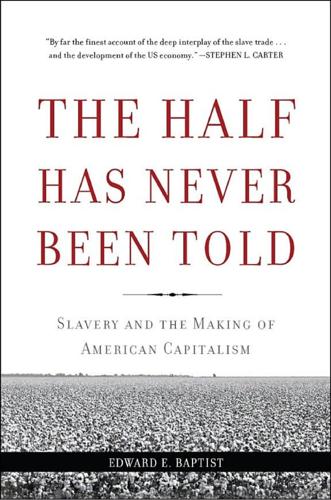
The Half Has Never Been Told: Slavery and the Making of American Capitalism
by
Edward E. Baptist
Published 24 Oct 2016
They had been prisoners for far longer. In the decades after the jubilee year of 1865, Danville, like many other southern villages, had become a cotton factory town. Anderson, an African-American master’s student from Hampton University, would not have been able to work at the segregated mill. But the Works Progress Administration (WPA), a bureau of the federal government created by President Franklin D. Roosevelt’s New Deal, would hire him. To put people back to work after they had lost their jobs in the Great Depression, the WPA organized thousands of projects, hiring construction workers to build schools and artists to paint murals.
…
I wish to god that I could get within 40 yards of him with a double barreled and if I did not stop him I am much mistaken.”3 Image 8.1. William Colbert in the 1930s, about eighty years after the beating and humiliation of his brother. This photo was taken at the time of his interview by Works Progress Administration workers. Library of Congress. Labrenty was “determined to spend double his value to conquer [Alfred],” showing that sometimes the needs of domination could not be comprehended by economic calculation. But all in all, enslaved men had to make different calculations. Sure, they, too, told stories about Potteresque “men of blood” who resisted attempts to humiliate them, like the ones Wiley Childress heard about “Fedd” from the older men.
…
Newspapers and court documents recorded the details of how freshly reestablished blood ties in slave communities could be broken as a result of crises in white families created by the financial collapse or other factors. So-and-so’s slaves, valued at $23,845, for example, went for $16,000. And African Americans remembered their own histories of the crash. In the 1930s, a white employee of the Works Progress Administration in Jasper, Texas, typed up a summary of his interview with an elderly woman named Milly Forward. “She has spent her entire life in [this] vicinity,” he began. But the text of her interview reveals something different. “I’s born in Alabama,” she recalled. “Mammy have just got up,” from giving birth, “when the white folks brung us out west.
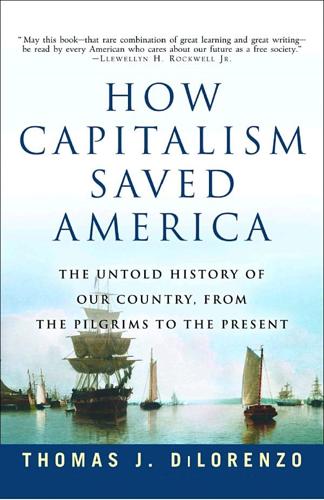
How Capitalism Saved America: The Untold History of Our Country, From the Pilgrims to the Present
by
Thomas J. Dilorenzo
Published 9 Aug 2004
At the same time he pressured state governments to increase their own public works spending. By 1931, total government public works spending would be as high as at any other point in the decade—this despite the fact that FDR employed some ten million bureaucrats in government public works jobs with his Public Works Administration, Works Progress Administration, Civilian Conservation Corps, and the rest.23 The negative effects of Hoover’s public works spending were almost immediately apparent. All this government spending took money out of the private sector, extracted through taxes. (Hoover even rescinded a minuscule 1 percent temporary tax relief program.)
…
Economic fascism, says Twight, seeks to “empower an elite to determine the specific purposes that other individuals in the society are compelled to serve”; it “is the antithesis of limited government and individualism,” as it “uncompromisingly seeks to obliterate individual rights”; its view of capitalism is “regulated capitalism” and “government intervention in the economy on a massive scale”; it “supplants . . . market considerations with political considerations” with only “perfunctory regard for economic costs or consumers’ wishes”; it uses the language of “the national interest” to justify myriad government interventions; and it “attempts to fuse management and labor, molding them into a monolithic instrument for achieving whatever government officials decree to be the national interest.”41 MAKING MATTERS WORSE: THE SECOND NEW DEAL On January 4, 1935—only a few months before the U.S. Supreme Court ruled most of the First New Deal unconstitutional—FDR announced his Second New Deal. The principal additions were the Social Security Act, the National Labor Relations Act, the Fair Labor Standards Act (the minimum-wage law), the Works Progress Administration, and punitive taxes imposed ostensibly to punish “economic royalists” and other entrepreneurs whom Roosevelt wanted to blame for the country’s troubles. Every one of these programs was a drain on the private sector and/or an impediment to employment. As such, they all made the Great Depression even worse.
…
There is no free lunch: every dollar the government spends on some kind of make-work program must necessarily depress genuine, market-driven economic growth because resources are diverted from the private to the governmental sector. That is why, despite the fact that the federal budget more than doubled in eight years, the Depression did not end and, indeed, unemployment was higher in 1938 than it was in 1931. FDR’s vaunted “jobs” programs unequivocally destroyed jobs. Government “jobs” programs, such as the Works Progress Administration and the Civilian Conservation Corps, can only destroy private-sector jobs in order to “create” government make-work jobs. And since government bureaucrats spend the taxpayers’ money much more inefficiently than the taxpayers themselves do, government jobs that are “created” usually destroy several private-sector jobs.
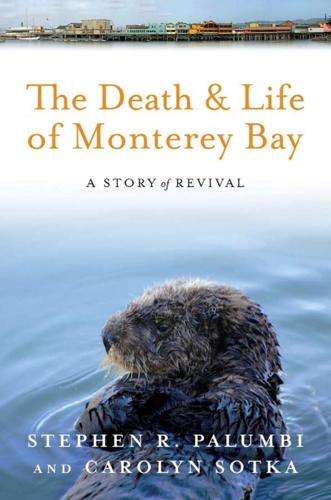
The Death and Life of Monterey Bay: A Story of Revival
by
Dr. Stephen R Palumbi Phd
and
Ms. Carolyn Sotka M. A.
Published 12 Nov 2010
“Big windows, commanding a broad expanse of bay”: in Monterey Herald, April 1931. page 64 “There was a packed house every time the council met”: p. 16 in Game and Gossip. Platt’s revision of the city’s operation: p. 16 Game and Gossip. Protection of the sea in the hands of Pacific Grove: Works Progress Administration 1937. New bill creates marine refuge at local station (WPA Historical Survey of the Monterey Peninsula Project #4080 MS, File 41, May 13), CA: Monterey, Monterey Public Library. page 65 Julia “molested” by Mr. McDougall: in Grove at High Tide, January 17, 1931. Original deed null and void: p. 17 in Game and Gossip.
…
Monterey-by-the-Smell: Odors and social conflict on the California coastline. Pacific Historical Review 73:183–214. page 81 Sea anemones grown up along the rock at Hopkins: G. Haderlie in personal communication Carolyn Sotka, November 2004. Healthy shores in Pacific Grove if the Monterey problems were solved: Works Progress Administration. 1937. New Bill Creates Marine Refuge at Local Station (WPA Historical Survey of the Monterey Peninsula Project #4080 MS, File 41, May 13), CA: Monterey, Public Library), 4. page 82 Julia’s new state law: see the Pacific Grove City ordinances, Chapter 14.04, “All the waterfront of the city, together with those certain submerged lands in the Bay of Monterey contiguous thereto, as set forth and particularly described in that certain act of the Legislature of the State of California entitled, ‘An act granting to the City of Pacific Grove the title to the waterfront of said City together with certain submerged lands in the Bay of Monterey contiguous thereto,’ approved by the Governor June 9, 1931, are hereby established as a refuge for the protection of certain kinds of marine life hereinafter mentioned and as a marine garden of the city and reference is hereby made to said act of the Legislature for a particular description of said waterfront and 192â•… â•… Notes said submerged lands” [Ord. 210 N.S. §5-401(1), 1952].
…
We can find no record of this in Julia’s writings. page 83 Julia gained legal authority to manage the Pacific Grove shoreline and police its access: p. 4 in WPA, 1937a. Julia’s plan for the refuge to be the center for scientific research and nursery: p. 4 in WPA, 1937a. “From where the tiny larvae may swim”: p. 4, WPA, 1937a. page 84 Julia crafted the Pacific Grove Marine Gardens: Works Progress Administration. 1937. New Bill Creates Marine Refuge at Local Station (WPA Historical Survey of the Monterey Peninsula Project #4080 MS, File 41, March 24), CA: Monterey, Public Library), 1. page 85 “Civic dignitaries traditionally accompany the body of a Mayor to its last resting place”: T. J., “Julia Platt: Lady Watchdog,” Game and Gossip (formerly What’s Doing) (Monterey, CA: Monterey Public Library, California History Room), 16.

Moon Coastal Oregon
by
Judy Jewell
and
W. C. McRae
Published 13 Jul 2020
U.S. 101 climbs up and over its shoulder to an elevation of 700 feet, and the vistas from a half-dozen pullouts (the highest along the Oregon coast) are spectacular—but do try to keep your eyes on the snaking road until you’ve parked your car. This stretch of the highway, built by the Works Progress Administration in the 1930s, was constructed by blasting a roadbed from the rock face and buttressing it with stonework walls on the precarious cliffs. The fainthearted or acrophobic certainly couldn’t have lasted long on this job. The handiwork of these road builders and masons can be admired at several pullouts, along with the breathtaking vistas of Manzanita Beach and Nehalem Spit, stretching some 20 miles south to Cape Meares.
…
HIKING Pick up a map or pamphlet about such trails as Cummins Creek, Giant Spruce, and Restless Waters, as well as directions for the drive (or stiff hike) to the summit of the cape, from which you can take the 0.25-mile Whispering Spruce Trail through the grounds of a former World War II U.S. Coast Guard lookout built by the Civilian Conservation Corps (CCC) in 1933. The southern views from the crest take in the highway and headlands as far south as Coos Bay. Halfway along the path, you’ll come to a Works Progress Administration-built rock hut called the West Shelter, which makes a lofty perch for whale-watching. Beyond this ridgetop aerie, the curtain of trees parts to reveal fantastic views of the shoreline between Yachats and Cape Foulweather. To begin your auto ascent, from the visitors center drive 100 yards north on U.S. 101 and look for the steep, winding spur road (Forest Rd. 55) on the right.
…
SIGHTS If first and last impressions are enduring, Florence is truly memorable. A short way to the north of town, U.S. 101 passes over Heceta Head, with great views of the lighthouse there. As you leave the city to the south, a graceful bridge over the Siuslaw ushers you away. The Siuslaw River Bridge is an impressive example of Conde McCullough’s Works Progress Administration-built spans. The Egyptian obelisks and art deco styling of McCullough’s design are complemented by the views to the west of the coruscating sand dunes. To the east, the riverside panorama of Florence’s Old Town beckons further investigation. the Siuslaw River Bridge Old Town itself is a tasteful restoration, with all manner of shops and restaurants and an inviting boardwalk along the river.
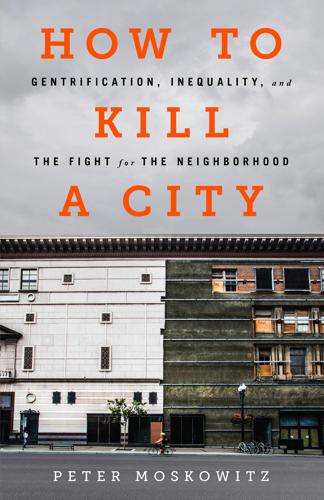
How to Kill a City: The Real Story of Gentrification
by
Peter Moskowitz
Published 7 Mar 2017
“Here you’ll find a group of like-minded settlers”: Katarina Hybenova, “How Is Life at Bushwick’s Most Controversial New Building, Colony 1209?” Bushwick Daily, June 26, 2014. “Having produced a scarcity of capital”: Smith, New Urban Frontier, 23. By funding the construction of roads outside cities: John Hansan, “WPA: The Works Progress Administration,” Social Welfare History Project, Virginia Commonwealth University, 2013, socialwelfare.library.vcu.edu/eras/great-depression/wpa-the-works-progress-administration. Between 1977 and 1984, there were 130 such conversions: Lees, Slater, and Wyly, Gentrification, 29. “gentrification is a back-to-the-city movement”: Smith, New Urban Frontier, 70. “Though the majority of residents may never contemplate”: Quoted in Jason Hackworth, The Neoliberal City: Governance, Ideology, and Development in American Urbanism (Ithaca, NY: Cornell University Press, 2007), 15.
…
“The Bloomberg administration was kind enough to rezone most of Brooklyn, and enable developers to do large scale development,” one real estate developer told a local news publication in 2015. “And in turn, people come to create life, to create families, to work and to do everything that we’re doing.” With no one putting the brakes on the system—with no new rent control, no Works Progress Administration–era levels of new affordable housing—the process propels itself into illogical loops: parts of Brooklyn have become more expensive than lower Manhattan, and the borough has become the least affordable housing market in the entire United States. The new, progressive mayor of New York who won in a landslide with promises of affordable housing has now promised to rezone large sections of previously affordable neighborhoods such as East New York, with the caveat that some of the apartments there will be made affordable.
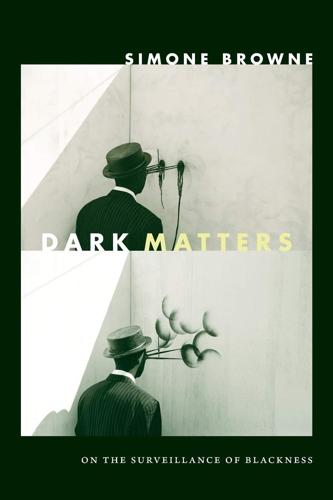
Dark Matters: On the Surveillance of Blackness
by
Simone Browne
Published 1 Oct 2015
“Plantation Rules,” 1844–1854, Tait Papers. 94. Ibid. 95. Hartman, Scenes of Subjection, 43. 96. Parenti, The Soft Cage. 97. Georgia Narratives, vol. 4, part 4, in Works Progress Administration, Born in Slavery, 322, at Manuscript and Prints and Photographs Divisions of the Library of Congress, Washington, DC, accessed May 22, 2014, http://memory.loc.gov/ammem/snhtml/snhome.html. 98. Plantation life as viewed by ex-slave Will Sheets, Georgia Narratives, vol. 4, part 3, in Works Progress Administration, Born in Slavery, 241. This transcription of Will Sheets’s quote is not as it appears in the original, where the transcriptionist’s choice of matching sound to written text in an exaggerated, stereotyped vernacular, I feel, reflects the racial logic of the time of the interview. 99.
…
This transcription of Will Sheets’s quote is not as it appears in the original, where the transcriptionist’s choice of matching sound to written text in an exaggerated, stereotyped vernacular, I feel, reflects the racial logic of the time of the interview. 99. Anderson Furr, ex-slave, eighty-seven years of age, in Georgia Narratives, vol. 4, part 1, in Works Progress Administration, Born in Slavery, 349–350. 100. The descriptions here are taken from various advertisements found in Hodges and Brown, Pretends to Be Free. Advertisements quoted here, in order, are 230, 21, 326, 26, 308, 115, 401. 101. Ibid., 91–93, Advertisement 201, Parker’s New-York Gazette, or, The Weekly Post-Boy #1008, April 29, 1762. 102.
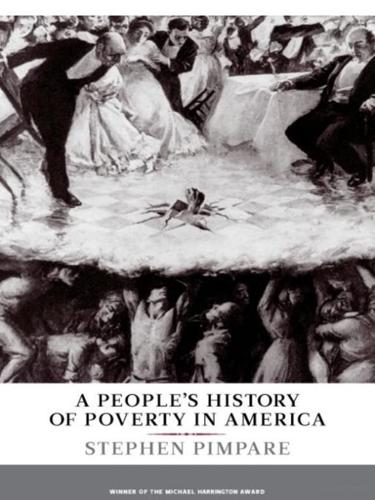
A People's History of Poverty in America
by
Stephen Pimpare
Published 11 Nov 2008
And some wondered what would happen when the federal funds dried up and they were left with hundreds of men with nowhere to live and nothing to do. The fear was not unfounded, for when the program, along with other emergency relief measures of the early New Deal, ended in 1935 (while the Depression raged on), few men from the camps were able to secure coveted Works Progress Administration jobs (less than half the men in New York camps could), and were back to where they had begun, older, but no better prepared to provide for themselves and their families. Some towns loaded up their transients into trucks and brought them to the next state or county. And on they marched.107 The Kindness of Strangers We have seen how those with little have nonetheless shared what they had with their poor friends and neighbors.
…
It made no difference to them in what pretty words the unattractive fact of their dependency was dressed. It was charity and they didn’t like it. They were accustomed to making a return for their livelihood. It was a habit they liked, and from which they chiefly drew their self-respect. The family of a man working on a Works Progress Administration project looks down its nose at neighbors who take their relief straight. We can talk all we want to about some coming civilization in which work will be outmoded, and in which we shall enjoy a state of being rather than one of action, but contemporary sentiment is still against “a man who gets something for nothing.”
…
Few Civilian Conservation Corps (CCC) jobs went to black youths.46 In the early 1930s, the Red Cross tried to provide food and clothing, but even this was resisted by the planters, just as they later resisted federal aid, until many came to realize that they could use relief as an excuse to lower the wages they were paying.47 To accommodate plantation owners, the Works Progress Administration (WPA) and other projects were often suspended at harvest time, to ensure an ample supply of cheap labor. When the Federal Emergency Relief Administration (FERA) did reach the South, whites were more likely to receive cash, and blacks were more likely to receive only food. Yet many programs achieved successes in distributing benefits to the neediest cases.
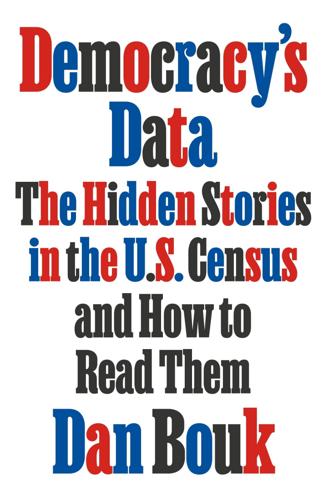
Democracy's Data: The Hidden Stories in the U.S. Census and How to Read Them
by
Dan Bouk
Published 22 Aug 2022
Looking around the room, Dublin encountered more evidence of the growth of the federal government.5 He saw representatives from old and established institutions such as the War and Navy departments (founded in 1789 and 1798) and the Departments of Agriculture (founded in 1862), Interior (founded in 1849), and Labor (1913). Beside them, surrounding them, stood representatives of a new kind of government institution, men from the Works Progress Administration (WPA, 1935), the Federal Power Commission (1920), the Federal Home Loan Bank Board (1932), the Federal Housing Administration (1934), the Social Security Board (1935), the Veterans Administration (1930), and the Central Statistical Board (1933). Commentators remarked on the alphabet soup created by Herbert Hoover’s New Era and Franklin Delano Roosevelt’s New Deal, a soup of new institutions known by their acronyms.
…
The rollout of the Social Security insurance program in 1937 also required paper proofs of identity and age, and in many fields it became impossible to get a job without a stable, official Social Security number tied to a stable, official name.9 As paper records waxed in power, the Census Bureau got to work, digging into its manuscript census sheets to create official documents based on prior enumerations showing a person’s name and age. In the late 1930s, a Works Progress Administration project aided the census in this arduous task by building a new kind of name index, called Soundex.10 The bureau knew as well as anybody that its records didn’t always spell names properly and that spellings shifted over time, and so it built an alphabetized index based on phonetics that allowed bureau officials to find any record based on the sound of a name and so provide people with the evidence they needed to get along in a document-hungry world.
…
For all these reasons, Fong and his fellow enumerators were most likely to label as “partners” unmarried Filipino men. “Partner” served as a tool for explaining the relationship of men living together in plantation camps. The “partner” label made the masses of a colonial proletariat look like members of a household. On April 30, Fong completed his enumeration among the gangs of Works Progress Administration workers fixing the region’s roads. Fong made sense of these workers with the “partner” label too, but they were far from typical. Consider the household headed by John Vierra, a forty-five-year-old divorced Puerto Rican man living with three partners: a sixty-year-old widowed Black man from Kentucky named Eph Young, a thirty-nine-year-old widowed Puerto Rican man named John B.
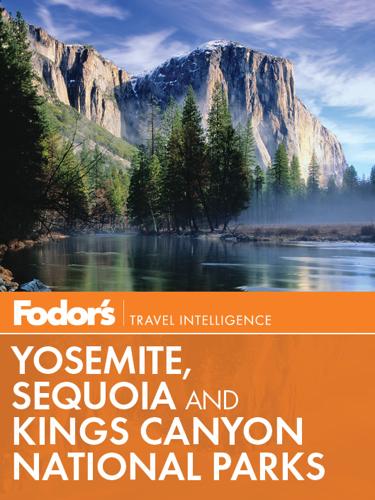
Yosemite, Sequoia & Kings Canyon
by
Fodor's
Published 17 Aug 2010
The naturalists were assigned to interpret park features to the public through educational outreaches. The park system had also begun to rethink its wildlife management practices. The 1930s brought a core of hardy workers to the nation’s parks and forests through the Civilian Conservation Corps (CCC), part of President Franklin Delano Roosevelt’s Works Progress Administration during the Great Depression. A total of 41 work camps were set up within the national parks. As the country’s population continued to grow, and society learned more about the environment and the effects of the Industrial Revolution, there was a need to take additional steps to retain pristine wilderness and historic areas.
…
Regulated: Railroads Unique qualities: Youngest president (age 42); won Nobel Peace Prize (for mediating the Russo-Japanese War) FDR Lifespan: 1882–1945 Saying: The only thing we have to fear is fear itself. Regulated: Wall Street Unique qualities: Only president with polio; only four-term president; established the WPA (Works Progress Administration) —Gary Peterson * * * Previous Chapter | Beginning of Chapter | Contents WILDLIFE IN THE PARKS Bats: Caves within the national parks teem with bats, the only mammals that can fly. Although not threatening to humans, bats do carry and can transmit dangerous diseases such as rabies.

Yellowstone & Grand Teton
by
Fodor's
Published 16 Aug 2010
The naturalists were assigned to interpret park features to the public through educational outreaches. The park system had also begun to rethink its wildlife management practices. The 1930s brought a core of hardy workers to the nation’s parks and forests through the Civilian Conservation Corps (CCC), part of President Franklin Delano Roosevelt’s Works Progress Administration during the Great Depression. A total of 41 work camps were set up within the national parks. As the country’s population continued to grow, and society learned more about the environment and the effects of the Industrial Revolution, there was a need to take additional steps to retain pristine wilderness and historic areas.
…
Regulated: Railroads Unique qualities: Youngest president (age 42); won Nobel Peace Prize (for mediating the Russo-Japanese War) FDR Lifespan: 1882–1945 Saying: The only thing we have to fear is fear itself. Regulated: Wall Street Unique qualities: Only president with polio; only four-term president; established the WPA (Works Progress Administration) —Gary Peterson * * * Previous Chapter | Beginning of Chapter | Contents WILDLIFE IN THE PARKS Bats: Caves within the national parks teem with bats, the only mammals that can fly. Although not threatening to humans, bats do carry and can transmit dangerous diseases such as rabies.

Makeshift Metropolis: Ideas About Cities
by
Witold Rybczynski
Published 9 Nov 2010
In 1926, after a disastrous downtown flood, city engineers proposed redirecting the watercourse into an underground conduit. Construction was stopped after a number of public meetings, and influenced by a proposal by local architect Robert Hugman, the city decided to undertake a civic beautification project instead. In 1938–41, with the support of the federal Works Progress Administration, floodgates and a bypass channel were built, and the horseshoe-shaped river, flanked by ancient bald cypress trees, was transformed into a linear park with walkways along the riverbanks.11 Thirty-one new stairways led down from the street, and twenty-one new pedestrian bridges crossed the watercourse.
…
.: and City Beautiful movement, 14–15, 22, 24, 25; and favorite U.S. buildings, 84–85; iconic architecture in, 139; Jacobs’s visit to, 52; L’Enfant’s design of, 11–12, 22, 164; mixed-use centers in, 154, 155–62; monuments in, 22; and ranking of global cities, 174; train stations in, 14–15, 25, 84, 139; urban college campuses in, 25; The Yards in, 155–62, 197–98 Washington, George, 11, 12, 16 Washington Navy Yard, 155 waterfronts, 113–25, 146–51, 155–62, 171 Webb, Sydney, 28 Wedge of Light (New York City), 141 Wenatchee, Washington, 174 West Edmonton Mall (Alberta, Canada), 98 West, John Jr., 11 West Palm Beach, Florida, 106–7 West Side Tennis Club (Forest Hills Gardens, New York), 36 Wharton Real Estate Center, 163 White City, 19–20, 22 White Plains, New York, 110 White, Stanford, 136 Whittlesey, Julian H., 107–8 Whyte, William H. Jr., 53–54, 55 wilderness areas, 170 Williamsburg, Virginia, 10, 11, 164 Wilson, William H., 114 Wood, John, 10 Woodward, Augustus, 13 Woolworth Building (New York City), 85 Worcester, Massachusetts, 37 Works Progress Administration (WPA), 123 World Financial Center (New York City), 142, 151 World Trade Center (New York City), 81, 128–32, 140–43, 145, 150 World’s Columbian Exposition (Chicago, 1893), 19–21, 22, 23, 24, 59, 117 World’s Fair, New York (1939), 48 World’s Fair, St. Louis (1904), 23, 24 Wright, Frank Lloyd, 67–77, 79, 92, 98, 114, 136 Wright, Henry, 38, 59, 63, 127 Wurster, Bernardi & Emmons, 120, 122 Yamasaki, Minoru, 81 The Yards (Washington, D.C.), 155–62, 197–98 Yaro, Robert, 129, 131 Yorkship Village (Camden, New Jersey), 37 zoning, 49, 72, 158
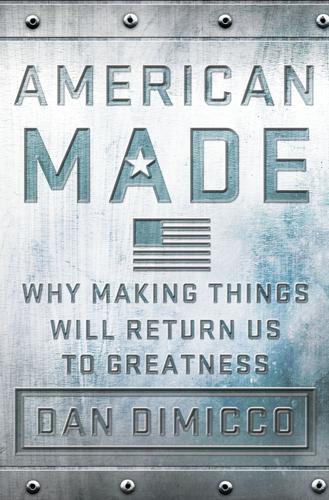
American Made: Why Making Things Will Return Us to Greatness
by
Dan Dimicco
Published 3 Mar 2015
Focusing on “how much” instead of “how” and “where” is a mistake. Think back to the stimulus debate in 2009. I think most Americans understand that the nearly $1 trillion plan that Congress and President Obama passed didn’t work as promised. Adjusted for inflation, the American Recovery and Reinvestment Act was bigger than the New Deal’s Works Progress Administration, which was supposed to help end the Great Depression. It was bigger than the Marshall Plan, which helped rebuild Europe and contain Soviet communism after World War II. All told, the federal government spent about five times as much on the 2009 stimulus as we spent to put Neil Armstrong on the moon in 1969.4 Does anyone really think the stimulus was money well spent?
…
Bigger still was the Triborough Bridge, connecting Manhattan to Queens and the Bronx by way of the Harlem River, Bronx Kill, and Hell Gate along the East River. The Golden Gate Bridge and the San Francisco Bay Bridge were both New Deal projects, and all were American made. Even the more modest projects the Works Progress Administration accomplished during the worst years of the Great Depression are worth celebrating: 78,000 new bridges and viaducts, and improvements on 46,000 more; 572,000 miles of rural roads and 67,000 miles of city streets; 39,000 new and remodeled schools; 2,500 hospitals; 12,800 playgrounds.4 Dwight Eisenhower and a bipartisan Congress in the 1950s decided the national economy would reap huge benefits from the Interstate Highway System.
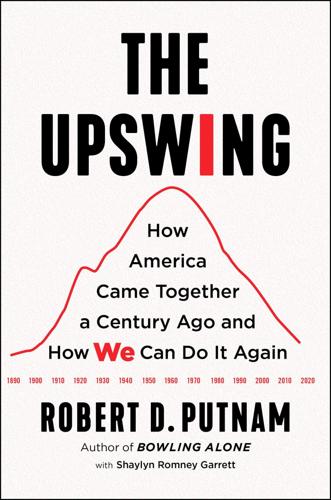
The Upswing: How America Came Together a Century Ago and How We Can Do It Again
by
Robert D. Putnam
Published 12 Oct 2020
Some scholars attribute the depolarization of the late 1930s to the defection of Southern Democrats from the New Deal coalition on racial issues.25 That fact—and thus racism—was clearly an important part of the story, but it cannot account for the surprising support of the New Deal from Republicans. On average, the nine major New Deal reforms—the Reconstruction Finance Corporation, the Agricultural Adjustment Act, the Tennessee Valley Authority (TVA), the National Industrial Recovery Act, the National Housing Act, the Works Progress Administration, Social Security, the National Labor Relations Act, and the Fair Labor Standards Act—were supported by 81 percent of congressional Democrats, but also by nearly half (47 percent) of congressional Republicans.26 In short, both parties were internally divided—on race, foreign policy, and socioeconomic policy—while the stances of their presidential standard-bearers were unexpectedly convergent.
…
Federal dollars arrived to support the draining of wetlands that harbored malarial mosquitoes, mandatory testing programs for venereal disease, bureaus of child hygiene, and TB sanatoria, all of which disproportionately improved black health outcomes.96 The New Deal also brought rural health cooperatives that extended care to black agricultural workers, as well as sanitation projects, and Works Progress Administration-funded school inspection and child nutrition programs.97 Federal investments expanded further as part of mobilization efforts during World War II, including massive subsidies extended to black medical schools and, in 1946, the Hill-Burton program, providing $75 million in grants to states for hospital construction based on need, the greatest of which was concentrated in the rural South.98 Some scholars are dubious about the impact of federal programs on the welfare of blacks, because many were systematically denied benefits.
…
Though still inadequate and (as noted above) unfairly distributed, in absolute terms Roosevelt’s New Deal provided more federal economic support to African Americans than at any time since Reconstruction.107 The New Deal provided jobs for black Americans in the Civilian Conservation Corps, Works Progress Administration, and Public Works Administration, and many of its departmental staffs included advisors for “Negro affairs,” none more famous than Mary McLeod Bethune, who ensured that the National Youth Association offered employment and vocational training to blacks.108 In response to such developments, increasing numbers of African Americans came to see FDR and his New Deal as their best political hope, and helped to ensure Roosevelt’s reelection in 1936 by leaving the Republican Party for the Democrats in record numbers.
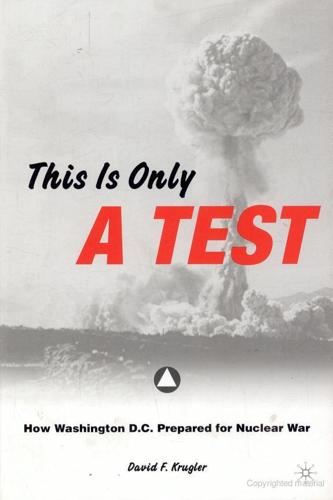
This Is Only a Test: How Washington D.C. Prepared for Nuclear War
by
David F. Krugler
Published 2 Jan 2006
Emergency Management Agency DEW Distant Early Warning Line DRP District Response Plan EAPs Emergency Action Papers ExComm Executive Committee of the NSC FBS Federal Buildings Services FCC Federal Communications Commission FCDA Federal Civil Defense Administration FEMA Federal Emergency Management Agency GSA General Services Administration HEW Department of Health, Education and Welfare ICBM intercontinental ballistic missile IRBM intermediate range ballistic missile JCS Joint Chiefs of Staff JEEP Joint Emergency Evacuation Plan MDW Military District of Washington NAWAC National Warning Control System NBS National Bureau of Standards NCPC National Capital Planning Commission NCRPC National Capital Regional Planning Council NDAC National Damage Assessment Center NEACP National Emergency Airborne Command Post NSC National Security Council NSRB National Security Resources Board OCD Office of Civilian Defense OCDM Office of Civil and Defense Mobilization ODM Office of Defense Mobilization OEP Office of Emergency Planning OPAL Operation Alert OWI Office of War Information PEF Presidential Emergency Facilities PEOC Presidential Emergency Operations Center RACES Radio Amateur Civil Emergency Service SAC Strategic Air Command SIOP Single Integrated Operational Plan SLBM submarine-launched ballistic missile TVA Tennessee Valley Authority WASP Washington Area Survival Plan WHEP White House Emergency Plan WHMO White House Military Office WPA Works Progress Administration Acknowledgments I’m grateful for the help of many people and institutions. For financial support of my research, I thank the Eisenhower World Affairs Institute; the Harry S. Truman Library Institute; the National Endowment for the Humanities; the Organization of American Historians and the White House Historical Association; and the University of Wisconsin, Platteville.
…
In many ways, they found themselves thrown into a race in which they couldn’t even place, let alone win. 1 By the Bomb’s Imaginary Light On June 11, 1940, several thousand workers gathered at points along the Potomac and Anacostia Rivers in or across from Washington, D.C.: the Washington Navy Yard, Anacostia Naval Air Station, Washington National Airport. Their job was to fortify the defenses of sites vital to national security.1 The laborers were neither soldiers nor sailors—they drew modest paychecks from the Works Progress Administration (WPA), a New Deal agency that hired the unemployed to work on public projects. In 1940, the Great Depression lingered still, and most Americans were preoccupied with jobs and bills, not national defense, even though war raged in Europe. Nazi forces were about to march into Paris, and the Luftwaffe prepared to terrorize Britain.
…
Washington National Airport, 1, 11, 45, 86 Washington Navy Yard see Naval Gun Factory white flight, 2, 29–30, 145–7, 225 n.49 White House East Wing, 15 reconstruction of, 69–75 security of during World War II, 15–16 shelters, 15, 68–75, 87, 98, 113, 155, 186–7 Signal Agency, 155–6, 162 White House Emergency Information Program, 177, 182 White House Emergency Plan (WHEP), 113, 132, 170, 177 White Sulphur Springs, W.Va., 6, 167 Whittington, Will, 59–60 Wiley, Alexander, 24–5, 36, 64 Wilson, Charlie, 124–5, 132 Winslow, Lorenzo S., 68–75 Works Progress Administration, 11, 14 World War I, 12–13, 97, 139, 180 World War II civil defense during, 12–15 effects on Washington, D.C., 11–12, 14, 16–17 Young, Gordon Russell, 45–7, 115, 124 Young, John Russell, 45, 57 zero milestone marker, 33–5, 37–9, 42, 102–4, 136, 141, 143, 147, 151, 184
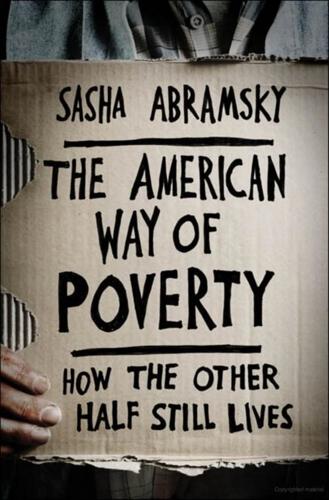
The American Way of Poverty: How the Other Half Still Lives
by
Sasha Abramsky
Published 15 Mar 2013
It was, she felt, an entirely legitimate function of government to backstop employment when the private sector faltered. Massive public works investment was done in the early years of the New Deal, to stunning effect—with the large, mechanized infrastructure projects of the Public Works Administration and then the labor-heavy projects of the Works Progress Administration, putting 4 million people back to work within a matter of months and providing those men and women with cash in their pockets that rapidly circulated throughout the entire economy. As a result of this stimulation, private employers then added another 4 million jobs. From 1933 to 1937, unemployment in America declined from 25 percent to 9 percent of the workforce.
…
Having crunched the numbers and then, he said, having run his estimates by experts at the American Enterprise Institute and Brookings Institution, he argued that one could have used the $787 billion that the 2009 stimulus package cost to create a large-scale public works program, along the lines of the Works Progress Administration, that would have been able to employ up to 20 million people, thus largely eliminating the huge well of unemployment and joblessness that bubbled up in the wake of the financial crisis and that has so stubbornly refused to go away. In contrast, he reminded audiences, the hodgepodge of investments and employment subsidies that the 2009 legislation unleashed cost a fortune and only created, or saved, between 3 and 4 million jobs.
…
C., 103, 127 Washington State, 149, 250 Wealth accumulation of, 64–65 concentration of, 26–27, 32–34, 53–54 and tax cuts for the wealthy, 207 and tax increases on the wealthy, 39–40, 82, 287–288 Weber, Max, 64 Welfare, 12, 44–45 barriers to accessing, 105 (see also under Social programs) and benefit cuts, 117 and benefit levels, decline in, 105–110 See also individual social programs; Safety net; Social programs Welfare system, history of, 66–82 Where Do We Go from Here: Chaos or Community (King), 79 Williams, Mark and Theresa, 169–170 Wisconsin, 180 Wisconsin Women’s Business Initiative (WWBI), 253 Women, 25, 82 Work trust fund, 201 Workers’ compensation, 71, 201 “Workfare for Food Stamps?” (DiMause), 222 Working poor, 30–31 Works Progress Administration, 302, 303 Wright, Pastor Royce, 178 WWBI. See Wisconsin Women’s Business Initiative Wyoming, 107 Youdelman, Sondra, 222, 223 Zelleke, Almaz, 249–251, 290–291 Zerzan, Barbara, 108–109 Ziliak, Jim, 55–56, 131–132, 153, 204–205, 218 Founded in 2000, Nation Books has become a leading voice in American independent publishing.
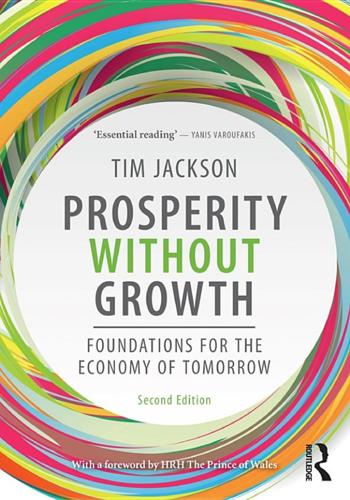
Prosperity Without Growth: Foundations for the Economy of Tomorrow
by
Tim Jackson
Published 8 Dec 2016
It didn’t in fact achieve a full economic recovery within Roosevelt’s first two terms in office. But its long-term impact was enormous. As Paul Krugman, winner of the 2008 Nobel Prize in economics, pointed out: ‘The New Deal famously placed millions of Americans on the public payroll via the Works Progress Administration [WPA] … To this day we drive on WPA-built roads and send our children to WPA-built schools.’38 Here was government acting, as Minsky later suggested it should, as ‘employer of last resort’. Public sector jobs offer a double dividend. Beyond the obvious benefits in terms of people’s livelihoods, these jobs generate a part of what has been called the ‘social wage’ – a return to households from government spending in the form of lasting infrastructure, improved health and education benefits and better social services.39 But public sector jobs are not the only way to mitigate the devastating loss to livelihoods inflicted by an extended recession.
…
INDEX Locators in italic refer to figures absolute decoupling 84–6; historical perspectives 89–96, 90, 92, 94, 95; mathematical relationship with relative decoupling 96–101, 111 abundance see opulence accounting errors, decoupling 84, 91 acquisition, instinctive 68 see also symbolic role of goods adaptation: diminishing marginal utility 51, 68; environmental 169; evolutionary 226 advertising, power of 140, 203–4 Africa 73, 75–7; life-expectancy 74; philosophy 227; pursuit of western lifestyles 70; growth 99; relative income effect 58, 75; schooling 78 The Age of Turbulence (Greenspan) 35 ageing populations 44, 81 agriculture 12, 148, 152, 220 Aids/HIV 77 algebra of inequality see inequality; mathematical models alienation: future visions 212, 218–19; geographical community 122–3; role of the state 205; selfishness vs. altruism 137; signals sent by society 131 alternatives: economic 101–2, 139–40, 157–8; hedonism 125–6 see also future visions; post-growth macroeconomics; reform altruism 133–8, 196, 207 amenities see public services/amenities Amish community, North America 128 An Inquiry into the Nature and Causes of the Wealth of Nations (Smith) 123, 132 angelised growth see green growth animal welfare 220 anonymity/loneliness see alienation anthropological perspectives, consumption 70, 115 anti-consumerism 131 see also intrinsic values anxiety: fear of death 69, 104, 115, 212–15; novelty 116–17, 124, 211 Argentina 58, 78, 78, 80 Aristotle 48, 61 The Art of Happiness (Dalai Lama) 49 arts, Baumol’s cost disease 171–2 assets, stranded 167–8 see also ownership austerity policies xxxiii–xxxv, 189; and financial crisis 24, 42–3; mathematical models 181 Australia 58, 78, 128, 206 authoritarianism 199 autonomy see freedom/autonomy Ayres, Robert 143 backfire effects 111 balance: private interests/common good 208; tradition/innovation 226 Bank for International Settlements 46 bank runs 157 banking system 29–30, 39, 153–7, 208; bonuses 37–8 see also financial crisis; financial system basic entitlements: enterprise as service 142; income 67, 72–9, 74, 75, 76, 78; limits to growth 63–4 see also education; food; health Basu, Sanjay 43 Baumol, William 112, 147, 222, 223; cost disease 170, 171, 172, 173 BBC survey, geographical community 122–3 Becker, Ernest 69 Belk, Russ 70, 114 belonging 212, 219 see also alienation; community; intrinsic values Bentham, Jeremy 55 bereavement, material possessions 114, 214–15 Berger, Peter 70, 214 Berry, Wendell 8 Better Growth, Better Climate (New Climate Economy report) 18 big business/corporations 106–7 biodiversity loss 17, 47, 62, 101 biological perspectives see evolutionary theory; human nature/psyche biophysical boundaries see limits (ecological) Black Monday 46 The Body Economic (Stuckler and Basu) 43 bond markets 30, 157 bonuses, banking 37–8 Bookchin, Murray 122 boom-and-bust cycles 157, 181 Booth, Douglas 117 borrowing behaviour 34, 118–21, 119 see also credit; debt Boulding, Elise 118 Boulding, Kenneth 1, 5, 7 boundaries, biophysical see limits (ecological) bounded capabilities for flourishing 61–5 see also limits (flourishing within) Bowen, William 147 Bowling Alone (Putnam) 122 Brazil 58, 88 breakdown of community see alienation; social stability bubbles, economic 29, 33, 36 Buddhist monasteries, Thailand 128 buen vivir concept, Ecuador xxxi, 6 built-in obsolescence 113, 204, 220 Bush, George 121 business-as-usual model 22, 211; carbon dioxide emissions 101; crisis of commitment 195; financial crisis 32–8; growth 79–83, 99; human nature 131, 136–7; need for reform 55, 57, 59, 101–2, 162, 207–8, 227; throwaway society 113; wellbeing 124 see also financial systems Canada 75, 206, 207 capabilities for flourishing 61–5; circular flow of the economy 113; future visions 218, 219; and income 77; progress measures 50–5, 54; role of material abundance 67–72; and prosperity 49; relative income effect 55–61, 58, 71, 72; role of shame 123–4; role of the state 200 see also limits (flourishing within); wellbeing capital 105, 107–10 see also investment Capital in the 21st Century (Piketty) 33, 176, 177 Capital Institute, USA 155 capitalism 68–9, 80; structures 107–13, 175; types 105–7, 222, 223 car industry, financial crisis 40 carbon dioxide emissions see greenhouse gas emissions caring professions, valuing 130, 147, 207 see also social care Cat on a Hot Tin Roof (Williams) 213 causal path analysis, subjective wellbeing 59 Central Bank 154 central human capabilities 64 see also capabilities for flourishing The Challenge of Affluence (Offer) 194 change see alternatives; future visions; novelty/innovation; post-growth macroeconomics; reform Chicago school of economics 36, 156 children: advertising to 204; labour 62, 154; mortality 74–5, 75, 206 Chile xxxiii, xxxvii, 58, 74, 74, 75, 76 China: decoupling 88; GDP per capita 75; greenhouse gas emissions 91; growth 99; life expectancy 74; philosophy 7; post-financial crisis 45–6; pursuit of western lifestyles 70; relative income effect 58; resource use 94; savings 27; schooling 76 choice, moving beyond consumerism 216–18 see also freedom/autonomy Christian doctrine see religious perspectives chromium, commodity price 13 Cinderella economy 219–21, 224 circular economy 144, 220 circular flow of the economy 107, 113 see also engine of growth citizen’s income 207 see also universal basic income civil unrest see social stability Clean City Law, São Paulo 204 climate change xxxv, 22, 47; critical boundaries 17–20; decoupling 85, 86, 87, 98; fatalism 186; investment needs 152; role of the state 192, 198, 201–2 see also greenhouse gas emissions Climate Change Act (2008), UK 198 clothing see basic entitlements Club of Rome, Limits to Growth report xxxii, xxxiii, 8, 11–16, Cobb, John 54 collectivism 191 commercial bond markets 30, 157 commitment devices/crisis of 192–5, 197 commodity prices: decoupling 88; financial crisis 26; fluctuation/volatility 14, 21; resource constraints 13–14 common good: future visions 218, 219; vs. freedom and autonomy 193–4; vs. private interests 208; role of the state 209 common pool resources 190–2, 198, 199 see also public services/amenities communism 187, 191 community: future visions of 219–20; geographical 122–3; investment 155–6, 204 see also alienation; intrinsic values comparison, social 115, 116, 117 see also relative income effect competition 27, 112; positional 55–61, 58, 71, 72 see also struggle for existence complexity, economic systems 14, 32, 108, 153, 203 compulsive shopping 116 see also consumerism Conference of the Parties to the UN Framework Convention on Climate Change (CoP21) 19 conflicted state 197, 201, 209 connectedness, global 91, 227 conspicuous consumption 115 see also language of goods consumer goods see language of goods; material goods consumer sovereignty 196, 198 consumerism 4, 21, 22, 103–4, 113–16; capitalism 105–13, 196; choice 196; engine of growth 104, 108, 120, 161; existential fear of death 69, 212–15; financial crisis 24, 28, 39, 103; moving beyond 216–18; novelty and anxiety 116–17; post-growth economy 166–7; role of the state 192–3, 196, 199, 202–5; status 211; tragedy of 140 see also demand; materialism contemplative dimensions, simplicity 127 contraction and convergence model 206–7 coordinated market economies 27, 106 Copenhagen Accord (2009) 19 copper, commodity prices 13 corporations/big business 106–7 corruption 9, 131, 186, 187, 189 The Cost Disease: Why Computers get Cheaper and Health Care Doesn’t (Baumol) 171, 172 Costa Rica 74, 74, 76 countercyclical spending 181–2, 182, 188 crafts/craft economies 147, 149, 170, 171 creative destruction 104, 112, 113, 116–17 creativity 8, 79; and consumerism 113, 116; future visions 142, 144, 147, 158, 171, 200, 220 see also novelty/innovation credit, private: deflationary forces 44; deregulation 36; financial crisis 26, 27, 27–31, 34, 36, 41; financial system weaknesses 32–3, 37; growth imperative hypothesis 178–80; mortgage loans 28–9; reforms in financial system 157; spending vs. saving behaviour of ordinary people 118–19; and stimulation of growth 36 see also debt (public) credit unions 155–6 crises: of commitment 192–5; financial see financial crisis critical boundaries, biophysical see limits (ecological) Csikszentmihalyi, Mihalyi 127 Cuba: child mortality 75; life expectancy 74, 77, 78, 78; response to economic hardship 79–80; revolution 56; schooling 76 Cushman, Philip 116 Dalai Lama 49, 52 Daly, Herman xxxii, 54, 55, 160, 163, 165 Darwin, Charles 132–3 Das Kapital (Marx) 225 Davidson, Richard 49 Davos World Economic Forum 46 Dawkins, Richard 134–5 de Mandeville, Bernard 131–2, 157 death, denial of 69, 104, 115, 212–15 debt, public-sector 81; deflationary forces 44; economic stability 81; financial crisis 24, 26–32, 27, 37, 41, 42, 81; financial systems 28–32, 153–7; money creation 178–9; post-growth economy 178–9, 223 Debt: The First Five Thousand Years (Graeber) 28 decoupling xix, xx, xxxvii, 21, 84–7; dilemma of growth 211; efficiency measures 84, 86, 87, 88, 95, 104; green growth 163, 163–5; historical perspectives 87–96, 89, 90, 92, 94, 95; need for new economic model 101–2; relationship between relative and absolute 96–101 deep emission and resource cuts 99, 102 deficit spending 41, 43 deflationary forces, post-financial crisis 43–7, 45 degrowth movement 161–3, 177 demand 104, 113–16, 166–7; post-financial crisis 44–5; post-growth economy 162, 164, 166–9, 171–2, 174–5 dematerialisation 102, 143 democratisation, and wellbeing 59 deposit guarantees 35 deregulation 27, 34, 36, 196 desire, role in consumer behaviour 68, 69, 70, 114 destructive materialism 104, 112, 113, 116–17 Deutsche Bank 41 devaluation of currency 30, 45 Dichter, Ernest 114 digital economy 44, 219–20 dilemma of growth xxxi, 66–7, 104, 210; basic entitlements 72–9, 74, 75, 76, 78; decoupling 85, 87, 164; degrowth movement 160–3; economic stability 79–83, 174–6; material abundance 67–72; moving beyond 165, 166, 183–4; role of the state 198 diminishing marginal utility: alternative hedonism 125, 126; wellbeing 51–2, 57, 60, 73, 75–6, 79 disposable incomes 27, 67, 118 distributed ownership 223 Dittmar, Helga 126 domestic debt see credit dopamine 68 Dordogne, mindfulness community 128 double movement of society 198 Douglas, Mary 70 Douthwaite, Richard 178 downshifting 128 driving analogy, managing change 16–17 durability, consumer goods 113, 204, 220 dynamic systems, managing change 16–17 Eastern Europe 76, 122 Easterlin, Richard 56, 57, 59; paradox 56, 58 eco-villages, Findhorn community 128 ecological investment 101, 166–70, 220 see also investment ecological limits see limits (ecological) ecological (ecosystem) services 152, 169, 223 The Ecology of Money (Douthwaite) 178 economic growth see growth economic models see alternatives; business-as-usual model; financial systems; future visions; mathematical models; post-growth macroeconomics economic output see efficiency; productivity ‘Economic possibilities for our grandchildren’ (Keynes) 145 economic stability 22, 154, 157, 161; financial system weaknesses 34, 35, 36, 180; growth 21, 24, 67, 79–83, 174–6, 210; post-growth economy 161–3, 165, 174–6, 208, 219; role of the state 181–3, 195, 198, 199 economic structures: post-growth economy 227; financial system reforms 224; role of the state 205; selfishness 137 see also business-as-usual model; financial systems ecosystem functioning 62–3 see also limits (ecological) ecosystem services 152, 169, 223 Ecuador xxxi, 6 education: Baumol’s cost disease 171, 172; and income 67, 76, 76; investment in 150–1; role of the state 193 see also basic entitlements efficiency measures 84, 86–8, 95, 104, 109–11, 142–3; energy 41, 109–11; growth 111, 211; investment 109, 151; of scale 104 see also labour productivity; relative decoupling Ehrlich, Paul 13, 96 elasticity of substitution, labour and capital 177–8 electricity grid 41, 151, 156 see also energy Elgin, Duane 127 Ellen MacArthur Foundation 144 emissions see greenhouse gas emissions employee ownership 223 employment intensity vs. carbon dioxide emissions 148 see also labour productivity empty self 116, 117 see also consumerism ends above means 159 energy return on investment (EROI) 12, 169 energy services/systems 142: efficiency 41, 109–11; inputs/intensity 87–8, 151; investment 41, 109–10, 151–2; renewable xxxv, 41, 168–9 engine of growth 145; consumerism 104, 108, 161; services 143, 170–4 see also circular flow of the economy enough is enough see limits enterprise as service 140, 141–4, 158 see also novelty/innovation entitlements see basic entitlements entrepreneur as visionary 112 entrepreneurial state 220 Environmental Assessment Agency, Netherlands 62 environmental quality 12 see also pollution environmentalism 9 EROI (energy return on investment) 12, 169 Essay on the Principle of Population (Malthus) 9–11, 132–3 evolutionary map, human heart 136, 136 evolutionary theory 132–3; common good 193; post-growth economy 226; psychology 133–5; selfishness and altruism 196 exchange values 55, 61 see also gross domestic product existential fear of death 69, 104, 115, 212–15 exponential expansion 1, 11, 20–1, 210 see also growth external debt 32, 42 extinctions/biodiversity loss 17, 47, 62, 101 Eyres, Harry 215 Fable of the Bees (de Mandeville) 131–2 factor inputs 109–10 see also capital; labour; resource use fast food 128 fatalism 186 FCCC (Framework Convention on Climate Change) 92 fear of death, existential 69, 104, 115, 212–15 feedback loops 16–17 financial crisis (2008) 6, 23–5, 32, 77, 103; causes and culpability 25–8; financial system weaknesses 32–7, 108; Keynesianism 37–43, 188; nationalisation of financial sector 188; need for financial reforms 175; role of debt 24, 26–32, 27, 81, 179; role of state 191; slowing of growth 43–7, 45; spending vs. saving behaviour of ordinary people 118–21, 119; types/definitions of capitalism 106; youth unemployment 144–5 financial systems: common pool resources 192; debt-based/role of debt 28–32, 153–7; post-growth economy 179, 208; systemic weaknesses 32–7; and wellbeing 47 see also banking system; business-as-usual model; financial crisis; reform Findhorn community 128 finite limits of planet see limits (ecological) Fisher, Irving 156, 157 fishing rights 22 flourishing see capabilities for flourishing; limits; wellbeing flow states 127 Flynt, Larry 40 food 67 see also basic entitlements Ford, Henry 154 forestry/forests 22, 192 Forrester, Jay 11 fossil fuels 11, 20 see also oil Foucault, Michel 197 fracking 14, 15 Framework Convention on Climate Change (FCCC) 92 France: GDP per capita 58, 75, 76; inequality 206; life-expectancy 74; mindfulness community 128; working hours 145 free market 106: financial crisis 35, 36, 37, 38, 39; ideological controversy/conflict 186–7, 188 freedom/autonomy: vs. common good 193–4; consumer 22, 68–9; language of goods 212; personal choices for improvement 216–18; wellbeing 49, 59, 62 see also individualism Friedman, Benjamin 176 Friedman, Milton 36, 156, 157 frugality 118–20, 127–9, 215–16 fun (more fun with less stuff) 129, 217 future visions 2, 158, 217–21; community banking 155–6; dilemma of growth 211; enterprise as service 140, 141–4, 147–8, 158; entrepreneur as visionary 112; financial crisis as opportunity 25; and growth 165–6; investment 22, 101–2, 140, 149–53, 158, 169, 208; money as social good 140, 153–7, 158; processes of change 185; role of the state 198, 199, 203; timescales for change 16–17; work as participation 140, 144–9, 148, 158 see also alternatives; post-growth macroeconomics; reform Gandhi, Mahatma 127 GDP see gross domestic product gene, selfish 134–5 Genuine Progress Indicator (GPI) 54, 54 geographical community 122–3 Germany xxxi; Federal Ministry of Finance 224–5; inequality 206; relative income effect 58; trade balance 31; work as participation 146 Glass Steagal Act 35 Global Commodity Price Index (1992–2015) 13 global corporations 106–7 global economy 98: culture 70; decoupling 86–8, 91, 93–5, 95, 97, 98, 100; exponential expansion 20–1; inequality 4, 5–6; interconnectedness 91, 227; post-financial crisis slowing of growth 45 Global Research report (HSBC) 41 global warming see climate change Godley, Wynne 179 Goldman Sachs 37 good life 3, 6; moral dimension 63, 104; wellbeing 48, 50 goods see language of goods; material goods; symbolic role of goods Gordon, Robert 44 governance 22, 185–6; commons 190–2; crisis of commitment 192–5, 197; economic stability 34, 35; establishing limits 200–8, 206; growth 195–9; ideological controversy/conflict 186–9; moving towards change 197–200, 220–1; post-growth economy 181–3, 182; power of corporations 106; for prosperity 209; signals 130 government as household metaphor 30, 42 governmentality 197, 198 GPI (Genuine Progress Indicator) 54, 54 Graeber, David 28 Gramm-Leach-Bliley Act 35 Great Depression 39–40 Greece: austerity xxxiii–xxxiv, xxxvii, 43; energy inputs 88; financial crisis 28, 30, 31, 77; life expectancy 74; schooling 76; relative income effect 58; youth unemployment 144 Green Economy initiative 41 green: growth xxxvii, 18, 85, 153, 166, 170; investment 41 Green New Deal, UNEP 40–1, 152, 188 greenhouse gas emissions 18, 85, 86, 91, 92; absolute decoupling 89–92, 90, 92, 98–101, 100; dilemma of growth 210–11; vs. employment intensity 148; future visions 142, 151, 201–2, 220; Kyoto Protocol 18, 90; reduction targets 19–20; relative decoupling 87, 88, 89, 93, 98–101, 100 see also climate change Greenspan, Alan 35 gross domestic product (GDP) per capita 3–5, 15, 54; climate change 18; decoupling 85, 93, 94; financial crisis 27, 28, 32; green growth 163–5; life expectancy 74, 75, 78; as measure of prosperity 3–4, 5, 53–5, 54, 60–1; post-financial crisis 43, 44; post-growth economy 207; schooling 76; wellbeing 55–61, 58 see also income growth xxxvii; capitalism 105; credit 36, 178–80; decoupling 85, 96–101; economic stability 21, 24, 67, 80, 210; financial crisis 37, 38; future visions 209, 223, 224; inequality 177; labour productivity 111; moving beyond 165, 166; novelty 112; ownership 105; post-financial crisis slowing 43–7, 45; prosperity as 3–7, 23, 66; role of the state 195–9; sustainable investment 166–70; wellbeing 59–60; as zero sum game 57 see also dilemma of growth; engine of growth; green growth; limits to growth; post-growth macroeconomy growth imperative hypothesis 37, 174, 175, 177–80, 183 habit formation, acquisition as 68 Hall, Peter 106, 188 Hamilton, William 134 Hansen, James 17 happiness see wellbeing/happiness Happiness (Layard) 55 Hardin, Garrett 190–1 Harvey, David 189, 192 Hayek, Friedrich 187, 189, 191 health: Baumol’s cost disease 171, 172; inequality 72–3, 205–6, 206; investment 150–1; and material abundance 67, 68; personal choices for improvement 217; response to economic hardship 80; role of the state 193 see also basic entitlements Heath, Edward 66, 82 hedonism 120, 137, 196; alternatives 125–6 Hirsch, Fred xxxii–xxxiii historical perspectives: absolute decoupling 86, 89–96, 90, 92, 94, 95; relative decoupling 86, 87–9, 89 Holdren, John 96 holistic solutions, post-growth economy 175 household finances: house purchases 28–9; spending vs. saving behaviour 118–20, 119 see also credit household metaphor, government as 30, 42 HSBC Global Research report 41 human capabilities see capabilities for flourishing human happiness see wellbeing/happiness human nature/psyche 3, 132–5, 138; acquisition 68; alternative hedonism 125; evolutionary map of human heart 136, 136; intrinsic values 131; meaning/purpose 49–50; novelty/innovation 116; selfishness vs. altruism 133–8; short-termism/living for today 194; spending vs. saving behaviour 34, 118–21, 119; symbolic role of goods 69 see also intrinsic values human rights see basic entitlements humanitarian perspectives: financial crisis 24; growth 79; inequality 5, 52, 53 see also intrinsic values hyperbolic discounting 194 hyperindividualism 226 see also individualism hyper-materialisation 140, 157 I Ching (Chinese Book of Changes) 7 Iceland: financial crisis 28; life expectancy 74, 75; relative income effect 56; response to economic hardship 79–80; schooling 76; sovereign money system 157 identity construction 52, 69, 115, 116, 212, 219 IEA (International Energy Agency) 14, 152 IMF (International Monetary Fund) 45, 156–7 immaterial goods 139–40 see also intrinsic values; meaning/purpose immortality, symbolic role of goods 69, 104, 115, 212–14 inclusive growth see inequality; smart growth income 3, 4, 5, 66, 124; basic entitlements 72–9, 74, 75, 76, 78; child mortality 74–5, 75; decoupling 96; economic stability 82; education 76; life expectancy 72, 73, 74, 77–9, 78; poor nations 67; relative income effect 55–61, 58, 71, 72; tax revenues 81 see also gross domestic product INDCs (intended nationally determined commitments) 19 India: decoupling 99; growth 99; life expectancy 74, 75; philosophy 127; pursuit of western lifestyles 70; savings 27; schooling 76 indicators of environmental quality 96 see also biodiversity; greenhouse gas emissions; pollution; resource use individualism 136, 226; progressive state 194–7, 199, 200, 203, 207 see also freedom/autonomy industrial development 12 see also technological advances inequality 22, 67; basic entitlements 72; child mortality 75, 75; credible alternatives 219, 224; deflationary forces 44; fatalism 186; financial crisis 24; global 4, 5–6, 99, 100; financial system weaknesses 32–3; post-growth economy 174, 176–8; role of the state 198, 205–7, 206; selfishness vs. altruism 137; symbolic role of goods 71; wellbeing 47, 104 see also poverty infant mortality rates 72, 75 inflation 26, 30, 110, 157, 167 infrastructure, civic 150–1 Inglehart, Ronald 58, 59 innovation see novelty/innovation; technological advances inputs 80–1 see also capital; labour productivity; resource use Inside Job documentary film 26 instant gratification 50, 61 instinctive acquisition 68 Institute for Fiscal Studies 81 Institute for Local Self-Reliance 204 institutional structures 130 see also economic structures; governance intended nationally determined commitments (INDCs) 19 intensity factor, technological 96, 97 see also technological advances intentional communities 127–9 interconnectedness, global 91, 227 interest payments/rates 39, 43, 110; financial crisis 29, 30, 33, 39; post-growth economy 178–80 see also credit; debt Intergovernmental Panel on Climate Change (IPCC) 18, 19, 201–2 International Energy Agency (IEA) 14, 152 International Monetary Fund (IMF) 45, 156–7 intrinsic values 126–31, 135–6, 212; role of the state 199, 200 see also belonging; community; meaning/purpose; simplicity/frugality investment 107–10, 108; ecological/sustainable 101, 152, 153, 166–70, 220; and innovation 112; loans 29; future visions 22, 101–2, 140, 149–53, 158, 169, 208, 220; and savings 108; social 155, 156, 189, 193, 208, 220–3 invisible hand metaphor 132, 133, 187 IPAT equation, relative and absolute decoupling 96 IPCC (Intergovernmental Panel on Climate Change) 18, 19, 201–2 Ireland 28; inequality 206; life expectancy 74, 75; schooling 76; wellbeing 58 iron cage of consumerism see consumerism iron ore 94 James, Oliver 205 James, William 68 Japan: equality 206; financial crisis 27, 45; life expectancy 74, 76, 79; relative income effect 56, 58; resource use 93; response to economic hardship 79–80 Jefferson, Thomas 185 Jobs, Steve 210 Johnson, Boris 120–1 Kahneman, Daniel 60 Kasser, Tim 126 keeping up with the Joneses 115, 116, 117 see also relative income effect Kennedy, Robert 48, 53 Keynes, John Maynard/Keynesianism 23, 34, 120, 174, 181–3, 187–8; financial crisis 37–43; financial system reforms 157; part-time working 145; steady state economy 159, 162 King, Alexander 11 Krugman, Paul 39, 85, 86, 102 Kyoto Protocol (1992) 18, 90 labour: child 62, 154; costs 110; division of 158; elasticity of substitution 177, 178; intensity 109, 148, 208; mobility 123; production inputs 80, 109; structures of capitalism 107 labour productivity 80–1, 109–11; Baumol’s cost disease 170–2; and economic growth 111; future visions 220, 224; investment as commitment 150; need for investment 109; post-growth economy 175, 208; services as engine of growth 170; sustainable investment 166, 170; trade off with resource use 110; work-sharing 145, 146, 147, 148, 148, 149 Lahr, Christin 224–5 laissez-faire capitalism 187, 195, 196 see also free market Lakoff, George 30 language of goods 212; material footprint of 139–40; signalling of social status 71; and wellbeing 124 see also consumerism; material goods; symbolic role of goods Layard, Richard 55 leadership, political 199 see also governance Lebow, Victor 120 Lehman Brothers, bankruptcy 23, 25, 26, 118 leisure economy 204 liberal market economies 106, 107; financial crisis 27, 35–6 life expectancy: and income 72, 73, 74, 77–9, 78; inequality 206; response to economic hardship 80 see also basic entitlements life-satisfaction 73; inequality 205; relative income effect 55–61, 58 see also wellbeing/happiness limits, ecological 3, 4, 7, 11, 12, 20–2; climate change 17–20; decoupling 86; financial crisis 23–4; growth 21, 165, 210; post-growth economy 201–2, 226–7; role of the state 198, 200–2, 206–7; and social boundaries 141; wellbeing 62–63, 185 limits, flourishing within 61–5, 185; alternative hedonism 125–6; intrinsic values 127–31; moving towards 215, 218, 219, 221; paradox of materialism 121–23; prosperity 67–72, 113, 212; role of the state 201–2, 205; selfishness 131–8; shame 123–4; spending vs. saving behaviour 118–21, 119 see also sustainable prosperity limits to growth: confronting 7–8; exceeding 20–2; wellbeing 62–3 Limits to Growth report (Club of Rome) xxxii, xxxiii, 8, 11–16 ‘The Living Standard’ essay (Sen) 50, 123–4 living standards 82 see also prosperity Lloyd, William Forster 190 loans 154; community investment 155–6; financial system weaknesses 34 see also credit; debt London School of Economics 25 loneliness 123, 137 see also alienation long-term: investments 222; social good 219 long-term wellbeing vs. short-term pleasures 194, 197 longevity see life expectancy love 212 see also intrinsic values low-carbon transition 19, 220 LowGrow model for the Canadian economy 175 MacArthur Foundation 144 McCracken, Grant 115 Malthus, Thomas Robert 9–11, 132–3, 190 market economies: coordinated 27, 106; liberal 27, 35–6, 106, 107 market liberalism 106, 107; financial crisis 27, 35–6; wellbeing 47 marketing 140, 203–4 Marmot review, health inequality in the UK 72 Marx, Karl/Marxism 9, 189, 192, 225 Massachusetts Institute of Technology (MIT) 11, 12, 15 material abundance see opulence material goods 68–9; identity 52; language of 139–40; and wellbeing 47, 48, 49, 51, 65, 126 see also symbolic role of goods material inputs see resource use materialism: and fear of death 69, 104, 115, 212–15; and intrinsic values 127–31; paradox of 121–3; price of 126; and religion 115; values 126, 135–6 see also consumerism mathematical models/simulations 132; austerity policies 181; countercyclical spending 181–2, 182; decoupling 84, 91, 96–101; inequality 176–8; post-growth economy 164; stock-flow consistent 179–80 Mawdsley, Emma 70 Mazzucato, Mariana 193, 220 MDG (Millennium Development Goals) 74–5 Meadows, Dennis and Donella 11, 12, 15, 16 meaning/purpose 2, 8, 22; beyond material goods 212–16; consumerism 69, 203, 215; intrinsic values 127–31; moving towards 218–20; wellbeing 49, 52, 60, 121–2; work 144, 146 see also intrinsic values means and ends 159 mental health: inequality 206; meaning/purpose 213 metaphors: government as household 30, 42; invisible hand 132, 133, 187 Middle East, energy inputs 88 Miliband, Ed 199 Mill, John Stuart 125, 159, 160, 174 Millennium Development Goals (MDG) 74–5 mindfulness 128 Minsky, Hyman 34, 35, 40, 182, 208 MIT (Massachusetts Institute of Technology) 11, 12, 15 mixed economies 106 mobility of labour, loneliness index 123 Monbiot, George 84, 85, 86, 91 money: creation 154, 157, 178–9; and prosperity 5; as social good 140, 153–7, 158 see also financial systems monopoly power, corporations 106–7 The Moral Consequences of Economic Growth (Friedman) 82, 176 moral dimensions, good life 63 see also intrinsic values moral hazards, separation of risk from reward 35 ‘more fun with less stuff’ 129, 217 mortality fears 69, 104, 115, 212–15 mortality rates, and income 74, 74–6, 75 mortgage loans 28–9, 35 multinational corporations 106–7 national debt see debt, public-sector nationalisation 191; financial crisis 38, 188 natural selection 132–3 see also struggle for existence nature, rights of 6–7 negative emissions 98–9 negative feedback loops 16–17 Netherlands 58, 62, 206, 207 neuroscientific perspectives: flourishing 68, 69; human behaviour 134 New Climate Economy report Better Growth, Better Climate 18 New Deal, USA 39 New Economics Foundation 175 nickel, commodity prices 13 9/11 terrorist attacks (2001) 121 Nordhaus, William 171, 172–3 North America 128, 155 see also Canada; United States Norway: advertising 204; inequality 206; investment as commitment 151–2; life expectancy 74; relative income effect 58; schooling 76 novelty/innovation 104, 108, 113; and anxiety 116–17, 124, 211; crisis of commitment 195; dilemma of growth 211; human psyche 135–6, 136, 137; investment 150, 166, 168; post-growth economy 226; role of the state 196, 197, 199; as service 140, 141–4, 158; symbolic role of goods 114–16, 213 see also technological advances Nudge: Improving Decisions about Health, Wealth, and Happiness (Thaler and Sunstein) 194–5 Nussbaum, Martha 64 nutrient loading, critical boundaries 17 nutrition 67 see also basic entitlements obesity 72, 78, 206 obsolescence, built in 113, 204, 220 oceans: acidification 17; common pool resources 192 Offer, Avner 57, 61, 71, 194, 195 oil prices 14, 21; decoupling 88; financial crisis 26; resource constraints 15 oligarchic capitalism 106, 107 opulence 50–1, 52, 67–72 original sin 9, 131 Ostrom, Elinor and Vincent 190, 191 output see efficiency; gross domestic product; productivity ownership: and expansion 105; private vs. public 9, 105, 191, 219, 223; new models 223–4; types/definitions of capitalism 105–7 Oxfam 141 paradoxes: materialism 121–3; thrift 120 Paris Agreement 19, 101, 201 participation in society 61, 114, 122, 129, 137; future visions 200, 205, 218, 219, 225; work as 140–9, 148, 157, 158 see also social inclusion part-time working 145, 146, 149, 175 Peccei, Aurelio 11 Perez, Carlota 112 performing arts, Baumol’s cost disease 171–2 personal choice 216–18 see also freedom/autonomy personal property 189, 191 Pickett, Kate 71, 205–6 Piketty, Thomas 33, 176, 177 planetary boundaries see limits (ecological) planning for change 17 pleasure 60–1 see also wellbeing/happiness Plum Village mindfulness community 128 Polanyi, Karl 198 policy see governance political leadership 199 see also governance Political Economy Research Institute, University of Massachusetts 41 pollution 12, 21, 53, 95–6, 143 polycentric governance 191, 192 Poor Laws 10 poor nations see poverty population increase 3, 12, 63, 96, 97, 190; Malthus on 9–11, 132–3 porn industry 40 Portugal 28, 58, 88, 206 positional competition 55–61, 58, 71, 72 see also social comparison positive feedback loops 16–17 post-growth capitalism 224 post-growth macroeconomics 159–60, 183–4, 221; credit 178–80; degrowth movement 161–3; economic stability 174–6; green growth 163–5; inequality 176–8; role of state 181–3, 182, 200–8, 206; services 170–4; sustainable investment 166–70 see also alternatives; future visions; reform poverty 4, 5–6, 216; basic entitlements 72; flourishing within limits 212; life expectancy 74, 74; need for new economic model 101; symbolic role of goods 70; wellbeing 48, 59–60, 61, 67 see also inequality; relative income effect power politics 200 predator–prey analogy 103–4, 117 private credit see credit private vs. public: common good 208; ownership 9, 105, 191, 219, 223; salaries 130 privatisation 191, 219 product lifetimes, obsolescence 113, 204, 220 production: inputs 80–1; ownership 191, 219, 223 productivity: investment 109, 167, 168, 169; post-growth economy 224; services as engine of growth 171, 172, 173; targets 147; trap 175 see also efficiency measures; labour productivity; resource productivity profits: definitions of capitalism 105; dilemma of growth 211; efficiency measures 87; investment 109; motive 104; post-growth economy 224; and wages 175–8 progress 2, 50–5, 54 see also novelty/innovation; technological advances progressive sector, Baumol’s cost disease 171 progressive state 185, 220–2; contested 186–9; countering consumerism 202–5; equality measures 205–7, 206; governance of the commons 190–2; governance as commitment device 192–5; governmentality of growth 195–7; limit-setting 201–2; moving towards 197–200; post-growth macroeconomics 207–8, 224; prosperity 209 prosocial behaviour 198 see also social contract prosperity 1–3, 22, 121; capabilities for flourishing 61–5; and growth 3–7, 23, 66, 80, 160; and income 3–4, 5, 66–7; limits of 67–72, 113, 212; materialistic vision 137; progress measures 50–5, 54; relative income effect 55–61, 58, 71, 72; social perspectives 2, 22, 48–9; state roles 209 see also capabilities for flourishing; post-growth macroeconomics; sustainable prosperity; wellbeing prudence, financial 120, 195, 221; financial crisis 33, 34, 35 public sector spending: austerity policies 189; countercyclical spending strategy 181–2, 182; welfare economy 169 public services/amenities: common pool resources 190–2, 198, 199; future visions 204, 218–20; investment 155–6, 204; ownership 223 see also private vs. public; service-based economies public transport 41, 129, 193, 217 purpose see meaning/purpose Putnam, Robert 122 psyche, human see human nature/psyche quality, environmental 12 see also pollution quality of life: enterprise as service 142; inequality 206; sustainable 128 quality to throughput ratios 113 quantitative easing 43 Queen Elizabeth II 25, 32, 34, 37 quiet revolution 127–31 Raworth, Kate 141 Reagan, Ronald 8 rebound phenomenon 111 recession 23–4, 28, 81, 161–3 see also financial crisis recreation/leisure industries 143 recycling 129 redistribution of wealth 52 see also inequality reforms 182–3, 222; economic structures 224; and financial crisis 103; financial systems 156–8, 180 see also alternatives; future visions; post-growth economy relative decoupling 84–5, 86; historical perspectives 87–9, 89; relationship with absolute decoupling 96–101, 111 relative income effect 55–61, 58, 71, 72 see also social comparison religious perspectives 9–10, 214–15; materialism as alternative to religion 115; original sin 9, 131; wellbeing 48, 49 see also existential fear of death renewable energy xxxv, 41, 168–169 repair/renovation 172, 220 resource constraints 3, 7, 8, 11–15, 47 resource productivity 110, 151, 168, 169, 220 resource use: conflicts 22; credible alternatives 101, 220; decoupling 84–9, 92–5, 94, 95; and economic output 142–4; investment 151, 153, 168, 169; trade off with labour costs 110 retail therapy 115 see also consumerism; shopping revenues, state 222–3 see also taxation revolution 186 see also social stability rights: environment/nature 6–7; human see basic entitlements risk, financial 24, 25, 33, 35 The Road to Serfdom (Hayek) 187 Robinson, Edward 132 Robinson, Joan 159 Rockström, Johan 17, 165 romantic movement 9–10 Roosevelt, Franklin D. 35, 39 Rousseau, Jean Jacques 9, 131 Russia 74, 76, 77–80, 78, 122 sacred canopy 214, 215 salaries: private vs. public sector 130, 171; and profits 175–8 Sandel, Michael 150, 164, 218 São Paulo, Clean City Law 204 Sardar, Zia 49, 50 Sarkozy, Nicolas xxxi, 53 savage state, romantic movement 9–10 savings 26–7, 28, 107–9, 108; investment 149; ratios 34, 118–20, 119 scale, efficiencies of 104 Scandinavia 27, 122, 204 scarcity, managing change 16–17 Schumpeter, Joseph 112 Schwartz, Shalom 135–6, 136 schooling see education The Science of Desire (Dichter) 114 secular stagnation 43–7, 45, 173 securitisation, mortgage loans 35 security: moving towards 219; and wellbeing 48, 61 self-development 204 self-expression see identity construction self-transcending behaviours see transcendence The Selfish Gene (Dawkins) 134–5 selfishness 133–8, 196 Sen, Amartya 50, 52, 61–2, 123–4 service concept/servicization 140–4, 147–8, 148, 158 service-based economies 219; engine of growth 170–4; substitution between labour and capital 178; sustainable investment 169–70 see also public services SFC (stock-flow consistent) economic models 179–80 shame 123–4 shared endeavours, post-growth economy 227 Sheldon, Solomon 214 shelter see basic entitlements shopping 115, 116, 130 see also consumerism short-termism/living for today 194, 197, 200 signals: sent out by society 130, 193, 198, 203, 207; social status 71 see also language of goods Simon, Julian 13 simplicity/simple life 118–20, 127–9, 215–16 simulations see mathematical models/simulations slow: capital 170; movement 128 smart growth 85, 163–5 see also green growth Smith, Adam 51, 106–7, 123, 132, 187 social assets 220 social boundaries (minimum standards) 141 see also basic entitlements social care 150–1 see also caring professions social comparison 115, 116, 117 see also relative income effect social contract 194, 198, 199, 200 social inclusion 48, 69–71, 114, 212 see also participation in society social investment 155, 156, 189, 193, 208, 220–3 social justice 198 see also inequality social logic of consumerism 114–16, 204 social stability 24, 26, 80, 145, 186, 196, 205 see also alienation social status see status social structures 80, 129, 130, 137, 196, 200, 203 social tolerance, and wellbeing 59, 60 social unrest see social stability social wage 40 social welfare: financial reforms 182–3; public sector spending 169 socialism 223 Sociobiology (Wilson) 134 soil integrity 220 Solon, quotation 47, 49, 71 Soper, Kate 125–6 Soros, George 36 Soskice, David 106 Soviet Union, former 74, 76, 77–80, 78, 122 Spain 28, 58, 144, 206 SPEAR organization, responsible investment 155 species loss/extinctions 17, 47, 62, 101 speculation 93, 99, 149, 150, 154, 158, 170; economic stability 180; financial crisis 26, 33, 35; short-term profiteering 150; spending: behaviour of ordinary people 34, 119, 120–1; countercyclical 181–2, 182, 188; economic stability 81; as way out of recession 41, 44, 119, 120–1; and work cycle 125 The Spirit Level (Wilkinson and Pickett) 71, 205–6 spiritual perspectives 117, 127, 128, 214 stability see economic stability; social stability stagflation 26 stagnant sector, Baumol’s cost disease 171 stagnation: economic stability 81–2; labour productivity 145; post-financial crisis 43–7, 45 see also recession state capitalism, types/definitions of capitalism 106 state revenues, from social investment 222–3 see also taxation state roles see governance status 207, 209, 211; and possessions 69, 71, 114, 115, 117 see also language of goods; symbolic role of goods Steady State Economics (Daly) xxxii steady state economies 82, 159, 160, 174, 180 see also post-growth macroeconomics Stern, Nicholas 17–18 stewardship: role of the state 200; sustainable investment 168 Stiglitz, Joseph 53 stock-flow consistent (SFC) economic models 179–80 Stockholm Resilience Centre 17, 201 stranded assets 167–8 see also ownership structures of capitalism see economic structures struggle for existence 8–11, 125, 132–3 Stuckler, David 43 stuff see language of goods; material goods; symbolic role of goods subjective wellbeing (SWB) 49, 58, 58–9, 71, 122, 129 see also wellbeing/happiness subprime lending 26 substitution, between labour and capital 177–178 suffering, struggle for existence 10 suicide 43, 52, 77 Sukdhev, Pavan 41 sulphur dioxide pollution 95–6 Summers, Larry 36 Sunstein, Cass 194 sustainability xxv–xxvi, 102, 104, 126; financial systems 154–5; innovation 226; investment 101, 152, 153, 166–70, 220; resource constraints 12; role of the state 198, 203, 207 see also sustainable prosperity Sustainable Development Strategy, UK 198 sustainable growth see green growth sustainable prosperity 210–12; creating credible alternatives 219–21; finding meaning beyond material commodities 212–16; implications for capitalism 222–5; personal choices for improvement 216–18; and utopianism 225–7 see also limits (flourishing within) SWB see subjective wellbeing; wellbeing/happiness Switzerland 11, 46, 157; citizen’s income 207; income relative to wellbeing 58; inequality 206; life expectancy 74, 75 symbolic role of goods 69, 70–1; existential fear of death 212–16; governance 203; innovation/novelty 114–16; material footprints 139–40; paradox of materialism 121–2 see also language of goods; material goods system dynamics model 11–12, 15 tar sands/oil shales 15 taxation: capital 177; income 81; inequality 206; post-growth economy 222 technological advances 12–13, 15; decoupling 85, 86, 87, 96–8, 100–3, 164–5; dilemma of growth 211; economic stability 80; population increase 10–11; role of state 193, 220 see also novelty/innovation Teilhard de Chardin, Pierre 8 terror management, and consumption 69, 104, 115, 212–15 terrorist attacks (9/11) 121 Thailand, Buddhist monasteries 128 Thaler, Richard 194 theatre, Baumol’s cost disease 171–2 theology see religious perspectives theory of evolution 132–3 thermodynamics, laws of 112, 164 Thich Nhat Hanh 128 thrift 118–20, 127–9, 215–16 throwaway society 113, 172, 204 timescales for change 16–17 tin, commodity prices 13 Today programme interview xxix, xxviii Totnes, transition movement 128–9 Towards a Green Economy report (UNEP) 152–3 Townsend, Peter 48, 61 trade balance 31 trading standards 204 tradition 135–6, 136, 226 ‘Tragedy of the commons’ (Hardin) 190–1 transcendence 214 see also altruism; meaning/purpose; spiritual perspectives transition movement, Totnes 128–9 Triodos Bank 156, 165 Trumpf (machine-tool makers) Germany 146 trust, loss of see alienation tungsten, commodity prices 13 Turkey 58, 88 Turner, Adair 157 21st Conference of the Parties to the UN Framework Convention on Climate Change (2015) 19 UBS (Swiss bank) 46 Ubuntu, African philosophy 227 unemployment 77; consumer goods 215; degrowth movement 162; financial crisis 24, 40, 41, 43; Great Depression 39–40; and growth 38; labour productivity 80–1; post-growth economy 174, 175, 183, 208, 219; work as participation 144–6 United Kingdom: Green New Deal group 152; greenhouse gas emissions 92; labour productivity 173; resource inputs 93; Sustainable Development Strategy 198 United Nations: Development Programme 6; Environment Programme 18, 152–3; Green Economy initiative 41 United States: credit unions 155–6; debt 27, 31–32; decoupling 88; greenhouse gas emissions 90–1; subprime lending 26; Works Progress Administration 39 universal basic income 221 see also citizen’s income University of Massachusetts, Political Economy Research Institute 41 utilitarianism/utility, wellbeing 50, 52–3, 55, 60 utopianism 8, 38, 125, 179; post-growth economy 225–7 values, materialistic 126, 135–6 see also intrinsic values Veblen, Thorstein 115 Victor, Peter xxxviii, 146, 175, 177, 180 vision of progress see future visions; post-growth economy volatility, commodity prices 14, 21 wages: and profits 175–8; private vs. public sector 130, 171 walking, personal choices for improvement 217 water use 22 Wealth of Nations, An Inquiry into the Nature and Causes (Smith) 123, 132 wealth redistribution 52 see also inequality Weber, Axel 46 welfare policies: financial reforms 182–3; public sector spending 169 welfare of livestock 220 wellbeing/happiness 47–50, 53, 121–2, 124; collective 209; consumer goods 4, 21, 22, 126; growth 6, 165, 211; intrinsic values 126, 129; investment 150; novelty/innovation 117; opulence 50–2, 67–72; personal choices for improvement 217; planetary boundaries 141; relative income effect 55–61, 58, 71, 72; simplicity 129; utilitarianism 50, 52–3, 55, 60 see also capabilities for flourishing western lifestyles 70, 210 White, William 46 Whybrow, Peter 68 Wilhelm, Richard 7 Wilkinson, Richard 71, 205–6 Williams, Tennessee 213 Wilson, Edward 134 wisdom traditions 48, 49, 63, 128, 213–14 work: as participation 140–9, 148, 157, 158; and spend cycle 125; sharing 145, 146, 149, 175 Works Progress Administration, USA 39 World Bank 160 World Values Survey 58 youth unemployment, financial crisis 144–5 zero sum game, growth as 57, 71
…
INDEX Locators in italic refer to figures absolute decoupling 84–6; historical perspectives 89–96, 90, 92, 94, 95; mathematical relationship with relative decoupling 96–101, 111 abundance see opulence accounting errors, decoupling 84, 91 acquisition, instinctive 68 see also symbolic role of goods adaptation: diminishing marginal utility 51, 68; environmental 169; evolutionary 226 advertising, power of 140, 203–4 Africa 73, 75–7; life-expectancy 74; philosophy 227; pursuit of western lifestyles 70; growth 99; relative income effect 58, 75; schooling 78 The Age of Turbulence (Greenspan) 35 ageing populations 44, 81 agriculture 12, 148, 152, 220 Aids/HIV 77 algebra of inequality see inequality; mathematical models alienation: future visions 212, 218–19; geographical community 122–3; role of the state 205; selfishness vs. altruism 137; signals sent by society 131 alternatives: economic 101–2, 139–40, 157–8; hedonism 125–6 see also future visions; post-growth macroeconomics; reform altruism 133–8, 196, 207 amenities see public services/amenities Amish community, North America 128 An Inquiry into the Nature and Causes of the Wealth of Nations (Smith) 123, 132 angelised growth see green growth animal welfare 220 anonymity/loneliness see alienation anthropological perspectives, consumption 70, 115 anti-consumerism 131 see also intrinsic values anxiety: fear of death 69, 104, 115, 212–15; novelty 116–17, 124, 211 Argentina 58, 78, 78, 80 Aristotle 48, 61 The Art of Happiness (Dalai Lama) 49 arts, Baumol’s cost disease 171–2 assets, stranded 167–8 see also ownership austerity policies xxxiii–xxxv, 189; and financial crisis 24, 42–3; mathematical models 181 Australia 58, 78, 128, 206 authoritarianism 199 autonomy see freedom/autonomy Ayres, Robert 143 backfire effects 111 balance: private interests/common good 208; tradition/innovation 226 Bank for International Settlements 46 bank runs 157 banking system 29–30, 39, 153–7, 208; bonuses 37–8 see also financial crisis; financial system basic entitlements: enterprise as service 142; income 67, 72–9, 74, 75, 76, 78; limits to growth 63–4 see also education; food; health Basu, Sanjay 43 Baumol, William 112, 147, 222, 223; cost disease 170, 171, 172, 173 BBC survey, geographical community 122–3 Becker, Ernest 69 Belk, Russ 70, 114 belonging 212, 219 see also alienation; community; intrinsic values Bentham, Jeremy 55 bereavement, material possessions 114, 214–15 Berger, Peter 70, 214 Berry, Wendell 8 Better Growth, Better Climate (New Climate Economy report) 18 big business/corporations 106–7 biodiversity loss 17, 47, 62, 101 biological perspectives see evolutionary theory; human nature/psyche biophysical boundaries see limits (ecological) Black Monday 46 The Body Economic (Stuckler and Basu) 43 bond markets 30, 157 bonuses, banking 37–8 Bookchin, Murray 122 boom-and-bust cycles 157, 181 Booth, Douglas 117 borrowing behaviour 34, 118–21, 119 see also credit; debt Boulding, Elise 118 Boulding, Kenneth 1, 5, 7 boundaries, biophysical see limits (ecological) bounded capabilities for flourishing 61–5 see also limits (flourishing within) Bowen, William 147 Bowling Alone (Putnam) 122 Brazil 58, 88 breakdown of community see alienation; social stability bubbles, economic 29, 33, 36 Buddhist monasteries, Thailand 128 buen vivir concept, Ecuador xxxi, 6 built-in obsolescence 113, 204, 220 Bush, George 121 business-as-usual model 22, 211; carbon dioxide emissions 101; crisis of commitment 195; financial crisis 32–8; growth 79–83, 99; human nature 131, 136–7; need for reform 55, 57, 59, 101–2, 162, 207–8, 227; throwaway society 113; wellbeing 124 see also financial systems Canada 75, 206, 207 capabilities for flourishing 61–5; circular flow of the economy 113; future visions 218, 219; and income 77; progress measures 50–5, 54; role of material abundance 67–72; and prosperity 49; relative income effect 55–61, 58, 71, 72; role of shame 123–4; role of the state 200 see also limits (flourishing within); wellbeing capital 105, 107–10 see also investment Capital in the 21st Century (Piketty) 33, 176, 177 Capital Institute, USA 155 capitalism 68–9, 80; structures 107–13, 175; types 105–7, 222, 223 car industry, financial crisis 40 carbon dioxide emissions see greenhouse gas emissions caring professions, valuing 130, 147, 207 see also social care Cat on a Hot Tin Roof (Williams) 213 causal path analysis, subjective wellbeing 59 Central Bank 154 central human capabilities 64 see also capabilities for flourishing The Challenge of Affluence (Offer) 194 change see alternatives; future visions; novelty/innovation; post-growth macroeconomics; reform Chicago school of economics 36, 156 children: advertising to 204; labour 62, 154; mortality 74–5, 75, 206 Chile xxxiii, xxxvii, 58, 74, 74, 75, 76 China: decoupling 88; GDP per capita 75; greenhouse gas emissions 91; growth 99; life expectancy 74; philosophy 7; post-financial crisis 45–6; pursuit of western lifestyles 70; relative income effect 58; resource use 94; savings 27; schooling 76 choice, moving beyond consumerism 216–18 see also freedom/autonomy Christian doctrine see religious perspectives chromium, commodity price 13 Cinderella economy 219–21, 224 circular economy 144, 220 circular flow of the economy 107, 113 see also engine of growth citizen’s income 207 see also universal basic income civil unrest see social stability Clean City Law, São Paulo 204 climate change xxxv, 22, 47; critical boundaries 17–20; decoupling 85, 86, 87, 98; fatalism 186; investment needs 152; role of the state 192, 198, 201–2 see also greenhouse gas emissions Climate Change Act (2008), UK 198 clothing see basic entitlements Club of Rome, Limits to Growth report xxxii, xxxiii, 8, 11–16, Cobb, John 54 collectivism 191 commercial bond markets 30, 157 commitment devices/crisis of 192–5, 197 commodity prices: decoupling 88; financial crisis 26; fluctuation/volatility 14, 21; resource constraints 13–14 common good: future visions 218, 219; vs. freedom and autonomy 193–4; vs. private interests 208; role of the state 209 common pool resources 190–2, 198, 199 see also public services/amenities communism 187, 191 community: future visions of 219–20; geographical 122–3; investment 155–6, 204 see also alienation; intrinsic values comparison, social 115, 116, 117 see also relative income effect competition 27, 112; positional 55–61, 58, 71, 72 see also struggle for existence complexity, economic systems 14, 32, 108, 153, 203 compulsive shopping 116 see also consumerism Conference of the Parties to the UN Framework Convention on Climate Change (CoP21) 19 conflicted state 197, 201, 209 connectedness, global 91, 227 conspicuous consumption 115 see also language of goods consumer goods see language of goods; material goods consumer sovereignty 196, 198 consumerism 4, 21, 22, 103–4, 113–16; capitalism 105–13, 196; choice 196; engine of growth 104, 108, 120, 161; existential fear of death 69, 212–15; financial crisis 24, 28, 39, 103; moving beyond 216–18; novelty and anxiety 116–17; post-growth economy 166–7; role of the state 192–3, 196, 199, 202–5; status 211; tragedy of 140 see also demand; materialism contemplative dimensions, simplicity 127 contraction and convergence model 206–7 coordinated market economies 27, 106 Copenhagen Accord (2009) 19 copper, commodity prices 13 corporations/big business 106–7 corruption 9, 131, 186, 187, 189 The Cost Disease: Why Computers get Cheaper and Health Care Doesn’t (Baumol) 171, 172 Costa Rica 74, 74, 76 countercyclical spending 181–2, 182, 188 crafts/craft economies 147, 149, 170, 171 creative destruction 104, 112, 113, 116–17 creativity 8, 79; and consumerism 113, 116; future visions 142, 144, 147, 158, 171, 200, 220 see also novelty/innovation credit, private: deflationary forces 44; deregulation 36; financial crisis 26, 27, 27–31, 34, 36, 41; financial system weaknesses 32–3, 37; growth imperative hypothesis 178–80; mortgage loans 28–9; reforms in financial system 157; spending vs. saving behaviour of ordinary people 118–19; and stimulation of growth 36 see also debt (public) credit unions 155–6 crises: of commitment 192–5; financial see financial crisis critical boundaries, biophysical see limits (ecological) Csikszentmihalyi, Mihalyi 127 Cuba: child mortality 75; life expectancy 74, 77, 78, 78; response to economic hardship 79–80; revolution 56; schooling 76 Cushman, Philip 116 Dalai Lama 49, 52 Daly, Herman xxxii, 54, 55, 160, 163, 165 Darwin, Charles 132–3 Das Kapital (Marx) 225 Davidson, Richard 49 Davos World Economic Forum 46 Dawkins, Richard 134–5 de Mandeville, Bernard 131–2, 157 death, denial of 69, 104, 115, 212–15 debt, public-sector 81; deflationary forces 44; economic stability 81; financial crisis 24, 26–32, 27, 37, 41, 42, 81; financial systems 28–32, 153–7; money creation 178–9; post-growth economy 178–9, 223 Debt: The First Five Thousand Years (Graeber) 28 decoupling xix, xx, xxxvii, 21, 84–7; dilemma of growth 211; efficiency measures 84, 86, 87, 88, 95, 104; green growth 163, 163–5; historical perspectives 87–96, 89, 90, 92, 94, 95; need for new economic model 101–2; relationship between relative and absolute 96–101 deep emission and resource cuts 99, 102 deficit spending 41, 43 deflationary forces, post-financial crisis 43–7, 45 degrowth movement 161–3, 177 demand 104, 113–16, 166–7; post-financial crisis 44–5; post-growth economy 162, 164, 166–9, 171–2, 174–5 dematerialisation 102, 143 democratisation, and wellbeing 59 deposit guarantees 35 deregulation 27, 34, 36, 196 desire, role in consumer behaviour 68, 69, 70, 114 destructive materialism 104, 112, 113, 116–17 Deutsche Bank 41 devaluation of currency 30, 45 Dichter, Ernest 114 digital economy 44, 219–20 dilemma of growth xxxi, 66–7, 104, 210; basic entitlements 72–9, 74, 75, 76, 78; decoupling 85, 87, 164; degrowth movement 160–3; economic stability 79–83, 174–6; material abundance 67–72; moving beyond 165, 166, 183–4; role of the state 198 diminishing marginal utility: alternative hedonism 125, 126; wellbeing 51–2, 57, 60, 73, 75–6, 79 disposable incomes 27, 67, 118 distributed ownership 223 Dittmar, Helga 126 domestic debt see credit dopamine 68 Dordogne, mindfulness community 128 double movement of society 198 Douglas, Mary 70 Douthwaite, Richard 178 downshifting 128 driving analogy, managing change 16–17 durability, consumer goods 113, 204, 220 dynamic systems, managing change 16–17 Eastern Europe 76, 122 Easterlin, Richard 56, 57, 59; paradox 56, 58 eco-villages, Findhorn community 128 ecological investment 101, 166–70, 220 see also investment ecological limits see limits (ecological) ecological (ecosystem) services 152, 169, 223 The Ecology of Money (Douthwaite) 178 economic growth see growth economic models see alternatives; business-as-usual model; financial systems; future visions; mathematical models; post-growth macroeconomics economic output see efficiency; productivity ‘Economic possibilities for our grandchildren’ (Keynes) 145 economic stability 22, 154, 157, 161; financial system weaknesses 34, 35, 36, 180; growth 21, 24, 67, 79–83, 174–6, 210; post-growth economy 161–3, 165, 174–6, 208, 219; role of the state 181–3, 195, 198, 199 economic structures: post-growth economy 227; financial system reforms 224; role of the state 205; selfishness 137 see also business-as-usual model; financial systems ecosystem functioning 62–3 see also limits (ecological) ecosystem services 152, 169, 223 Ecuador xxxi, 6 education: Baumol’s cost disease 171, 172; and income 67, 76, 76; investment in 150–1; role of the state 193 see also basic entitlements efficiency measures 84, 86–8, 95, 104, 109–11, 142–3; energy 41, 109–11; growth 111, 211; investment 109, 151; of scale 104 see also labour productivity; relative decoupling Ehrlich, Paul 13, 96 elasticity of substitution, labour and capital 177–8 electricity grid 41, 151, 156 see also energy Elgin, Duane 127 Ellen MacArthur Foundation 144 emissions see greenhouse gas emissions employee ownership 223 employment intensity vs. carbon dioxide emissions 148 see also labour productivity empty self 116, 117 see also consumerism ends above means 159 energy return on investment (EROI) 12, 169 energy services/systems 142: efficiency 41, 109–11; inputs/intensity 87–8, 151; investment 41, 109–10, 151–2; renewable xxxv, 41, 168–9 engine of growth 145; consumerism 104, 108, 161; services 143, 170–4 see also circular flow of the economy enough is enough see limits enterprise as service 140, 141–4, 158 see also novelty/innovation entitlements see basic entitlements entrepreneur as visionary 112 entrepreneurial state 220 Environmental Assessment Agency, Netherlands 62 environmental quality 12 see also pollution environmentalism 9 EROI (energy return on investment) 12, 169 Essay on the Principle of Population (Malthus) 9–11, 132–3 evolutionary map, human heart 136, 136 evolutionary theory 132–3; common good 193; post-growth economy 226; psychology 133–5; selfishness and altruism 196 exchange values 55, 61 see also gross domestic product existential fear of death 69, 104, 115, 212–15 exponential expansion 1, 11, 20–1, 210 see also growth external debt 32, 42 extinctions/biodiversity loss 17, 47, 62, 101 Eyres, Harry 215 Fable of the Bees (de Mandeville) 131–2 factor inputs 109–10 see also capital; labour; resource use fast food 128 fatalism 186 FCCC (Framework Convention on Climate Change) 92 fear of death, existential 69, 104, 115, 212–15 feedback loops 16–17 financial crisis (2008) 6, 23–5, 32, 77, 103; causes and culpability 25–8; financial system weaknesses 32–7, 108; Keynesianism 37–43, 188; nationalisation of financial sector 188; need for financial reforms 175; role of debt 24, 26–32, 27, 81, 179; role of state 191; slowing of growth 43–7, 45; spending vs. saving behaviour of ordinary people 118–21, 119; types/definitions of capitalism 106; youth unemployment 144–5 financial systems: common pool resources 192; debt-based/role of debt 28–32, 153–7; post-growth economy 179, 208; systemic weaknesses 32–7; and wellbeing 47 see also banking system; business-as-usual model; financial crisis; reform Findhorn community 128 finite limits of planet see limits (ecological) Fisher, Irving 156, 157 fishing rights 22 flourishing see capabilities for flourishing; limits; wellbeing flow states 127 Flynt, Larry 40 food 67 see also basic entitlements Ford, Henry 154 forestry/forests 22, 192 Forrester, Jay 11 fossil fuels 11, 20 see also oil Foucault, Michel 197 fracking 14, 15 Framework Convention on Climate Change (FCCC) 92 France: GDP per capita 58, 75, 76; inequality 206; life-expectancy 74; mindfulness community 128; working hours 145 free market 106: financial crisis 35, 36, 37, 38, 39; ideological controversy/conflict 186–7, 188 freedom/autonomy: vs. common good 193–4; consumer 22, 68–9; language of goods 212; personal choices for improvement 216–18; wellbeing 49, 59, 62 see also individualism Friedman, Benjamin 176 Friedman, Milton 36, 156, 157 frugality 118–20, 127–9, 215–16 fun (more fun with less stuff) 129, 217 future visions 2, 158, 217–21; community banking 155–6; dilemma of growth 211; enterprise as service 140, 141–4, 147–8, 158; entrepreneur as visionary 112; financial crisis as opportunity 25; and growth 165–6; investment 22, 101–2, 140, 149–53, 158, 169, 208; money as social good 140, 153–7, 158; processes of change 185; role of the state 198, 199, 203; timescales for change 16–17; work as participation 140, 144–9, 148, 158 see also alternatives; post-growth macroeconomics; reform Gandhi, Mahatma 127 GDP see gross domestic product gene, selfish 134–5 Genuine Progress Indicator (GPI) 54, 54 geographical community 122–3 Germany xxxi; Federal Ministry of Finance 224–5; inequality 206; relative income effect 58; trade balance 31; work as participation 146 Glass Steagal Act 35 Global Commodity Price Index (1992–2015) 13 global corporations 106–7 global economy 98: culture 70; decoupling 86–8, 91, 93–5, 95, 97, 98, 100; exponential expansion 20–1; inequality 4, 5–6; interconnectedness 91, 227; post-financial crisis slowing of growth 45 Global Research report (HSBC) 41 global warming see climate change Godley, Wynne 179 Goldman Sachs 37 good life 3, 6; moral dimension 63, 104; wellbeing 48, 50 goods see language of goods; material goods; symbolic role of goods Gordon, Robert 44 governance 22, 185–6; commons 190–2; crisis of commitment 192–5, 197; economic stability 34, 35; establishing limits 200–8, 206; growth 195–9; ideological controversy/conflict 186–9; moving towards change 197–200, 220–1; post-growth economy 181–3, 182; power of corporations 106; for prosperity 209; signals 130 government as household metaphor 30, 42 governmentality 197, 198 GPI (Genuine Progress Indicator) 54, 54 Graeber, David 28 Gramm-Leach-Bliley Act 35 Great Depression 39–40 Greece: austerity xxxiii–xxxiv, xxxvii, 43; energy inputs 88; financial crisis 28, 30, 31, 77; life expectancy 74; schooling 76; relative income effect 58; youth unemployment 144 Green Economy initiative 41 green: growth xxxvii, 18, 85, 153, 166, 170; investment 41 Green New Deal, UNEP 40–1, 152, 188 greenhouse gas emissions 18, 85, 86, 91, 92; absolute decoupling 89–92, 90, 92, 98–101, 100; dilemma of growth 210–11; vs. employment intensity 148; future visions 142, 151, 201–2, 220; Kyoto Protocol 18, 90; reduction targets 19–20; relative decoupling 87, 88, 89, 93, 98–101, 100 see also climate change Greenspan, Alan 35 gross domestic product (GDP) per capita 3–5, 15, 54; climate change 18; decoupling 85, 93, 94; financial crisis 27, 28, 32; green growth 163–5; life expectancy 74, 75, 78; as measure of prosperity 3–4, 5, 53–5, 54, 60–1; post-financial crisis 43, 44; post-growth economy 207; schooling 76; wellbeing 55–61, 58 see also income growth xxxvii; capitalism 105; credit 36, 178–80; decoupling 85, 96–101; economic stability 21, 24, 67, 80, 210; financial crisis 37, 38; future visions 209, 223, 224; inequality 177; labour productivity 111; moving beyond 165, 166; novelty 112; ownership 105; post-financial crisis slowing 43–7, 45; prosperity as 3–7, 23, 66; role of the state 195–9; sustainable investment 166–70; wellbeing 59–60; as zero sum game 57 see also dilemma of growth; engine of growth; green growth; limits to growth; post-growth macroeconomy growth imperative hypothesis 37, 174, 175, 177–80, 183 habit formation, acquisition as 68 Hall, Peter 106, 188 Hamilton, William 134 Hansen, James 17 happiness see wellbeing/happiness Happiness (Layard) 55 Hardin, Garrett 190–1 Harvey, David 189, 192 Hayek, Friedrich 187, 189, 191 health: Baumol’s cost disease 171, 172; inequality 72–3, 205–6, 206; investment 150–1; and material abundance 67, 68; personal choices for improvement 217; response to economic hardship 80; role of the state 193 see also basic entitlements Heath, Edward 66, 82 hedonism 120, 137, 196; alternatives 125–6 Hirsch, Fred xxxii–xxxiii historical perspectives: absolute decoupling 86, 89–96, 90, 92, 94, 95; relative decoupling 86, 87–9, 89 Holdren, John 96 holistic solutions, post-growth economy 175 household finances: house purchases 28–9; spending vs. saving behaviour 118–20, 119 see also credit household metaphor, government as 30, 42 HSBC Global Research report 41 human capabilities see capabilities for flourishing human happiness see wellbeing/happiness human nature/psyche 3, 132–5, 138; acquisition 68; alternative hedonism 125; evolutionary map of human heart 136, 136; intrinsic values 131; meaning/purpose 49–50; novelty/innovation 116; selfishness vs. altruism 133–8; short-termism/living for today 194; spending vs. saving behaviour 34, 118–21, 119; symbolic role of goods 69 see also intrinsic values human rights see basic entitlements humanitarian perspectives: financial crisis 24; growth 79; inequality 5, 52, 53 see also intrinsic values hyperbolic discounting 194 hyperindividualism 226 see also individualism hyper-materialisation 140, 157 I Ching (Chinese Book of Changes) 7 Iceland: financial crisis 28; life expectancy 74, 75; relative income effect 56; response to economic hardship 79–80; schooling 76; sovereign money system 157 identity construction 52, 69, 115, 116, 212, 219 IEA (International Energy Agency) 14, 152 IMF (International Monetary Fund) 45, 156–7 immaterial goods 139–40 see also intrinsic values; meaning/purpose immortality, symbolic role of goods 69, 104, 115, 212–14 inclusive growth see inequality; smart growth income 3, 4, 5, 66, 124; basic entitlements 72–9, 74, 75, 76, 78; child mortality 74–5, 75; decoupling 96; economic stability 82; education 76; life expectancy 72, 73, 74, 77–9, 78; poor nations 67; relative income effect 55–61, 58, 71, 72; tax revenues 81 see also gross domestic product INDCs (intended nationally determined commitments) 19 India: decoupling 99; growth 99; life expectancy 74, 75; philosophy 127; pursuit of western lifestyles 70; savings 27; schooling 76 indicators of environmental quality 96 see also biodiversity; greenhouse gas emissions; pollution; resource use individualism 136, 226; progressive state 194–7, 199, 200, 203, 207 see also freedom/autonomy industrial development 12 see also technological advances inequality 22, 67; basic entitlements 72; child mortality 75, 75; credible alternatives 219, 224; deflationary forces 44; fatalism 186; financial crisis 24; global 4, 5–6, 99, 100; financial system weaknesses 32–3; post-growth economy 174, 176–8; role of the state 198, 205–7, 206; selfishness vs. altruism 137; symbolic role of goods 71; wellbeing 47, 104 see also poverty infant mortality rates 72, 75 inflation 26, 30, 110, 157, 167 infrastructure, civic 150–1 Inglehart, Ronald 58, 59 innovation see novelty/innovation; technological advances inputs 80–1 see also capital; labour productivity; resource use Inside Job documentary film 26 instant gratification 50, 61 instinctive acquisition 68 Institute for Fiscal Studies 81 Institute for Local Self-Reliance 204 institutional structures 130 see also economic structures; governance intended nationally determined commitments (INDCs) 19 intensity factor, technological 96, 97 see also technological advances intentional communities 127–9 interconnectedness, global 91, 227 interest payments/rates 39, 43, 110; financial crisis 29, 30, 33, 39; post-growth economy 178–80 see also credit; debt Intergovernmental Panel on Climate Change (IPCC) 18, 19, 201–2 International Energy Agency (IEA) 14, 152 International Monetary Fund (IMF) 45, 156–7 intrinsic values 126–31, 135–6, 212; role of the state 199, 200 see also belonging; community; meaning/purpose; simplicity/frugality investment 107–10, 108; ecological/sustainable 101, 152, 153, 166–70, 220; and innovation 112; loans 29; future visions 22, 101–2, 140, 149–53, 158, 169, 208, 220; and savings 108; social 155, 156, 189, 193, 208, 220–3 invisible hand metaphor 132, 133, 187 IPAT equation, relative and absolute decoupling 96 IPCC (Intergovernmental Panel on Climate Change) 18, 19, 201–2 Ireland 28; inequality 206; life expectancy 74, 75; schooling 76; wellbeing 58 iron cage of consumerism see consumerism iron ore 94 James, Oliver 205 James, William 68 Japan: equality 206; financial crisis 27, 45; life expectancy 74, 76, 79; relative income effect 56, 58; resource use 93; response to economic hardship 79–80 Jefferson, Thomas 185 Jobs, Steve 210 Johnson, Boris 120–1 Kahneman, Daniel 60 Kasser, Tim 126 keeping up with the Joneses 115, 116, 117 see also relative income effect Kennedy, Robert 48, 53 Keynes, John Maynard/Keynesianism 23, 34, 120, 174, 181–3, 187–8; financial crisis 37–43; financial system reforms 157; part-time working 145; steady state economy 159, 162 King, Alexander 11 Krugman, Paul 39, 85, 86, 102 Kyoto Protocol (1992) 18, 90 labour: child 62, 154; costs 110; division of 158; elasticity of substitution 177, 178; intensity 109, 148, 208; mobility 123; production inputs 80, 109; structures of capitalism 107 labour productivity 80–1, 109–11; Baumol’s cost disease 170–2; and economic growth 111; future visions 220, 224; investment as commitment 150; need for investment 109; post-growth economy 175, 208; services as engine of growth 170; sustainable investment 166, 170; trade off with resource use 110; work-sharing 145, 146, 147, 148, 148, 149 Lahr, Christin 224–5 laissez-faire capitalism 187, 195, 196 see also free market Lakoff, George 30 language of goods 212; material footprint of 139–40; signalling of social status 71; and wellbeing 124 see also consumerism; material goods; symbolic role of goods Layard, Richard 55 leadership, political 199 see also governance Lebow, Victor 120 Lehman Brothers, bankruptcy 23, 25, 26, 118 leisure economy 204 liberal market economies 106, 107; financial crisis 27, 35–6 life expectancy: and income 72, 73, 74, 77–9, 78; inequality 206; response to economic hardship 80 see also basic entitlements life-satisfaction 73; inequality 205; relative income effect 55–61, 58 see also wellbeing/happiness limits, ecological 3, 4, 7, 11, 12, 20–2; climate change 17–20; decoupling 86; financial crisis 23–4; growth 21, 165, 210; post-growth economy 201–2, 226–7; role of the state 198, 200–2, 206–7; and social boundaries 141; wellbeing 62–63, 185 limits, flourishing within 61–5, 185; alternative hedonism 125–6; intrinsic values 127–31; moving towards 215, 218, 219, 221; paradox of materialism 121–23; prosperity 67–72, 113, 212; role of the state 201–2, 205; selfishness 131–8; shame 123–4; spending vs. saving behaviour 118–21, 119 see also sustainable prosperity limits to growth: confronting 7–8; exceeding 20–2; wellbeing 62–3 Limits to Growth report (Club of Rome) xxxii, xxxiii, 8, 11–16 ‘The Living Standard’ essay (Sen) 50, 123–4 living standards 82 see also prosperity Lloyd, William Forster 190 loans 154; community investment 155–6; financial system weaknesses 34 see also credit; debt London School of Economics 25 loneliness 123, 137 see also alienation long-term: investments 222; social good 219 long-term wellbeing vs. short-term pleasures 194, 197 longevity see life expectancy love 212 see also intrinsic values low-carbon transition 19, 220 LowGrow model for the Canadian economy 175 MacArthur Foundation 144 McCracken, Grant 115 Malthus, Thomas Robert 9–11, 132–3, 190 market economies: coordinated 27, 106; liberal 27, 35–6, 106, 107 market liberalism 106, 107; financial crisis 27, 35–6; wellbeing 47 marketing 140, 203–4 Marmot review, health inequality in the UK 72 Marx, Karl/Marxism 9, 189, 192, 225 Massachusetts Institute of Technology (MIT) 11, 12, 15 material abundance see opulence material goods 68–9; identity 52; language of 139–40; and wellbeing 47, 48, 49, 51, 65, 126 see also symbolic role of goods material inputs see resource use materialism: and fear of death 69, 104, 115, 212–15; and intrinsic values 127–31; paradox of 121–3; price of 126; and religion 115; values 126, 135–6 see also consumerism mathematical models/simulations 132; austerity policies 181; countercyclical spending 181–2, 182; decoupling 84, 91, 96–101; inequality 176–8; post-growth economy 164; stock-flow consistent 179–80 Mawdsley, Emma 70 Mazzucato, Mariana 193, 220 MDG (Millennium Development Goals) 74–5 Meadows, Dennis and Donella 11, 12, 15, 16 meaning/purpose 2, 8, 22; beyond material goods 212–16; consumerism 69, 203, 215; intrinsic values 127–31; moving towards 218–20; wellbeing 49, 52, 60, 121–2; work 144, 146 see also intrinsic values means and ends 159 mental health: inequality 206; meaning/purpose 213 metaphors: government as household 30, 42; invisible hand 132, 133, 187 Middle East, energy inputs 88 Miliband, Ed 199 Mill, John Stuart 125, 159, 160, 174 Millennium Development Goals (MDG) 74–5 mindfulness 128 Minsky, Hyman 34, 35, 40, 182, 208 MIT (Massachusetts Institute of Technology) 11, 12, 15 mixed economies 106 mobility of labour, loneliness index 123 Monbiot, George 84, 85, 86, 91 money: creation 154, 157, 178–9; and prosperity 5; as social good 140, 153–7, 158 see also financial systems monopoly power, corporations 106–7 The Moral Consequences of Economic Growth (Friedman) 82, 176 moral dimensions, good life 63 see also intrinsic values moral hazards, separation of risk from reward 35 ‘more fun with less stuff’ 129, 217 mortality fears 69, 104, 115, 212–15 mortality rates, and income 74, 74–6, 75 mortgage loans 28–9, 35 multinational corporations 106–7 national debt see debt, public-sector nationalisation 191; financial crisis 38, 188 natural selection 132–3 see also struggle for existence nature, rights of 6–7 negative emissions 98–9 negative feedback loops 16–17 Netherlands 58, 62, 206, 207 neuroscientific perspectives: flourishing 68, 69; human behaviour 134 New Climate Economy report Better Growth, Better Climate 18 New Deal, USA 39 New Economics Foundation 175 nickel, commodity prices 13 9/11 terrorist attacks (2001) 121 Nordhaus, William 171, 172–3 North America 128, 155 see also Canada; United States Norway: advertising 204; inequality 206; investment as commitment 151–2; life expectancy 74; relative income effect 58; schooling 76 novelty/innovation 104, 108, 113; and anxiety 116–17, 124, 211; crisis of commitment 195; dilemma of growth 211; human psyche 135–6, 136, 137; investment 150, 166, 168; post-growth economy 226; role of the state 196, 197, 199; as service 140, 141–4, 158; symbolic role of goods 114–16, 213 see also technological advances Nudge: Improving Decisions about Health, Wealth, and Happiness (Thaler and Sunstein) 194–5 Nussbaum, Martha 64 nutrient loading, critical boundaries 17 nutrition 67 see also basic entitlements obesity 72, 78, 206 obsolescence, built in 113, 204, 220 oceans: acidification 17; common pool resources 192 Offer, Avner 57, 61, 71, 194, 195 oil prices 14, 21; decoupling 88; financial crisis 26; resource constraints 15 oligarchic capitalism 106, 107 opulence 50–1, 52, 67–72 original sin 9, 131 Ostrom, Elinor and Vincent 190, 191 output see efficiency; gross domestic product; productivity ownership: and expansion 105; private vs. public 9, 105, 191, 219, 223; new models 223–4; types/definitions of capitalism 105–7 Oxfam 141 paradoxes: materialism 121–3; thrift 120 Paris Agreement 19, 101, 201 participation in society 61, 114, 122, 129, 137; future visions 200, 205, 218, 219, 225; work as 140–9, 148, 157, 158 see also social inclusion part-time working 145, 146, 149, 175 Peccei, Aurelio 11 Perez, Carlota 112 performing arts, Baumol’s cost disease 171–2 personal choice 216–18 see also freedom/autonomy personal property 189, 191 Pickett, Kate 71, 205–6 Piketty, Thomas 33, 176, 177 planetary boundaries see limits (ecological) planning for change 17 pleasure 60–1 see also wellbeing/happiness Plum Village mindfulness community 128 Polanyi, Karl 198 policy see governance political leadership 199 see also governance Political Economy Research Institute, University of Massachusetts 41 pollution 12, 21, 53, 95–6, 143 polycentric governance 191, 192 Poor Laws 10 poor nations see poverty population increase 3, 12, 63, 96, 97, 190; Malthus on 9–11, 132–3 porn industry 40 Portugal 28, 58, 88, 206 positional competition 55–61, 58, 71, 72 see also social comparison positive feedback loops 16–17 post-growth capitalism 224 post-growth macroeconomics 159–60, 183–4, 221; credit 178–80; degrowth movement 161–3; economic stability 174–6; green growth 163–5; inequality 176–8; role of state 181–3, 182, 200–8, 206; services 170–4; sustainable investment 166–70 see also alternatives; future visions; reform poverty 4, 5–6, 216; basic entitlements 72; flourishing within limits 212; life expectancy 74, 74; need for new economic model 101; symbolic role of goods 70; wellbeing 48, 59–60, 61, 67 see also inequality; relative income effect power politics 200 predator–prey analogy 103–4, 117 private credit see credit private vs. public: common good 208; ownership 9, 105, 191, 219, 223; salaries 130 privatisation 191, 219 product lifetimes, obsolescence 113, 204, 220 production: inputs 80–1; ownership 191, 219, 223 productivity: investment 109, 167, 168, 169; post-growth economy 224; services as engine of growth 171, 172, 173; targets 147; trap 175 see also efficiency measures; labour productivity; resource productivity profits: definitions of capitalism 105; dilemma of growth 211; efficiency measures 87; investment 109; motive 104; post-growth economy 224; and wages 175–8 progress 2, 50–5, 54 see also novelty/innovation; technological advances progressive sector, Baumol’s cost disease 171 progressive state 185, 220–2; contested 186–9; countering consumerism 202–5; equality measures 205–7, 206; governance of the commons 190–2; governance as commitment device 192–5; governmentality of growth 195–7; limit-setting 201–2; moving towards 197–200; post-growth macroeconomics 207–8, 224; prosperity 209 prosocial behaviour 198 see also social contract prosperity 1–3, 22, 121; capabilities for flourishing 61–5; and growth 3–7, 23, 66, 80, 160; and income 3–4, 5, 66–7; limits of 67–72, 113, 212; materialistic vision 137; progress measures 50–5, 54; relative income effect 55–61, 58, 71, 72; social perspectives 2, 22, 48–9; state roles 209 see also capabilities for flourishing; post-growth macroeconomics; sustainable prosperity; wellbeing prudence, financial 120, 195, 221; financial crisis 33, 34, 35 public sector spending: austerity policies 189; countercyclical spending strategy 181–2, 182; welfare economy 169 public services/amenities: common pool resources 190–2, 198, 199; future visions 204, 218–20; investment 155–6, 204; ownership 223 see also private vs. public; service-based economies public transport 41, 129, 193, 217 purpose see meaning/purpose Putnam, Robert 122 psyche, human see human nature/psyche quality, environmental 12 see also pollution quality of life: enterprise as service 142; inequality 206; sustainable 128 quality to throughput ratios 113 quantitative easing 43 Queen Elizabeth II 25, 32, 34, 37 quiet revolution 127–31 Raworth, Kate 141 Reagan, Ronald 8 rebound phenomenon 111 recession 23–4, 28, 81, 161–3 see also financial crisis recreation/leisure industries 143 recycling 129 redistribution of wealth 52 see also inequality reforms 182–3, 222; economic structures 224; and financial crisis 103; financial systems 156–8, 180 see also alternatives; future visions; post-growth economy relative decoupling 84–5, 86; historical perspectives 87–9, 89; relationship with absolute decoupling 96–101, 111 relative income effect 55–61, 58, 71, 72 see also social comparison religious perspectives 9–10, 214–15; materialism as alternative to religion 115; original sin 9, 131; wellbeing 48, 49 see also existential fear of death renewable energy xxxv, 41, 168–169 repair/renovation 172, 220 resource constraints 3, 7, 8, 11–15, 47 resource productivity 110, 151, 168, 169, 220 resource use: conflicts 22; credible alternatives 101, 220; decoupling 84–9, 92–5, 94, 95; and economic output 142–4; investment 151, 153, 168, 169; trade off with labour costs 110 retail therapy 115 see also consumerism; shopping revenues, state 222–3 see also taxation revolution 186 see also social stability rights: environment/nature 6–7; human see basic entitlements risk, financial 24, 25, 33, 35 The Road to Serfdom (Hayek) 187 Robinson, Edward 132 Robinson, Joan 159 Rockström, Johan 17, 165 romantic movement 9–10 Roosevelt, Franklin D. 35, 39 Rousseau, Jean Jacques 9, 131 Russia 74, 76, 77–80, 78, 122 sacred canopy 214, 215 salaries: private vs. public sector 130, 171; and profits 175–8 Sandel, Michael 150, 164, 218 São Paulo, Clean City Law 204 Sardar, Zia 49, 50 Sarkozy, Nicolas xxxi, 53 savage state, romantic movement 9–10 savings 26–7, 28, 107–9, 108; investment 149; ratios 34, 118–20, 119 scale, efficiencies of 104 Scandinavia 27, 122, 204 scarcity, managing change 16–17 Schumpeter, Joseph 112 Schwartz, Shalom 135–6, 136 schooling see education The Science of Desire (Dichter) 114 secular stagnation 43–7, 45, 173 securitisation, mortgage loans 35 security: moving towards 219; and wellbeing 48, 61 self-development 204 self-expression see identity construction self-transcending behaviours see transcendence The Selfish Gene (Dawkins) 134–5 selfishness 133–8, 196 Sen, Amartya 50, 52, 61–2, 123–4 service concept/servicization 140–4, 147–8, 148, 158 service-based economies 219; engine of growth 170–4; substitution between labour and capital 178; sustainable investment 169–70 see also public services SFC (stock-flow consistent) economic models 179–80 shame 123–4 shared endeavours, post-growth economy 227 Sheldon, Solomon 214 shelter see basic entitlements shopping 115, 116, 130 see also consumerism short-termism/living for today 194, 197, 200 signals: sent out by society 130, 193, 198, 203, 207; social status 71 see also language of goods Simon, Julian 13 simplicity/simple life 118–20, 127–9, 215–16 simulations see mathematical models/simulations slow: capital 170; movement 128 smart growth 85, 163–5 see also green growth Smith, Adam 51, 106–7, 123, 132, 187 social assets 220 social boundaries (minimum standards) 141 see also basic entitlements social care 150–1 see also caring professions social comparison 115, 116, 117 see also relative income effect social contract 194, 198, 199, 200 social inclusion 48, 69–71, 114, 212 see also participation in society social investment 155, 156, 189, 193, 208, 220–3 social justice 198 see also inequality social logic of consumerism 114–16, 204 social stability 24, 26, 80, 145, 186, 196, 205 see also alienation social status see status social structures 80, 129, 130, 137, 196, 200, 203 social tolerance, and wellbeing 59, 60 social unrest see social stability social wage 40 social welfare: financial reforms 182–3; public sector spending 169 socialism 223 Sociobiology (Wilson) 134 soil integrity 220 Solon, quotation 47, 49, 71 Soper, Kate 125–6 Soros, George 36 Soskice, David 106 Soviet Union, former 74, 76, 77–80, 78, 122 Spain 28, 58, 144, 206 SPEAR organization, responsible investment 155 species loss/extinctions 17, 47, 62, 101 speculation 93, 99, 149, 150, 154, 158, 170; economic stability 180; financial crisis 26, 33, 35; short-term profiteering 150; spending: behaviour of ordinary people 34, 119, 120–1; countercyclical 181–2, 182, 188; economic stability 81; as way out of recession 41, 44, 119, 120–1; and work cycle 125 The Spirit Level (Wilkinson and Pickett) 71, 205–6 spiritual perspectives 117, 127, 128, 214 stability see economic stability; social stability stagflation 26 stagnant sector, Baumol’s cost disease 171 stagnation: economic stability 81–2; labour productivity 145; post-financial crisis 43–7, 45 see also recession state capitalism, types/definitions of capitalism 106 state revenues, from social investment 222–3 see also taxation state roles see governance status 207, 209, 211; and possessions 69, 71, 114, 115, 117 see also language of goods; symbolic role of goods Steady State Economics (Daly) xxxii steady state economies 82, 159, 160, 174, 180 see also post-growth macroeconomics Stern, Nicholas 17–18 stewardship: role of the state 200; sustainable investment 168 Stiglitz, Joseph 53 stock-flow consistent (SFC) economic models 179–80 Stockholm Resilience Centre 17, 201 stranded assets 167–8 see also ownership structures of capitalism see economic structures struggle for existence 8–11, 125, 132–3 Stuckler, David 43 stuff see language of goods; material goods; symbolic role of goods subjective wellbeing (SWB) 49, 58, 58–9, 71, 122, 129 see also wellbeing/happiness subprime lending 26 substitution, between labour and capital 177–178 suffering, struggle for existence 10 suicide 43, 52, 77 Sukdhev, Pavan 41 sulphur dioxide pollution 95–6 Summers, Larry 36 Sunstein, Cass 194 sustainability xxv–xxvi, 102, 104, 126; financial systems 154–5; innovation 226; investment 101, 152, 153, 166–70, 220; resource constraints 12; role of the state 198, 203, 207 see also sustainable prosperity Sustainable Development Strategy, UK 198 sustainable growth see green growth sustainable prosperity 210–12; creating credible alternatives 219–21; finding meaning beyond material commodities 212–16; implications for capitalism 222–5; personal choices for improvement 216–18; and utopianism 225–7 see also limits (flourishing within) SWB see subjective wellbeing; wellbeing/happiness Switzerland 11, 46, 157; citizen’s income 207; income relative to wellbeing 58; inequality 206; life expectancy 74, 75 symbolic role of goods 69, 70–1; existential fear of death 212–16; governance 203; innovation/novelty 114–16; material footprints 139–40; paradox of materialism 121–2 see also language of goods; material goods system dynamics model 11–12, 15 tar sands/oil shales 15 taxation: capital 177; income 81; inequality 206; post-growth economy 222 technological advances 12–13, 15; decoupling 85, 86, 87, 96–8, 100–3, 164–5; dilemma of growth 211; economic stability 80; population increase 10–11; role of state 193, 220 see also novelty/innovation Teilhard de Chardin, Pierre 8 terror management, and consumption 69, 104, 115, 212–15 terrorist attacks (9/11) 121 Thailand, Buddhist monasteries 128 Thaler, Richard 194 theatre, Baumol’s cost disease 171–2 theology see religious perspectives theory of evolution 132–3 thermodynamics, laws of 112, 164 Thich Nhat Hanh 128 thrift 118–20, 127–9, 215–16 throwaway society 113, 172, 204 timescales for change 16–17 tin, commodity prices 13 Today programme interview xxix, xxviii Totnes, transition movement 128–9 Towards a Green Economy report (UNEP) 152–3 Townsend, Peter 48, 61 trade balance 31 trading standards 204 tradition 135–6, 136, 226 ‘Tragedy of the commons’ (Hardin) 190–1 transcendence 214 see also altruism; meaning/purpose; spiritual perspectives transition movement, Totnes 128–9 Triodos Bank 156, 165 Trumpf (machine-tool makers) Germany 146 trust, loss of see alienation tungsten, commodity prices 13 Turkey 58, 88 Turner, Adair 157 21st Conference of the Parties to the UN Framework Convention on Climate Change (2015) 19 UBS (Swiss bank) 46 Ubuntu, African philosophy 227 unemployment 77; consumer goods 215; degrowth movement 162; financial crisis 24, 40, 41, 43; Great Depression 39–40; and growth 38; labour productivity 80–1; post-growth economy 174, 175, 183, 208, 219; work as participation 144–6 United Kingdom: Green New Deal group 152; greenhouse gas emissions 92; labour productivity 173; resource inputs 93; Sustainable Development Strategy 198 United Nations: Development Programme 6; Environment Programme 18, 152–3; Green Economy initiative 41 United States: credit unions 155–6; debt 27, 31–32; decoupling 88; greenhouse gas emissions 90–1; subprime lending 26; Works Progress Administration 39 universal basic income 221 see also citizen’s income University of Massachusetts, Political Economy Research Institute 41 utilitarianism/utility, wellbeing 50, 52–3, 55, 60 utopianism 8, 38, 125, 179; post-growth economy 225–7 values, materialistic 126, 135–6 see also intrinsic values Veblen, Thorstein 115 Victor, Peter xxxviii, 146, 175, 177, 180 vision of progress see future visions; post-growth economy volatility, commodity prices 14, 21 wages: and profits 175–8; private vs. public sector 130, 171 walking, personal choices for improvement 217 water use 22 Wealth of Nations, An Inquiry into the Nature and Causes (Smith) 123, 132 wealth redistribution 52 see also inequality Weber, Axel 46 welfare policies: financial reforms 182–3; public sector spending 169 welfare of livestock 220 wellbeing/happiness 47–50, 53, 121–2, 124; collective 209; consumer goods 4, 21, 22, 126; growth 6, 165, 211; intrinsic values 126, 129; investment 150; novelty/innovation 117; opulence 50–2, 67–72; personal choices for improvement 217; planetary boundaries 141; relative income effect 55–61, 58, 71, 72; simplicity 129; utilitarianism 50, 52–3, 55, 60 see also capabilities for flourishing western lifestyles 70, 210 White, William 46 Whybrow, Peter 68 Wilhelm, Richard 7 Wilkinson, Richard 71, 205–6 Williams, Tennessee 213 Wilson, Edward 134 wisdom traditions 48, 49, 63, 128, 213–14 work: as participation 140–9, 148, 157, 158; and spend cycle 125; sharing 145, 146, 149, 175 Works Progress Administration, USA 39 World Bank 160 World Values Survey 58 youth unemployment, financial crisis 144–5 zero sum game, growth as 57, 71
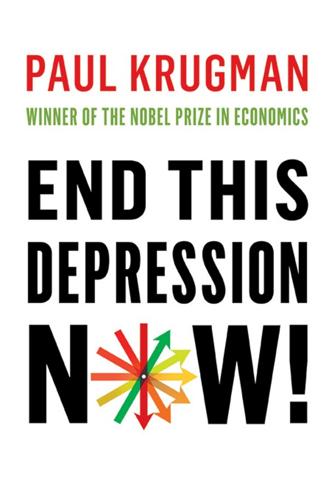
End This Depression Now!
by
Paul Krugman
Published 30 Apr 2012
Of the rest, a large chunk consisted of funds to extend unemployment benefits, another chunk consisted of aid to help sustain Medicaid, and a further chunk was aid to state and local governments to help them avoid spending cuts as their revenues fell. Only a fairly small piece was for the kind of spending—building and fixing roads, and so on—that we normally think of when we talk of stimulus. There was nothing resembling an FDR-style Works Progress Administration. (At its peak, the WPA employed three million Americans, or about 10 percent of the workforce. An equivalent-sized program today would employ thirteen million workers.) Still, almost $800 billion sounds to most people like a lot of money. How did those of us who took the numbers seriously know that it was grossly inadequate?
…
Lee Partners, 81 thrift, paradox of, 51–52 thrift (savings and loan) industry, 60, 67–68, 72–73, 80 Time, 4, 101 Today Show, 36 toxic assets, 113 transportation investment, 16–17, 215 Travelers Group, 63, 85 Treasure of the Sierra Madre, The (Traven), 7 Treasury, British, 25 Treasury, U.S., 153 Treasury bills, 153 Trichet, Jean-Claude, 186, 188, 195, 196 Troubled Asset Relief Program (TARP), 116 trucking industry, deregulation of, 61 Two-Income Trap, The (Warren and Tyagi), 84 Tyagi, Amelia, 84 UBS, 86 unemployment, 114, 198, 208 austerity policies and, xi, 189, 203–4, 207, 237–38 churning and, 9 college graduates and, 11–12, 16, 37, 144–45 confidence and, 94–96 definitions of, 7–8 demand and, 33, 47 in depression of 2008–, x, 5–12, 24, 110, 117, 119, 210, 212 in Europe, 4, 17, 18, 172, 176, 229, 236 government spending and, 209, 212 in Great Depression, 38 historical patterns of, 128–29 as involuntary, 6 lack of skills and, 35, 36–38 liquidity traps and, 33, 51, 152 Obama administration and, 110, 117 post-2009 decreases in, 4, 210, 211, 211, 229 prosperity and, 9 sense of well-being and, 6 stagflation and, 154 wages and, 52–53, 164–65 among youth, 11, 18, 229 see also job-creation policies unemployment, long-term, 9–10 in Great Depression, 38 health insurance and, 10 loss of skills in, 144 self-esteem and, 10–11 stigma of, 10, 15–16, 144 unemployment insurance, 10, 120, 121, 144, 216, 229 in Europe, 176 unionization, decline in, 82 United Kingdom, 59, 183 austerity programs in, 190, 199–202 depression of 2008– in, 199–202 EEC joined by, 167 government debt as percentage of GDP in, 139, 140, 140, 192 interest rates in, 182–83, 201 lend-lease program and, 39 turn to right in, 83 United States: as “center-right” country, 224 China’s trade with, 221 government debt as percentage of GDP in, 139, 140, 192 net international investment position of, 44 post-2009 recovery in, 4 pre-World War II military buildup in, 35, 38–39 risk of default by, 139 S&P downgrade of, 140 social safety net in, 10, 216 turn to right in, 83 universal health care, 18 Vanity Fair, 71 Very Serious People, xi, 190, 205 wages: devaluation and, 169–70, 180–81 downward nominal rigidity of, 164–65, 181 unemployment and, 52–53, 164–65 Wall Street (film), 80 Wall Street Journal, 134, 138 Warren, Elizabeth, 84 wars, economies and, 233–37 Weill, Sandy, 85 well-being, sense of, 5–6 unemployment and, 6 workers: as lacking skills, 35, 36–38 layoffs of, 41 technology as creating redundancies of, 36 see also unemployment Works Progress Administration, 121 World War II, 50, 107 government spending in, 148, 234–35, 235 lend-lease program in, 39 military buildup prior to U.S. entry into, 35, 38–39 U.S. debt after, 141 Yale University, 93 Yardeni, Ed, 132 Yglesias, Matthew, 87–88, 225 youth, unemployment among, 11, 18, 229 zero lower bound, of interest rates, 33–34, 51, 117, 135–36, 147, 151, 152, 163, 231, 236 Zimbabwe, 150 Zuckerberg, Mark, 78 Zuckerman, Mort, 95 Copyright © 2012 by Melrose Road Partners All rights reserved First Edition For information about permission to reproduce selections from this book, write to Permissions, W.
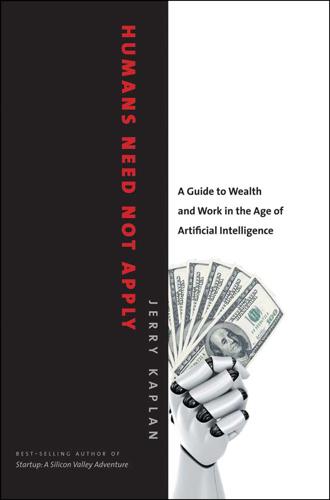
Humans Need Not Apply: A Guide to Wealth and Work in the Age of Artificial Intelligence
by
Jerry Kaplan
Published 3 Aug 2015
It’s just a way of keeping score” (http://www.stanford.edu/class/e140/e140a/content/noyce.html, originally published by Tom Wolfe in Esquire, December 1983). 16. Matt Taibbi, “The Great American Bubble Machine,” Rolling Stone, April 5, 2010, http://www.rollingstone.com/politics/news/the-great-american-bubble-machine-20100405. 17. Works Progress Administration, in 1939 renamed the Work Projects Administration. 18. John M. Broder, “The West: California Ups and Downs Ripple in the West,” Economic Pulse, New York Times, January 6, 2003, http://www.nytimes.com/2003/01/06/us/economic-pulse-the-west-california-ups-and-downs-ripple-in-the-west.html. 19. http://www.forbes.com/lists/2005/53/U3HH.html, accessed December 31, 2014. 20.
…
See income; salaries Wall Street, 51–53, 57–58, 95 Walmart, 139–40, 142–43 average revenue per employee, 139, 177 employee numbers, 116 warehouses, 101–2, 134–35 box unloading, 39 chaotic storage tracking, 135, 144 Waterloo, battle of (1815), 58 water quality, 168 Watson (IBM AI computer program), 26, 31, 36, 39, 150, 198 Watson Research Lab (IBM), 19 wealth, 3, 12, 109–19, 127, 132 from assets ownership, 14–15, 174–76 benefits of, 165–66 civic responsibility and, 58 disparities in, 164–65, 169–70, 176, 180–87 distribution of, 186 factors in creating, 12 fairer distribution of, 86–87 Forbes ranking of, 109, 113 HFT program transfer of, 57, 91 lifestyle embodiments of, 57, 109, 110–11, 112, 114 luxury item sales and, 117–18, 165–66 philanthropy and, 58, 113, 118–19 power from, 114–15 reinvestment vs. spending of, 117 super-wealthy and, 11, 111–13, 116–19, 118–19, 164–65 synthetic intellects’ accumulation of, 91–92 top 1 percent holders of, 11, 111–13 worker median salary and, 116 websites: advertising sale of space on, 64–72 electronic surveillance of visits to, 9, 64–75 individually targeted ads, 64–75 user identifier, 65, 66 WebTV, 127 weeding, 144 Weisel, Thom, 115 welfare recipients, 170 Wellington, Duke of, 58 Wellpoint, 150 wide-area high-bandwidth wireless communication, 126–27 wildfire extinguishers, 44 Winster.com, 119, 122–23, 124 wireless communications, 45 words, shifted meanings of, 191–92, 198, 203 workforce. See labor market working poor, 119–21 working women, 172 work-life balance, 171 workplace, 48 robot danger potential, 37–38 WPA (Works Progress Administration), 170 Yahoo, 67 Yeats, William Butler, 48 Zandi, Mark, 117 Zuckerberg, Mark, 223n15
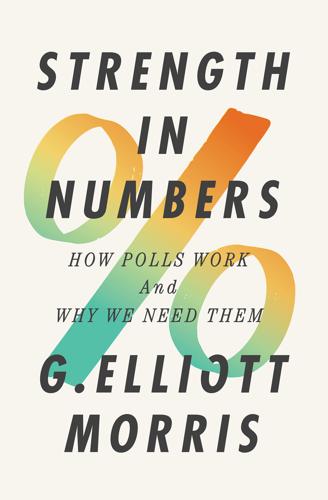
Strength in Numbers: How Polls Work and Why We Need Them
by
G. Elliott Morris
Published 11 Jul 2022
James Farley was so impressed with Hurja’s forecasts that he dubbed him the “crystal gazer from Crystal Falls.”12 FROM 1935 ON, Roosevelt appears to have relied directly on his soothsayer to tell him whether his New Deal policies were being received well by the public. By then, Hurja had nearly perfected his own private polling—conducted in part by sending employees of the Works Progress Administration (WPA) to canvas pro– and anti–New Deal sentiment in cities and small towns across America. He had also fine-tuned the statistical adjustments he applied to the pre-publication Gallup and Literary Digest polls to make them representative. He used that data to identify which programs the public disliked—namely, the “make work” projects that critics alleged gave easy jobs to projects that weren’t worth the funding—and recommended Roosevelt launch a campaign to shore up the WPA’s image, or for congressional candidates to distance themselves from it.
…
E., 26–27 Schneider, William, 102, 104, 105 Schumer, Chuck, 175 Sears, Dave, 132 Second Treatise of Civil Government (Locke), 17 Senate, US, 169–70 Shapiro, Robert, 25–26, 72–73 Shor, David, 141, 157–59, 172 Significance (journal), 83 Silver, Nate, 97–98, 110–14, 116, 119–20, 121–22, 154, 174 Simulmatics Corporation, 56–58, 67, 69–71, 73, 74, 77, 125 Singer, Natasha, 150–51 1619 Project, 176 60 Minutes, 81 skepticism, xiii Skovron, David, 167 Slate.com, 108, 150 Smith, Alfred E., 60 Smith, Andrew, 153 “snapshots in time,” xi, 102, 152, 162 Social Contract, The (Rousseau), 17–19 social safety nets, 24 Social Science Research Council (SSRC), 45–47 Social Security, 24 Socrates, 13 Solon, 9 South Carolina, 95, 96 Spagat, Michael, 82–90, 189 Sparta, 10 special interest groups, 167 Squire, Peverill, 35 SSRS, 145 Stahl, Leslie, 81, 82 Stanford University, xii, 107, 132, 133, 136 Statistical Journal, 93 Stewart, Martha, 136 straw polls, 31–36, 39–41, 61, 64–65, 101 “Straw Polls in 1936” (Crossley), 30 Sumerians, 7 Sunday Times, The, 102 Supreme Court, xv, 64, 66 SurveyMonkey, 109 surveys, online, 130–31, 172 target samples, 138 taxation, 8, 9 Teeter, Robert, 76–77 television, 28, 75, 126, 134 Tetlock, Philip, 117 Texas, 59, 144, 176 text messaging, 90, 130, 159 theory of sampling error, 104 “thinkers,” 117 Time magazine, 39, 43, 64 Tocqueville, Alexis de, 4, 20 Todd, Chuck, 106, 112 Tolstoy, Leo, 9 town meetings, 4 Trafalgar Group, 99 Treatise Concerning Political Enquiry (Wortman), 3 “trend analysis” method, 60–61, 65, 66, 75 Truman, Harry, ix, 42–43, 66 Trump, Donald, ix–xii, 98, 99, 114–19, 129, 145–46, 149–53, 155–57, 162, 169, 170, 174 Turkey, 89 Twain, Mark, 79 Twitter, 98 tyranny, 13–14 UNICEF, 84, 189 United Nations, 78, 82, 85, 86 University of California, Berkeley, 35, 55, 126 University of California, Los Angeles (UCLA), 132, 136 University of Chicago, 139 University of Connecticut, 89 University of Denver, 41 University of Iowa, x, 36–38 University of Maryland, 89 University of Michigan, 105, 132 University of New Hampshire, 153 University of Southern California, 146 US Agency for Global Media, 189 US Broadcasting Board of Governors, 89, 189 US Census and Census Bureau, 9–10, 138, 141 US Department of State, 80 US Department of State, 89–91, 94 Vanity Fair, 96 Verba, Sidney, 2, 170 Vietnam conflict, 73, 75, 78, 170 voting rights, 24, 169 Voting Rights Act of 1965, 169 Vox, 175 Wagner, Dan, 123–26 Wall Street Journal, 43, 99, 113 Wang, Samuel, 116 Washington Post, xii, 43–44, 139, 154–55, 159 Washington Statistical Society (WSS), 91 Watergate scandal, 76 WebTV, 134, 135 What Americans Know about Politics and Why It Matters (Keeter and Delli-Carpini), 21 Wheeler, Michael, 72 Whitby, Andrew, 7–8 Whitman, Walt, iii Williams College, 41 Willkie, Wendell, 65 Wisconsin, xii, 72, 110, 150–52, 154, 155, 157 “wisdom of the crowds,” 19–20, 22–26 Wlezien, Christopher, xi, 27 women, 19, 20, 46, 126, 127, 138, 169 Works Progress Administration (WPA), 63 Wortman, Tunis, 3 WSS, see Washington Statistical Society (WSS) Xu Gan, 8 Yale University, 56, 67 YouGov, 131, 138–39, 141–43, 156, 159, 172, 176 Young & Rubicam (Y&R), 38–40 Yu the Great, 8 Zaidi, Sarah, 82–84, 86 Copyright © 2022 by G. Elliott Morris All rights reserved First Edition For information about permission to reproduce selections from this book, write to Permissions, W.
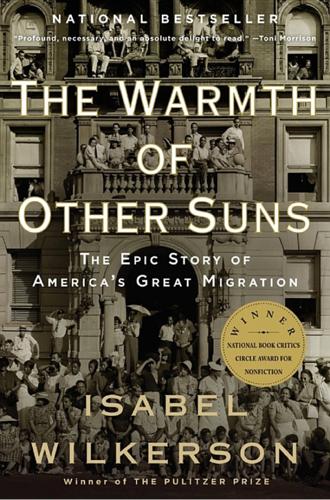
The Warmth of Other Suns: The Epic Story of America's Great Migration
by
Isabel Wilkerson
Published 6 Sep 2010
“Even the seeming inapproachable shoe-shining field was competed for by the Greeks,” observed a report by the Works Progress Administration in the 1930s on the challenges facing black workers in Los Angeles.9 “Trained English servants succeeded them as valets and butlers.” The polyglot nature of Los Angeles made it harder for colored migrants to figure out this new terrain, where competition was coming from every direction and each minority was pitted against the others. “In certain plants, Mexicans and whites worked together,” the Works Progress Administration reported.10 “In some others, white workers accepted Negroes and objected to Mexicans.
…
They were running into the same sentiment, albeit on a humbler level, that a colored man in Philadelphia faced when he answered an ad for a position as a store clerk. “What do you suppose we’d want of a Negro?” the storekeeper asked the applicant.113 George had been struggling since he arrived. He had worked on a coal truck, dug ditches for the Works Progress Administration, delivered ice to the tenements on the South Side, and been turned away from places that said they weren’t hiring or just had nothing for him. He would just keep looking until he found something. Finally, he landed a job that suited his temperament on the soup-making line at the Campbell Soup plant, a place so big there was bound to be some work for him if the people were open to hiring him, which, fortunately for him, they were.114 The plant was on twenty-two acres at Thirty-fifth and Western by the panhandle tracks, where they mixed several thousand tomatoes and oxtails at a time to make soup for customers west of the Mississippi.
…
Phillips, in Vance, Human Factors in Cotton Culture, p. 47. 83 Sometime in the 1930s: Interviews with Lasalle Frelix, a migrant from Brookhaven, Mississippi, in Chicago, 1996. 84 A bale of cotton: William C. Holley and Lloyd E. Arnold, Changes in Technology and Labor Requirements in Crop Production: Cotton, National Research Project Report no. A-7 (Philadelphia: Works Progress Administration, September 1937), pp. 19–54. Also Ronald E. Seavoy, The American Peasantry: Southern Agricultural Labor and Its Legacy: A Study in Political Economy, 1850–1995 (Westport, Conn.: Greenwood Press, 1998), pp. 37–47, cited in Holley, The Second Great Emancipation, p. 56. 85 The other brother: Interviews with Reuben Blye in Eustis, Florida, July 1997 and July 1998. 86 In North Carolina: Gilbert Thomas Stephenson, “The Separation of the Races in Public Conveyances,” The American Political Science Review 3, no. 2 (May 1909): 200–201. 87 standing in the way: David Levering Lewis, W.

The Lost Art of Dress
by
Przybyszewski, Linda
This was for a nineteen-year-old. We’re still talking a mild hourglass that was definitely bottom heavy, just like Buttrick’s sketch of the ideal woman.92 American women were not all that far off the mark, according to a study from the USDA in 1941. This study, of almost 15,000 women, was part of a Works Progress Administration project during the New Deal and the culmination of a dream of Ruth O’Brien’s at the Bureau of Home Economics. She had long wanted to rationalize clothing sizes the scientific way: by measuring people. Life magazine had one of its writers take a look at the report. She came to the “deplorable conclusion” that American women were short (5 foot 3 inches, on average) and chunky (133 pounds).
…
Cahn, Sexual Reckonings: Southern Girls in a Troubling Age (Cambridge, MA: Harvard University Press, 2007), 135–136; USDA, Report (1933), 24. 33. The Shreveport story is told in Lynne Anderson Rieff, “‘Rousing the People of the Land’: Home Demonstration Work in the Deep South” (PhD diss., Auburn University, 1995), 133; quoted in McCleary, “Shaping a New Role,” 410. 34. Sara B. Marcketti, “The Sewing-Room Projects of the Works Progress Administration,” Textile History 41, no. 1 (2010): 28–49, esp. 30. 35. Paris Frocks at Home (New York: Butterick, 1930), 2. 36. Quoted in Mildred White Wells, Unity in Diversity: The History of the General Federation of Women’s Clubs (Washington, DC: General Federation of Women’s Clubs, 1953), 183; quoted in Mary Jean Houde, Reaching Out: A Story of the General Federation of Women’s Clubs (Chicago: Mobium Press, 1989), 121. 37.
…
Williams, Saundra, 223 Wilson, Woodrow, 247 Winged Victory of Samothrace (sculpture), 59 Winterburn, Florence Hull on age, 241 on color combinations, 216 on thrift, 166–167 on young women’s clothing, 245 Woman as Decoration (Burbank), 74–75 Woman-alls, 113 Woman’s Home Companion, 228 Woman’s Institute of Domestic Arts and Sciences, 91 on budgeting, 174 on corsets, 264 fiction for fashion stories and, 137–142 on laundry, 164 magazine of, 105, 258 Picken and, 91, 137, 139–140, 143 The Woman and Her Posture (Smith), 275 Women Amish, 128 Average American Woman, 265 home women, 103, 105–108, 179–180 independence of, 264 jobs and careers for, 142, 189–190, 195–197, 243, 282–283 voting rights for, xii, 14, 19, 84, 159 during World War I, xii, 25, 74–75, 112–113 during World War II, 210, 282 young women’s clothing, 244–249 See also Farmwomen; specific women Women’s liberation movement, 191, 192, 221 Women’s Role Committee, 193 Women’s Wear Daily, 200 Woolman, Mary Schenck life and career of, 9 Thrift Movement and, 133–135, 153 Work clothing, xii, 25, 74–75, 87–101 Baldt on, 91, 97 Buttrick on, 90 colors for, 96 evening clothing compared to, 121 examples of, 63 (fig.), 205–206 Hawes on, 87 Molloy on, 237–239 Picken on, 96 prints for, 97 Ryan on, 167 segue to afternoon clothing, 119 shoes as, 100, 107 Story on, 90 Thrift Movement and, 161, 162–164 transition to evening clothing, 96–97, 119 Trilling and Williams, F., on, 98–100, 99 (fig.) Working mothers, 194, 196 Working-class girls, 125, 175–176 Workout Barbie, 268 Works Progress Administration, 265 Works Project Administration (WPA), 149–150 World War I, 158 home economists during, 4 posture and, 275 Thrift Movement during, 133–134, 137 venereal disease and, 247 women during, xii, 25, 74–75, 112–113 World War II, 162 African Americans during, 188 fabric shortages during, 30, 120, 126, 182–183 hats during, 126–127 man’s suit cut down to make woman’s suit during, xiii women during, 210, 282 WPA.
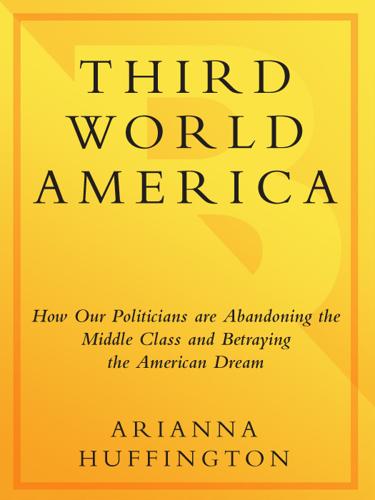
Third World America: How Our Politicians Are Abandoning the Middle Class and Betraying the American Dream
by
Arianna Huffington
Published 7 Sep 2010
That strategy simply won’t work—but we could waste a lot of money and time trying. Instead, we need a new direction for our economy.” Faced with an even more devastating economic crisis, FDR responded with a large-scale public works program, including the Tennessee Valley Authority, the Works Progress Administration, and the Civilian Conservation Corps—programs that gave us much of the infrastructure that needs to be updated today.27 But instead of doing something similar—and instead of constructing a new economic vessel capable of navigating the stormy seas of the twenty-first century—we chose to grab a bucket and try to bail out the old sinking ship.
…
Since August 2008, more than 150,000 state and local jobs have been eliminated, and the states’ combined budget gap for fiscal 2010 and 2011 is $380 billion.20, 21 The Center on Budget and Policy Priorities estimates that state and local deficits could cost the country an entire point off the GDP, which would, in turn, lead to the loss of another 900,000 jobs next year.22 This is why the Economic Policy Institute (EPI) recommends the federal government spend $150 billion on aid to state and local governments over the next year and a half, an investment that would save up to 1.4 million jobs.23 Congress and the president should also push through a muscular plan to create public-service jobs. “The federal government could provide jobs by … providing jobs,” writes Paul Krugman.24 “It’s time for at least a small-scale version of the New Deal’s Works Progress Administration.… There would be accusations that the government was creating make-work jobs, but the W.P.A. left many solid achievements in its wake. And the key point is that direct public employment can create a lot of jobs at relatively low cost.” In fact, the EPI estimates that one million jobs designed to “put unemployed Americans back to work serving their communities” could be created with an investment of $40 billion a year for three years.25 This approach is also favored by Princeton’s Alan Blinder.26 “Direct public-service employment is straightforward,” he says.
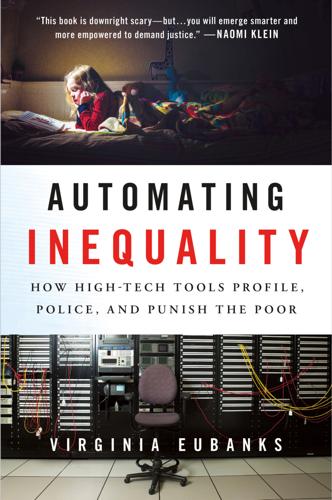
Automating Inequality
by
Virginia Eubanks
As during the depressions of 1819 and 1873, critics blamed relief programs for creating dependence on public assistance. Roosevelt himself had serious misgivings about putting the federal government in the business of providing direct relief. He quickly capitulated to middle-class backlash, shuttering FERA, the program that provided cash and commodities, and replacing it with the Works Progress Administration (WPA). Against the protests of some in the Roosevelt camp who called for the creation of a federal department of welfare, the administration shifted its focus from distributing resources to encouraging work. New Deal legislation undoubtedly saved thousands of lives and prevented destitution for millions.
…
Ware, Nathanial Welch, Peggy welfare and public assistance benefits as personal property and due process eligibility modernization eligibility rules for and “mop-up” programs and privatization racial discrimination in sanctions social insurance as distinct from public assistance and voluntary resettlement plan “welfare queen” stereotype See also individual programs welfare diversion welfare rights movement and Adequate Income Act backlash against Mothers for Adequate Welfare National Welfare Rights Organization (NWRO) success of West, Terry White, Magner white supremacy Wilde, Dylan Willis, Tom Wilmot, William Wong, Julia Carrie Workflow Management System (WFMS) Works Progress Administration (WPA) World Courts of Women World War II Xerox Yates, John Van Ness Yellow Pages test Young, Omega Zimmerman, Roger Zuckerberg, Mark MORE PRAISE FOR AUTOMATING INEQUALITY “In this remarkable chronicle of ‘how the other half lives’ in the age of automation, Eubanks uncovers a new digital divide—a totalizing web of surveillance ensnaring our most marginalized communities.
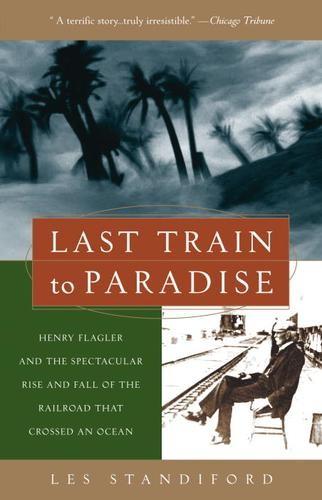
Last Train to Paradise: Henry Flagler and the Spectacular Rise and Fall of the Railroad That Crossed an Ocean
by
Les Standiford
Published 4 Aug 2003
When it was over, the investigators had come to the same conclusion as Bernard Russell, however: “The evidence clearly shows that the tidal wave was entirely unexpected and that it was impossible to even anticipate the hurricane within sufficient time to ensure safety for those concerned.” It was not much by way of recompense for all those lives lost, the lives of men who worked for one dollar a day plus room and board to build a highway down the Keys. Little more was to come. A memorial was built by the Works Progress Administration in memory of the victims, atop a crypt containing the remains and ashes of about three hundred. The structure, in Islamorada at MM 81.5, was unveiled before a crowd of five thousand on November 14, 1937, by nine-year-old hurricane survivor Fay Marie Parker. “Dedicated to the memory of the civilians and war veterans whose lives were lost in the hurricane of September second, 1935,” reads the inscription.
…
surveillance blimp Sybill (tugboat) Taft, William Howard Tampa, Florida: cigar business in port facilities in railroad in Tampa Bay Hotel Tavernier, Florida Tavernier Creek bridge Theater of the Sea tidal waves Tifft, Susan tornadoes, force of Torricelli, Evangelista tourists, on US Truman, Harry S Trumbo, Howard Trumbo Island Tuttle, Julia Twain, Mark Umbrella Keys Union Pacific Railroad Upper Keys Upper Matecumbe Key US Highway accidents on built on railroad span driving along as escape route MMs (mile markers) along over open water in Uniform System, n Vanderbilt, Cornelius Vanderbilt family Van Horne, Sir William Van Vechten, Charles Venable, William Mayo Veterans’ Work Program Vines, Rev. Benito Volstead Act (1920) Walker, Will Ward, George M. water, fresh Weather Bureau, U.S. Weather Channel West Palm Beach, Florida Wilkinson, Jerry Williams, Joy Windley Key Windward Islands Wood, Franklin Works Progress Administration (WPA) wreckers yellow fever Yucatán Peninsula, Mexico About the Author Les Standiford is the author of eight critically acclaimed novels as well as several works of nonfiction. He has received the Frank O’Connor Award for Short Fiction and fellowships from the National Endowment for the Arts, the National Endowment for the Humanities, and the Florida Division of Cultural Affairs.
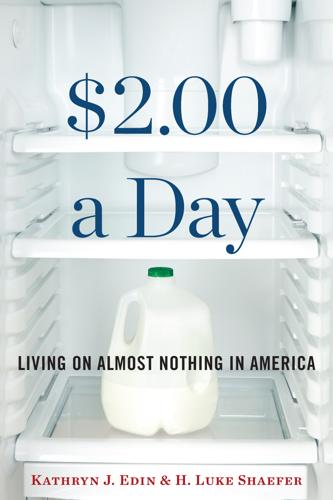
$2.00 A Day: Living on Almost Nothing in America
by
Kathryn Edin
and
H. Luke Shaefer
Published 31 Aug 2015
If that is the case, we need to think bigger. Much bigger. If the private sector isn’t up to the task of producing enough jobs, one could make a strong argument that government itself ought to create a substantially larger share of the jobs than it does now—jobs like those provided by the Works Progress Administration during the Great Depression. Certainly, there is ample work to be done in our communities. The nation’s infrastructure is badly out-of-date in many places—often crumbling, sometimes downright dangerous. The National Park Service and state and local park districts are underfunded; this limits hours and upkeep.
…
See also Aid to Families with Dependent Children (AFDC); Special Supplemental Nutrition Program for Women, Infants, and Children (WIC); Supplemental Nutrition Assistance Program (SNAP); Temporary Assistance for Needy Families (TANF) American attitudes about, 14–15, 17, 19 awareness of, 32–33, 170–71 benefit reductions with income, 97–98 block grant funding of, 24–28 demise of, 8–33 dependency created by, 14–17 duration of use of, 18 eligibility requirements for, 170–71 housing costs and, 4–5 impact of on poverty levels, 7–8 inadequacy of for survival, xiv–xv isolation created by, xx, 127, 158, 171–73 other aid programs and, 8–9 poor people isolated from, xx reasons for failure to apply for, 2, 8, 31–33, 47–48, 170–71 safety net provided by, 7–8, 10 time cost of, 2–3, 6–7 time limits on, xv, 7, 19–21, 25, 27–28, 41, 42 utilization rates of, 7–8, 17 values alignment with, 157–58, 171 welfare queens, 15–16 welfare reform, 10–11 aftermath of, 29–32 aid spending since, 9 based on employment stability, xxiii–xxiv caseloads after, 28–29 cash removed from, 25–28 Clinton in, 17, 20–29 Ellwood on, 18–20 future of, 157–74 low-wage job conditions and, 61–62 poverty increased by, 26–28, 132 Reagan on, 10–11, 15–17 Republican plan for, 24–29 rise of $2-a-day poverty since, xiv–xviii utilization rates since, 7–8 working conditions affected by, 61–62 work opportunity and, 158–72 work requirements in, 7, 17, 19–20, 24–25, 30–31 “white glove tests,” 14 WIC (Special Supplemental Nutrition Program for Women, Infants, and Children), xii Williams, Lynetta, 131–32 Wilson, William Julius, xx work ethic, 44–47, 57–59, 80, 89, 125, 157–58 workforce statistics, 124–27 work loading, 46, 61–62 work scheduling instability. See also just-in-time scheduling Works Progress Administration, 161 World Bank, xvi YouthBuild, 94 Zedlewski, Sheila, 26–27 zoning laws, 166 About the Authors KATHRYN J. EDIN, Bloomberg Distinguished Professor of Sociology and Public Health at Johns Hopkins University, is the coauthor of Promises I Can Keep: Why Poor Women Put Motherhood Before Marriage and Making Ends Meet: How Single Mothers Survive Welfare and Low-Wage Work.
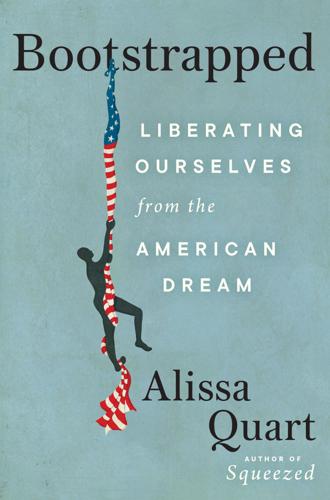
Bootstrapped: Liberating Ourselves From the American Dream
by
Alissa Quart
Published 14 Mar 2023
The Depression ultimately catalyzed radical social solutions and changes, among them the cooperative-minded New Deal. For writers and artists who, unlike Wilder, were desperately poor, FDR created the Federal Writers’ Project, which ran for eight years starting in the middle of the Depression and was part of the Works Progress Administration. It supported 6,600 writers, editors, and researchers who created not only journalism but also oral histories, including first-person recollections of formerly enslaved people and stories of Depression-era Hoovervilles, or shantytowns, created by the previous president’s draconian housing and economic policies.
…
See mutual aid shame, viii, 9, 22, 26, 107, 111, 143, 196, 209 Shenker-Osario, Anat, 4 Sherman, Rachel, 155–56 side hustle, ix, 130, 137–50, 254n Side Hustle Nation, 142 Silicon Valley, 7, 13, 46, 137, 254n Simard, Susan, 219 Simmons, Carolyn H., 66, 244n Sinema, Kyrsten, 134 SIYLI (Search Inside Yourself Leadership Institute), 92 “Slumlord Saturdays,” 224 Smedley, Agnes, 30–31 Smith, Robert, 161 Smith, Zadie, 206 Smithfield Foods, 189, 258n Snapchat, 46 Social Darwinism, 173–74, 177 social mobility, 15, 43, 62, 160, 242n social safety net, dystopian, ix, 105–7, 110–13, 115, 225, 251n in volunteerism, 206–7, 210–15 social safety nets, government supported, 210, 242n Social Security, 47–48, 105, 108–9, 130–32, 222, 254n socialism, 27, 78, 238n Solidaire, 155, 162 solidarity, xii, 10, 21, 31, 99, 182, 189–90, 231, 239n “Solidarity Not Charity,” 171 See also interdependence; mutual aid Solomon, Robert, 109 SoulCycle, 142 South Minneapolis Mutual Aid Autonomous Zone Coordination, 166 Spiegel, Evan, 46 Squarespace, 142 status quo, 12, 93, 129 Stiglitz, Joseph, 5 stigmatization, 9, 15, 67, 111, 124, 237n Stimulus Bill, 60, 132–33 Stranger Than Paradise (film), 20 strapped, for resources, 5, 8, 155–56, 192, 197 in Adverse Childhood experiences (ACE), 258n in low-income families, 113, 124–26 stress, xi, 5, 86–88, 94–97, 193, 198–99, 207 in childcare, 118–21 as financial anxiety, ix, 125–26, 153–54, 207, 218, 224 student debt, ix, 7, 11, 104, 154, 163, 246n, 251n, 255n Su, Celina, 213–14, 259n Subsidy Tracker, 60, 243n success, 3–9, 27, 33–35, 44, 57, 74–76, 242n girlbosses and, 60–63, 127–29 as mutualism, 179–80, 186–88, 193, 217–18, 222–23 in Trumpism, 80–83, 159, 243n victim blaming and, 95–97, 123, 157 Supplemental Nutrition Assistance Program (SNAP), 23, 78, 108–9, 114–15, 224 Tan, Chade-Meng, 92 Tavris, Carol, 30, 200, 239n tax credit, 11, 132–34, 197, 219–20, 254n taxes, xi, 10, 104, 146 on excess profit, 159, 220, 255n Participatory Budgeting (PB) and, 210–15 as wealth tax, xi, 54–56, 158, 160–61, 163, 237n Temporary Assistance for Needy Families, 125 Tenant Bill of Rights (Kansas City), 224 Tesla, 59–60, 66, 243n Thatcher, Margaret, 71 Thoreau, Henry, 13–24 Tisch, Steve, 161 Tony the Tramp (Alger), 40 The Tragedy of American Compassion, 125 transcendentalism, 13, 15–17, 20, 87, 237n, 248n trauma therapy, 191–203, 259n Adverse Childhood Experiences in, 191–95, 258n Treasury Department, 54 trickle-down economics, 62–63, 68, 231 triumphalism, xi, 5, 35, 50, 223, 226 Trump, Donald, 7, 13, 36, 243n January 6 riot and, 246n Social Security and, 54, 69, 109, 159–60 Trump: The Art of the Deal, 40 voter supporters of, 71–84, 129, 133, 245–46n Trump, Fred, 40, 75, 249n Trump: The Art of the Deal (Schwarz), 40 Tversky, Amos, 79 Twitter, 46, 112, 171 Uber, 46, 144–46, 149, 181–82 Uber Eats, 138–39 Ukeles, Mierle Laderman, 124–25, 254n Ultra-Millionaire Tax Act, 158 Uneasy Street (Sherman), 155–56 unemployment, 10, 109, 113, 120, 187, 252n unemployment insurance, 132–33, 139, 143, 146 unions, 78–80, 93, 140, 175, 181, 245–46n Amazonians United, 149 credit unions, 186 Uber, 146, 149 Union Cab Collective, 258n United Food and Commercial Workers Union (Chicago), 254n United Steelworkers (USW), 78 United for a Fair Economy, 57 universal health care, 112 upper class, 57, 175, 192 US Federation of Worker Cooperatives, 180 values, xii, 12, 26, 47, 68, 128, 143, 253n victim blaming, 42, 57, 65–66, 77, 83, 96, 203, 244n in Adverse Childhood Experiences (ACE), 191–95, 202–3, 258n See also “grit” vulnerable groups, 218, 247n caregivers, 117–23, 127, 130–33, 176–77 disability in, 32, 104–7, 139–40 elderly, xi, 10, 123, 129, 137, 168–69, 229 enslaved people, 19, 33, 83–84, 124, 185–86, 237n homeless people, vii, 43, 105, 109, 214, 224, 241n, 251n immigrants, vii, 138, 182, 189, 239n Indigenous people, 19, 25–26, 29–33, 171–72, 239n the “indigent,” vii, x, 39, 166, 192, 219, 253n invisible labor, ix, 10, 77, 201, 205–6, 218, 247n mothers and children, 8, 23–24, 118–26, 128–33, 213, 253n students, ix, 7, 11, 104, 154, 163, 246n, 251n, 255n unemployed people, 10, 109, 113, 120, 187, 252n Walden Pond, 13–24 #WalkAway, 83 Walmart, 53, 61, 105, 147 Wanek, Ronald G., 44 Warehouse Workers for Justice, 162 Warnock, Raphael, 10 Warren, Elizabeth, 158, 255n We Drive Progress, 149 wealth tax, xi, 54–56, 69, 76, 156–58, 160–63, 237n wealth transfer, 239n, 254n Weeks, Kathi, 130 welfare moms, 19, 236n welfare programs, 11, 194, 222–23, 242n charity Band-Aids and, 110–11 COVID-19 and, 114–15 government policy and, 7, 48, 125–26 See also social safety net Wellspring Cooperative Corporation, 181 What Tech Calls Thinking (Daub), 46 Whelan, Melanie, 142 white male privilege, 27, 30–33, 55, 68–69, 80, 124, 129, 187, 247n Whole Foods, 46, 241n Wilder, Laura Ingalls, 26–37, 48, 218, 240n Williams, Raymond, 147–48 Wilson, Chip, 47 worker cooperatives, 179–90, 257–58n Drivers Cooperative (NY), 181–82, 258n federal grants and, 184 US Federation of Worker Cooperatives, 180 Wellspring Cooperative Corporation, 181 worker exploitation, 31, 93, 181, 253n working class, 31, 77, 95, 142, 192, 200, 224, 236n families, 132–34, 194–97 Working Man’s Advocate, 5, 235n Works Progress Administration, 28 Wozniak, Steve, 46 Your American Dream Score, 261n Zeisler, Andi, 62 Zoom, 86, 106, 123, 182, 202, 229 Zuckerberg, Mark, 57, 59 OceanofPDF.com About the Author ALISSA QUART is the author of four previous books of nonfiction, including Squeezed: Why Our Families Can’t Afford America and Branded: The Buying and Selling of Teenagers, and two books of poetry, most recently Thoughts and Prayers.
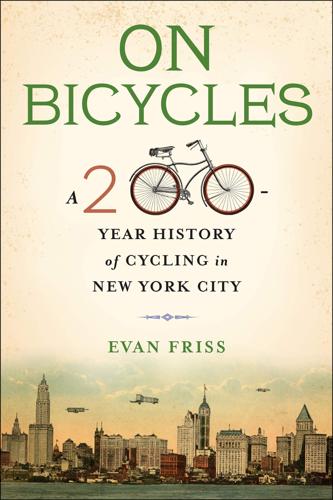
On Bicycles: A 200-Year History of Cycling in New York City
by
Evan Friss
Published 6 May 2019
Despite lingering animosity between President Roosevelt and the parks commissioner (Roosevelt, elected governor of New York in 1928, was much less enchanted by Moses than previous governor Al Smith had been and sought to diminish his influence, removing Moses from his post as Secretary of New York State), Moses managed to win more than his fair share of New Deal monies, particularly from the Works Progress Administration (WPA) that employed millions of Americans to build roads and bridges, construct new parks and swimming pools, paint murals, and even conduct oral history interviews of former slaves. Moses knew that there were millions of dollars at stake and in almost no time had detailed blueprints for shovel-ready projects—something that usually took teams of mayors, engineers, and parks commissioners in other cities years to do.
…
See also Bedford Avenue; Kent Avenue Williamsburg Bridge, 186 Windsor Terrace Wheelmen, 45 Witty, Calvin, 13, 15 Wolfe, Tom: The Bonfire of the Vanities, 215n3 Wolfson, Howard, 168–69 women. See cyclists: and issues of gender; high-wheelers: and women; streets: and women; velocipedes: and women; Ward, Maria (Violet) Women’s City Club of New York, 144 Works Progress Administration (WPA), 85–86, 89, 92 World’s Fair. See New York World’s Fair Wright, William M., 28 Yorkville Wheelmen, 45 Zombie, Rob, 127
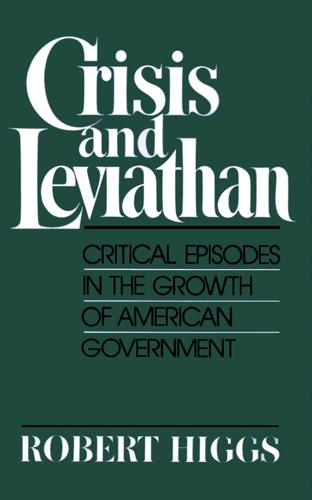
Crisis and Leviathan: Critical Episodes in the Growth of American Government
by
Robert Higgs
and
Arthur A. Ekirch, Jr.
Published 15 Jan 1987
These people worked on programs administered by such emergency work-relief agencies as the Civilian Conservation Corps, the National Youth Administration, the Federal Emergency Relief Administration (under which a state relief agency operated in each of the states), the Civil Works Administration, and the Works Progress Administration. At the time they were not considered ordinary governmental employees. Subsequently economic statisticians counted them as unemployed members of the labor force, creating confusion and controversy among economists who study how the labor market operated during the Great Depression. 4 If one follows the conventional practice, counting the emergency workers Framework 26 20 18 Q) 16 () .E 14 0 .0 ~ 12 c: .~ .; ·0 10 '0 C Q) 8 () 6 Q; a. 4 2 o 8 15 22 29 36 43 50 57 64 71 78 Years Figure 2.3 All Government Civilian Employees as Percentage of Civilian Labor Force, 1900-1984 as unemployed, then the government's share of the civilian labor force appears to have remained almost constant during the 1930s, falling slightly between 1931 and 1933 before rising slowly to 7.2 percent in 1939.
…
The Tennessee Valley Authority, created during the legislative rush of the Hundred Days, joined with the massive hydroelectric projects in the West to make the federal government a major producer and seller of electricity-positions it has never relinquished. Federally sponsored workrelief programs-starting with the Federal Emergency Relief Administration, the Civil Works Administration, and others in 1933 and blending into the Works Progress Administration in 1935-established a precedent for making the federal government the "employer of last resort." The commitment was reaffirmed by the Employment Act of 1946 and most recently by the Humphrey-Hawkins Act of 1978. A variety of make-work "training" schemes in the 1960s and the diverse jobs supported under the Comprehensive Employment and Training Act in the 1970s testify to the enduring importance of the welfare-employment first provided by the federal government in 1933.7 7 The agricultural relief program struck down by the Butler decision came back to life, without the constitutionally offensive tax on processors, as the Soil Conservation and Domestic Allotment Act of 1936 and the Agricultural Adjustment Act of 1938.
…
Parrish, 185 West Coast Manpower Plan, 218 Wheeler, Burton K., 175,201 White, Edward D., 102-103, 118, 148- 149, 158 White, William Allen, 78 Whitney, Eli, 71 Wiebe, Robert, 84, 90, 114 Wilson, William B., 143 Wilson, William L., 97 Wilson, Woodrow, 106, 110, 113, 117-118, 127-129, 132-133, 135, 139-140, 154,157-158,196-198,205,246. See also Progressive Era; World War I Wilson-Gorman Tariff Act, 97 Wilson v. New, 118-121, 182 350 Witte, John F., 150 . Wood, Leonard, 127-128 Work-or-fight order, 218 Work relief, proposals in 1890s, 85-86 Works Progress Administration, 25, 190 World Bank, 260 World War I, 123-158, 196-198 World War II, 196-236, 245, 259 Index Yakus v. United States, 221-222 Yeager, Leland, 9, 243 Youngstown case, 246 Zaller, John, 15 Zeigler, Harman, 46, 69 PRAISE FOR Crisis and Leviathan "Insightful, compelling, and clear. Higgs breaks new ground in explicating the most important socio-political trend of our time-the growth of American government."
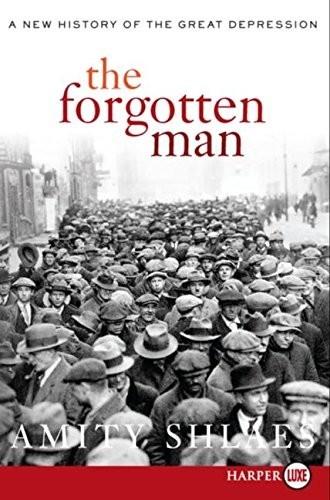
The Forgotten Man
by
Amity Shlaes
Published 25 Jun 2007
The usual rebuttal to this from the right is that Hoover was a good man, albeit misunderstood, and Roosevelt a dangerous, even an evil one. The stock market of the 1920s was indeed immoral, too high, inflationary—and deserved to crash. Many critics on the right focus on monetary policy. Another set of critics focuses on Roosevelt’s early social programs. They argue that New Deal programs such as the Works Progress Administration of the Civilian Conservation Corps spoiled the United States and accustomed Americans to the pernicious dole. Yet a third set of critics, an angry fringe, has argued that Roosevelt’s brain trusters reported to Moscow. Stalin steered the New Deal and also pulled us into World War II, in their argument.
…
Congress in any case would do his work for him, restoring programs that had been in place before he cut them back in 1933. He also created new constituent groups. Roosevelt disliked handing out money to the poor. He wanted, as he said, to “quit this business of relief.” Instead he would create work now in other ways. That summer—the summer of 1935—Hopkins was spending the first dollars in the Works Progress Administration, a program that would, the papers said, start 100,000 projects and hire by the millions over the coming months. General Johnson would be the administrator, a job to replace his old post at the NRA. Here, Hopkins and Ickes, always competitive, were going head-to-head in an alphabet competition: Ickes had his PWA, and now Hopkins had the WPA.
…
Since then, however, there had arisen “new and fantastic counterparts” to the early New Deal. These later counterparts were too intrusive, and Moley could not approve of them. In May the city itself provided reminders of the conflicts inherent in the New Deal. Roosevelt had created the Works Progress Administration to help labor; the same thought was behind his signature of the NIRA and the Wagner Act. But he had warned that the government would not always be able to afford to pay for the jobs. Now Roosevelt wanted to balance the budget, and some WPA jobs had to go. Instead of accepting the change, as perhaps Roosevelt expected them to do, the WPA workers were mimicking their private-sector brothers and striking.
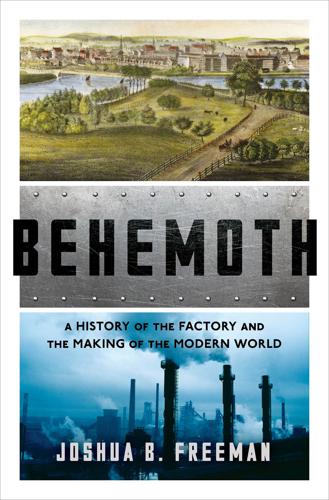
Behemoth: A History of the Factory and the Making of the Modern World
by
Joshua B. Freeman
Published 27 Feb 2018
(New York: Architectural Book Publishing Company, 1939), 19–23; Smith, Making the Modern, 76–78, 85–87; and Hildebrand, Designing for Industry, 60, 124. 37.Olsen and Cabadas, The American Auto Factory, 39; Biggs, The Rational Factory, 138–40, 151. For Ford tractors, see Reynold Wik, Henry Ford and Grassroots America (Ann Arbor: University of Michigan Press, 1972), 82–97. 38.Biggs, The Rational Factory, 146, 151; Writers’ Program of the Works Progress Administration, Michigan: A Guide to the Wolverine State (New York: Oxford University Press, 1941), 221–24; Greg Grandin, Fordlandia: The Rise and Fall of Henry Ford’s Forgotten Jungle City (New York: Metropolitan Books, 2009). Kingsford is now owned by The Clorox Company. The Clorox Company, “A Global Portfolio of Diverse Brands” (accessed Sept., 13, 2015), https://www.thecloroxcompany.com/products/our-brands/. 39.The Rouge foundry also made parts for Fordson tractors.
…
Biggs, The Rational Factory, 148–49, 152; Hounshell, From the American System to Mass Production, 268, 289. 40.Nelson, Industrial Architecture of Albert Kahn, Inc., 132; Biggs, The Rational Factory, 129, 141–57; Kahn, “Industrial Architecture”; Ferry, The Legacy of Albert Kahn, 113–16, 120–22, 129–301; The Reminiscences of Mr. B. R. Brown Jr., Benson Ford Research Center, Dearborn, Michigan; Works Progress Administration, Michigan, 220–21; Hildebrand, Designing for Industry, 91–92, 99, 102–08, 172–82. On Kahn’s and Ford’s antimodernism, see Albert Kahn, “Architectural Trend” (speech), April 15, 1931, Box 1, Albert Kahn Papers; Sward, Legend of Henry Ford, 259–75; and Smith, Making the Modern, 144–55 (though Smith’s interpretation is very different than mine). 41.In addition to Highland Park and River Rouge, Ford built major manufacturing plants in Canada and England that built finished cars and trucks and supplied parts to foreign branch plants.
…
Findling, ed., Historical Dictionary of World’s Fairs and Expositions, 1851–1988 (New York: Greenwood Press, 1990), 22; Nevins and Hill, Ford: Expansion and Challenge, 1–2; Grandin, Fordlandia, 2; Richard Guy Wilson, Dianne H. Pilgrim, and Dickran Tashjian, The Machine Age in America 1918–1941 (New York: The Brooklyn Museum and Harry N. Abrams, 1986), 27; Nelson, Industrial Architecture of Albert Kahn, Inc., 97; Hildebrand, Designing for Industry, 206, 213; Works Progress Administration, Michigan, 286, 292–93; New York Times, Apr. 9, 1972; U.S. Travel Service, U.S. Department of Commerce, USA Plant Visits 1977–1978 (Washington, D.C.: U.S. Government Printing Office, n.d.). 44.David Roediger, “Americanism and Fordism—American Style: Kate Richards O’Hare’s ‘Has Henry Ford Made Good?’
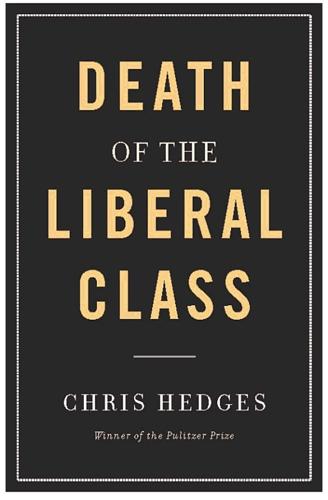
Death of the Liberal Class
by
Chris Hedges
Published 14 May 2010
Dos Passos wrote the manifesto for their second season: “Towards a Revolutionary Theatre,” in which he called for a theater that “draws its life and ideas from the conscious sections of the industrial and white collar working classes which are out to get control of the great flabby mass of capitalist society and mold it to their own purpose.” These radicals sought to change content and theatrical form. The new social theater would be “somewhere between a high mass . . . and a Barnum and Bailey’s circus.” During the New Deal, the Works Progress Administration (WPA) recruited Hallie Flanagan in 1935 to become the head of the Federal Theatre Project. This effort, which brought radicals and liberals together, became an effective tool for social change and perhaps was the last potent counterweight to the propaganda state. Production costs and scenic effects were limited.
…
Conference of Catholic Bishops Van Agtmael, Peter Van Itallie, Jean-Claude Vietnam War and protest Violence Wall Street bailouts and Bell and communists manipulation and dishonesty on and Obama and World War I, Wallace, Graham Wallace, Henry Walling, William English Walzer, Michael War brutal and savage reality of and liberal class veterans See also Afghanistan war; Iraq war; Permanent war; World War I; World War II Warhol, Andy Warren, Earl Watergate Weather Underground Weavers Weber, Max Weisman, Fred Welfare Welles, Orson Wellstone, Paul West Bank White, Edward Douglas Whyte, William H. Wicker, Ireene Wieseltier, Leon WikiLeaks Wilson, Woodrow Winfrey, Oprah Wolin, Sheldon Women’s rights and equality Woods, Tiger Works Progress Administration (WPA) World War I, and conscription and crumbling of antiwar movement declaration of war end and aftermath of and end of liberal era and end of progressivism and industrial warfare and intellectuals and mass culture and mass propaganda and nationalism and repression of dissent World War II, Wright, Ann Wright, Ronald Yemen YouTube Yugoslavia Zuspann, Gary Zwally, Jay Nation Books New York www.nationbooks.org Copyright © 2010 by Chris Hedges Published by Nation Books, A Member of the Perseus Books Group 116 East 16th Street, 8th Floor New York, NY 10003 Nation Books is a co-publishing venture of the Nation Institute and the Perseus Books Group All rights reserved.

Street Smart: The Rise of Cities and the Fall of Cars
by
Samuel I. Schwartz
Published 17 Aug 2015
By the 1930s, with a subway line running under the boulevard, the three-hundred-plus neo-Tudor, Art Deco, and Art Moderne apartment buildings that lined it had become an extremely attractive place for immigrant families that had graduated from entry-level neighborhoods like the Lower East Side or Bensonhurst. Half my father’s family that emigrated from Poland between world wars ended up in the area. Even the Great Depression couldn’t destroy the Grand Concourse. The authors of the 1939 WPA Guide to New York commissioned by the New Deal’s Works Progress Administration wrote, “The Grand Concourse is the Park Avenue of middle-class Bronx residents, and a lease to an apartment in one of its many large buildings is considered evidence of at least moderate business success. The thoroughfare . . . is the principal parade-street of the borough, as well as a through motor route” (emphasis added).
…
See Value of a Statistical Life Vuchic, Vukan, 42–44, 211–212 Walk Score, Inc., 115 Walk scores, 115–118, 124–125 Walkability, 241–242 in Barcelona, 120–122 in Batesville, Arkansas, 120 in Chicago, 148–151 in Columbus, Ohio, 131–134 and Complete Streets, 151–152 and connectivity, 160 and innovative signals and beacons, 149 and leading pedestrian intervals, 149, 149n in Los Angeles, 117, 125–131 in New York City, 117, 134–139 in Oklahoma City, 139–141 in Pasadena, California, 125 in Portland, Oregon, 118–119, 120 and safety, 122–124 in San Francisco, 117, 119 in San Jose, 119–120 and shopping, 117 and sidewalks, 124 in Tampa, 141–142 and traffic, 123–125 and walk scores, 115–118, 124–125 in Washington, DC, 117 See also Walking Walkable and Living Communities Institute, 120 Walker, Jarrett, 69, 86, 160–161 Walking, 89–93, 156, 177 versus commuting by car or public transit, 93–97 versus driving, and positive contacts, 98–101 versus driving, and unfamiliar streets, perspectives on, 97–98 and the false goodbye, 143 health (physical and mental) benefits of, 93–97, 134 insights about, 142–152 and intelligence, 96–97 and memory and cognition, 96–97 and platooning, 145–146 and self-organizing system, 146 and shy distance, 147 and sidewalks, 147 and speed-density relationships, 146 and traffic flow, 144–146, 145n See also Cycling; Exercise; Health; Walkability Walking (Trevelyan), 94–95 Walkonomics, 116 Walkshops, 148 Wardrop Equilibrium, 106 Wardrop John Glen, 106 Washington, DC, walkability in, 117 West Side Highway, 45–46, 48, 57, 59, 230 Whitcomb, Morgan, 76–77 Who Framed Roger Rabbit? (film), 8, 9 Whyte, William “Holly,” 143–144 Wider versus narrower lanes, safety of, 58, 59–60, 60n Wiggins, Cynthia, 217–218 Williamsburg Bridge, and repair or rebuild debate, 56–60, 229 Woodbridge, Virginia, 76 Works Progress Administration, 29 World Trade Center, terror attack against, 92 World War I, 66 World War II, 15–16, 66 World’s Columbian expositions, 28 WPA Guide to New York City, 28, 30 Wright, Henry, 158 Wyoming, 190 Zak, Paul, 98–99 Zero-car family, 83 Zillow, 115–116 Zimride, 199 Zipcar, 75, 83 Zupan, Jeff, 146–147 Zurich aversion to cars in, 176, 177, 180 cycling and walking in, 177 as global city, 173–174 in-pavement sensors in, 179, 179n parking in, 177–180 streetcars and trolleybuses vs. cars, motorcycles/motorbikes in, 176 transportation network in, 174–180, 208–209 Zurich Public Transport, 208–209 Marquee Photography SAMUEL I.
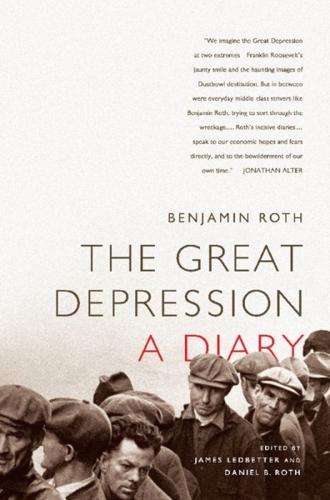
The Great Depression: A Diary
by
Benjamin Roth
,
James Ledbetter
and
Daniel B. Roth
Published 21 Jul 2009
But certainly the National Industrial Recovery Act, Social Security, the Agricultural Administration Act, Securities and Exchange Act, and Federal Deposit Insurance Corporation constituted government intervention into the minutiae of business activity that had no peacetime precedent in the United States. Furthermore, jobs programs in the Civil Works Administration, Works Progress Administration (WPA), and Civilian Conservation Corps resembled the types of government-sponsored employment that was often a feature of Socialist or Fascist governments. The fact that key parts of Roosevelt’s agenda were struck down as unconstitutional—which the legally trained Roth often pointed out—lends some credence to the idea that Roosevelt’s view of government and executive power tipped over into antidemocratic extremes.
…
In the last analysis therefore the government took over the bad mortgages and loans to keep open the banks. Who will pay for this remains to be seen. EDITOR’S NOTE Unfortunately, Volume IV of Roth’s diary was lost. It contained the entries for the second half of 1934 and all of 1935. The year 1935 saw the creation of new waves of New Deal legislation, including the Works Progress Administration—the largest of the New Deal agencies, which would employ 8.5 million Americans in a wide variety of jobs—and the National Labor Relations Act. The landmark Social Security Act was passed that year, providing federal assistance for the elderly for the first time in American history. At the same time, the Supreme Court that year declared the NRA to be an unconstitutional attempt to control commerce.
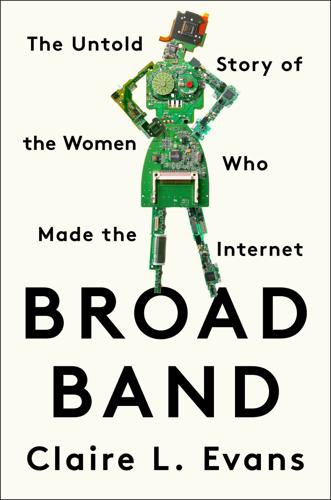
Broad Band: The Untold Story of the Women Who Made the Internet
by
Claire L. Evans
Published 6 Mar 2018
The Computing Group at Langley ran all its analytical calculations by hand, using the material ephemera of the gig: slide rules, magnifying glasses, curves, and early calculating machines. Johnson is often quoted as saying that she was a computer back in the days “when the computer wore a skirt.” The last significant human computing project in the United States, a reference book of mathematical tables funded by the Works Progress Administration—and overseen by another female mathematician, Gertrude Blanch—was published just as computing machines made it effectively obsolete. Human computing thrived as a stopgap between the emergence of large-scale scientific research and the capacity of hardware to carry out its calculations; eventually, the tireless machines that emerged from the spike in computer science research during the Second World War wore down their competition.
…
J., 150 Smithsonian Institution, 62 Snyder, Elizabeth “Betty,” see Holberton, Elizabeth “Betty” social media, 97, 137, 139–41, 148, 149, 151, 152, 201, 207, 210, 241, 242 Facebook, 139, 141, 148, 149, 151, 210 Reddit, 149 Twitter, 149, 150, 151 Social Services Referral Directory, 105–7, 215 Sodoeka, Yoshi, 193 software, 56, 74, 88, 94, 132, 163 crisis in, 76–78 distinction between hardware and, 33 women and, 51–52 see also programming software engineering, use of term, 77–78, 93 Somerville, Mary, 16, 21 Space Task Force, 24 spanning-tree protocol, 126–28 Speiser, Jane, 99–100 Stahl, Mary, 114, 118, 120, 122 Stanford University, 110, 153, 154 Augmentation Research Center at, 111–12, 116 Starrs, Josephine, 237 Stevenson, Adlai, 60 stock market crash, 198–200, 201 Stone, Allucquére Rosanne, 143 subroutines, 37 Suck.com, 194, 201–2 Sun Link Service, 162 Sun Microsystems, 161, 162, 210 Sutton, Jo, 239 Switchboards, 97–98, 100, 101, 105 Symbolics, 161, 162 Symbolics Document Examiner, 162 system administrators (sysops), 130, 131 Talmud, 154 Tandy, 225 Tannenbaum, Rob, 137 telephone companies, 24 Telepresence Research, 227 Teletype machines, 101, 105, 106 Telluride InfoZone, 131 telnet, 151–52 Terminal, 151–52 textile looms, 11–13, 20 Tierney, Gertrude, 73 Time, 233 Tomb Raider, 236 TransAmerica Leasing Corporation, 98, 99 trans experience, 143–44 Embraceable Ewe and, 142, 144 Turkle, Sherry, 223, 229 Twitter, 149, 150, 151 United States Naval Observatory, 9–10 United Way, 106 UNIVAC (Universal Automatic Computer), 57–63, 65, 66, 67, 73 C-10 code for, 58–59 University of California, Berkeley, 97, 110 University of California, Los Angeles (UCLA), 110 University of Michigan, 157 University of Pennsylvania, 69–70 Moore School of Electrical Engineering, 37–42, 47, 48, 50, 54–56 University of Southampton, 157–59, 160 Web Science Institute, 171, 173 Unix, 135–36, 152 URLs, 215 Utopian Entrepreneur (Laurel), 235 Van Meter, Jonathan, 188, 189 Viacom, 186, 192 VIBE, 188 video games, see computer games VIKI, 166, 170 Village Voice, 136, 183, 184 Virtual Community, The: Homesteading on the Electronic Frontier (Rheingold), 148–49 virtual reality, 227–28 VNS Matrix, 237–40, 242 Volkart, Yvonne, 240 von Neumann, John, 36 Walcott, James, 137 Walker, Janet, 162 Wall Street Journal, 220, 221 Watson, Patty Jo, 91–92 Watson, Richard, 88 Watson, Thomas, Jr., 60 Web: use of word, 153 see also World Wide Web Web sites and pages, 131, 135, 153, 154, 184, 186 life spans of, 170 for women, see women’s Web see also World Wide Web WELL, The, 132–35, 140, 149, 153, 179–80, 205–6, 209 Wellington, Arthur Wellesley, Duke of, 16 Wescoff, Marlyn, 39, 43, 48, 49 Westheimer, Ellen, 114 WHOIS, 119–20 Whole Earth Catalog, 100, 132 Whole Earth Review, 132, 183 Wilcox, Patricia (Pat Crowther), 84–94, 110 William the Conqueror, 155 Wired, 138, 194, 206 women, 4–5 computers as viewed by, 229 men posing as, 143–44, 179 and software vs. hardware, 51–52 women, working, 23–24 black, 24 wage discrimination and, 23, 77, 78 women.com, 205, 214–21 Women in Telecommunications (WIT), 141–42, 144, 205 Women’s Internet History Project, 143 Women’space, 239 women’s Web, 131, 216, 221, 223, 233 advertising and, 214–16, 218, 219, 221 iVillage, 214, 216–21 women.com, 205, 214–21 Women’s WIRE, 205–15 Women’s WIRE, 205–15 Woods, Don, 90 Word, 188–95, 201–3, 205, 214, 215 Works Progress Administration, 25 World War I, 24 World War II, 24, 25, 28–29, 31, 32, 34–37, 40, 45, 47, 50, 51, 53–55 atomic bomb in, 36 Pearl Harbor attack, 27–29, 32 World Wide Web, 102, 131, 152, 154, 159, 165, 168–72, 177, 203, 204, 222 browsers for, see browsers commercialization of, 204–5, 217, 241; see also advertising conferences on, 170, 173 early true believers and, 187–88, 196, 197, 202 hypertext and, 168–70, 201 links on, 168–70, 201 Microcosm viewer for, 172–73 number of women on, 214 search engines for, 115, 154 Semantic Web and, 174 see also Internet; Web sites and pages Xerox, 161 Xerox PARC, 162–66, 210 Y2K, 71, 194 Yankelovich, Nicole, 162 Zapata Corporation, 194, 201 Zeroes + Ones (Plant), 238 About the Author CLAIRE L.
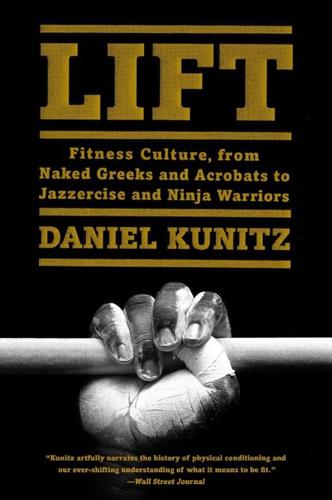
Lift: Fitness Culture, From Naked Greeks and Acrobats to Jazzercise and Ninja Warriors
by
Daniel Kunitz
Published 4 Jul 2016
But the formation of what came to be known as Muscle Beach is more firmly dated to 1934, when several gymnasts from Santa Monica High School began practicing at the playground on the beach. Two years later, one of them, Al Niederman, successfully petitioned the city to build a low platform on which to perform tricks, and two years after that, in 1938, the Works Progress Administration constructed a larger platform. There was already a rug on the sand for tumbling, and soon the city erected some parallel bars, horizontal bars, and rings. At the time, nightclubs featuring acrobatic acts were popular in the Los Angeles area, and it was around the gymnasts and those performers that the scene at the beach gelled.
…
Louis, Mo., 100, 103 Salon of Figure Development, 177 Sampson, Millie, 231 Sandbag PT, 75 sandbags, 75 Sandow, Eugen, 112, 138, 146, 148–56, 151, 161, 162, 163, 206, 262 Sandow’s Magazine of Physical Culture, 154, 155 Santa Monica, Calif., 88–89, 172, 173, 175–77, 183–88, 183 Santa Monica Evening Outlook, 187 Sargent, Dudley Allen, 128, 138–42, 139, 143, 144–46, 147–48, 149, 152, 159–60, 161 Sasuke, 197 Saturday Evening Post, 184 Saturday Night Light, 135 Saunders, Russell, 182–83, 183 Scandinavia, 101–2, 113, 119–20 Schnepfenthal Philanthropic School, 92 scholarship, 44 Schwarzenegger, Arnold, 2, 133, 153, 158, 164, 240, 241–42, 245 Scottish Highland Games, 134 Sealfit, 65–66, 71–73, 80, 82 SEALs, 75, 80–81, 85 segmented training, 266 Seido karate, 71 self-discipline, 36–37 Self-Help (Smiles), 118 self-overcoming, 45 Seneca, 58, 59, 61 Senior National Olympic Championships, 246 Serbia, 103 sex, 277 sexual moderation, 110 Seyle, Hans, 214 Shape, 166, 238 Shape Up, 235 Shaw, George Bernard, 157 Sheffield, George, 187 Shelley, Mary, 116 Siebert, Theodore, 162 Silk, Valerie, 249 Sinclair, Upton, 157 sinfulness, 255–56 skill transfer, 53 slaves: in Greece, 42 in U.S., 100 sleep apnea, 56 sleeping, 56, 57 Slimnastics, 235–36 Sloterdijk, Peter, 40, 84, 118, 159–60 Smiles, Samuel, 118 Smith, Ben, 26–27, 32, 39 smoking, 5, 7, 8–9 snatch, 3, 163, 248, 256, 260 soccer, 119, 257 Socrates, 38, 40, 54, 59 softball, 254 Sokol movement, 103 Song Dynasty, 60, 142 Sorensen, Jacki, 233–34, 239 Sorensen, Neil, 233–34 Soviet Union, 84, 103, 217, 260 Sparta, 43 Spartan Race, 67, 197, 278 spear throwing, 49 Spectator, 109 speed, 263 Sphinx Spreading Her Wings, 74 Spielberg, Steven, 258 Spin classes, 260 sports, 36 Sports Illustrated, 187, 217, 244, 259 sprints, 19, 266 squatting, 78 Stacey, 273–74 StairMasters, 12, 13, 136, 234 stamina, 263 Starr, Bill, 222–23, 246, 247, 259 state, body as analogue to, 41–44 Staub, Bill, 230 Steincrohn, Peter J., 204 Steinfeld, Jake, 258, 262 step classes, 260 steroids, 142, 242–43, 245 Stewart, Andrew, 30, 32, 36, 41–42 Stockton, Abbye “Pudgy,” 175–76, 176, 177, 182 Stockton, Les, 175 Stoics, 61 stone throwing, 49, 70, 108 Stone Wheels, 74 Street Workout World Championship, 88 strength, 263 Strength & Health, 164, 175, 244 Strength and How to Obtain It (Sandow), 148–49, 150 stress, 214–15 Stress of Life, The (Seyle), 214 strigil, 33 stroke, 210 Strong, 275 Strongest Shall Survive, The (Starr), 259 Strongman Run, 278 suburbs, 209–10 sumtoloa, 77 Sun Salutations, 84 Superman, 165 Susruta, 48, 50, 51 Swanson, Gloria, 190 sweating, 51, 204–5 Sweden, 100, 101, 119–20 swimming, 10–11, 19, 70, 194, 237 in Egypt, 49 in Greece, 43 Switzer, Kathrine, 231 Switzerland, 242 swordsmanship, 70, 73–74 tai chi, 50 Tailtean Games, 49 Tanny, Armand, 167, 176, 177, 183, 235 Tanny, Vic, 167–68, 174, 176, 221–22, 235, 237, 246, 262 Tao yin, 49, 50 Taylor, Garth, 261 team training, 69 Teixeira, Glover, 270 temperance, 110 tennis, 7, 19, 108, 119, 237, 254 Terminator, The (film), 133, 134, 243 Terminator 2 (film), 273 testosterone, 242 Theodosius I, Emperor of Rome, 62 Thera, 35 Thomas de la Peña, Carolyn, 141, 148 Thomson, Mr., 127 Thorisdottir, Annie, 274–75 throwing, 194 Thurman, Uma, 39 Times (London), 156 Timothy, 62 Title IX, 244 Today show, 217 Todd, Jan, 111, 114, 145–46, 244, 267 Topham, Thomas, 120 Toughest Calgarian Alive, 266–67 Tough Guy race, 277 Tough Mudder, 69, 197, 278 trainers, 13 training, 264, 279 of Chinese military, 74 and damage to body, 56 lifetime, 19–20, 21–22 pain after, 37–39 purpose of, 39–40 training effect, 229, 249–50 trapeze, 98 Travolta, John, 238 treadmills, 12, 136, 211, 230, 234, 240 Triat, Hippolyte-Antoine, 111–15, 116, 193, 262 triathlon, 265 Trimnastics, 220 Turkey, 76 Turner movement, 94–96, 97–98, 99, 103, 113, 114, 121, 129, 138, 147, 150 in U.S., 97–98, 100–101 Twardokens, Eva, 261, 270 24 Hour Fitness, 237, 244 Two Years Ago (Kingsley), 117 Tyler, Moses Coit, 118, 120 Tyrš, Miroslav (#diacritic), 102–3 Ueberhorst, Horst, 101 Ulysses (Joyce), 148–49 United States, 205 Turner movement in, 97–98, 100–101 Universal machine, 246 Van Doorn, John, 240 vegetarianism, 110 Vegetius, 68 Veltum, Franz, 162–63 Venice, 108 Venice Beach, Calif., 169–70, 172 Viator, Casey, 246–47 Villa Romana del Casale, 58, 59 visualization, 82, 85–86 Vogue, 274–75 “Vogue” (song), 10, 273 volleyball, 257 Wahlberg, Mark, 10 Walker, Donald, 111 walking, 56, 195, 229 Wallace, Mike, 203–4 Wallace, William, 74 Wandsbeker Athletenklub, 129 warfare, 217–18 Warped Wall, 198 Warrior Dash, 278 Warrior Yoga, 80 Washington, Booker T., 145 Waterloo, Battle of, 217 Wauquier, Dr., 98 weakness, 57 Weaver, Sigourney, 245 Weber, Eugen, 98–99, 193 Weber, Max, 159 Weckemann, Erwin, 195 Weider, Joe, 164, 165–66, 185 Weider Publications, 238 weight gain, 57 weightlifting, 19, 107, 162–63, 205 alleged dangers of, 130–31 bodybuilding and, 3, 164, 165, 176–77, 243 definition of, 2–3 heavy vs. light, 121–29, 132–33 poor habits of, 11–14 as spectacle, 165 by women, 1–2, 17 weight loss, 16, 167 exercise and, 220–21 weight machines, 145–46, 145 weight training, 259 Wellington, Duke of, 217 wellness, 190, 206 West, Mae, 184 Western Zhou Dynasty, 49 West Germany, 258 wheel feat, 49 White, David Gordon, 79, 189 Whitely, Alexander, 149, 156 Whitely Exerciser Company, 154 Whittaker, Enid, 212 Whorton, James C., 140, 249 Wildman, Donahue “Don,” 221–22, 237 Williams, Serena, 272 Wilson, Billy, 277 Wimbledon, 119 Windship, George Barker, 120–22, 123, 124–28, 129, 130, 140, 142 wine, 110 wire-walking act, 111 Wisdom Foundation, 221 women, 161, 219–25, 231 aerobics and, 232–37, 239 and bodybuilding, 241, 243, 244–45, 260, 273–74, 276 in CrossFit, 271–72, 275 in Greece, 42–43 gymnastics for, 99, 102 in marathons, 231–32, 244 sweating by, 205 weightlifting by, 1–2, 17, 177, 178–79 see also feminism Working Girl (film), 245 Workout of the Day (WOD), 136 workout porn, 25–26 Workout video, 236–37 Works Progress Administration, 173 work-to-rest ratios, 259 World Calisthenics Organization, 88 World Cup, 261 World Jiu-Jitsu Championship, 261 World’s Columbian Exhibition, 156 World’s Strongest Man, 34–35, 133 World War I, 101 World War II, 209, 211 World Yoga Day, 84 Wounded Warriors, 104 wrestling, 33–34, 48, 70 in China, 60 in Egypt, 49 wukedao, 74 wu shu, 70 Xenophon, 43 Yasin-Bradley, Hassan, 89–92, 96, 103 Yeats, W.

Data Action: Using Data for Public Good
by
Sarah Williams
Published 14 Sep 2020
The highest risk—the red color on HOLC maps—identified African American communities, areas with so-called incongruent uses and poor housing stock. 1.24 Home Owners’ Loan Corporation maps of Chicago, showing the inner-city African American neighborhoods in red. Source: Form-Based Codes Institute, “Zoning for Equity: Raising All Boats,” 2019, https://formbasedcodes.org/blog/zoning-equity-raising-boats/. The base data that HOLC used was developed from the 1934 and 1939 Works Progress Administration's Real Property Surveys, which mapped major cities across the United States, and which provided jobs during the Great Depression. The process of making the HOLC maps was overseen by the HOLC's Department of Economics and Statistics, which asked residents questions directed to identify risk, such as whether they held mortgages or felt they could hold one.
…
See also Urban planning Urban planning 9–10, 31–32, 155–156 in China 108, 110 data analytics and 47–48 population data and 203–204 racist reasoning and 36–37, 39 survey and mapping techniques 42–43 Urban populations 10 Urban renewal data and 36–37, 39 funds for 34, 126 Urban Systems Laboratory, MIT (Massachusetts Institute of Technology) 44 USAID (United States Agency for International Development) 55 US Bill of Rights 137 US Census 5 of 2010, 168 African Americans and 5 citizenship question and 5–6 US Census Bureau 5 US Constitution 5, 137, 180 US Department of Defense 193 US Department of Transportation 47 US Federal Trade Commission, “Fair Information Practices,” 198 Ushahidi platform 80–83, 199 US National Science Foundation 193 US Supreme Court 5, 174, 195 Value, extracting 194 Varian, Hal R. 194 Victorian era, maps and 14 Vision 2030 ICT Innovation Award 152 Volunteered Geographic Information (VGI) 52, 54 Voting Rights Act of 1965, 5 Wall Street Journal 178 War, technology of 43–45 Warfare to Welfare (Light) 43 Warren, Jeff 70 Washington 174 Washington Post 56–57 Waymo (Google's autonomous vehicle program) 189, 195 Waze 206 Weapons of Math Destruction (O’Neil) xii Websites, interactive 164–174 Weibo 98, 112–113 West Indies 140 White, Jeremy 175 Wichita, Kansas, Million Dollar Blocks project and 162 Wiener, Norbert 44 Wikipedia 54 Wilbur Smith and Associates 39 Williams, Sarah x, 95, 96, 115, 126, 140, 187, 218 William the Conqueror (King William I) 2 WNYC 179 Wood, Denis 155 Works Progress Administration, Real Property Surveys 36 World Bank 78, 196, 204, 206–208 World Cities Summit (WCS) Mayors Forum 2019, 187 World Health Organization 61, 62, 86, 198 World Resources Institute 196 World That Counts, A (United Nations report) 188 Wuhan, China 98 Yelp 95 Zoning 30–34, 36 Zoning commission, St.

Peggy Seeger
by
Jean R. Freedman
And when Pete became engaged to Toshi Ohta, who was half-Japanese, during World War II, Elsie Adams Seeger gave up trying to understand her descendants’ marriage patterns. Bowing to the inevitable, she put on her hat and went down to the Ohtas’ Greenwich Village home to introduce herself.7 In June 1938, Charles was hired to oversee programs of traditional music for the Federal Music Project, a division of the Works Progress Administration (WPA). Once again, he was frequently away from home, traveling to Tennessee and Oklahoma, Mississippi and Arkansas. His job included the creation of recreational programs that featured folk music, the collection and documentation of traditional music, and the promotion of American folk music in the schools.
…
See also ethnomusicology National Coal Board, 129, 175 Nazism: Great Depression and, 33; postwar neo-, 180; rise of, 17, 18–20, 33, 139–40, 299; Travellers and, 171–72; use of folk culture, 18–20, 139–40, 299. See also World War II New Deal: Charles and Ruth Crawford Seeger views on, 5, 22, 23–24, 33–34, 142–43; Special Skills Division philosophy, 5, 23–24; Works Progress Administration, 27–28, 142–43. See also Resettlement Administration New Lost City Ramblers, 161, 177 Newlove (MacColl), Jean (wife of Ewan): Ewan death and, 238; Ewan marriage to, 84–85; Ewan-Peggy early relationship and, 88–89, 92, 94, 114, 116–17; Godstone Road household and, 118–20, 129; Kirsty death and, 256; reflections on her marriage, 313n10; Soviet Union trip, 99; Stanley Avenue household and, 153 New School for Social Research, 11, 17, 21 Nice, Mahala, 209 Obama, Barack, 274–75 O'Boyle, Sean, 133 O'Casey, Sean, 153 Occupy Wall Street/Occupy St.
…
George and the Dragon theme, 174–75 Vloeberghs, Josef Ernst, 78–80 Wade, Bonnie, 211 Wallace, Henry, 44 Walton, Blanche, 15 Warshaw, Jack, 185 Waterson, Norma, 264 Watersons (music group), 271 Watton, Harry, 171–72 Weavers (music group), 44–45, 52, 78, 82 Weidig, Adolf, 13–14 Weissman, Clark, 59, 60–61, 64, 69 White Top Folk Festival (Virginia), 25, 140–42 Wilde, Oscar, 235 Winter, Eric, 147, 160–61 Wolf, Inez (wife of Charles Seeger III), 27, 76–78, 80, 313n26 Workers Music Co-Operative (Dublin), 232 Works Progress Administration, 27–28, 142–43. See also New Deal World War I, 8–9 World War II: aftermath of, 42–43, 258; “Crooked Cross” commentary on, 131; neo-Nazism after, 180; Pan American Union role, 35–36; Peggy experience with, 138; political folk music on, 37, 132; rise of Nazism, 17, 18–20, 33–34, 139–40, 299; Travellers compared to Nazi victims, 171–72; U.S. isolationism in, 33; views of Europe after, 79, 102.

Only Humans Need Apply: Winners and Losers in the Age of Smart Machines
by
Thomas H. Davenport
and
Julia Kirby
Published 23 May 2016
These have included reducing interest rates to make investment less risky; committing to purchases of goods and services by government agencies; funding infrastructural upgrades that require private sector labor; subsidizing the hiring of some workers; and providing federal credits for hiring. More directly, many governments have simply expanded their own payrolls to keep people gainfully employed. Most famously, in the United States, job creation in the time of the Great Depression took the form of the Works Progress Administration (WPA). Established by President Franklin D. Roosevelt’s executive order in 1933, it was a federal assistance program that put unemployed Americans to work directly on government-funded infrastructure projects and other community-improving efforts. Part of the WPA included a series of programs focused on arts and cultural programs, which nurtured the careers of artists and writers like painter Jackson Pollock and playwright Arthur Miller.
…
Department of Defense (DOD), 66 “Using the Head and Heart at Work” (Sadler-Smith), 117 Vanguard Group, 198–99, 223 augmentation approach, 88, 208, 210–11, 214, 217–20 Personal Advisor Services, 210–11, 213, 221 preparing employees, 219–20 technology vendors for, 213 Vardakostas, Alex, 205 Varshney, Lav, 122 Veale, Tony, 126 Warley, Richard, 183 War of the Worlds, The (Wells), 18–19 Washington Mutual (WaMu), 89–91, 95 Wealthfront, 198, 213 Weaver, John Frank, 228, 229 Weikart, David, 118 Weinberg, Bruce, 7 Wells, H. G., 18 Wenger, Albert, 246–47 Wenger, Brittany, 46 Wiener, Norbert, 26–27, 64 Williams, Anson, 75 Wilson, Jim, 131 Wolfram, Stephen, 57 Wolfram Research, 57 Works Progress Administration (WPA), 238, 240, 243 World Economic Forum (WEF), survey, 7 World Poll, 7–8 “World Without Work, A” (Thompson), 242 Wozniak, Steve, 112 writing, 24, 126. See also journalism human-generated, 127 Scheherazade program, 126 What-If Machine (WHIM), 126 X.ai, 3 Xchanging, 49, 221, 222–23 XL Catlin, 131 Yale Center for Emotional Intelligence, 116, 117 Yeager, Chuck, 67 Zimmermann, Andy, 132, 139 Zinsser, William, 118 Zipcar, 100–102, 195 Zuin, Daniela, 183–85 ABOUT THE AUTHORS THOMAS H.

Streetfight: Handbook for an Urban Revolution
by
Janette Sadik-Khan
Published 8 Mar 2016
Moses saw in New York a city struggling to modernize and weighed down by its past. And more than anyone before or since, Moses had the means, the power, and the motivation to do something about it. Enabled by successions of mayors and governors and fueled by billions of federal dollars in Works Progress Administration and Interstate Highway funds, Moses amassed as many as twelve directorships and leadership positions over vital public works agencies, from the New York City Parkway Authority to the Triborough Bridge and Tunnel Authority to the state parks. The federal government created massive public works programs to build new urban roads and housing to replace the “slum” infrastructure of the nineteenth century.
…
See Traffic fatalities Walking lanes, 76, 77, 77 WalkNYC, 129, 130, 130, 131, 131–32, 133, 134 Wall Street, 73, 137 Wall Street Journal, 178, 201–2 Washington Post, 146 Washington Square Park, 12, 281 Wayfinding maps, in New York City, 129–32, 130, 131, 133, 134 Weekend Walks, 123 Weiner, Anthony, 174 Weinshall, Iris, 168, 171–72, 265 Wenceslas Square (Prague), 3 West Side Highway, 14–15 White, Paul Steely, 8, 177, 230 White flight, 10 Wickquasgeck Path, 73 Wider roads, 50–52, 54, 63–64 Wiley-Schwartz, Andy, 38, 89, 124 Williamsburg Bridge, 44 Willis Avenue Bridge, 144–45 Wolfson, Howard, 176, 181 Woloch, David, 163 Working Families Party, 238 Works Progress Administration (WPA), 15 World Health Organization (WHO), 228 World’s Fair (1939), 17 World’s Fair (1964), 233 Y Yanev, Bojidar, 271 Z Zipcar, 184, 284–85 “Zip” generation, 183–84, 284–85 Zip lines, during Summer Streets, 122 Looking for more? Visit Penguin.com for more about this author and a complete list of their books.

Ghost Work: How to Stop Silicon Valley From Building a New Global Underclass
by
Mary L. Gray
and
Siddharth Suri
Published 6 May 2019
They made all the calculations at JPL behind the country’s earliest missile launches and bomber flights over the Pacific, as well as the United States’ first satellite and guided lunar missions. They even gave the Mars rover, the planetary exploration vehicle sent to Mars, its first launch plan.34 The majority of women at JPL had a similarly limited career path as the contract workers at Langley. Most started out as paid temps through the Works Progress Administration during World War II. JPL posted ads for part-time help in the mathematics and physics departments of surrounding colleges, calling out, in all caps, “COMPUTERS URGENTLY NEEDED.”35 Below the headline, the job description implied, clearly enough, that young women were its target audience: “Computers do not need advanced experience or degrees but should have an aptitude and interest in mathematics and computing machines.”36 In those days, if an office job didn’t require an advanced degree, that meant it was open to women.
…
See skilled work whiteness, 226 n3 Whitney, Eli, 43 Wilson, Holmes, 27, 30, 225 n29 women as computers, 39, 51–54 glass ceilings, 113–17 jobs open to, 53 piecework by, 42–43, 227 n8, 228 n9 schedule, 109 unions, 44–45 war time jobs, 229 n25 work-life balance, 105–10 workers advocacy of, 136–37 asset vs liability model, 54, 75–76 benefits for, 189–92 as customers, 144–47 Dashers, 157–58, 162 empathy for, 184–85 geographical location of, 223 n16 hope, xxvi–xxvii hypervigilance of, 76–80 inequality in treatment of, 91–93 isolation and lack of guidance, 80–84 learning from, 151–52, 172–77 men vs women, 109 motivations of, 100 needs of, 178–92 payment, lack of, 85–91 prioritization of, 147–55 ratings or reputation score, 70–71, 81–82, 89, 130, 179, 183–84 retention of, 149–50 as shareholders, 158–59 time use by, 79–80 types of, 171 value of, 140–43 views of, 39, 54 See also collaboration; employment, reasons for workflow, unevenness of, 67 work-life balance, 105–10, 155 workplace discrimination, 53–54, 113–17, 135–37, 172 workplace safety, xxiii–xxiv, 45–46, 60, 86, 97, 157, 190, 193–94 workplace wellness, 167 Works Progress Administration, 53 workspaces, 180–81 World War II, 47, 48, 53 Y Yelp, 3 YouTube, 183, 225 n29 Z Zaffar, 21–23, 25, 26, 130–31, 151, 161 About the Authors Mary L. Gray is a senior researcher at Microsoft Research New England and a fellow at Harvard University’s Berkman Klein Center for Internet and Society.
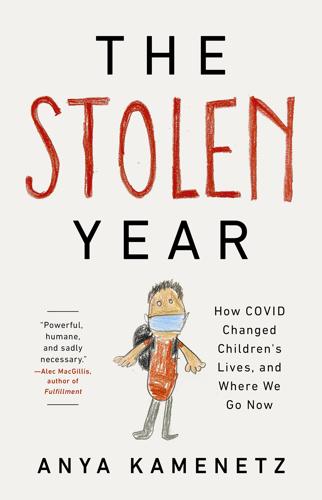
The Stolen Year
by
Anya Kamenetz
Published 23 Aug 2022
New Orleans taxed theaters; Connecticut, liquor licenses; and the nation’s capital appropriated to its schools a special tax on enslaved people and dogs. This legacy of marginal funding is embodied in the complex where Jeannie teaches and where she attended and her five children go now. The building fronting the highway, which houses the high school, is a stately but run-down graystone built by the Works Progress Administration as part of the New Deal in the 1930s. Other buildings were tacked up in the 1960s, and the latest additions are “temporary” trailers that have been up since Jeannie was in middle school in the early 1990s. She gets riled up when she drives by the prosperous cattle and chicken ranches on the outskirts of town.
…
Women of color represent 20 percent of the US population but 40 percent of all childcare workers, according to Child Care Aware. These patterns go back a long way. In the time of slavery, Black women were exploited as domestic caregivers with ruthless disregard for their own family bonds. Katie Sutton, a woman born into enslavement and interviewed by Works Progress Administration researchers in the 1930s, recalled, “When I was a little gal, I lived with my mother in an old log cabin. My mammy was good to me, but she had to spend so much time at humoring the white babies and taking care of them that she hardly ever got to even sing her own babies to sleep.” The historic bias hardly ended with the Emancipation Proclamation.
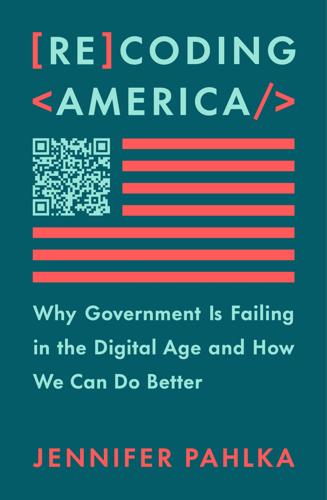
Recoding America: Why Government Is Failing in the Digital Age and How We Can Do Better
by
Jennifer Pahlka
Published 12 Jun 2023
But, as with the Paperwork Reduction Act, it’s important to consider how it has worked out in practice. The origins of the APA go back to debates surrounding the New Deal. To help the nation recover from the Great Depression, President Roosevelt created new federal agencies like the Social Security Administration, the Works Progress Administration, and the Federal Deposit Insurance Corporation. The people in these agencies needed to make a lot of decisions about how to implement laws like the Social Security Act, and because there existed no comprehensive standards that governed agency action, Congress didn’t have much control over how that was done.
…
water systems grants Weaver, Matthew website agency in-house development and EDD and limiting functionality for launch purchasing officers vs. designers and testing updates for West Virginia v. EPA whiteboards and sticky notes White House tech team. See also US Digital Service Williams, Alan wind farms Windows 95 WordPerfect Works Progress Administration World War II World Wide Web Wyoming food stamp program xkcd (Munroe) XML “yesterday’s technology tomorrow” problem YouTube Zoom Zuckerberg, Mark ABOUT THE AUTHOR JENNIFER PAHLKA served as the United States deputy chief technology officer for government innovation under President Barack Obama.
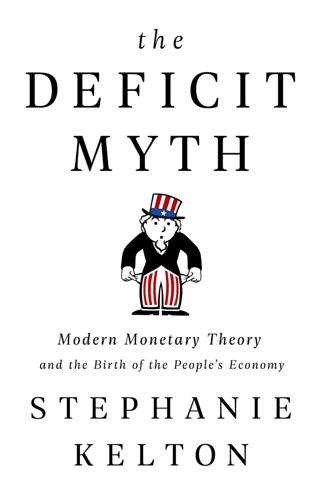
The Deficit Myth: Modern Monetary Theory and the Birth of the People's Economy
by
Stephanie Kelton
Published 8 Jun 2020
In the 1930s, the US fought the Great Depression by directly creating millions of jobs under President Franklin D. Roosevelt’s New Deal. The Public Works Administration (PWA) put hundreds of thousands of men to work building schools, hospitals, libraries, post offices, bridges, and dams. In its first six years, the Works Progress Administration created about eight million construction and conservation jobs as well as thousands of jobs for writers, actors, and musicians. The National Youth Administration created 1.5 million part-time jobs for high school kids and 600,000 for college students. As MMT proposes, the jobs were federally funded, but the programs weren’t permanent, and they didn’t guarantee employment to all.
…
For an alternative version that incorporates differential compensation based on experience and other considerations, see Mark Paul, William Darity Jr., and Darrick Hamilton, “The Federal Job Guarantee—A Policy to Achieve Permanent Full Employment,” Center on Budget and Policy Priorities, March 9, 2018, https://www.cbpp.org/research/full-employment/the-federal-job-guarantee-a-policy-to-achieve-permanent-full-employment. 25. It is not a make-work scheme. Many of the jobs could resemble those created under the New Deal programs of the 1930s. For example, many public works projects were undertaken through the Works Progress Administration, a lot of environmental work was performed under the Civilian Conservation Corps, and part-time jobs were created for 1.5 million high school students and 600,000 college students under the National Youth Administration. In contrast to many of the Roosevelt-era New Deal programs, which excluded blacks and other minority groups from participating, the job guarantee would ensure universal access to all. 26.
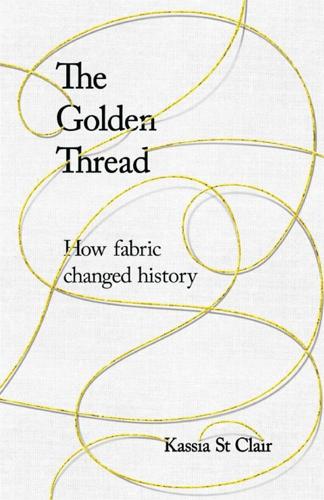
The Golden Thread: How Fabric Changed History
by
Kassia St Clair
Published 3 Oct 2018
Hunt-Hurst, p. 734. 11Terrell. 12White and White, p. 159; Prude, pp. 156, 146; Equiano, p. 138. 13Quoted in White and White, p. 181; Smith. 14Hope Franklin and Schweninger, p. 80; 15Jones. 16Quoted in White and White, p. 161. North Carolina Narratives, ed. by The Federal Writers’ Project of the Works Progress Administration for the State of North Carolina, Slave Narratives: A Folk History of Slavery in the United States from Interviews with Former Slaves (Washington: Library of Congress, 1941), xi, p. 286. 17White and White, pp. 164, 168; quoted in Prude, p. 143. 18Quoted in White and White, p. 176. 19Boopathi et al., p. 615. 20Moulherat et al. 21Beckert, Empire of Cotton, p. xiii; Romey; Yin. 22Handheld roller gins have been used in India since at least the fifth century. 23Beckert, Empire of Cotton, pp. 15–16. 24Quoted in Riello and Parthasaranthi, The Spinning World, p. 221. 25Quoted in Bailey, p. 38. 26Beckert, Empire of Cotton, p. 249. 27It is important to remember, however, that even during the height of the Industrial Revolution, Britain’s mechanised production of cloth was small fry on a global scale.
…
A19 E Eamer, Claire, ‘No Wool, No Vikings’, Hakai Magazine, 23 February 2016 <https://hakaimagazine.com/features/no-wool-no-vikings> ‘Earliest Silk, The’, New York Times, 15 March 1983, section Science <http://www.nytimes.com/1983/03/15/science/l-the-earliest-silk-032573.html> [accessed 21 August 2017] Eaton-Krauss, Marianne, ‘Embalming Caches’, The Journal of Egyptian Archaeology, 94 (2008), 288–93 Editorial Board, ‘One Year After Rana Plaza’, New York Times, 28 April 2014, section Opinion, p. 20 Equiano, Olaudah, The Interesting Narrative and Other Writings, 2nd edn (London: Penguin Classics, 2003) Espen, Hal, ‘Levi’s Blues’, New York Times, 21 March 1999, section Magazine <https://www.nytimes.com/1999/03/21/magazine/levi-s-blues.html> [accessed 29 March 2018] Estrin, James, ‘Rebuilding Lives After a Factory Collapse in Bangladesh’, Lens Blog, New York Times, 2015 <https://lens.blogs.nytimes.com/2015/04/23/rebuilding-lives-after-a-factory-collapse-in-bangladesh/> [accessed 22 September 2017] F Farchy, Jack, and Meyer, Gregory, ‘Cotton Prices Surge to Record High amid Global Shortages’, the Financial Times, 11 February 2011 <https://www.ft.com/content/3d876e64-35c9-11e0-b67c-00144feabdc0> [accessed 27 November 2017] Federal Trade Commission, Four National Retailers Agree to Pay Penalties Totaling $1.26 Million for Allegedly Falsely Labeling Textiles as Made of Bamboo, While They Actually Were Rayon, 3 January 2013 <https://www.ftc.gov/news-events/press-releases/2013/01/four-national-retailers-agree-pay-penalties-totaling-126-million> [accessed 19 September 2017] Federal Writers’ Project of the Works Progress Administration for the State of North Carolina, ed., North Carolina Narratives, Slave Narratives: A Fold History of Slavery in the United States from Interview with Former Slaves (Washington: Library of Congress, 1941), XI Federation International de Natation, FINA Requirements for Swimwear Approval (FRSA) (Federation International de Natation, 5 August 2016), p. 26 Feinberg, David, ‘The Unlikely Pair of Brooklyn Designers Who Are Building a Better Space Suit – Motherboard’, Motherboard, 2013 <https://motherboard.vice.com/en_us/article/9aajyz/spaced-out-space-suit-makers-video> [accessed 7 December 2017] Feltwell, John, The Story of Silk (Stroud: Alan Sutton, 1990) ‘40 Years of Athletic Support: Happy Anniversary to the Sports Bra’, NPR (NPR, 2017) <https://www.npr.org/sections/health-shots/2017/09/29/554476966/40-years-of-athletic-support-happy-anniversary-to-the-sports-bra> [accessed 8 January 2018] Fowler, Susanne, ‘Into the Stone Age With a Scalpel: A Dig With Clues on Early Urban Life’, New York Times, 8 September 2011, section Europe <https://www.nytimes.com/2011/09/08/world/europe/08iht-M08C-TURKEY-DIG.html> [accessed 16 March 2018] Franits, Wayne, Dutch Seventeenth-Century Genre Painting: Its Stylistic and Thematic Evolution (New Haven: Yale University Press, 2004) Frankopan, Peter, The Silk Roads: A New History of the World (London: Bloomsbury, 2015) Freud, Sigmund, New Introductory Lectures on Psychoanalysis (New York: W.

Empire of the Sum: The Rise and Reign of the Pocket Calculator
by
Keith Houston
Published 22 Aug 2023
Led by Gertrude Blanch, a Polish immigrant to the USA, the Mathematical Tables Project would be one of the most enduring and successful efforts to mold hesitant human brains into a numerical production line. The MTP was part of a lingering countrywide hangover from the Great Depression. Established by the Works Progress Administration of the federal government, the MTP’s mandate was to compute and publish mathematical tables while, at the same time, employing as many workers as possible.31 Gertrude Blanch, who funded her first degree in mathematics and physics by working for a milliner and who had been pursued by Cornell University for her PhD, was brought in to oversee the work.32 By the spring of 1938, the MTP had recruited 125 computers, making it one of the largest computing groups in the world, although many of its reluctant employees languished in states of physical distress or mental ill health.33 Some did not understand arithmetic.
…
F., 11 Rockwell, 197, 199, 235 Roman hand abacus, 41–43, 41 Roman numerals, 19, 47–48 ROM chips, 203–4, 205–6, 218, 219, 237 Rome, ancient, 19, 32, 33, 41–43, 41 Rosen, Ben, 267 rotary calculators, 126 See also Friden STW-10 calculator RPN (reverse Polish notation), 224n Salamis tablet, 30–32, 31 Sanyo, 197, 200 Sasaki, Tadashi, 198–99, 204 Savile, Henry, 65–66 Sayre, Rod, 207 Schickard, Wilhelm, 80–84, 82, 87, 94, 101 Schmandt-Besserat, Denise, 11, 27 Science and Civilisation in China (Needham), 36–37 scientific calculators algorithms for, 218, 219–22, 221 Casio fx-190, 238 HP-65, 232 HP 9100A, 173, 175–76, 213–15, 213, 217 SR-50, 246–47 scientific calculators (continued) TI-30 classroom calculator, 246 See also HP-35 calculator Scientific Revolution, 48, 50 sectors, 66–67, 67 Séguier, Pierre, 86 Seiko, 229, 240–41 semiconductors, 167 sexagesimal systems, 11, 28–29 SG-12 Soccer Game (calculator), 238–39 Shakespeare, William, 44–45 Shannon, Claude, 135–36, 140 Sharp Electronics, 197, 198, 200 Busicom and, 204–5 Compet CS-10A calculator, 160, 172n, 186 EL-8 calculator, 195 ELSI Mate EL-8048 calculator, 236 microchips and, 198 Micro Compet (QT-8D and QT-8B) calculators, 192, 199, 201 shift-and-add algorithm, 220–22, 221 shifting, 218 Shima, Masatoshi, 203, 205, 206, 207, 218, 251, 274 Shirriff, Ken, 205 Shockley, William, 167, 181, 197–98 Shù Shù Jì Yí (Notes on Traditions of Arithmetic Methods) (Xu Yue), 34–35, 36–37 significant figures, 125n simultaneous equations, 36 Sinclair, Clive, 232 Sinclair Executive calculator, 232 sines, 58 size-value systems, 23 slide rule atomic bomb and, 75–76 circular, 71–72, 71, 75 cursor in, 73, 74 instructions for, 70 limitations of, 77–78, 106, 137 Oughtred’s invention of, 70–71 power of, 49, 73–74 scientific calculators and, 224–25 space travel and, 76–77, 77, 78 variations of, 72–73, 74–75 smartphones, 255, 276, 276 Smith, David Eugene, 26–27 software, 139–40 Software Arts, 262, 269, 270 See also VisiCalc solar-powered calculators, 246, 257 solenoids, 130–31 Son, Masayoshi, 199 Sony Sobax calculator, 192 soroban (Japanese abacus), 39–40 Sottsass, Ettore, 164n space travel mechanical calculators and, 122–23, 122, 125–26 microchips and, 184–85 Programma 101 calculator and, 174–75 scientific calculators and, 224 slide rule and, 76–77, 77, 78 Sparkes, John, 159 spreadsheets BBL alternative to, 260–61n history of, 259 See also VisiCalc square roots, 219 SR-50 scientific calculator, 246–47 stepped drum, 97–98, 100, 123 Stevin, Simon, 50 Stibitz, George, 134–35, 155 STW-10 calculator, 123–26, 124, 127, 145, 186 suàn (counting rods), 35–36, 35 Suàn Fă Tŏng Zong (Systematic Treatise on Arithmetic) (Chéng Dà-Wèi), 38, 38 suàn pán (Chinese abacus), 37–39, 38 Sumlock Company, 145–46, 147, 154, 156 ANITA calculator, 145, 157–60, 157, 167, 186 Suydam, Marilyn, 244, 245, 247 Sylvester II (Pope), 44, 46 symbolic equations, 50 synthesizer-calculators, 238 tally sticks, 5–7, 7 Tanba, Tadashi, 203, 205, 206 Tchou, Mario, 165, 166, 176 Teal, Gordon, 181 TEAL Photon calculator, 257 technology skepticism, 242–43, 244, 248, 251 Tektronix 31/10 graphing calculator, 248 telegraph, 131–33, 133, 134 telephone, 134, 152 teletype, 135 ten-key adders, 105 tesserae, 14–16, 15 Texas Instruments Cal Tech calculator prototype, 186–90, 189, 193, 194, 214 Canon and, 194–96 classroom calculators, 245, 246–47, 250–54, 252, 255 graphing calculators, 251–54, 252, 256 Japan and, 191, 192–93 LEDs and, 189 microchip development and, 178, 180–85, 184, 187–88, 197 micromodules and, 178–79 Mostek competition, 201 Pocketronic calculator and, 195 Spirit of ’76, 236 SR-50 scientific calculator, 246–47 TI-1260 shoppers’ special calculator, 237 TI-2500 Datamath calculator, 210, 246 transistor development and, 181, 186–87, 186 VSTOL/REST calculator, 237 Thomas de Colmar, Charles Xavier, 96–98, 99, 100–104, 111–12, 126, 173, 243 TI-30 classroom calculator, 246 TI-81 graphing calculator, 251–52, 252, 253, 256 TI-1205 classroom calculator, 246, 247 TI-1255 classroom calculator, 246 TI-1260 shoppers’ special calculator, 237 TI-1766 classroom calculator, 246 TI-2500 Datamath calculator, 210, 246 Timeulator calculator watch, 234 tokens, 21–23 transistors, 160, 167–68, 181, 186 trigger tubes, 158 trigonometry, 50, 58 triodes, 151–54, 151 Triumph-Adler, 236 Turing, Alan, 114, 146, 147, 219 Turing test (imitation game), 114 2001: A Space Odyssey, 229 typewriters, 164 Underwood company, 162, 165, 166, 175 Universal Exposition (Paris, 1855), 103 universal machine, 219 Unix operating system, 277–78 Urquhart, Thomas, 54 vacuum fluorescent displays (VFDs), 200 vacuum tubes, 147, 150–54, 158 van Ceulen, Ludolph, 50 Van Tassel, James, 188 Viète, François, 50 Vietnam War, 175 vigesimal systems, 9–10, 12–13 VisiCalc, 259–68, 267 Apple II and, 262–64, 266, 267–68, 274 copies of, 270 fall of, 270–71 IBM PC and, 269 marketing of, 264–66 power of, 274 profits from, 269–70 vision for, 259–62 VL-1 calculator-synthesizer, 238 Vlacq, Adrian, 65 Volder, Jack E., 222 Voltaire, 98 von Lieben, Robert, 150–51, 152n VSTOL/REST calculator, 237 Waits, Bert, 245–46, 248, 249 Wang, An, 220 Watson, Thomas J., 138 Whittle, David W., 174–75 Wilson, Elizabeth Webb, 119 “Wiz-A-Tron,” 246 Womersley, J. R., 156 Wood, Tom, 40, 130 Works Progress Administration (WPA), 120, 121 World War I, 119 World War II Kashio brothers and, 129 mechanical calculators and, 112 Olivetti company and, 162–63 relays and, 137 slide rule and, 75–76 Sumlock Company and, 146 Texas Instruments and, 180 Turing and, 114 Wozniak, Steve, 224, 274 wristwatches Bulova Accutron, 227–28 Compuchron calculator watch, 234 HP-01 calculator watch, 234 LCD, 240–41 price drop, 239–40 Pulsar Time Computer, 226–27, 229–31, 230, 233 Seiko Astron, 229 Timeulator calculator watch, 234 Wyle Laboratories, 200 Wynn-Williams, C.
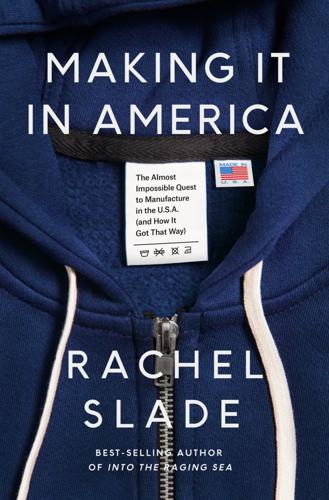
Making It in America: The Almost Impossible Quest to Manufacture in the U.S.A. (And How It Got That Way)
by
Rachel Slade
Published 9 Jan 2024
But J&L’s case arrived at the perfect moment for a decisive labor victory. The country was deep in the Great Depression; 25 percent of Americans were out of work. Antilabor conservatives were exceedingly unpopular. The public began to see the good created by Roosevelt’s myriad public works programs, such as the Works Progress Administration (WPA), which used federal money to employ people to build infrastructure across the nation, including railroad stations, bridges, schools, and roads. The country was moving again; surely the economy would follow.[*] J&L lost its lawsuit against the NRLB in 1937 and was forced to rehire employees it had fired, with back pay.
…
(FDR), 56–57 infrastructure projects of, 205 labor unions and, 57, 59 New Deal and, 57 NLRB and, 57 Perkins as secretary of labor for, 183 pro-worker agenda, 184 Works Progress Administration (WPA), 59, 59n Roosevelt, Theodore, 195 Rothko, Mark, 59n Route 66, 200–202, 204–8 Roux, Bryony, 281 Rubin, Michael, 289 Russell, Benjamin, 135 Russell Manufacturing Company, Alexander City, Alabama, 135, 168 Berkshire Hathaway acquires, 139 manufacturing offshored, 139, 168 sweatshirt production, 135–36 Russo, Ann, 116–19, 149, 150–51, 166, 170, 244 Rwanda, 123n, 125–26 S Saeed, Saeed Hassoon, 120–21 Sanders, Sarah Huckabee, 134n SAPPI, Westbrook, Maine, 174, 262n School of Fashion Design, Boston, 116, 118 Screen Actors Guild, 185 S.D.
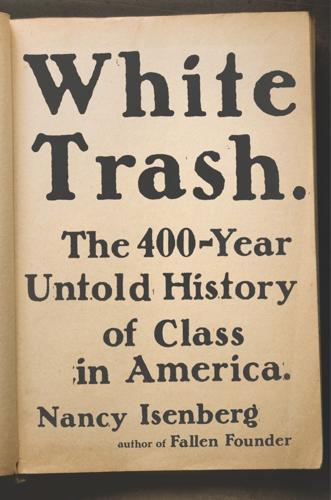
White Trash: The 400-Year Untold History of Class in America
by
Nancy Isenberg
Published 20 Jun 2016
Though not under the supervision of the Resettlement Administration, Arthurdale, in the abandoned coal-mining region of Reedsville, West Virginia, was one notable lightning rod. Constantly in the news because it was the pet project of Eleanor Roosevelt, this experimental community was accused of wasting money and Works Progress Administration man-hours. A reporter for the Saturday Evening Post argued that the community was not even functioning as an organ of relief because the screening process was geared toward accepting only those applicants whose success seemed assured, rather than bringing in the folks who most needed government assistance.
…
Eric Hinderaker, Elusive Empires: Constructing Colonialism in the Ohio Valley, 1763–1800 (Cambridge: Cambridge University Press, 1997), 239–40, 244, 246; Holly Mayer, “From Forts to Families: Following the Army into Western Pennsylvania, 1758–1766,” Pennsylvania Magazine of History and Biography 130, no. 1 (January 2006): 5–43, esp. 13, 21, 23–24, 36–38, 40. 9. On Colonel Henry Bouquet, see Bouquet to Anne Willing, Bedford, September 17, 1759, in The Papers of Colonel Henry Bouquet, ed. Sylvester E. Stevens et al., 19 vols. (Harrisburg: Pennsylvania Historical Commission and Works Progress Administration, 1940–44), 3:371–72, 4:115–16. 10. For various meanings of “squat” and “squatting,” see Oxford English Dictionary; Melissa J. Pawlikowski, “‘The Ravages of a Cruel and Savage Economy’: Ohio River Valley Squatters and the Formation of a Communitarian Political Economy, 1768–1782” (paper presented at the Society of Historians of the Early American Republic, July 17, 2011, in possession of the author).
…
(Hays), 308–9 Whig Party, 119, 128, 129 White, John, 17 white trash, 135–36, 145, 151–52, 172, 178, 270, 276–77, 291, 309 White Trash Cooking (Mickler), 276 Widow Ranter, The (Behn), 40 Wigfall, Louis T., 159 Wild River, 253 William the Conqueror, 80 Wilmot, David, 147 Wilson, Alex (journalist), 251 Wilson, Alexander (ornithologist), 113–14, 116 Wilson, Charles Morrow, 213 Wilson, Gretchen, 304 Wilson, Milburn Lincoln, 213–17, 223 Winning of the West, The (Roosevelt), 191 Winthrop, John, 5, 6, 10–12, 29–31, 35, 64 Win tribe, 200 Wirt, William, 102 Wister, Owen, 192 Wolfe, Tom, 280 women, 115, 170, 178–79, 183, 311 in American colonies, 27–28, 36–37, 40–41 childbearing by, 66–67, 100, 192–95, 203, 318 eugenics and, 192–97, 203 Wood, Grant, 234, 234 Woodbury, Levi, 142 Woodmason, Charles, 110 Woodruff, Judy, 284 Works Progress Administration, 221 World of Our Fathers (Howe), 276 World War I, 197–98, 202, 209 World War II, 223, 246 Yorba Linda, Calif., 245–46 You Can’t Sleep Here (Newhouse), 210 Young, Andrew, 282, 302 Looking for more? Visit Penguin.com for more about this author and a complete list of their books.

Moon Oregon Trail Road Trip: Historic Sites, Small Towns, and Scenic Landscapes Along the Legendary Westward Route
by
Katrina Emery
and
Moon Travel Guides
Published 27 Jul 2020
The crown of Gage Park is the Topeka Zoo (635 SW Gage Blvd., 785/368-9180, www.topekazoo.org, 9am-5pm daily, $7.75 adults, $6.75 seniors, $6.25 ages 3-12, free under age 3), home to over 400 animals from all over the world. Talk a walk in Black Bear Woods or the Lion’s Pride. The zoo supports a wildlife conservation center. Lake Shawnee Built as a Works Progress Administration project in 1935, Lake Shawnee regularly attracts Topeka locals to its shores for fun, festivals, fishing, and more. You’ll find a disc golf course, boat ramps, softball fields, and an arboretum. For fun on the water, head to Adventure Cove (3515 SE Beach Terrace, 785/251-6800, 11am-7pm Mon.
…
You can purchase it at many of the local businesses or ranger stations around the mountain, including in Dufur, Government Camp, Welches, Zigzag, and Sandy, or online (http://store.usgs.gov/forest-pass). In winter you’ll need a Sno-Park permit ($4 per day, $9 for 3 days) instead. Sights and Recreation Timberline Lodge Perched high on Mount Hood, iconic Timberline Lodge (27500 E. Timberline Rd., 503/272-3410, www.timberlinelodge.com/lodge) was built in 1937 as a Works Progress Administration project, and details from the handrails to the stone fireplace have been carefully handcrafted by artists—admire them as you wander around. The structure is famous for its starring role (exteriors only) in the 1980 movie The Shining. Even if you’re not spending the night, stop by to soak up the atmosphere, warm up by the giant fireplace, or enjoy a hot chocolate or craft beer at one of the on-site bars or restaurants.
…
The ride up is technically considered its own street—a vertical one! The elevator affords access to the McLoughlin Promenade, a 2-mile (3.2-km) linear park along the bluffs. You’ll have spectacular views of downtown, the Willamette River, and Willamette Falls. It was constructed in the 1930s as a Works Progress Administration project, and the beautiful stonework showcases the craftsmanship of the era. The promenade runs south from the elevator past a row of historic houses, and then across the highway to the Willamette Falls Scenic Viewpoint, offering the best views of Willamette Falls and Oregon City’s mill site.
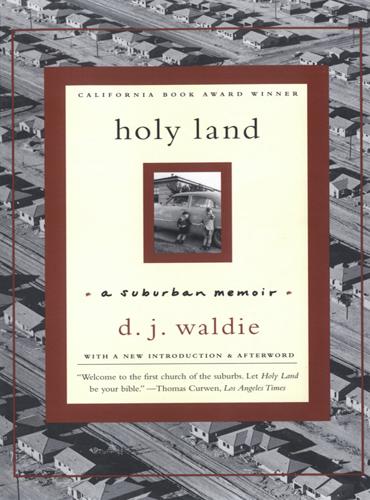
Weimar Culture: The Outsider as Insider
by
Weimar Gay
Published 31 Dec 2001
If a family’s money ran out, as it often did, state agencies offered assistance only if the family agreed to leave California and return home. Very few families accepted. If a man could string out a year of intermittent jobs, he would be eligible for a state relief check or a federal job from the Works Progress Administration. If he got a WPA job, he could plant trees or pour concrete for new sidewalks. 289 When the war began, the Okies were ready for work. Ten percent of wartime federal spending went to California. Southern California aircraft plants produced 40 percent of the planes flown by the Navy and Army Air Corps.
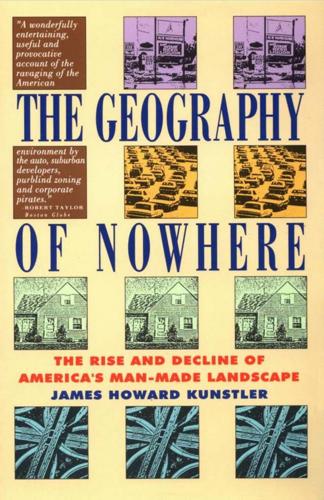
The Geography of Nowhere: The Rise and Decline of America's Man-Made Landscape
by
James Howard Kunstler
Published 31 May 1993
, 9-10 Whyte, William H., 144 wilderness, 150 Cole's depiction of, 41-42 Puritan's view of, 17-19 "wild" landscape, 44 William and Mary, College of, 31 Williamsburg, Va., 31, 186, 198, 218 Wilmorite Corporation, 145, 146 Wilson, Woodrow, 85 Wilton, N.Y., 143-46 Windsor County, Vt. , 241 Winnetka, Ill. , 55 Wolfe, Tom, 70, 72 wood, 161-62 Woodstock, Vt., 217, 238-44, 270 history of, 241-42 Laurance Rockefeller and, 242-43 science economy of, 243 Woodstock Country Club, 243 Woodstock Inn, 243 Woodward Avenue (Detroit, Mich.), 190-91, 194, 247 Woolworth, F. W., 53 Woolworth Building (New York, N. Y. ), 75 Worcester, Mass. , 78 Wordsworth, William, 157 Works Progress Administration (WPA), 98 World War I, 67, 74, 76, 90, 100103, 180 art influenced by, 70-71 World War II, 76, 95, 100, 108, 165, 169, 193, 194, 212, 255 Atlantic City, N.J., as affected by, 228-30 national economy and, 103-4 WPA (Works Progress Administration), 98 Wren, Christopher, 63, 157 Wright, Frank Lloyd, 74, 164-65 Wright, Orville, 199 Wright, Wilbur, 199 Yaro, Robert, 264, 267 Yellow Coach company, 91 zoning, 34, 51-52, 55, 136, 169-70, 240, 246, 248, 255 cities and, 34, 51-52 countryside and, 264-65 development and, 263-65 farms and, 170 in Great Britain, 263 houses and, 169-70 Kentlands and, 258 "large lot," 170 local boards and, 259 in Los Angeles, Calif. , 209 mandatory open spaces and, 267 optional, 267 in Portland, Oreg. , 201-2 in Seaside, Fla., 256-57 suburbs and, 51-52, 55, 113-14, 117-18 3 0 3 M About the Author JAMES HOWARD KUNSTLER is the author of eight novels.
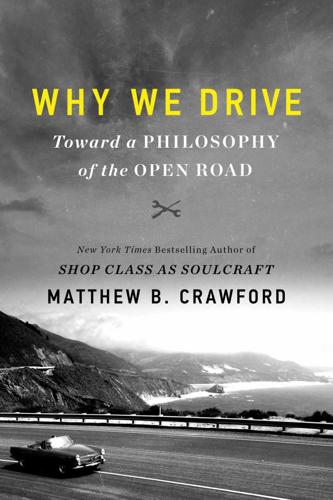
Why We Drive: Toward a Philosophy of the Open Road
by
Matthew B. Crawford
Published 8 Jun 2020
Flink interprets these investment priorities as a transfer of wealth, with working-class streetcar riders in effect being “taxed by city planners and politicians to make possible middle-class automobile use.”2 In the 1930s, Franklin Delano Roosevelt embraced road building as a jobs program, with an eye also on the utility of highways for national defense (this at a time when Adolf Hitler was constructing his autobahn).3 Progressives embraced automobility as a government project well suited to the exercise of their enthusiasm for state-directed investment, rational planning, and national vigor in the tradition of Herbert Croly’s “New Nationalism,” which greatly influenced FDR. The Works Progress Administration, a key element of the New Deal, provided ten times as much funding for streets and highways as for public transportation.4 But it wasn’t until after the war, during the Eisenhower administration, that construction of the Interstate Highway System began. It was a project of Napoleonic ambition, undertaken in an era when the state enjoyed a level of prestige, credibility, and legitimacy that is hard for us to imagine in 2020.
…
See also neighborhoods as act of faith, 2–3 cities made for, 247–248 exposure in, 20 WALL-E (film), 6, 189 Wang, Forrest, 165 Warren County Fair, 185 Wasilla, 249 Werlin, Jacko, 139 White, Adam J., 291 Whitfield, Randy, 87–89 Wiener, Earl, 101 Williams, Bernard, 119–120, 283 windows, tinted, 253 women female riders, 192–194 girl-power affirmation, 194 in kitchen restaurant culture, 194–195 overcomer complex, 197–198 working-class, 195–196 working class, 196 Works Progress Administration, 38 World Health Organization, 242 World War One aerial combats, 173–176 calvary, 174–175 Churchill, Winston, 174, 177 RAF fighter pilots, 177–178 Richthofen, Manfred von, 174–176 wrecking yard. See junkyards Wyden, Ron, 302 Yamaha, 164 yam-houses, 69 yard wealth, 68–71 Yellow Vest movement, 29–30, 224–226 Zients, Jeffrey, 4 Zuboff, Shoshana, 273–274, 302–303, 305–306, 309 Zündapp, 139–140 © Shutterstock / Dudarev Mikhail Also by Matthew B.

New Laws of Robotics: Defending Human Expertise in the Age of AI
by
Frank Pasquale
Published 14 May 2020
To the extent AI and robotics innovation can be directed, consistent with the four laws of robotics mentioned above, it should be directed there.33 Given the coronavirus-sparked economic crisis of the early 2020s, there will be ample opportunity to guarantee jobs in such fields. The US New Deal offers one model; its Civilian Conservation Corps and Works Progress Administration rapidly employed the jobless during the Great Depression. The economist Pavlina Tcherneva has promoted a more bottom-up approach based on proposals by community groups and nonprofits.34 The macroeconomics of assistance are key here. The goal is not simply to replace the status quo but to ensure employment policy in the wake of AI-driven job loss addresses the triple (and mutually reinforcing) threats of climate change, ill health, and gross inequality.
…
See also drones; landmines; lethal autonomous weapons systems; nuclear weapons Weizenbaum, Joseph, 28, 46–47 Westworld, 7 WhatsApp, 100 whistle blowers, 131 Widerquist, Karl, 183 Wikipedia, 87 Wilensky, Harold, 188 Williams, Jody, 156 Winner, Langdon, 202 Wittgenstein, Ludwig, 211, 304n44 Woebot, 47–48 Wojcicki, Susan, 108 workers, 188, 201, 219; and democratization in the workplace, 176–177, 198; educating and training of, 173, 175–179; empowerment of, 4, 199; as human capital, 199; rights and perogatives of, protected by state, 172; unionized, 5, 177. See also blue collar jobs; pink collar jobs Works Progress Administration, 186 World Economic Forum, 25 World War I, 156 Wyman, Jemima, im here to learn so :))))), 219 Xi Jinping, 161, 291n74 Xinjiang Anti-terrorism Technical Equipment Fair, 166–167 Xue Yujie, 60, 61 Yemen, 149, 153 YouTube, 64, 72, 91, 96–98, 108–109, 112, 164 Zappos, 227 Zeroth Law of Robotics, 233n4 Zimbabwe, 166 Zuckerberg, Mark, 95, 100, 103, 272n92
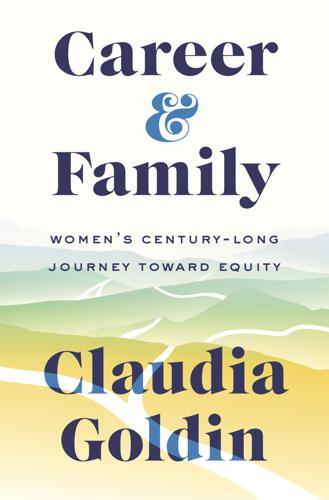
Career and Family: Women’s Century-Long Journey Toward Equity
by
Claudia Goldin
Published 11 Oct 2021
This has been the first major economic downturn during which the care sector will determine the fate of the economic sector. It wasn’t always that way in major downturns. But it is now because women are almost half the total US labor force. The Great Depression of the 1930s had far worse unemployment and far greater loss in economic output than the recent pandemic. Beginning in 1935, the Works Progress Administration (WPA) of the New Deal set up day nurseries for the children of low-income families age two to four. The program was multipronged. It ensured that the poorest and most vulnerable Americans would receive nutritious meals and health care and were taught basic skills. It employed teachers and school nurses who had been furloughed.
…
See also gender–related entries Women and Their Bodies: A Course, 138 Women’s Bureau surveys, 94, 98–103, 253–54, 276n98, 277n101 women’s movement, 31, 111 work: greedy, 3, 9–13, 12, 16–17, 218, 225; hours of (see hours of work); remote (see remote work; work from home); structure of (see structure of work); transforming, 216–18; white-collar (see white-collar workers). See also careers; employment; labor force work from home, 142, 203, 219–20, 223, 226–30, 235, 236–37, 297n226, 298n230 working conditions: in greedy work, 9–13; sex discrimination and, 151–53; unsafe and unclean, 72; in white-collar work, 71–72. See also hours of work Works Progress Administration (WPA), 231 World War I, 18 World War II, 18, 75–76, 90, 92, 232 Young, Robert, 196
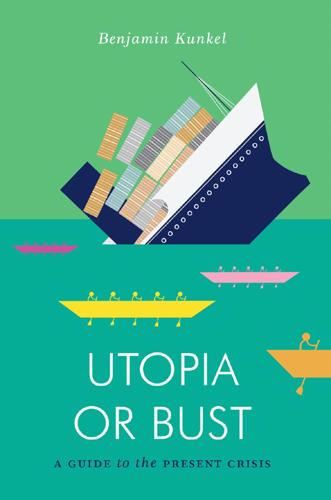
Utopia or Bust: A Guide to the Present Crisis
by
Benjamin Kunkel
Published 11 Mar 2014
No one capable of doing anything economically valuable need be a charity case in receiving a living wage. Article 3 would stipulate the state’s responsibility for achieving full employment. The most traditional object of public employment is public works of the kind associated with the Work Progress Administration. Between 1936 and 1939, the WPA spent about 2 percent of GDP per year in employing two and half million people to build over 4,000 schools and 130 hospitals, and to repair or pave 280,000 miles of road. The stimulus of the American Recovery and Reinvestment Act has been, by contrast, timorous and wasteful.
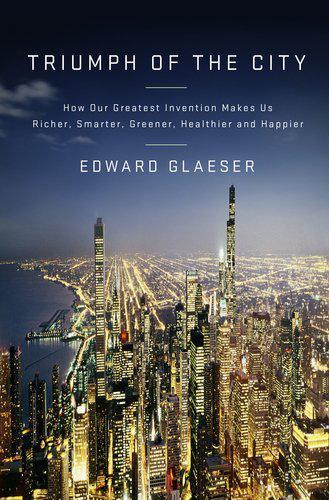
Triumph of the City: How Our Greatest Invention Makes Us Richer, Smarter, Greener, Healthier, and Happier
by
Edward L. Glaeser
Published 1 Jan 2011
Wright was laid off when the Great Depression drastically reduced the business of Chicago’s mail-order houses, and he began a peripatetic stream of jobs, selling life insurance on commission, cleaning streets, digging ditches, and eventually working for the Michael Reese Hospital. He apparently got that job because he had caught the eye of the wife of the great urban sociologist Louis Wirth. She also got him work writing the history of Illinois for the New Deal Works Progress Administration. He moved to New York in 1937, working on the WPA publication New York Panorama, which remains a wonderful description of big-city living. In 1938, the year after he came to New York, he won a $500 prize for a short story. His first book, a collection of stories called Uncle Tom’s Children, was published by Harper and Company.
…
House of Lords: Routledge, Cains. 79 Carlos Slim ... dry goods store: Mehta, “Carlos Slim”; Carlos Slim Helú, biography of, www.carlosslim.com/biografia_ing.html. 79 “in a regime of ignorance”: Stigler, Organization of Industry, 206. 80 The great African-American writer... economic opportunity: Rowley, Richard Wright, 4 (birth), 40 (final move to Memphis—he had lived there briefly earlier), 48-49 (move to Chicago). 80 “I headed north ... beneath the stars”: Wright, Black Boy, 285. 80 In Chicago ... to do some writing: Rowley, Richard Wright, 55-60. 80 Even more important ... “help you to write”: Wright, “I Tried to Be a Communist.” 80 Wright was laid off... Louis Wirth: Rowley, Richard Wright, 62-68. 80 She also got him work ... Works Progress Administration: Ibid., 108-9. 81 e moved to New York ... big-city living: Ibid., 124 (move), 144 (Panorama). 81 In 1938 ... Harper and Company: Ibid., 138. 81 Guggenheim Fellowship to write Native Son: Ibid., 164. 81 A Southern sharecropper ... $445 a year: Braunhut, “Farm Labor Wage Rates in the South,” 193. 81 A black worker ... $5 a day: Raff and Summers, “Did Henry Ford Pay Efficiency Wages?”
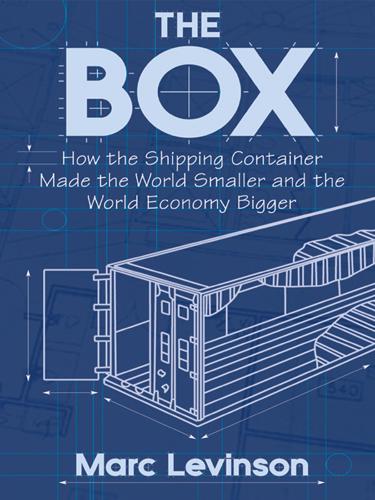
The Box: How the Shipping Container Made the World Smaller and the World Economy Bigger
by
Marc Levinson
Published 1 Jan 2006
McLean Trucking Company opened for business in March 1934, with McLean, still running the service station, as the sole driver. Soon after, family ties helped once more when a local man agreed to sell McLean a used dump truck on installments of three dollars a week. With the truck, McLean won a contract to haul dirt for the Works Progress Administration, a federal public-works program that at one point employed more than eleven hundred people in Robeson County. Even after hiring a driver, McLean earned enough to buy a new truck to haul vegetables from local farms. According to a much repeated tale, one trip found McLean so poor that he couldn’t afford to pay the toll at a bridge along the way; he left a wrench with the toll collector as a deposit, redeeming it after selling his load in New York.4 This rags-to-riches tale fails to do justice to McLean’s immense ambition.
…
.: culture of; and flat rates; McLean purchase of; move of to New Jersey; ships of; shipyard of; and subsidies. See also McLean Industries; Pan-Atlantic Steamship Corporation; Sea-Land Service Weldon, Foster Wellington, New Zealand Westmoreland, William wharves; vertical piers Whirlpool Corporation whiskey shipments Whitehall Club White Star Line wholesaling Winston-Salem, NC Works Progress Administration World Bank Wriston, Walter Xerox Corp. Yokohamajapan Yom Kippur War York, PA Younger, Kenneth Zim Line
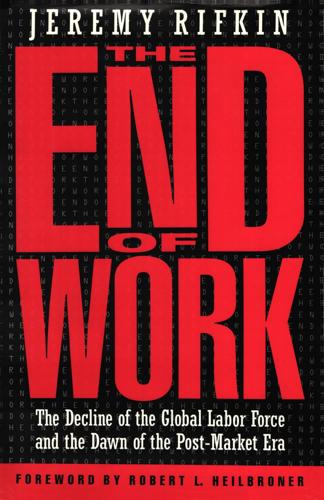
The End of Work
by
Jeremy Rifkin
Published 28 Dec 1994
The pent-up demand of the people is very great and if we can release it on so broad a front, we need not fear a lagging recovery."47 The NIRA was followed by the Civil Works Administration in 1933 and 1934, which found jobs for more than 4 million unemployed workers. 48 In 1935 Roosevelt launched a still more ambitious job creation effort-the Works Progress Administration, or WPA. The aim of the WPA was to stimulate immediate consumer purchasing power by initiating what the Roosevelt administration called "light projects," programs that were labor-intensive, cost little to implement, and could be completed quickly. The idea was to use more manpower than materials and machinery and to get paychecks in the hands of as many laborers as possible, as quickly as possible.
…
(Willhelm), 79 Wilkinson, George, 195 Wilkinson, John, 123 Willhelm, Sidney, 77, 79, 80 Williams, Lynn, 224, 230 Wilson, William Julius, 76 Winpisinger, William, 8, 135 Womack, James, 94-95, 96, 99,100 Woolridge, Charles, 45 Workforce college graduates in the, 172 creation of the knowledge class, 174-76 creation of new cosmopolitans, 172-77 decline in wages for the, 168, 170 de-skilling of the, 182- 86 example of how trickle-down technology does not work, 165-66 impact of de-unionization on the, 168 impact of globalization on the, 169 impact of restructuring on middle management, 7, 170-72 part-time jobs for, 167-68 statistics on unemployment! underemployed, 166-67 two-tier system, 190- 94 violence, 196 Works Progress Administration (WPA),30 Workweek, reasons for an increase in hours in the, 223 Workweek, shortened historical development of, 221-23 labor's view of, 229-30 need for management to give in to, 229-33 public's interest in, 233 - 35 recent demands for, 224-27 share the work movement and, 26-29 women and, 234 World fairs, 48-49 World Labour Report, 201 Wyss, David, 34 Xerox, 148 XLAYER,114 Young, Jeffrey, 9 Youth violence, 209-11 Zaire, third/volunteer sector in, 283 Zalusky, John, 229-30 Zenith, 204-5 Zhirinovsky, Vladimir, 214-15 Zuse, Konrad, 64
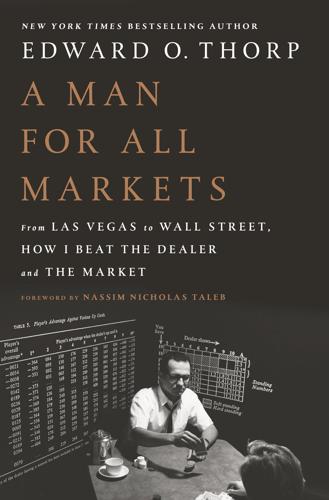
A Man for All Markets
by
Edward O. Thorp
Published 15 Nov 2016
For the rest of my life I would meet Depression-era survivors who retained a compulsive, often irrational frugality and an economically inefficient tendency to hoard. Money was scarce and no one scorned pennies. Seeing the perspiring WPA workers in the streets (created by presidential order in 1935, “Works Progress Administration” was the largest of FDR’s New Deal programs to provide useful work for the unemployed), I borrowed a nickel and bought a packet of Kool-Aid, from which I made six glasses that I sold to them for a penny each. I continued to do this and found that it took a lot of work to earn a few cents.
…
As full-time and part-time unemployment rates continued to climb, unemployment insurance was repeatedly extended. This is good to the extent it is needed, but it would seem to be in the public interest to employ as many of those idle beneficiaries as possible in doing useful work. Programs like the Works Progress Administration (WPA) and the Civilian Conservation Corps (CCC), which I remember from my childhood, built roads, bridges, and public works during the 1930s, and the improvement in our infrastructure benefited us all for decades. The real estate industry got its political handout. First-time homebuyers got an $8,000 fully refundable tax credit—“fully refundable” means you can apply for and get the $8,000 check even if you never paid a penny of tax in your life.
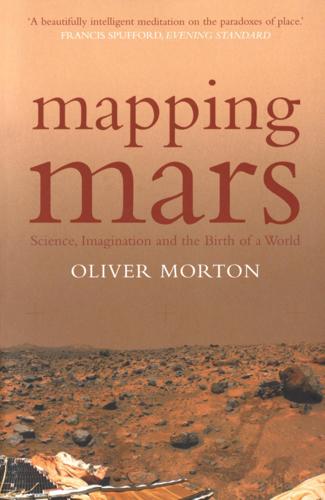
Mapping Mars: Science, Imagination and the Birth of a World
by
Oliver Morton
Published 15 Feb 2003
Plot every point on your map according to measurements made with respect to things in this well-defined network and it will be highly accurate. If, unlike Holland, your country is large, mountainous, and only sparsely supplied with steeples, setting up a reliable network in the first place can be hard work—the United States wasn’t properly covered by a single mapping network until the 1930s, when abundant Works Progress Administration labor was available to help with the surveying. But the principle of measuring the angles between lines joining landmarks has been used in basically the same way all over the Earth. Two problems make the mapping of other planets different, one conceptual, one practical. On Earth, experience allows you to know what the features you are mapping are: Hills, valleys, forests, and so on are easily recognized for what they are.
…
See Mars (ocean) Olympus Mons, 44, 45–46, 47–48, 96, 99, 110, 115n, 137–38, 140, 146, 179 difficulties involved in representing, 135 “On the Origin of Hypotheses” (Gilbert), 71, 83 Ophir, 101 O’Sullivan, Timothy, 237 Our Mutual Friend (Dickens), 9 Out of the Cradle (Hartmann/Miller/Lee), 289 Oyama, Vance, 300 Pacific Edge (Robinson), 176 Paine, Thomas, 238, 260, 272 Panetta, Leon, 253–54 Pardee, Joseph Thomas, 190–91 Parker, Tim, 184–88, 200–206, 213, 228, 234, 298 Pavonis Mons, 98, 102 Penrose, Roger, 213n Pesek, Ludwig, 130, 319 Phlegra Montes, 123 Pieri, David, 164, 188 Pigwad (Planetary Interactive GIS-on-the Web Analyzable Database), 240 Pilcher, Carl, 67–68, 70 Pioneer Astronautics, 273 Pioneer mission, 61 “Pioneering the Space Frontier” (Paine), 246, 260 Place and Placelessness (Relph), 222–23 Planetary Explorer program, 65 Planetary Society, 30 Planetfest, 32, 35–36, 42 Planum Australe, 104, 105–6 Pohl, Frederik, 173–75, 178, 179 Pollack, James, 46, 100, 121, 158–60, 304 Poor, Kim, 92, 131 Poss, Richard, 132, 133 Poundstone, William, 100 Pournelle, Jerry, 178 Powell, John Wesley, 79, 148 Proctor, Richard, 14 Protonilus Mensae, 104, 186 Ptolemaus (crater), 2 Rainbow Mars (Niven), 213n Raine, Craig, 19 RAND Corporation, 23, 24 Rawlings, Pat, 32, 134, 290 Reagan, Ronald, 185 Red Mars (Robinson), 36, 108n, 177, 179, 186, 289, 319, 322 Red Planet (film), 290, 290n Red Planet (Hemlein), 178 “Red Star: The First Bolshevik Utopia, The” (Bogdanov), 178 Relph, Edward, 222–23 Return to Utopia (Rawlings), 32 Robinson, Kim Stanley, 36, 108n, 173–83, 205n, 213n, 257n, 281, 289, 308, 310–11, 319, 322, 323 Roddenberry, Gene, 264 Romeo and Juliet (Shakespeare), 324–25 Royal Astronomical Society, 12 Royal Greenwich Observatory, 10–11 Sacks, Oliver, 19 Sagan, Carl, 30, 42, 46, 95, 96, 100, 108n, 158, 197, 227, 234, 240, 257, 268, 303, 304–5 San Juan Mountains (Colorado), 91 Sanchez, Anthony, 53, 55 Sand Dunes, Carson Desert, Nevada (O’Sullivan), 237 Sands of Mars, The (Clarke), 219, 303 Saturn, 131, 132, 133 Saturn V, 31, 316 Saunders, Steve, 188 Schama, Simon, 324n Schiaparelli, Giovanni, 15–16, 21, 44, 96, 100, 101n, 102 Schiaparelli (crater), 102–3 Schrödinger, Irwin, 301 Schmitt, Harrison, 57 Schubert, Frank, 275, 276 Schultz, Peter, 144–45, 150, 222 Science (journal), 68, 190, 210, 211, science fiction, 17, 36, 93, 135–36, 173–83, 289–90, 319–23 and Martian giganticism, 108n See also individual authors Scott, Dave, 112–16, 115n, 117, 150, 167–72, 324 Scott, Robert Falcon, 30 Scout missions, 287 Secchi, Father Angelo, 14, 155 Secchi Continent, 14 Secret of Life, The (McAuley), 271n Seed, David, 175 Service, Robert W., 141 Shakespeare, William, 324–25 Sharp, Bob, 24, 163, 164 Sheffield, Charles, 180 Shergotty meteorites, 139, 247 Shelley, Percy, 173 Shiner, Lewis, 289 Shirley, Donna, 61n Shoemaker, Gene, 84–92, 95, 148, 150, 162, 254, 324–25 Shultz, Peter, 254 “Significance of the Frontier in American History, The” (Turner), 263, 264 “Significance of the Martian Frontier, The” (Zubrin), 265 Silent Spring (Carson), 300 Simud Vallis, 96, 102 Sinai Planum, 101 Sleep, Norm, 122–23, 124, 313 Smith, Brad, 40, 42 Smith, David, 63–64, 65, 69–70 Smith, Peter, 69, 100, 233–34, 235, 236, 239, 239, 315n Smithsonian Air & Space Museum (Washington, D.C.), 322 SNC meteorites, 249 Snell, Willebrord, 25 Snyder, Gary, 180n Soderblom, Larry, 42, 166–67 Solis Lacus, 16 Solis Planum, 101, 102 South Spot (Arsia Mons), 44, 46, 98 Space Shuttle, 60–61 Space Task Group, 60 “Spell of the Yukon, The” (Service), 141 Sputnik, 85 Squyres, Steve, 119 Star Trek, 93 Stoker, Carol, 244, 246, 263, 276, 293 Storm, Bob, 196 Stranger in a Strange Land (Heinlein), 19, 156, 302n Strickland, Ed, 134n Sturgeon, Theodore, 319 Surface of Mars, The (Carr), 163 Syria Planum, 101 Syrtis Major Planum, 13, 14, 15, 103 See also Hourglass Sea Taber, Frank, 324–25 Tanaka, Kenneth, 112, 211, 240 Teapot Ess, 86 Tempe Terra, 186 Tennyson, Alfred Lord, 18, 48 Terra Meridiani, 102, 143, 203, 205–206, 232, 287 Terraforming: Engineering Planetary Environments (Fogg), 315 Tharsis, 15, 46, 98–101, 112, 145, 179 Titan, 316 Tithonium Chasma, 101 Tiu Vallis, 41–42, 96, 102 Tolkien, J.R.R., 309 TOPS probes, 61 “Transit of Earth” (Clarke), 319 Traveler’s Guide to the Solar System, The (Hartmann/Miller), 130–31, 136 See also Grand Tour, The Triton, 96, 214 true polar wander, 144–45 Truman, Harry, 264 Tucson Mafia, 196, 209 Turner, Frederick Jackson, 110–11, 263–64 Turner, J.M.W., 131, 132 Turrell, James, 73, 297 Tyrrhena Patera, 103 Tyrrhenian Sea, 15 “Under the Surface” (Brown), 153 Understanding Comics (McCloud), 116 United States Geological Survey (USGS), 40, 84, 88 Apollo missions, contribution to, 167 Gilbert building, 93, 94, 94n given Mars mapping role, 50 as link between Mars and the West, 85–88 Mars Digital Image Mosaic, 57 1:15,000,000 maps, 3–4 1:5,000,000 maps, 57 Pigwad, development of, 240 University of Washington Department of Nuclear Engineering, 254 Utopia Planitia, 2, 16, 104, 119–21 Valles Marineris, 46–47, 57, 101, 101n, 102, 121, 135, 143, 169 Grand Canyon, compared with, 146–48 influence on fictional landing sites, 289–90 “Value of Outrageous Geological Hypotheses, The” (Davis), 184 van Hoogstraten, Samuel, 49 Van Sant, Tom, 297 Vastitas Borealis, 97, 119 Venus, 81, 109n, 170, 214, 236n, 304 Verne, Jules, 295 Victoria, Queen, 58n Viking (missions), 2, 28, 39–40, 61, 184, 234n, 322 color cameras, 99–101, 228–30 crater pictures, 76 exobiology experiments, 301–2 landing sites, 227–28 picture archive, 193, 198, 234 replica lander, 322 success of, 61 Thomas Mutch Memorial Station, 322 “Viking Results—The Case for Man on Mars, The” (Clark), 243, 245 Vishniac, Wolf, 247, 300 von Braun, Wernher, 132, 260 Von Braun Planitia, 275 Voyage (Baxter), 289 Voyage to the Red Planet (Bisson), 289 Voyager, 214 Wagner, Richard, 267 Wallace, Alfred, 211–12 Wanderer Above the Sea of Mist (Friedrich), 134–25 Watchmen (Moore/Gibbons), 134–37 Watkins, Carleton, 235, 237 Watson, Ian, 174–75, 178, 179 Weinbaum, Stanley, 3 Wells, H. G., 3, 17, 108 White Mars, 213 White Mars (Penrose/Aldiss), 213n Wild Shore, The (Robinson), 173, 176 Wilhelms, Don, 119 Williamson, Jack, 178 Wise, Donald, 138 “Work of Art in the Age of Mechanical Reproduction, The” (Benjamin), 128 Works Progress Administration, 25–27 Woude, Jurrie van der, 41, 58–59 Wu, Sherman, 63 Xanthe Terra, 41–42, 102 Xiaotong, Fei, 321 Zelazny, Roger, 319 Zubrin, Robert, 259–72, 281, 289, 293, 305, 305n, 308–10, 317, 322

The Ones We've Been Waiting For: How a New Generation of Leaders Will Transform America
by
Charlotte Alter
Published 18 Feb 2020
Three years into the Great Depression, Franklin Delano Roosevelt embarked on a series of government interventions in the economy designed to protect Americans from the ravages of the free market: the New Deal. He reorganized the banks through the Emergency Banking Act, put three million men to work planting an astonishing three billion trees in the Civilian Conservation Corps, and created millions more temporary government jobs through the Works Progress Administration and other new agencies. He regulated Wall Street for the first time by establishing the Securities and Exchange Commission and legalized collective bargaining—the key to union power—through the National Labor Relations Act. He created universal pensions (also known as Social Security) and ensured federal government protections for orphans and the disabled.
…
See presidential election 2012, reactions to and impact of Uber, 99 underemployment, 96 Underwood, Lauren, xvii, xxi, 14–17, 48, 198, 206, 230, 270 admissions criteria at University of Michigan, impact of, 49 Affordable Care Act implementation and, 109–11 attend Reverend Wright’s Trinity United Church of Christ, 15–17 campaign for and elected to House of Representatives, 230–32, 241–42 finding living arrangements in Washington D.C., 271–72 first year in Congress, accomplishments during, 277 Green New Deal not cosponsored by, 279 in high school, 14–15 as intern for Obama’s Senate office, 82–83 9/11 terrorist attacks and, 14, 15 at orientation, for freshman to Congress, 267–68 at Women’s March, 198 Underwood, Lindsey, 15, 16 unemployment rates, during Great Recession, 96 Vanity Fair, 253, 266 Vaughan, Catherine, 208–9 Victor, Tommy, 111 Vietnam, 67 Violence Against Women Act, 30–31 Violent Crime Control and Law Enforcement Act (1994), 30–31 Virginia Tech shooting, 53 Volpe, John Della, 221 voter ID laws, 152–53 voter suppression, 152–53 voting behavior, factors affecting, 151–53 Wall Street Journal, The, 208 War on Terror, 31, 63–77 Buttigieg and, 73–77 Crenshaw’s service and belief in, 63–67 draft, impact of lack of, 67–68 enlistment, income and geographical segregation in, 68 Iraq invasion, 67 isolationism of millennials, 73 lack of Ivy League participation in, 73, 74 Rose and, 18–19, 69–72 skepticism of millennials with, 67, 72 statistics of casualties in Iraq, 67 suicide rates of veterans, 72–73 Warren, Elizabeth, 117, 194, 286 Washington Post, The, 170, 252, 261–62, 280, 283 Watergate Babies, xviii, 276 West, Kanye, 115 West Wing, The (tv show), 5 West Wing Weekly, 284 White, Micah, 202 Whitmer, Gretchen, 224, 237 Wikipedia, 55 Winkler, David, 27 Winston, Braxton, xxi, 45–46, 121–24, 131–32, 136–38 affordable housing and, 136–37 Charlotte protests and, 126–28 elected to Charlotte City Council, 136 at Obama speech, 122 policing and, 137–38 Scott shooting and, 125–26 Wirth, Timothy, 276 women candidates for Congress, in 2018, 226–45 college education and, in baby boom generation, 46–47 raising children while working full-time, 32 Women’s March and, 198–201 women’s rights movement, 29 Women’s March, 198–201 Works Progress Administration, 217 World War II, 67, 68 Wright, Jeremiah, 16, 88 “Yes We Can” speech, of Obama, 87 YouTube, 57, 58 Zeldin, Lee, 158 zero tolerance policies, 37–38, 119 Zimmerman, George, 118 Zuckerberg, Mark, xv, 4, 59, 60, 197, 227 Zucotti Park. See Occupy Wall Street ABCDEFGHIJKLMNOPQRSTUVWXYZ ABOUT THE AUTHOR Charlotte Alter is a national correspondent for TIME, covering the 2016, 2018, and 2020 campaigns, youth social movements, and women in politics.
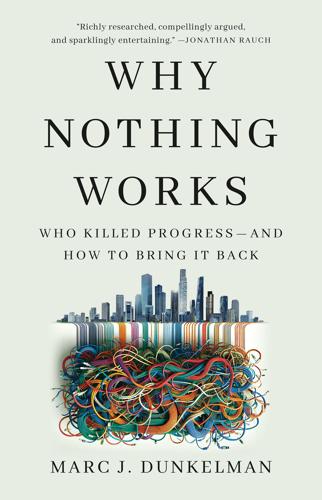
Why Nothing Works: Who Killed Progress--And How to Bring It Back
by
Marc J Dunkelman
Published 17 Feb 2025
And while, in other realms of the New Deal, Jeffersonianism would carry a brighter torch, in this corner of Roosevelt’s agenda, Hamiltonianism won the day. Lilienthal, allied with a third member of the TVA’s board, managed to sideline Arthur Morgan. And much as it is often overlooked among the alphabet soup of New Deal programs that served the nation as a whole—the Civilian Conservation Corps, the Civil Works Administration, the Works Progress Administration, the Public Works Administration, the Social Security Administration—the TVA became arguably Roosevelt’s most radically transformative reform. Perhaps never in American history has a single civilian bureaucracy had such a deep and transformative impact on any part of the country. And the impact has lasted.
…
Representative Wright Patman, a Democrat representing a district in East Texas, would come to champion a widely publicized bill to tax chain stores in ways that advantaged mom-and-pop competitors—a bill that Roosevelt’s aides opposed in the name of efficiency.108 Senator Hugo Black, the Alabama Democrat whom Roosevelt would eventually nominate to the Supreme Court, was of the same mindset—more inclined to push power down and out than up.109 And that Jeffersonian strain reestablished itself slowly but assertively, eventually steering the movement to a place very different from what the boys with their hair ablaze might have preferred. Hamiltonianism’s lost momentum was evident in a variety of setbacks. The administration’s plan to impose the TVA model on other parts of the country—seven “mini-TVAs”—petered out after facing heavy opposition from the nation’s utilities. The Civilian Conservation Corps, the Works Progress Administration, and the Home Owners’ Loan Corporation were all eventually discontinued.110 But if the United States seemed poised to repeat the pattern that followed the country’s triumph in the First World War—if the electoral setback Democrats suffered during the 1938 midterms suggested that the country was ready, once again, to “return to normalcy”—two crucial circumstances intervened.

Democracy at Work: A Cure for Capitalism
by
Richard D. Wolff
Published 1 Oct 2012
Finally, consider the mutual gains from a possible alliance between supporters of WSDEs and supporters of a “green” New Deal. They might press jointly for a federal jobs program addressing both their goals. Both of them could likewise join those concerned with other specific outputs a federal jobs program might target (for example, child and elder care, cultural enrichment of the sort achieved by the Works Progress Administration in the 1930s, and so on). The political force of such an alliance might approach that of the alliance among the CIO and socialist and communist parties in the 1930s, which won the most massive federal jobs program in US history, filling more than twelve million jobs between 1934 and 1941. 11.2 Alliances with Cooperative Movements There is a long history in the United States and in many other countries of cooperative enterprises—including worker or producer co-ops.
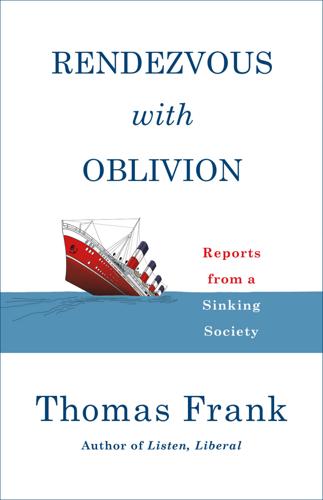
Rendezvous With Oblivion: Reports From a Sinking Society
by
Thomas Frank
Published 18 Jun 2018
* * * In walking around these small towns, it occurred to me that nostalgia must come naturally here. The greatness of the past and the dilapidation of the present are obvious with every step you take: the solid, carefully constructed buildings from the Benjamin Harrison era that are now crumbling, the grandiose swimming pool built by the Works Progress Administration under the New Deal. There is nostalgia in Marceline’s impressive Disney Hometown Museum, which carefully documents the town’s relationship with the filmmaker (the folks in town were gracious enough to open the museum, which is closed in winter, especially for me). Nostalgia also in the collection of Harry Truman memorabilia that filled the parlor of the century-old house where I stayed during my visit.
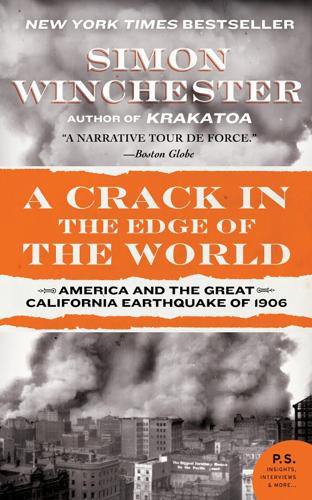
A Crack in the Edge of the World
by
Simon Winchester
Published 9 Oct 2006
Hammond, 1906 Sonoma County Emergency Operations Plan. Santa Rosa, CA: Sonoma County Department of Emergency Services, 2000 William Lettis and Associates. Seismic Hazard Evaluation: Proposed Portola Valley Town Center, 765 Portola Road, Portola Valley, CA. Walnut Creek: William Lettis, 2003 Works Progress Administration. The WPA Guide to California: The Federal Writers’ Project Guide to 1930s California. New York: Pantheon Books, 1984 A Glossary of Possibly Unfamiliar Terms and Concepts Alquist–Priolo This term, used with easy familiarity by many Californians today, refers to the 1972 Earthquake Fault Zoning Act, which was sponsored by the Democrat state senator for Santa Clara, Alfred Alquist, and the Republican state assemblyman for Ventura, Paul Priolo.
…
* The legislators have evidently held mixed feelings about the murals, first displaying them in the capitol rotunda, then demoting them to storage, finally bringing them back – but this time to a smaller rotunda in the basement, where they will probably remain for good. * Such as the Works Progress Administration and the Federal Writers’ Project of the Depression years. Had the artists of the time not been supported, many would likely have starved. Such was not the case in San Francisco in 1906: artists could always push off to places less likely to be ruined, and evidently did. * These were the Chronicle and the Mills buildings and the Merchants’ Exchange: all three would be badly damaged in 1906

The Rise and Fall of the Neoliberal Order: America and the World in the Free Market Era
by
Gary Gerstle
Published 14 Oct 2022
FDR and the New Dealers unleashed the power of the central state in ways rarely done during peacetime. Some of this work focused on a highly visible overhaul of the country’s economic infrastructure. New Dealers built countless roads, bridges, airports, dams, schools, and libraries. One jobs program, the Works Progress Administration, hired 5 million to work on these and related projects. The commitment to public works was so extensive that the New Deal even enlisted artists to adorn the interiors of hundreds of government buildings. Colorful, often arresting, murals of Americans at work and at play, cooperating and in conflict, began to sprout everywhere on these interiors, from the majestic walls of the Department of Interior in Washington, DC, to innumerable plain post offices and schools in cities and towns across the country.
…
autoworkers strike (1936–1937), 121–22 classical liberalism of, 6–7 congressional majorities under, 287–88 election wins, 19–20, 21–22 faith and politics, 27 Great Depression impact on, 82 Johnson admiration for, 53 Keynesianism of, 22–23 new liberalism of, 83–84, 86 racial injustice tensions, 49, 286–87 Reagan admiration for, 116 realpolitik and, 27 Soviet Union and, 35–36 Roosevelt, Theodore, 80–82 Röpke, Wilhelm, 86–87, 92–93 Rothbard, Murray N., 102–3, 109 Rougier, Louis, 86–87 Rubin, Robert, 157–58, 224–25, 258 Rumsfeld, Donald, 196, 197, 205 Russian Revolution (1917), 10, 29, 82–83 Salomon Brothers, 111–12 San Francisco General Strike (1934), 23 Sanders, Bernie, 1, 230, 254–62, 278, 279 Santelli, Rick, 240 Saudi Arabia, 60 Savio, Mario, 8–9, 327n.60, See also Free Speech Movement Scalia, Antonin, 124 Schneider, Steven, 60–61 Schumer, Charles, 178 Second Reconstruction, 53–54 Second Wave economy, 160–61 Securities Act (1933), 22 Securities and Exchange Commission (SEC), 22, 217 Securities Exchange Act (1934), 22 securitization process of mortgages, 212 September 11, 2001 attacks, 189, 191–205 Shiite Muslims, 203 The Shock Doctrine (Klein), 201 Silicon Valley, 104–5, 164, 171–73, 176–77, 206–7 Simena, Kyrsten, 287–88 Simon, William, 111–12 sit-down strikes (1936–1937), 24 Sklar, Martin, 103 slaves/slavery legacy, 79 Smith, Adam, 76–77, 202 social democracy, 6–7, 34–35 social insurance, 81–82, 85 social security, 25, 43–44, 45, 146, 205–6, 238–39, 293 social welfare, 63, 124–25, 179, 226–27 socialism, 30–31, 79–80. see also radicalism and Sanders, Bernie Souter, David, 182 Soviet Union atomic bomb detonation, 37 dissolution of, 141–46 five-year plan of Stalin, 31 Great Depression impact on, 31–34 Khrushchev and, 44–45, 69 Kitchen Debate, 44–45 neoliberalism and, 10, 11 Reagan and, 116–17 Red Scare, 37 socialism of, 30–31 Stalin, Joseph, 31, 33–34 US domestic policy and, 29 US military build-up against, 129–32 US rivalry, 49–50 World War II impact on, 33–35 Sowell, Thomas, 133–34 Spencer, Herbert, 80 “stagflation,” 2. see also Misery Index Stalin, Joseph, 31, 33–34 steel industry, 62 Steffens, Lincoln, 168–69 Stiglitz, Joseph, 158–59, 165, 171 Strategic Defense Initiative, 129–30, 142 structural racism, 283, 287 Students for a Democratic Society, 100 subprime mortgages, 212–13, 214, 217 Summers, Lawrence, 158–59, 215–16, 258, 284 Sunni Muslims, 199–200, 203 Sunrise Movement, 278–79 Sunstein, Cass, 102 Taft, Robert, 28, 38–41 Taliban, 193 Tarbell, Ida, 168–69 Taylor, Keeanga-Yamahtta, 264 Taylor, Frederick Winslow, 31 Tea Party, 230, 240–43 Telecommunications Act (1996), 164, 165–73, 181 Tennessee Valley Authority, 85 Thatcher, Margaret, 132–33, 177–78 The Apprentice (TV show), 244 Thiel, Peter, 160 Third Wave economy, 160–61, 162–63, 170–71 Third World, 50, 139, 141 thought collective, 9, 73–74, 87–88 Thurmond, Strom, 117–18 Thurow, Lester, 137 A Time for Truth (Simon), 111–12 Time Magazine, 131 Time Warner, 172 Tlaib, Rashida, 279 Toffler, Alvin, 160–61, 162–63 totalitarianism, 10–11, 35–36 tough-on-crime bills (1986, 1988), 131 trade unions, 98–99, 146–47. see also labor unions and organized labor Trans-Pacific Partnership (TPP), 271 Treaty of Detroit, 24–25, 41–42, 56–57, 112 Treaty of Versailles, 30 Troubled Asset Relief Program (TARP), 220–21 Truman, Harry, 24–25, 35–36, 40–41 Trump, Donald authoritarianism of, 2–3, 270, 277–78, 289 Covid-19 pandemic, 272, 279–81 election loss of, 288–89 election of, 1, 265–67 ethnonationalism of, 1, 208–9, 243–44, 275–76, 277 populism of, 1, 208–9, 243–44, 248, 251, 282–83 presidency of, 268–77 rise of, 230, 243–51 Tsongas, Paul E., 136–37, 138, 150–51 Turner Broadcasting System, 172 Twitter, 172–73, 279, 292–93 two-income households, 147 Uber, 238–39, 292–93 UN Security Council, 194–95 The Underclass (Auletta), 131–32 underclass concept, 131–32 undocumented migrants, 275 unemployment insurance, 22–23, 43–44, 45, 146 unemployment among minorities, 130–31 unemployment rates, 21, 150–51, 221–22 United Auto Workers (UAW), 24–25, 32–33, 41–42 corporate decision-making, failure to get access to, 24–25 health care plan, 24–25 universalism, 30 US Constitution, 75–76, 98 US Justice Department, 51 Vanderbilt, Cornelius, 168–69 Viacom, 172 Viet Cong, 55 Viet Minh, 54–55 Vietnam War, 48, 54–56 Voting Rights Act (1965), 53–54 Walker, Scott, 235 Wall Street Journal, 109–10, 275 Wall Street reform, 173–78 Wallace, George, 117–18, 119 Wallace, Henry, 35–36 war on crime, 185 war on drugs, 184–85 Warren, Earl, 50–51, 119–20, 123–24 Warren, Elizabeth, 254–55, 279 Washington, George, 223, 224–25 Washington Center for Equitable Growth, 278–79 Washington Consensus, 9, 156–57, 177 Washington Mutual, 220–21 Washington Post, 108–9 Watergate scandal, 64–65 Wealth and Poverty (Gilder), 109, 162–63 weapons of mass destruction (WMDs), 193, 194, 195 Weisselberg, Allan, 247 Weyrich, Paul, 108–9 White, Micah, 251 White Collar (Mills), 95–96 white Protestant voters, 20–21 white supremacy, 27, 48–49 white working-class distress, 231–34 Whole Earth Catalog, 103–4 Whyte, William H., 95–96 Williams, Ashley, 264 Williams, William Appleman, 103 Wilson, Woodrow, 30–31, 53, 80–82 Wired, 162–63 Wolfowitz, Paul, 195–96 Works Progress Administration, 21–22 World Bank (WB), 9, 57–58 The World Is Flat (Friedman), 206–7 World Trade Organization (WTO), 156–57, 177, 244–45 World War I, 9 World War II, 25, 28, 33–35, 48–49 World Wrestling Entertainment (WWE), 247–48, 249 Xi Jinping, 276 Yellen, Janet, 291 “Y2K” bug, 189–90 Yom Kippur War, 60. see also Arab Israeli War Young Americans for Freedom, 100 Zimmerman, George, 262–63
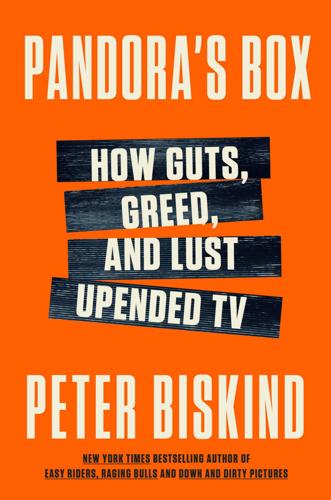
Pandora's Box: How Guts, Guile, and Greed Upended TV
by
Peter Biskind
Published 6 Nov 2023
“It was the kind of show that most people would do for two cents and we were spending what Game of Thrones spends,” Baumbach said at the time, and “we didn’t have dragons.”65 Indeed, the list was so long that Ayelet Waldman, working with her husband Michael Chabon on Hobgoblin, joked that HBO was “like the Works Progress Administration for writers.”66 The deciding factor in all these deals might have been “schmuck insurance.”67 When HBO signed a development deal with a writer, she or he was locked up. When you had as many of these deals as HBO had, they added up to millions of dollars a year, but if the alternative was being ambushed by an up-and-coming basic cable channel like AMC with Mad Men, making them look like schmucks, it was worth it.
…
“What people who don’t have”: Kevin Reilly, in discussion with the author, July 28, 2021. 65. “It was the kind of show that most people”: Kala Hoke, “Noah Baumbach Explains Why HBO Dropped ‘The Corrections,’” WNYC, March 27, 2015, https://www.wnyc.org/story/noah-baumbach-explains-why-hbo-dropped-corrections. 66. “like the Works Progress Administration”: Joe Satran, “HBO’s The Corrections Adaptation Is Dead–What Happens Now?,” HuffPost, May 2, 2012, https://www.huffpost.com/entry/hbo-the-corrections_n_1469456. 67. “schmuck insurance”: Quentin Schaffer, in discussion with the author, January 7, 2022. 68. “You can’t just pick a name”: Sue Naegle, in discussion with the author, January 27, 2020. 69.

Why Women Have Better Sex Under Socialism: And Other Arguments for Economic Independence
by
Kristen R. Ghodsee
Published 20 Nov 2018
Economists have debated job guarantees for decades, and in 2017 the Center for American Progress (CAP) threw its weight behind a proposal for a new “Marshall Plan for America,” which would create 4.4 million new jobs. The CAP proposal calls for a “large-scale, permanent program of public employment and infrastructure investment—similar to the Works Progress Administration (WPA) during the Great Depression but modernized for the 21st century. It will increase employment and wages for those without a college degree while providing needed services that are currently out of reach for lower-income households and cash-strapped state and local governments.”16 In September 2017, I attended Mass with my eighty-nine-year-old grandmother in the San Diego church I went to as a kid.

George Marshall: Defender of the Republic
by
David L. Roll
Published 8 Jul 2019
“I have never heard Adolf so full of hate, his audience quite so on the borders of bedlam,” wrote CBS correspondent William Shirer. “What poison in his voice.”5 Soon after hearing Hitler’s speech, FDR asked Hopkins to quietly travel to the West Coast and assess the production capacity of the U.S. aircraft industry. In addition to being the president’s most trusted adviser, Hopkins was also head of the Works Progress Administration (WPA), a New Deal agency whose mission was to put Americans to work on infrastructure projects. Roosevelt felt Hopkins was the right man to make recommendations to expand production under a program the WPA could help finance and implement. The president was coming to the conclusion that France and Britain were likely to capitulate to Hitler’s demands not only in Czechoslovakia but elsewhere in Europe primarily because they could not come close to matching his airpower.
…
See European and Mediterranean theaters Melby, John, 380, 384–85, 403–5, 414 Messina surrender of German and Italian troops, 274–75 Metz, France, 35, 37 Meuse-Argonne offensive, 35–50, 39, 56, 600 Mexico Pershing’s “Punitive Expedition,” 14–15 Zimmermann Telegram, 15 Miall, Leonard, 441, 443–44 Milburn, Frank, 592 Miles, Sherman, 188, 189, 347 military draft anti-draft protests, 144 to enforce partition in Palestine, 497 filibusters and amendments, 144–46 integration in the military, 147–49 legislation, 136–40, 142–44 Plattsburgh model training program, 136 registration statistics, 146–47 Selective Service Act (WWI), 15 Selective Service Training and Service Act (Burke-Wadsworth legislation), 140, 143–47 service terms, 156–62, 166–69 “military situation” as a response to requests for assistance, 313 military skill Bogotá, Colombia, 507 Cantigny, battle of, 33 Meuse-Argonne offensive, 36, 41–42, 600 preparedness and universal military training, 72–73 strategy without battlefield experience, 57–58 White Force attack simulation (1914), 8–9 military structure American civil-military relations principle, 255 Combined Chiefs of Staff, 199–204, 251–54, 314, 334, 352, 358, 368 Imperial General Staff, 199 Joint Chiefs of Staff (JCS), 199, 253, 256, 267, 313, 554–55, 568–69, 571, 573, 582–83, 587 National Security Act of 1947, 543, 563–65 Miller, Luther, 604 Milward, Alan, 478–79 Mitchell, Billy, 37 Mitter, Rana, 76 Molotov, Vyacheslav, 228–29, 230, 289, 369, 431–33, 444, 447–49, 459–60 Montgomery, Bernard, 259, 274, 304, 309, 328, 351–52, 357–58 Moran, Lord (Charles Wilson), 198, 249, 340 Morgenthau, Henry, Jr., 129–31, 135, 313–14 Morrow, Dwight, 59 the motion picture industry’s role in World War II, 301–2, 362 Moulton, Harold, 462 Mountbatten, Lord Louis (“Dickie”), 220, 225–27, 241, 249, 273 Mount McKinley, 563 Munich agreement, 109, 119 Munitions Assignment Board, 202–4 Munson, Homer, 409 Murphy, Charles, 569 Murphy, Robert D., 260 Mussolini, Benito, 103, 109, 120, 122–23, 267 Myers, Francis, 499 Myers, Roy, 41–42 Nagasaki, Japan bombing, 370, 371 Nagato, 177 Nagumo Chuichi, 178, 183, 186, 187, 215 Narinsky, Mikhail, 448 Nathan, Robert R., 265 National Association for the Advancement of Colored People (NAACP), 148 National Defense Act of 1916, 14 National Defense Act of 1920, 64–65, 106 National Guard, 14 National Security Act of 1947, 543, 563–65 National Security Council (NSC), 496, 575–77 National War College, 77–78, 82 Neely, Matthew, 105 neutrality laws, 119, 123, 135 New Deal, 100, 103 Civilian Conservation Corps camps, 103 Works Progress Administration (WPA), 108 The New York Times, 503 Nicholas II, Czar, 12, 18 Nichols, Donald, 556 Nicholson, James, 546 Niles, David, 489, 499–500 Nimitz, Chester, 280, 297 IX Corps, 579 Nixon, Richard, 457–58 Nobel Peace Prize, 597–99 Nomura Kichisaburo, 178, 188, 189 Normandy invasion, 328–37, 336, 338–39 North Africa, 231–34, 236–37, 250–60, 268 North Atlantic Treaty Organization (NATO) first general suggestion of, 534 formation of, 534 start of, 477 Vandenberg Resolution as the precursor of, 520, 533 Nourse, Edwin, 447, 456–57 Noyes, David, 527–28, 529–30 Obama, Barack, 599 O’Brien, Margaret, 302 O’Connor, Basil, 544–46 October surprise, 531 Olson, Lynne, 116–17, 137 101st Airborne, 351 175th Rifle Regiment of the First Ukrainian Army, 361 open warfare, 19 Operation ANVIL (later Operation DRAGOON), 307, 309–10, 317–18, 334, 337–40 Operation BOLERO, 213, 218, 224, 227–29, 234, 254 Operation DOWNFALL, 367 Operation DRAGOON (formerly Operation ANVIL), 340–41 Operation GYMNAST, 231–34, 236–37, 239 Operation Hawaii, 180 Operation OVERLORD (formerly Operation ROUNDUP), 266, 267–70, 272–74, 280–81, 284, 286–88, 290–96, 304–5, 307, 309–10, 318, 320, 328–29, 333, 336, 601–2.
…
See Page, Rose Wilson, Woodrow health concerns, 65 National Defense Act to expand the military, 14 policy of U.S. neutrality in WWI, 13–14 U.S. involvement in WWI, 15–16, 19 WWI armistice negotiations, 47, 53–55 Winn, James, Jr., 152, 262, 405, 603, 604 Winn, Molly Brown. See Brown Winn, Molly (GM’s stepdaughter) Wood, R. E., 118 Woodring, Harry, 104–7, 110–11, 118, 120–21, 139–40 Works Progress Administration (WPA), 108 World War I armistice negotiations, 47, 53–55 assassination of Archduke Franz Ferdinand, 12 Cantigny, battle of, 24–34, 27 casualties, 55–56 continuous offensive strategic plan, 35–37 Eastern Front, 18 German U-boat attacks on the Lusitania and Sussex, 14, 136 horses, starvation of, 41–42 impending Russian withdrawal, 18–19 low morale during, 18 Meuse-Argonne offensive, 35–50, 39, 56, 600 “preparedness movement,” 14–15 rapid spread of, 12 Saint-Mihiel operation, 35–38, 39 separation of U.S. forces from Allied forces, 16, 19, 22 unrestricted submarine warfare, 14–15 U.S. involvement, 15 U.S. policy of neutrality, 13–14 victory parades, 59–61 Western Front, 13, 18, 23, 49–50 World War II ABDA theater, 197, 198–99, 210 attack in the Philippines, 193–94 Battle of Munda, 306–7 Battle of the Atlantic, 307 Battle of the Bulge, 321, 350–53 Battle of the Kursk Salient, 275 Cairo meeting with Chiang Kai-shek, 285–86 combat experience, 226 concentration camps, 312–14 D-Day invasion of Normandy, 328–37, 336, 338–39 “defensive, encircling” European strategy, 250–51 Dieppe Raid, 257 economic growth in the U.S., 265 European and Mediterranean theaters, 216–17, 233, 256–57, 268, 286–87, 308–10 “Germany first” strategic doctrine, 151–52, 171, 195–96, 198, 202, 211, 214, 218, 227–29, 251, 303–4, 315, 340, 581, 595–96 Germany’s surrender, 361–62 ground troops, 170–71, 236, 250 Japan’s conditional surrender, 370–71 Kasserine Pass setback, 257–58 LSTs (landing ships that carried tanks), 293, 307–10 MAGIC diplomatic message codes, 159, 171, 172, 178, 181–82, 186, 187–91, 342–48 the Manhattan Project, 321 Marshall Memorandum, 213–23 Messina surrender of German and Italian troops, 274–75 the motion picture industry’s role in, 301–2 need for increased U.S. military spending, 129–34 Pacific theater, 200–201, 204, 227–28 Persian Gulf Command, 289 Plan Dog memorandum, 150–51, 153 Potsdam Declaration, 368, 370–71 pre-war clashes, 122–23 propaganda, 207, 211, 278, 302, 362 Rouen attack, 265 secrecy, 318–19, 342–48, 355–56 start of, 124–27 support for, 193, 278 surrender of Belgium and France, 133–34 Tehran meeting with Stalin, 288–93 Tripartite Pact, 150, 193 unconditional surrender policy, 366, 370 U.S. declaration of a multifront global war, 193 V-E (Victory in Europe) Day, 362 Victory Program, 170, 264 V-J (Victory over Japan) Day, 371–72 Yalta Conference (Argonaut), 355–56 Yamamoto Isoruku, 177–80, 186 Yergin, Daniel, 520–21 Zanuck, Darryl, 302 Zhukov, Georgy, 357, 369 Zimmermann, Arthur, 15 Zimmermann Telegram, 15 Zongren, Li, 542 ABCDEFGHIJKLMNOPQRSTUVWXYZ About the Author David L.
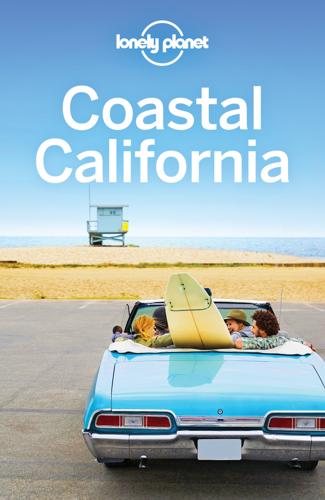
Coastal California Travel Guide
by
Lonely Planet
oCoit TowerPUBLIC ART ( MAP GOOGLE MAP ; %415-249-0995; www.sfrecpark.org; Telegraph Hill Blvd; nonresident elevator fee adult/child $8/5; h10am-6pm Apr-Oct, to 5pm Nov-Mar; g39) The exclamation mark on San Francisco's skyline is Coit Tower, with 360-degree views of downtown and wraparound 1930s Works Progress Administration (WPA) murals glorifying SF workers. Initially denounced as communist, the murals are now a national landmark. For a wild-parrot's panoramic view of San Francisco 210ft above the city, take the elevator to the tower's open-air platform. To glimpse seven recently restored murals up a hidden stairwell on the 2nd floor, join the 11am tour Wednesday or Saturday (free; donations welcome).
…
A couple of blocks east on Santa Barbara St, Waterline has the Fox Wine tasting room, housed in a cool, multipurpose complex that offers beer and food too. 3Entertainment Santa Barbara’s appreciation of the arts is evidenced not only by the variety of performances available on any given night, but also its gorgeous, often historic venues. For a current calendar of live music and special events, check www.independent.com or www.newspress.com/top/section/scene. Santa Barbara BowlLIVE MUSIC ( MAP GOOGLE MAP ; %805-962-7411; http://sbbowl.com; 1122 N Milpas St; most tickets $35-125) Built by Works Progress Administration (WPA) artisans during the 1930s Great Depression, this naturally beautiful outdoor stone amphitheater has ocean views from the highest cheap seats. Kick back in the sunshine or under the stars for live rock, jazz and folk concerts in summer. Big-name acts like Brian Wilson, Radiohead and local graduate Jack Johnson have all taken the stage here.
…
To see coastal California’s contemporary art at its most experimental, browse the SoCal gallery scenes in Downtown LA and Culver City, then check out San Francisco’s Mission District and SOMA neighborhood. To find museums, art galleries, fine-art exhibition spaces and calendars of upcoming shows throughout SoCal, check out ArtScene (www.artscenecal.com) and Artweek LA (www.artweek.la) magazines. Latino Mural Movements in California Beginning in the 1930s, when the federal Works Progress Administration sponsored schemes to uplift and beautify cities across the country, murals came to define California cityscapes. Mexican muralists Diego Rivera, David Alfaro Siqueiros and José Clemente Orozco sparked an outpouring of murals across LA that today number in the thousands. Rivera was also brought to San Francisco to paint murals at the San Francisco Art Institute, and his influence is reflected in the interior of San Francisco’s Coit Tower and hundreds of murals across the Mission District.
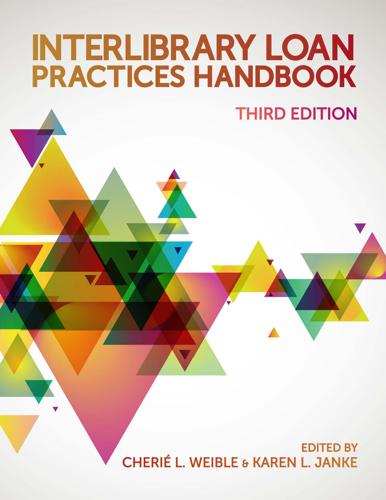
Interlibrary Loan Practices Handbook
by
Cherie L. Weible
and
Karen L. Janke
Published 15 Apr 2011
Sensitive to cost, libraries often choose to limit service models at the cost of user preference; this restriction is obvious in the case of mandating electronic delivery for articles in order to reduce the cost of printing, but less obvious in the case of home delivery. Home delivery of physical books has a long history and will become a reality again. Though many are familiar with bookmobiles, few know that in 1935, during the Great Depression, Kentucky’s Pack Horse Library Project was established as one of the Works Progress Administration’s programs in eastern Kentucky.7 To provide reading materials to rural communities of eastern Kentucky, librarians would ride horses or mules, walk, or even row boats to deliver books and magazines to homes. By 1939, the thirty Packhorse “libraries” served over 48,000 families—almost 181,000 individuals—with 889,694 book circulations (amazing considering that they only had 154,846 books available) and 1,095,410 magazine circulations (again amazing—they only had 229,778 magazines).8 Past efforts such as these help us realize what our users want and what we are capable of.
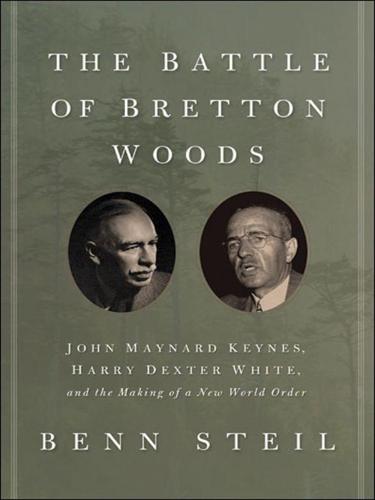
The Battle of Bretton Woods: John Maynard Keynes, Harry Dexter White, and the Making of a New World Order
by
Benn Steil
Published 14 May 2013
In particular, the view that governments should not hesitate to use deficit spending to counteract a recession—mainstream today, but widely considered irresponsible pre-Keynes—had gained influential supporters within the administration, including Harry Hopkins, director of the Federal Surplus Relief Administration and the Works Progress Administration (becoming Secretary of Commerce in 1938); Herman Oliphant, general counsel in Treasury; and Marriner Eccles (whose ideas predated Keynes), chairman of the Federal Reserve Board. White himself was forthright in opposing balanced-budget orthodoxy. “It would be wrong,” he argued in a meeting with Morgenthau and Viner in October 1937, “to balance the budget by deflationary measures such as increasing taxes or reducing government expenditures.”79 But Morgenthau was unswayed on the benefits of raising federal spending—a position from which he never deviated, even years later.
…
Director of the Federal Bureau of Investigation, 1924–72. Alerted Truman, who distrusted him, to the existence of Soviet espionage networks at the highest levels of the U.S. government. Hopkins, Harry (1890–1946). American government official. Director, Federal Emergency Relief Administration, 1933–35; director, Works Progress Administration, 1935–38; secretary of commerce, 1938–40. One of FDR’s closest advisers, he helped formulate the New Deal and was a key architect of the Lend-Lease program. Hull, Cordell (1871–1955). American statesman. Secretary of state, 1933–44. An ardent supporter of free trade who believed that the economic and political crises of the 1930s were largely attributable to protectionist policies.
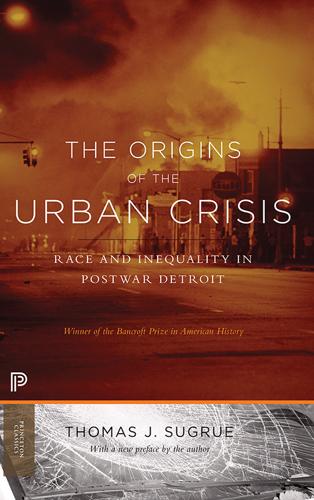
The Origins of the Urban Crisis
by
Sugrue, Thomas J.
The Eight Mile-Wyoming neighborhood, with ample open land, attracted black migrants from the South who sought the independence and security of homeownership. The simple frame structure, photographed in 1942, was typical of the self-constructed houses in the area. Residents often converted undeveloped lots, like the one on the right, into cornfields and vegetable gardens. By the time the Works Progress Administration and the Detroit Housing Commission conducted the 1938 Real Property Survey of Detroit, residents of the Eight Mile area were among the city’s poorest residents. They lived in dire housing conditions. Still, in stark contrast to the majority of Detroit’s African American population, 91.7 percent of Eight Mile residents lived in single-family, detached homes.
…
Department of Commerce, Bureau of the Census, Census of Population, 1950, Census Tract Statistics for Detroit, Michigan and Adjacent Area, vol. 2, part 24 (Washington, D.C.: U.S. Government Printing Office, 1952), Table 1, data for tracts 508, 528, 529, 534, 535, 536, 537, 543, 544, 547. (Hereafter referred to as 1950 Census.) 5. Detroit Housing Commission and Works Progress Administration, Real Property Survey of Detroit, Michigan, vol. 2 (Detroit: Bureau of Governmental Research, 1939), data for tracts 508, 528, 529, 534, 535, 536, 537, 543, 544, 547; for definitions of “substandard,” see vol. 1, pp. 33–34. (Hereafter referred to as Real Property Survey.) See also Alfred McClung Lee and Norman D.
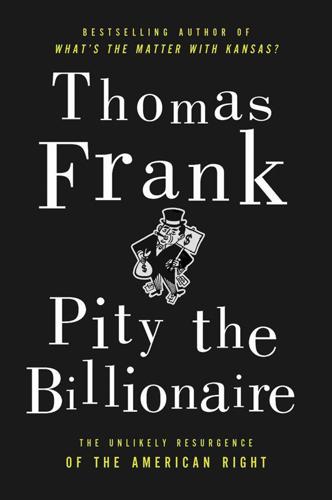
Pity the Billionaire: The Unexpected Resurgence of the American Right
by
Thomas Frank
Published 16 Aug 2011
Obama and scandals of 1980s and self-pity and TARP and Tea Party as protection for truculent attitudes of Wall Street Journal Walsh, Michael “War of the Worlds” (radio drama) Washington, D.C., September 12, 2009 rally. See also 9/12 Project Washington Mutual Washington Post Weekly Standard Welles, Orson We Read the Constitution movement We the Living (Rand) Weyrich, Paul What Can I Do? (Crist) Wilentz, Sean Williams, Mark Wilson, Edmund Wilson, Woodrow Wizard of Oz (film) Works Progress Administration (WPA) World War I World War II Wriston, Walter YouTube About the Author THOMAS FRANK is the author of The Wrecking Crew, What’s the Matter with Kansas?, and One Market Under God. A former opinion columnist for the Wall Street Journal, Frank is the founding editor of the Baffler and a monthly columnist for Harper’s.
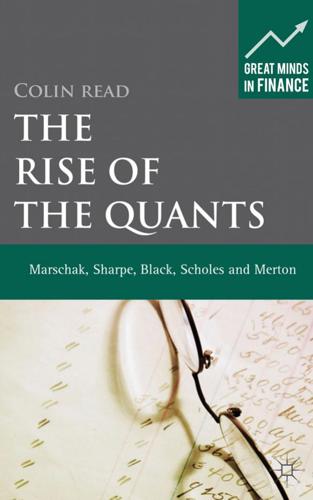
The Rise of the Quants: Marschak, Sharpe, Black, Scholes and Merton
by
Colin Read
Published 16 Jul 2012
It was in Washington that he met Elizabeth Clarke (Libby) Zemp. Like the Black clan, Libby too could trace her roots on her mother’s side to preRevolutionary times, also an the side of the South. Libby had left her native South Carolina to find work in Washington for the Roosevelt-era Works Progress Administration. They soon married, and Libby emerged as emotional and spiritual center of the family, the same role that Fischer’s mother Marianna had served when Fischer was a child. Fischer Sheffey Black Jr. was the first child of the marriage. When he was born on January 11, 1938, in Washington, DC, his young family was enjoying an almost rural life on four acres of land in Falls Church, not far outside of Washington.
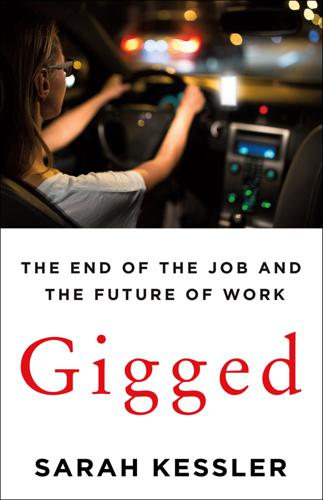
Gigged: The End of the Job and the Future of Work
by
Sarah Kessler
Published 11 Jun 2018
As one driver, former San Francisco Chronicle journalist John Koopman, explained: “When you’re falling straight down the financial cliff face, you reach out to grab hold of anything available to stop your descent and there, just before you land in a homeless shelter or move in with your sister, is Uber. I think of Uber as a modern-day version of the Works Progress Administration during the Depression. Thanks to Uber, I am not poor. I am just … nobody.”32 A new “independent worker” category offered something to all parties involved. Companies like Uber would not need to totally revamp their business models, because they wouldn’t commit to the full cost and liability of hiring employees, and their workers would have more rights and protections.
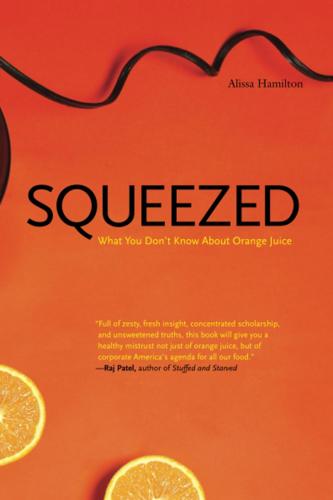
Squeezed: What You Don't Know About Orange Juice
by
Alissa Hamilton
Published 26 Apr 2010
Bass, “Historical Sketch of the D. D. Dummitt Grove at Allenhurst,” Annual Meeting of the Florida State Horticultural Society 39 (1926): 234-235. 6. Hodgson, “Horticultural Varieties of Citrus,” 454; Carita Doggett Corse, “The History of Citrus in Florida,” in Stories of Florida (Federal Writers’ Project of the Works Progress Administration, 1938-1939), 4; Hamilton P. Traub and Ralph T. Robinson, “Improvement of Subtropical Fruit Crops: Citrus,” in The Yearbook of Agriculture 1937 (GPO, 1937), 749-824. 7. Traub, “Improvement of Subtropical Fruit Crops: Citrus,” 770. 8. Hodgson, “Horticultural Varieties of Citrus,” 454; interview with Jim Griffiths, April 12, 2004. 9.
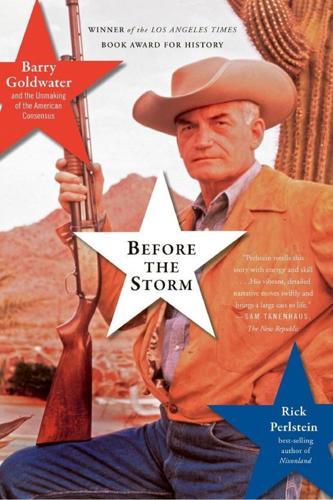
Before the Storm: Barry Goldwater and the Unmaking of the American Consensus
by
Rick Perlstein
Published 17 Mar 2009
Their response to the Depression was that private citizens should take care of their own, the way they did: Goldwater’s paid higher than the industry wage; provided health, accident, life, and pension benefits; provided profit sharing, a store psychiatrist, and a formal retirement plan. Later came a twenty-five- acre farm for employee recreation, and a day camp for children. The family allowed employees to examine the company’s books whenever they wished. In June of 1938, when the Works Progress Administration was putting money to spend in department stores in the hands of sixteen thousand WPA construction workers, Barry greeted the passage of the Fair Labor Standards Act, raising the minimum wage from 25 to 40 cents and limiting working hours to forty-four a week, with his first public political pronouncement, an open letter to the President in the Phoenix Gazette.
…
Consensus was Lyndon Johnson’s religion. He was a liberal—a liberal in an older, Southern sense of the word: liberalism as liberality, as the large-souled dispensing of generosities. Only twenty-seven when he became Texas administrator for the National Youth Administration, a subsidiary of Franklin Roosevelt’s Works Progress Administration, he had been shaped by watching dirt-poor districts bloom under the touch of the New Deal. His forte became cultivating relationships with businessmen who could help broker the WPA’s largesse. He saw nothing in liberalism that need conflict with businessmen of goodwill, which was why, when he became a congressman in 1937, one liberal tenet he could never embrace was ending the oil depletion allowance.
…
Filburn (1942) Wildavsky, Aaron Wilkins, Roy Williams, John Williams, Roger Williams Air Force Base Willis, Benjamin Willkie, Wendell Wills, Chill Wills, Garry Willson, Meredith Wilson, Harold Wilson, Richard Wilson, Woodrow Winning Side, The (de Toledano) Winona Leader Wirtz, Willard Wisconsin, University of Wisconsin primary Witness (Chambers) Wofford, Harris Wolfe, Tom Women’s National Press Club Wood, General Robert E. Wood River Oil & Refining Company Woodruff, Robert Woolworth’s, picketing by civil rights activists of Worker, The Workman, William D., Jr. Works Progress Administration (WPA) World Court World Federalists World Press Syndicate World Series World Trade Organization World War I World War II (John) Birch in; Goldwater in; Lodge in; Manion during; movies about; Rockefeller during, Scranton in; Walker in, Wedemeyer in; Welch during, (Clif) White in Worsthorne, Peregrine Wright, Loyd Wunderman, Lester Wyckoff, Gene Wycliffe Bible Translators Wyoming, University of Wyoming Republican Party Yale University, Law School Yalta Conference Yarborough, Ralph Yarmolinsky, Adam Yerger, Wirt Yorty, Sam Young, Stephen Young Americans for Freedom (YAF), anticommunism of, at Berkeley; Buckley’s speech to 1964 convention of; and Draft Goldwater Committee; founding of; Madison Square Garden rally of; at National Student Association Congress; and Newburgh welfare controversy; at 1964 Republican Convention; Reagan honored by; Viguerie hired as executive director of Young Communist League Young People’s Socialist League Young Republicans ; at Berkeley; and civil rights, conservative takeover at 1963 National Convention of, at 1964 Republican Convention, (Clif) White and, Youngstown Sheet & Tube Youth for Goldwater Youth for Goldwater for Vice President Youth for Goldwater-Miller Yugoslavia Zanzibar Zapata, Emiliano Zimbalist, Efrem, Jr.
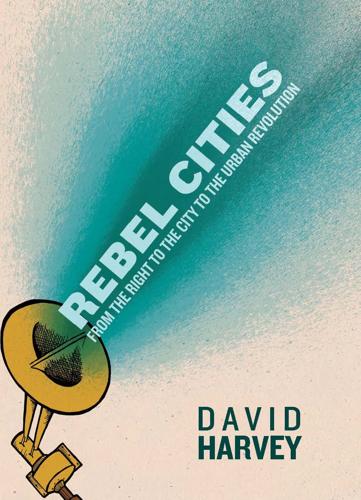
Rebel Cities: From the Right to the City to the Urban Revolution
by
David Harvey
Published 3 Apr 2012
P. , 1 32 Webber, Jeffrey, 1 4 1 -43, 1 5 1 Tiananmen Square, 1 1 7 West Bank, Palestine, 1 1 7 Tiebout, Charles, 82 Williamsburg, New York City, 78 Tokyo, 88 Wine Advocate, 98 Works Progress Admin istration Toronto, 1 37 Toxteth, Liverpool, 1 56 "lhe Tragedy of the Commons" ( Hardin), 68 Troubled Asset Relief Program (TARP), 58 (WPA), 52 World Bank, 75, 1 1 9, 1 37 Wo rld Developm ent Report (2009), 28-29, 34, 46, 50, 1 69n4 World Social Forum , xii, I l l , 1 1 9 I N D EX World Urban Forum (20 10), 1 37 Young, I ris, 1 52 World War I I , 9, 49, 50 Yunus, Muham mad, 2 1 World Wide Fund for Nature, 70 WPA. See Works Progress Administration (WPA) Zagreb, 236 Zapatistas, 1 22, 1 25 Zuccotti Park, New York City, xviii Yale University, 23 Zukin, Sharon, 1 4 1 87

Broken Markets: A User's Guide to the Post-Finance Economy
by
Kevin Mellyn
Published 18 Jun 2012
Whatever one thinks of the New Deal, Roosevelt treated the Depression as a national emergency equivalent to war and focused on nothing else in his famous 100 days. One of Roosevelt’s best early strokes was the Bank Holiday of 1933, which halted the implosion of the banking system. Public assistance programs and direct government make-work programs such as the Works Progress Administration (WPA) also made sense in the face of unemployment rates that were above 20 percent. This is the sort of direct action the electorate no doubt expected in 2009. Instead, the Democrats seemed to have gambled that the financial crisis would cause the public to welcome a vast extension of the federal government’s size and scope, just as the 1930s crisis had done.
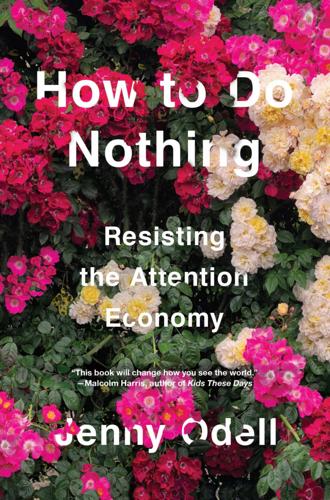
How to Do Nothing
by
Jenny Odell
Published 8 Apr 2019
In an essay about such spaces, Eric Holding and Sarah Chaplin call CityWalk “a ‘scripted space’ par excellence, that is, a space which excludes, directs, supervises, constructs, and orchestrates use.”13 Anyone who has ever tried any funny business in a faux public space knows that such spaces do not just script actions, they police them. In a public space, ideally, you are a citizen with agency; in a faux public space, you are either a consumer or a threat to the design of the place. The Rose Garden is a public space. It is a Works Progress Administration (WPA) project from the 1930s, and like all WPA projects, was built by people put to work by the federal government during the Depression. I’m reminded of its beginnings every time I see its dignified architecture: that this rose garden, an incredible public good, came out of a program that itself was also a public good.
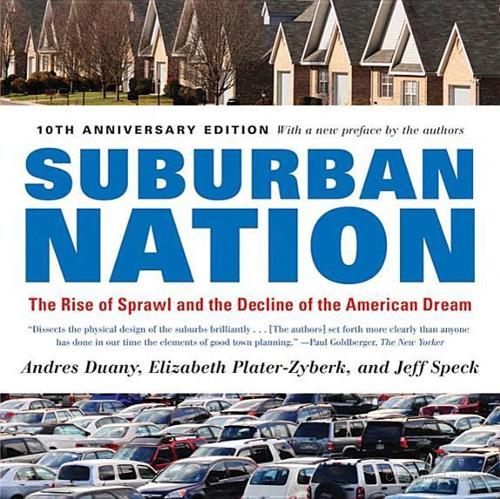
Suburban Nation
by
Andres Duany
,
Elizabeth Plater-Zyberk
and
Jeff Speck
Published 14 Sep 2010
For this reason, traditional architecture may no longer be considered simply in its own terms but instead as representative of a traditional outlook and all that implies. dg By this logic, Classicism is verboten because of its attractiveness to the Third Reich, British imperialists, and Southern slave owners, among others—including, paradoxically, democratic Greeks, Jeffersonian Republicans, and the Works Progress Administration under Roosevelt. Unfortunately, this sort of guilt-by-association quickly turns into a no-win game. For example, modernism was appropriated by some of the worst totalitarian regimes, so by the same logic, it should no longer be an acceptable style. One can imagine a future in which, as every new style eventually becomes associated with some villain government or evil corporation, the only acceptable style remaining is the one that hasn’t been invented yet.

The People's Platform: Taking Back Power and Culture in the Digital Age
by
Astra Taylor
Published 4 Mar 2014
In the digital realm, who stands for the public interest? The state remains the most powerful entity that can be employed to advance the cause of sustainable culture. Americans, however, are deeply skeptical of the government’s involvement in culture and the arts. The exceptions have been few and far between, including the Works Progress Administration (WPA) of the New Deal and the establishment of the National Endowment for the Arts, the National Endowment for the Humanities, and Public Broadcasting in the 1960s. With the founding of these institutions, the United States joined the rest of the developed world in providing state subsidy to creative endeavors.

Listen, Liberal: Or, What Ever Happened to the Party of the People?
by
Thomas Frank
Published 15 Mar 2016
See also banks; financial crisis of 2008; stock market bailouts and Bill Clinton and blue states and compensation Democrats and deregulation and Dodd-Frank and financialization and fraud and Hillary Clinton and Obama and Social Security and Wall Street Journal Wal-Mart Wap, Fetty Warburg Pincus firm Warren, Elizabeth Washington Monthly Washington Post Watergate scandal Weisberg, Jacob Welfare Reform Act (1996) Wellesley College Wells Fargo WeWork White, Theodore White Collar (Mills) White House Conference on the New Economy (2000) White House Counsel White House Travel Office Whitewater scandal Who Owns the Future? (Lanier) Why doesn’t Microfinance Work? (Bateman) Wolfe, Tom Woman in Charge, A (Bernstein) Woodward, Bob Work of Nations, The (Reich) Works Progress Administration (WPA) WorldCom-MCI merger World War II Yale University Law Journal Yergin, Daniel YouTube Yunus, Muhammad yuppies Zuckerberg, Mark ACKNOWLEDGMENTS This book owes a tremendous debt to my two researchers, Alex Kelly and Zachary Davis, who did so much capable work on so many different subjects.
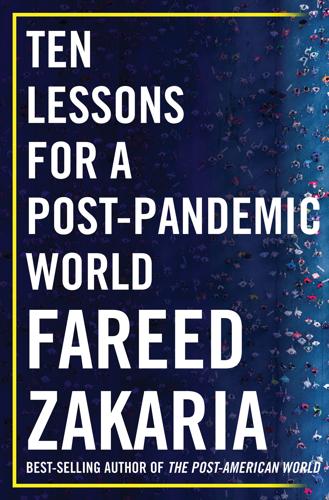
Ten Lessons for a Post-Pandemic World
by
Fareed Zakaria
Published 5 Oct 2020
He looked forward to a world of fifteen-hour workweeks made possible by technology. But even if such a world materializes, we will need to find a way to give people things to do. That could involve creating extra jobs in a variety of fields, from education to public works projects to park and wilderness maintenance—just as FDR’s celebrated Works Progress Administration and Civilian Conservation Corps hired millions of Americans to expand infrastructure and beautify the country. Some of these jobs would involve work for work’s sake. As Keynes wrote, “we shall endeavour to spread the bread thin on the butter—to make what work there is still to be done to be as widely shared as possible.”
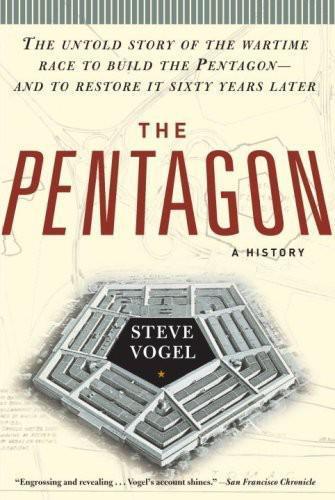
The Pentagon: A History
by
Steve Vogel
Published 26 May 2008
Stimson told McCloy they needed someone with the “necessary drive” to speed up the construction program. “If only a good man could be found the problem would be solved,” Stimson said. But who? The secretary’s attention was directed to a dynamic Army Corps of Engineers lieutenant colonel, Brehon Somervell, who had turned around the Works Progress Administration program in New York City in four years as administrator. Stimson instructed McCloy to check with his New York connections about Somervell’s temperament and ability. McCloy found Somervell had a “reputation as a driver and almost fearless energetic builder…. They all added up to the conviction that whatever the form of the organization, he was the man to head it.”
…
I suppose the fellow who built the Pyramids was efficient, too None of Brehon Somervell’s seven predecessors had fared well trying to tame New York City’s work-relief system. “Several had resigned in despair or disgust, one had died, probably of overwork, and none had lasted a year,” the New Yorker noted. There was no doubt that the New York office of the Works Progress Administration—the New Deal agency providing emergency public employment for the nation’s jobless—was in dire need of assistance. The New York WPA was one of the largest employers in the nation, providing jobs for 200,000 workers, and it spent one out of every seven WPA dollars in the nation. The program was grossly inefficient, in part because of its immensity but also because the city was home to powerful unions and left-wing parties that drew their support from the huge ranks of unemployed.

The Marshall Plan: Dawn of the Cold War
by
Benn Steil
Published 13 Feb 2018
New York representative John Taber said he had seen no “underfed people” in his European travels. Their problem was that they were simply “not working as hard or as vigorously as they should. We in the United States,” he said, “got where we are because we worked harder.”54 Nevada senator George Malone attacked the Plan as a “World-wide WPA scheme,” referring to Roosevelt’s Works Progress Administration, the largest New Deal agency. There was, he said, “no call for the United States to finance socialism all over Europe.”55 New York representative Jacob Javits, who acknowledged that Europe “desperately needed” aid, warned that “the threat of the continent going Communist must not scare the United States into doing something unwise or uneconomic.”56 Ohio representative George H.
…
.: Acheson’s relationship with, 25, 32, 34–35, 40, 41, 42–43, 45, 63, 94–96, 125, 225, 262, 312, 334 Acheson’s views on policies of, 50, 70, 93–94, 225, 262, 302, 306, 312, 320, 322–25, 329–31, 407 advisers of, 8–9, 12, 18, 32, 41, 89, 97, 102–3, 276–77, 278, 316–17 background of, 97, 430 Berlin Airlift approved by, 277–78, 282–83, 287, 312, 332–34 Berlin policies of, 7–8, 276–78, 282–83, 287, 293–94, 312, 332–34, 379–80 cabinet of, 39, 42, 281–82, 301–2, 316–17 Clay’s views on policies of, 64–68, 70, 105–7, 150, 247, 270–75, 282, 324–25, 334 Clayton’s relationship with, 39, 52, 225, 226, 262 congressional relations of, 34–36, 42, 49–50, 90, 110–11, 190–95, 197, 212–13, 221–22, 225, 226, 228–29, 247–48, 253, 259–62, 317–18 as Democratic leader, 34, 219–20, 301–2, 317–18 economic policies of, 18, 20, 44, 89–92, 172, 258, 269–71, 278, 287 election campaign of (1948), 219–20, 301 European postwar conditions as viewed by, 12–13, 18, 62–63, 88, 89–90, 101, 110–11, 172, 242, 247–48, 253, 357–58, 394, 398–99 FDR compared with, 5, 8, 9, 12, 38, 40, 47, 62, 88–89, 91, 97, 98, 165, 182, 371–72 foreign aid policies of, 190–95, 225–26, 247–48, 258–62, 357–60 foreign policy of, 18, 24–25, 32–50, 56, 97, 175–76, 219, 229–30, 293–96, 301–2, 319–20, 398–99 German reconstruction supported by, 6, 8–9, 80–81, 89–90, 101, 190, 278–81, 287, 291, 293–94, 320–21, 357–60, 373, 379–80 Greek assistance approved by, 18, 32–36, 38, 39–41, 42, 44, 45–46, 49–50, 175 Kennan’s relationship with, 41–42, 92–93, 102–3, 262, 265, 267, 276, 320–21 Marshall Plan approved by, 110–11, 165–66, 175–76, 197, 200–201, 205, 212–13, 219–22, 225–30, 247–48, 253, 258–62, 263, 301–2, 320–21, 346, 357–58, 369–73, 398–99 Marshall’s relationship with, 34–35, 41, 55, 56, 59, 85, 110–11, 197, 205, 219, 293–96, 300, 301–2, 335 Molotov’s relationship with, 5–6, 10, 46, 48, 70, 265, 283, 293 Morgenthau’s policies as viewed by, 8–9, 80–81, 89–90 NATO supported by, 318–21, 335, 369–70, 379, 389, 394 at Potsdam conference, 5–9, 20–21, 62–63, 268 press coverage of, 45–46, 88, 221, 226, 228 Republican opposition to, 191–95, 197, 221–22, 225, 247–48, 301–2, 317–18, 346 Soviet policies of, 5, 8–9, 25, 32–34, 62–63, 85, 165, 175–76, 183, 219, 228, 242, 265, 278–83, 370–71, 372, 380 “Special Address to Congress on the Marshall Plan” (December 19, 1947) of, 197 “Special Message to Congress” (November 17, 1947) of, 212–13, 220 Stalin’s relationship with, 5–9, 24–25, 46–47, 62–63, 82, 165, 242, 267–69, 278, 282–83, 293–96, 389 Truman Doctrine of, 37–53, 82, 91–96, 102–3, 175–76, 183, 212, 220, 247–48, 252, 258, 259–60, 301–2, 370–71, 372, 433–39 Truman Doctrine speech to Congress (March 12, 1947) of, 37–53, 82, 91–96, 102–3, 433–39 Turkish assistance approved by, 24–25, 32–36, 38, 39–41, 42, 44, 45–46, 49–50, 175 Truman, Margaret, 43 Tunner, William, 292–93, 324, 430 Turkey, 11, 18, 22–26, 31–38, 39, 40–42, 45, 50, 51–52, 87, 94, 147, 157, 160, 175, 213, 259, 260, 342, 343, 392, 395 Turkish Straits, 24–26 Ukraine, 17, 73, 235, 297, 374, 386, 387, 388–89, 395, 396, 397–400, 402 Ulbricht, Walter, 79, 80, 209, 337, 430 unemployment rate, 66, 155, 309, 345, 354–55 unilateralism, 40, 58–59, 281–82, 341 Union of Soviet-Czechoslovak Friendship, 238–39 United Nations, ix–x, 2, 6, 18, 40, 49–50, 52, 82, 128, 175, 179–81, 212–13, 215, 228, 268, 281, 283, 287, 295–99, 304, 308–9, 311–12, 317–18, 341 United Nations Article 51, 317–18 United Nations Charter, 119, 212, 296, 392, 559n United Nations General Assembly, 179, 296 United Nations Relief and Rehabilitation Administration (UNRRA), 40, 100, 128 United Nations Security Council, x, 2, 4, 6, 24, 25, 49, 295–99, 308–9, 317–18, 392, 394, 559n United States: air power of, 210, 250, 254, 271, 272–73, 291, 312 allies of, 231, 373, 375 anticommunism in, 7–8, 65, 71, 92–93, 193, 211 Communist Party of (CPUSA), 200, 267 defense spending by, 90–93, 226, 230, 316, 352, 355 dollar diplomacy of, 125, 154, 155, 159–60, 162, 164, 176–77, 208–9, 243, 306, 350 economy of, 159–60, 176–77, 197 elections (1948) in, 213, 219–20, 258, 282, 295, 301–2, 317, 413 foreign aid of, 34–35, 37, 38, 39–40, 98–101, 190–95, 225–26, 247–48, 258–62, 344–45, 357–60, 371, 373–75 “foreign entanglements” prohibition of, 1, 3, 13, 27, 43, 97, 320 foreign policy of, 1, 3, 13, 18, 24–25, 27, 32–50, 56, 97, 175–76, 219, 229–30, 293–96, 301–2, 319–20, 398–99 global trade of, 11, 88, 100–101, 165, 173 gross domestic product (GDP) of, 197 hegemony as goal of, 46, 90–93, 175–76, 337 imperialism of, 10, 49, 119–20, 175–76, 180, 182–83, 201, 228, 237, 239 military aid of, 16, 18–19, 21, 22, 26, 31–39, 40, 42, 44–52, 123–32, 223 national security of, 33, 35–36, 91–92, 248, 335 nuclear weapons of, 9–10, 12, 91, 105–6, 235, 282, 294, 321, 337 sphere of influence of, 2, 7, 47, 60, 241, 250, 340–41, 370–71, 404, 456, 566n as superpower, 24, 35–36, 38, 40, 42–43, 161, 576n taxation in, 34, 67, 76, 90, 192, 222, 270, 307 unilateralism of, 40, 58–59, 281–82, 341 United States of Europe, 101, 155, 402 U.S. zone, 64–65, 68, 89–90, 104, 209, 270, 286, 308, 329–30, 360–61 Vandenberg, Arthur, 9, 34, 35, 36, 39, 46, 49, 50, 81, 96–98, 192–93, 194, 196, 197, 212, 213, 221, 222, 226, 229, 232–33, 247–48, 249, 257, 258, 260, 262, 301–2, 317–20, 335, 373, 430 Vandenberg Amendment (Senate Resolution No. 239), 50, 317–18 van der Beugel, Ernst, 173–74, 305, 306, 430 Varga, Evgeny, 121, 430, 520n Versailles Treaty, 393 Vienna, 18, 263 Vietnam War, 45 Viner, Jacob, 345 Vinson, Fred, 293–96, 312, 430–31 Visegrád countries, 385 Voice of America (VOA), 228–29, 315, 323 Volkskammer (People’s Chamber), 336 vozhd (leader), 58, 182, 312, 337 Vursell, Charles, 258–59, 431 Vyshinsky, Andrei, 46, 47–48, 128, 129, 157, 179, 180, 237, 242, 253, 296–98, 312, 313, 322, 329–33, 431 Waiting for Godot (Beckett), 351 Wałęsa, Lech, 385, 387, 431 Wallace, Henry, 8, 49, 94, 214–15, 216, 219–20, 267–69, 293, 431 Wall Street Journal, 210–11 War Department, U.S., 3, 12, 67, 86–87, 90, 103–4, 149, 151–52, 206, 228, 242 Warsaw Pact (1955), 275, 277, 379, 383–84, 387, 392, 393, 399 Washington, George, 1, 3, 13, 27, 43, 97, 320 Washington Daily News, 45 Washington Post, 45, 104, 193, 213 Waterloo, Battle of, 132 Webb, James, 319–20, 325 Wellstone, Paul, 393, 431 Western Union Defence Organization, 251–52, 253 wheat, 170, 243–44, 298, 353 Wherry, Kenneth, 225–26, 431 White, Harry Dexter, 8–9, 11, 39, 89, 108, 270, 372, 431 White, Theodore, 193 White, William, 193, 431 Wiley, Alexander, 223, 431 Wilson, Woodrow, 2, 88, 431 winter conditions (1947), 346, 569n–70n Wisner, Frank, 271, 315–16, 431 Women’s National Democratic Club, 201 Workers’ Party, 168 Works Progress Administration (WPA), 192 World Bank, 137, 197, 341, 569n World Trade Organization (WTO), 373 World War I, 1–2, 6–7, 17, 23, 61, 62, 71, 88, 101, 336, 358, 393 World War II, 1–2, 6–7, 15–16, 39, 44, 74, 215, 241–42, 296, 317, 326, 342, 344, 357, 369 World War III, 51, 52, 69, 231, 248, 250, 256, 258, 278, 279–80, 281, 287, 294, 317, 332 Wörner, Manfred, 398, 431 Wrong, Humphrey Hume, 309, 432 “X” (George Kennan), 30–32, 255–56, 326, 328 Yalta Conference (1945), 3, 6, 24, 47, 58, 61–62, 74, 75, 79, 82, 88, 128, 202, 205–6, 223, 241, 255, 268, 269, 277, 279, 281, 341, 356 Yanukovych, Viktor, 397, 432 Yeltsin, Boris, 385, 387, 388, 391, 432 Yezhov, Nikolai, 339, 432 Yugoslavia, 16, 40, 48, 78–79, 93, 119, 133, 136, 148, 185, 193, 228, 245, 278, 331, 372, 392, 399 Zenkl, Petr, 143–44, 236, 432 Zhdanov, Andrei, 180, 181–85, 186, 230, 235, 257, 432, 509n Zhukov, Georgy, 64, 65, 78, 107, 337, 357, 432 Zorin, Valerian, 237, 238–39, 432 ILLUSTRATION CREDITS INTERIOR p. xiv: AFP/Getty Images, http://www.gettyimages.com/license/159224463 p. 14: Public Domain p. 54: Everett Collection Inc.
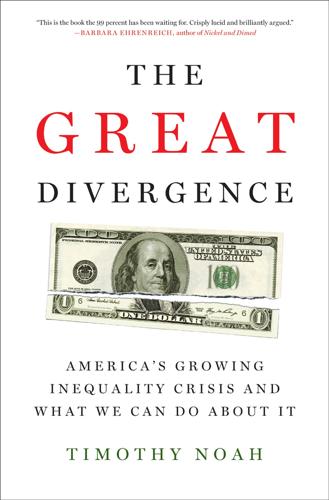
The Great Divergence: America's Growing Inequality Crisis and What We Can Do About It
by
Timothy Noah
Published 23 Apr 2012
But neither, given the historical trend, is there any rational argument against enlarging the federal payroll to make room for a jobs program that would provide time-limited work for middle-and lower-income people struggling to find employment. This program would be especially helpful during recessions, but given routine job dislocations even in flush times, it would also be helpful during economic expansions. (Ehrenreich did the reporting for Nickel and Dimed, it’s worth remembering, during the tech boom.) The New Deal’s Works Progress Administration (later called the Work Projects Administration) is an obvious model. During the Great Depression it built roads and bridges, provided social services, and even made some lasting contributions to the arts. (Today the urgent public-works need isn’t the creation of new roads and bridges but the repair of existing infrastructure.)
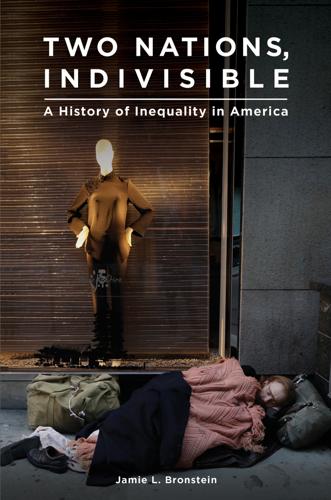
Two Nations, Indivisible: A History of Inequality in America: A History of Inequality in America
by
Jamie Bronstein
Published 29 Oct 2016
Ultimately, these programs were merged into the Resettlement Administration and then the Farm Security Administration, and included not only cooperative communities but also planned suburban settlements.22 Relief also meant having the government directly employ millions of people, setting an example for future administrations that government-sponsored public service was possible and beneficial.23 The Public Works Administration (PWA), later renamed the Works Progress Administration (WPA), employed 8 million people and spent over $10 billion on roads, bridges, post offices, stadiums, and airports.24 It employed writers, artists, actors, musicians, and historians in the largest government-funded cultural project in the history of the United States. The interviews that historians conducted with former slaves have been a cornerstone of historical research on slavery since their publication, helping to counteract an interpretation of slavery that included almost no African American voices.
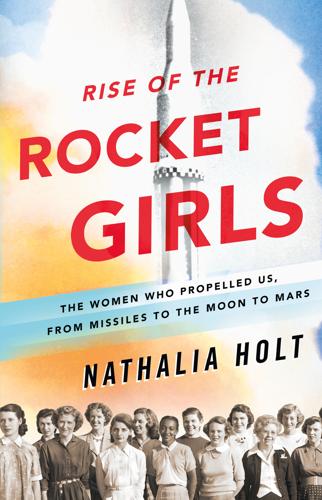
Rise of the Rocket Girls: The Women Who Propelled Us, From Missiles to the Moon to Mars
by
Nathalia Holt
Published 4 Apr 2016
During World War I, groups of men and women worked as “ballistic computers,” calculating the range of rifles, machine guns, and mortars on the battlefield. During the Depression era, 450 people worked for the U.S. government as computers, 76 of them women. These computers, meagerly paid as part of the Works Progress Administration, created something special. They filled twenty-eight volumes with rows and rows of numbers, eventually published by the Columbia University Press as the plainly named Mathematical Tables Project series. What they couldn’t know was that these books, filled to the brim with logarithms, exponential functions, and trigonometry, would one day be critical to our first steps into space.

The Fourth Age: Smart Robots, Conscious Computers, and the Future of Humanity
by
Byron Reese
Published 23 Apr 2018
The government, as an employer of last resort, could hire 10 million people, pay them each $35,000 a year, and administer the program for about 3 percent of GNP. Just imagine how 10 million people could be put to work: building infrastructure, painting murals, planting saplings, and a million other activities that are in no sense “useless jobs.” During the Depression, the Works Progress Administration was able to employ millions and use their combined labor to bring the nineteenth-century infrastructure of the United States into the twentieth century. A similar effort to vault us into the twenty-first might just be due. What social forces would be against a UBI? Wouldn’t the wealthy be against it?
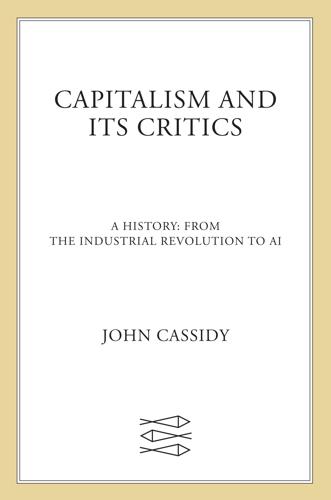
Capitalism and Its Critics: A History: From the Industrial Revolution to AI
by
John Cassidy
Published 12 May 2025
The president told Felix Frankfurter, his friend and legal adviser, that he had “a grand talk with Keynes and liked him immensely,” but not much came of it.31 Keynes pressed Roosevelt’s advisers to raise the level of federal relief spending if they could. A year later the US administration did go down this route. In April 1935 Congress appropriated $4.9 billion dollars for a nationwide program of emergency relief and public works projects—schools, hospitals, highways, and the like, about $1.4 billion of which went to the new Works Progress Administration (WPA), which Roosevelt soon created by executive order.32 The level of spending was unprecedented, but the creators of the WPA viewed it primarily as a public relief program designed to employ jobless workers, rather than as a measure designed to prop up overall demand. The first conscious application of what came to be known as Keynesian stimulus policies occurred in Sweden, which, like Britain, was forced off the gold standard in September 1931.
…
Wollstonecraft, Mary Woman’s Emancipation; or, The Pariah’s Testament (Tristan) Woman’s Role in Economic Development (Boserup) women: changes to societal role of; childrearing and; clothing of; cooperative communities and; division of labor and; domestic work of; education for; nuclear family and; in Peru; in Russia; welfare programs and Women and Economics (Gilman) Women’s Educational Equity Act women’s rights; coverture and; marriage and; reproductive; Second Wave feminism; Thompson and; Tristan and; United Nations and; voting; wages for housework; Wheeler and women workers; in factories; wages of Wood, Adrian Woolf, Leonard Woolf, Virginia wool industry workers: children as; compensation systems for; competition among; division between capitalists and; divisions among; efforts to improve conditions for, as counterproductive; in France; imperialism and; indentured; occupational divisions among; proletariat, see proletariat; racial divisions among; slavery and; social reforms and; strikes of, see strikes; unemployment and, see unemployment; women as, see women workers; workday length for workers’ associations Workers’ Educational Association Workers’ Union, The (Tristan) Workshop, The Works Progress Administration (WPA) World Bank World Economic Forum (WEF) World Economy and Its Conjuncture During and After the War, The (Kondratiev) World Inequality Database Worldmaking After Empire (Getachew) world systems theory World Trade Organization (WTO) World War I; economic downturn following; Versailles Treaty and World War II; Britain and Wright, Frances Wright, Gavin Wright, Richard Xi Jinping Yergin, Daniel Yom Kippur War YouGov Young, David Young Hegelians Young India Zetkin, Clara Zetkin, Konstantin Zinoviev, Grigory Zuckerberg, Mark Zucman, Gabriel Zurich Also by John Cassidy Dot.con: The Greatest Story Ever Sold How Markets Fail: The Logic of Economic Calamities A Note About the Author John Cassidy is a staff writer at The New Yorker and the author of Dot.con: The Greatest Story Ever Sold and How Markets Fail, which was a finalist for the Pulitzer Prize in Nonfiction.
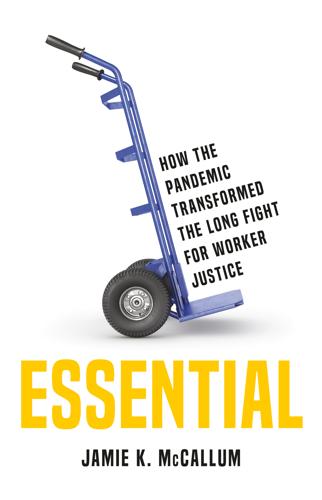
Essential: How the Pandemic Transformed the Long Fight for Worker Justice
by
Jamie K. McCallum
Published 15 Nov 2022
The New Dealers thought artistic expression was essential for American culture to thrive. Therefore, they funded the arts through a public works program. Without that program, we’d have no documentary history left by photographers Dorothea Lange and Walker Evans. We’d be without the murals of Diego Rivera, whose mural assistant, Louise Nevelson, worked through the Works Progress Administration. There’d be fewer abstract expressionists like Jackson Pollock, Willem de Kooning, and Mark Rothko, who all painted with funding from the Treasury Relief Art Project, even though the latter two weren’t American citizens. What would the Harlem Renaissance have been without Aaron Douglas, just one of the thousands of African American artists funded through the Federal Art Project?

Higher: A Historic Race to the Sky and the Making of a City
by
Neal Bascomb
Published 2 Jan 2003
Parker, New York, The Wonder City (Wonder City Publishing Company, 1932) Chrysler Corporation, The Story of an American Company (Chrysler Corporation: Department of Public Relations, 1955) Chrysler Tower Corporation, The Chrysler Building (Chrysler Tower Corporation, 1930) Chrysler, Walter P. in collaboration with Boyden Sparkes, Life of an American Workman (Dodd, Mead & Company, 1950) Cochran, Edwin, The Cathedral of Commerce (Broadway Park Place Company, 1916) Corn, Joseph J., The Winged Gospel: America’s Romance with Aviation, 1900–1950 (Oxford University Press, 1983) Cram, Ralph Adams, My Life in Architecture (Little, Brown, and Company, 1936) Curcio, Vincent, Chrysler: The Life and Times of an Automotive Genius (Oxford University Press, 2000) Di Donato, Pietro, Christ in Concrete (Signet Classic, 1939) Douglas, Ann, Terrible Honesty: Mongrel Manhattan in the 1920s (Farrar, Straus, and Giroux, 1995) Douglas, George H., Skyscrapers: A Social History of the Very Tall Building in America (McFarland & Company, 1996) Einbinder, Harvey, An American Genius: Frank Lloyd Wright (Philosophical Library, 1986) Eksteins, Modris, Rites of Spring: the Great War and the Birth of the Modern Age (Houghton Mifflin, 1989) Ellis, Edward Robb, The Epic of New York City (Coward-McCann, 1966) Emery, Edwin, and Henry Ladd Smith, The Press and America (Prentice-Hall, 1954) Empire State, Inc., Commemorating the Completion of Empire State (1931) ———, Empire State: A History (Selecting Printing Company, 1931) Federal Writers’ Project of the Works Progress Administration in New York City, The WPA Guide to New York City: A Comprehensive Guide to the Five Boroughs of the Metropolis—Manhattan, Brooklyn, the Bronx, Queens, and Richmond (The New Press, 1992) Fenske, Gail G., The “Skyscraper Problem” and the City Beautiful: The Woolworth Building (Arizona State University, Ph.D. dissertation, 1988) Ferriss, Hugh, The Metropolis of Tomorrow (I.
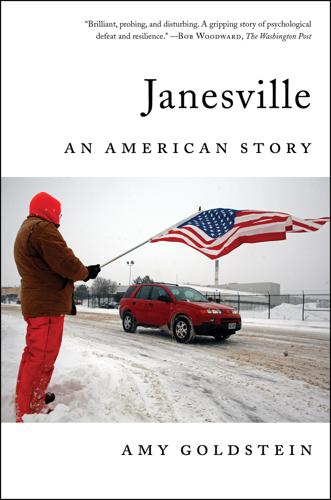
Janesville: An American Story
by
Amy Goldstein
Published 17 Apr 2017
It may be the most rain to fall on Janesville in a century, but, compared with the elusive matter of how to prevent thousands of jobs from vanishing, this is a challenge that he and his industrious city know how to tackle. Bob pivots away from the scared autoworkers to focus on nailing down an emergency grant for flood-devastated communities. The federal grant will allow the Job Center to create, in an echo of the Great Depression’s Works Progress Administration, a brigade to tackle the slow, mucky work of repairs. Yet a grant for the Job Center can’t tame nature. The Rock River rushes so hard and so high that it washes fish off course. Carp are now swimming on Main Street. Near the street’s northern end, in the flooded parking lot of the United Way of North Rock County, the carp find a favorite new spawning ground.
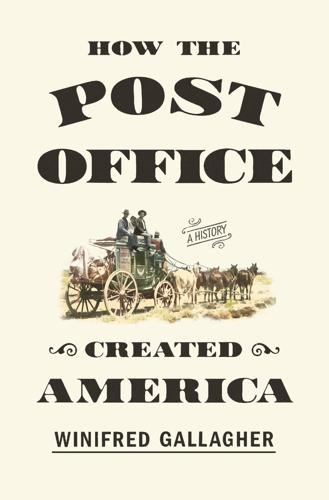
How the Post Office Created America: A History
by
Winifred Gallagher
Published 7 Jan 2016
Moreover, at a time when the arts were mostly a privilege of the rich, these handsome new post offices were adorned with murals that celebrated average folk and their local history. As FDR explained, this artwork for the people would be “native, human, eager and alive—all of it painted by their own kind in their own country, and painted about things they know and look at often and have touched and loved.” These postal murals are often attributed to the Works Progress Administration, but they were done under the aegis of the Treasury Department’s Section of Painting and Sculpture, which was less concerned with employing starving artists than with boosting beleaguered America’s morale. FDR took an especially keen interest in three of six new post offices designed for New York’s Dutchess County, his aristocratic family’s ancestral turf.

Lonely Planet's Best of USA
by
Lonely Planet
Franklin D Roosevelt, elected president in 1932, helped rescue the nation from collapse. He bailed out banks, saved homeowners from foreclosure and added millions of jobs. He created massive projects like the Civilian Conservation Corps, which planted more than two billion trees, and the Works Progress Administration, a 600,000-strong workforce that built bridges, dams and other infrastructure. Brown vs Board of Education National Historic Site / WALTER BIBIKOW / GETTY IMAGES © Great Depression, the New Deal & World War II In October 1929, investors, worried about a gloomy global economy, started selling stocks.
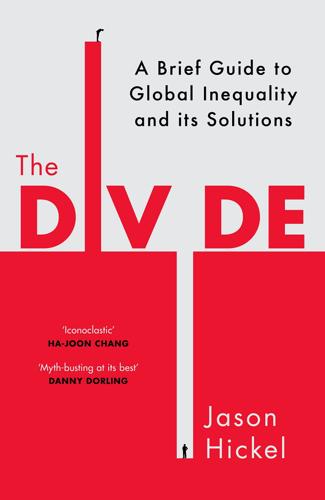
The Divide: A Brief Guide to Global Inequality and Its Solutions
by
Jason Hickel
Published 3 May 2017
In the wake of decolonisation, however, most Latin American countries were controlled by autocratic governments, and by the early 20th century the United States began to exert a strong influence over the region. 4 ‘These measures, he said …’ Keynes outlined these ideas in 1933 in The Means to Prosperity (copies of which were sent to the governments of Britain and the United States), and more thoroughly in 1936 in his famous text The General Theory of Employment, Interest, and Money. 5 ‘When Franklin Delano Roosevelt came …’ The Works Progress Administration was established in 1939 to employ unemployed citizens in public works projects. 6 ‘When the Second World War …’ The Roosevelt administration raised the top marginal tax rate to 75 per cent in 1939, and then to 94 per cent in 1944. It remained above 90 per cent until the mid-1960s. 7 ‘This new system relied on …’ In the United States, the key piece of legislation was the National Labor Relations Act of 1935, which facilitated trade unions and collective bargaining. 8 ‘Middle-class women, for example …’ Consider, for instance, Betty Friedan’s critique of women’s social subordination in her 1963 book The Feminine Mystique. 9 ‘The progressive political parties that …’ See, for example, Frederick Cooper, Decolonization and African Society (Cambridge: Cambridge University Press, 1996). 10 ‘The policy suspended the long …’ In 1933 the United States signed the Convention on the Rights and Duties of States.

Western USA
by
Lonely Planet
Grace Cathedral CHURCH ( 415-749-6300; www.gracecathedral.com; 1100 California St; suggested donation adult/child $3/2; 7am-6pm Mon-Fri, from 8am Sat, 8am-7pm Sun, services with choir 8:30am & 11am Sun) Take a shortcut to heaven: hop the cable car uphill to SF’s progressive Episcopal church, where the AIDS Interfaith Memorial Chapel features a bronze Keith Haring altarpiece; stained-glass ‘Human Endeavor’ windows illuminate Albert Einstein in a swirl of nuclear particles; and pavement labyrinths offer guided meditation for restless souls. FISHERMAN’S WHARF Aquatic Park Bathhouse HISTORIC BUILDING ( 415-447-5000; www.nps.gov/safr; 499 Jefferson St, at Hyde St; 10am-4pm) A monumental hint to sailors in need of a scrub, this recently restored, ship-shape 1939 streamline moderne landmark is decked out with Works Progress Administration (WPA) art treasures: playful seal and frog sculptures by Beniamino Bufano, Hilaire Hiler’s surreal underwater dreamscape murals and recently uncovered wood reliefs by Richard Ayer. Acclaimed African American artist Sargent Johnson created the stunning carved green slate marquee doorway and the verandah’s mesmerizing aquatic mosaics, which he deliberately left unfinished on the east side to protest plans to include a private restaurant in this public facility.
…
This incredible library contains more than 3.5 million genealogy-related microfilms, microfiches, books and other records gathered from more than 110 countries. GREATER DOWNTOWN State Capitol HISTORIC BUILDING (www.utahstatecapitol.utah.gov; admission free; 8am-8pm Mon-Fri, 8am-6pm Sat & Sun) The grand, 1916 State Capitol is set among 500 cherry trees on a hill north of Temple Sq. Inside, colorful Works Progress Administration (WPA) murals of pioneers, trappers and missionaries adorn part of the building’s dome. Free hourly tours (from 9am to 4pm) start at the 1st-floor visitor center. Pioneer Memorial Museum MUSEUM (WWW.DUPINTERNATIONAL.ORG; 300 N MAIN ST; ADMISSION FREE; 9am-5pm Mon-Sat year-round, 1-5pm Sun Jun-Aug) Vast, four-story treasure trove of pioneer artifacts.

Free to Choose: A Personal Statement
by
Milton Friedman
and
Rose D. Friedman
Published 2 Jan 1980
The New Deal also included programs intended to be strictly temporary, designed to deal with the emergency situation created by the Great Depression. Some of the temporary programs became permanent, as is the way with government programs. The most important temporary programs included "make work" projects under the Works Progress Administration, the use of unemployed youth to improve the national parks and forests under the Civilian Conservation Corps, and direct federal relief to the indigent. At the time, these programs served a useful function. There was distress on a vast scale; it was important to do something about that distress promptly, both to assist the people in distress and to restore hope and confidence to the public.
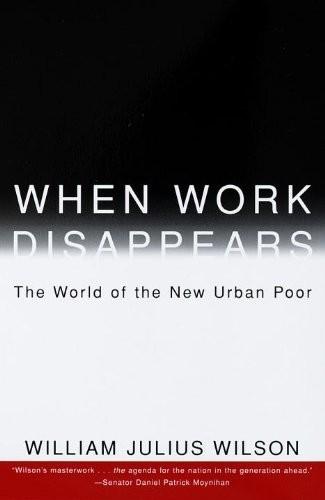
When Work Disappears: The World of the New Urban Poor
by
William Julius Wilson
Published 1 Jan 1996
However, they maintain that their proposal is an improvement over the current system, “which offers a minimum wage if you find a job, but leaves millions of poor persons searching for work and many others poor even though they have jobs.” The final proposal under consideration here was advanced by the perceptive journalist Mickey Kaus of The New Republic. Kaus’s proposal is modeled on the Works Progress Administration (WPA), a large public works program announced in 1935 by Franklin D. Roosevelt in his State of the Union address. The public works jobs that Roosevelt had in mind included highway construction, slum clearance, housing construction, rural electrification, and so on. As Kaus points out: In its eight-year existence, according to official records, the WPA built or improved 651,000 miles of roads, 953 airports, 124,000 bridges and viaducts, 1,178,000 culverts, 8,000 parks, 18,000 playgrounds and athletic fields, and 2,000 swimming pools.
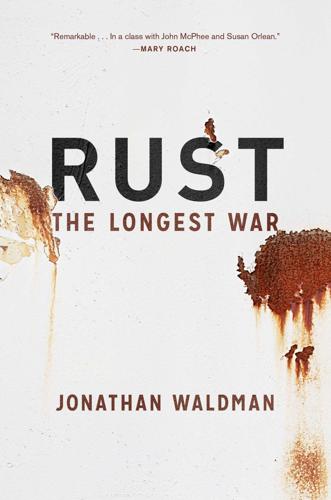
Rust: The Longest War
by
Jonathan Waldman
Published 10 Mar 2015
She spent fifteen years in that agency’s care, and then twenty-three years under the War Department, before she was declared a national monument. Nine years later she was transferred to the National Park Service. In other words, a half century transpired before anyone with a sense of preservation took over caring for her. One of the first things the NPS did, with the Works Progress Administration, in 1937, was replace parts of her corroded iron frame. Good preservationists, they replaced iron bars with similar iron bars. But, because all of the work was done from the inside of the statue, they used self-tapping screws, rather than rivets. You could say they botched the job. Since then, the statue hadn’t received much better care; the monument hadn’t had an official superintendent since August 1964.
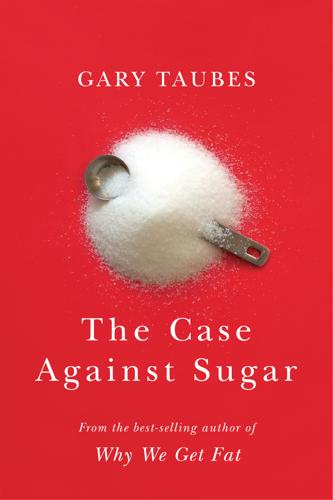
The Case Against Sugar
by
Gary Taubes
Published 27 Dec 2016
Hrdlička had also weighed and measured some 250 Pima children, equally split between boys and girls, and reported that these children were lean, if not very lean (on average), by today’s standards. In 1938, a University of Arizona anthropologist weighed over two hundred Papago men applying for jobs in the Works Progress Administration and recorded that they, too, were lean, with an average weight of 158 pounds. Surveys of Papago children in the early 1940s and again in 1949 made no mention of obesity, although average weights increased by twenty pounds or more in both boys and girls between the two surveys. As for diabetes, if it was present among the Pima in the early years of the twentieth century, neither Russell nor Hrdlička had thought it worth mention.
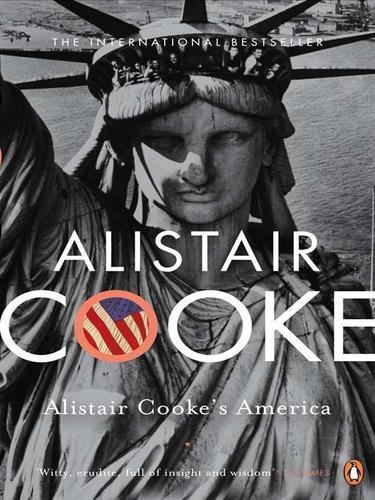
Alistair Cooke's America
by
Alistair Cooke
Published 1 Oct 2008
He had in the meantime shoved through Congress huge federal loans for public works, and at the same time he gave the industrial worker who had been hounded by company spies the right to organize and bargain. He handed out hard dollars to the unemployed and took three million youngsters off the streets to build highways and plant ten million trees. He mobilized actors in a federal theater and, in the happiest inspiration of the Works Progress Administration, hired unemployed scholars, writers, and local historians to produce several hundred volumes of guidebooks to the states. He stopped the automatic production of groaning farm surpluses, paid the Southern farmers to diversify their crops and built enormous dams to hold the flooding of the great river valleys – and then made the valleys flower through electricity and controlled irrigation.
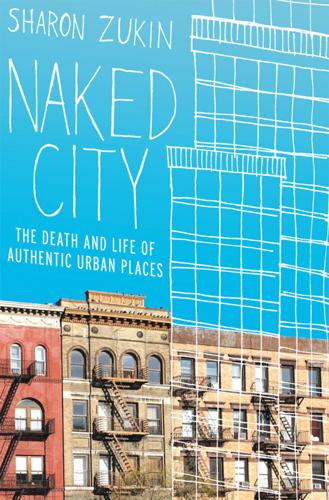
Naked City: The Death and Life of Authentic Urban Places
by
Sharon Zukin
Published 1 Dec 2009
“Brooklyn-ness,” as the New York Times art critic Holland Cotter wrote in 2004, is now “a cultural ethnicity.”10 The contentious fate of the McCarren Park pool, a public recreational facility on the border between Williamsburg and Greenpoint, reflects this dramatic shift in Brooklyn’s image. Built by Robert Moses in the 1930s with funds from the federal Works Progress Administration, the swimming pool served an overcrowded tenement district of the working poor. During hot summer months in the 1930s and 1940s more than six thousand swimmers a day would pass through the majestic arch of its entry pavilion. In the 1970s, though, when more black and Puerto Rican residents moved into nearby neighborhoods and began to use the pool, racial conflicts broke out over who belonged there, as well as over who was responsible for mounting incidents of crime and vandalism.
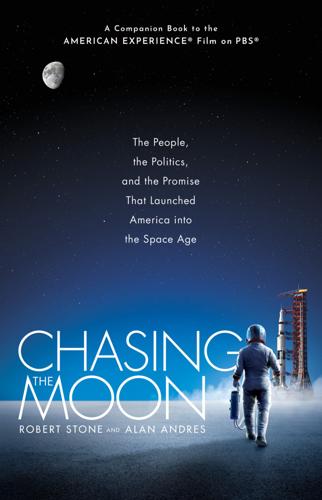
Chasing the Moon: The People, the Politics, and the Promise That Launched America Into the Space Age
by
Robert Stone
and
Alan Andres
Published 3 Jun 2019
Fired by the world’s leading publisher of science fiction, Lasser’s short career as America’s first advocate for space travel came to an end as well. His career change took him to an important job in Washington, D.C., where he was tapped to run the Workers Alliance of America, a trade union for those temporarily employed by the Works Progress Administration of President Franklin Roosevelt’s New Deal. At nearly the same moment that he dismissed David Lasser, Gernsback made a second decision that would significantly impact the life of Archie Clarke, a continent away. Eager to increase customer loyalty for his magazines, Gernsback introduced a readers’ club, the Science Fiction League, the world’s first science-fiction fan organization.
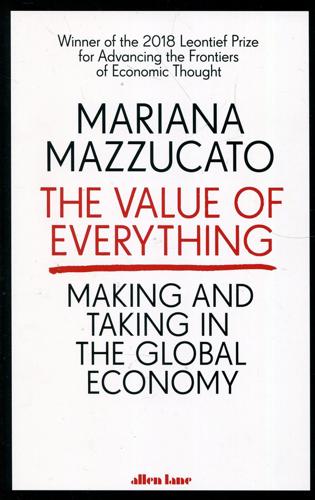
Value of Everything: An Antidote to Chaos The
by
Mariana Mazzucato
Published 25 Apr 2018
After the Great Depression, he claimed that even paying men simply to dig ditches and fill them up again could revive the economy - but his work inspired Roosevelt to be more ambitious than just advocating what today would be called ‘shovel-ready projects' (easy infrastructure). The New Deal included creative activities under the Works Progress Administration, the Civilian Conservation Corps and the National Youth Administration. Equally, it is not enough to create money in the economy through quantitative easing; what is needed is the creation of new opportunities for investment and growth - infrastructure and finance must be embedded within the greater systemic plans for change.
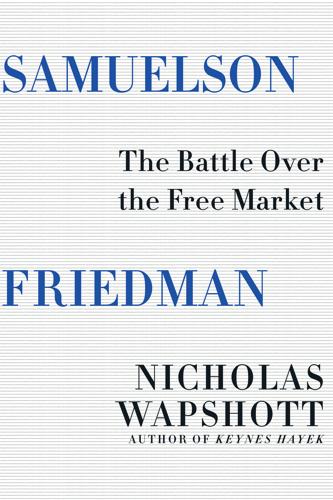
Samuelson Friedman: The Battle Over the Free Market
by
Nicholas Wapshott
Published 2 Aug 2021
“Like our teachers and fellow students at Chicago, and indeed most of the nation, we regarded many early New Deal measures as appropriate responses to the critical situation—in our case not, I hasten to add, the price- and wage-fixing measures of the National Recovery Administration and the Agricultural Adjustment Administration, but certainly the job-creating Works Progress Administration, Public Works Administration, and Civilian Conservation Corps.”20 With the economy broken, businesses going bust by the day, and no jobs available, working for the government, or independent bodies set up to monitor government programs, was a good option for the Friedmans. While he later concluded that much of FDR’s trial-and-error approach to market intervention had been pointless, he could hardly deny that the New Deal had worked to his and Rose’s benefit.
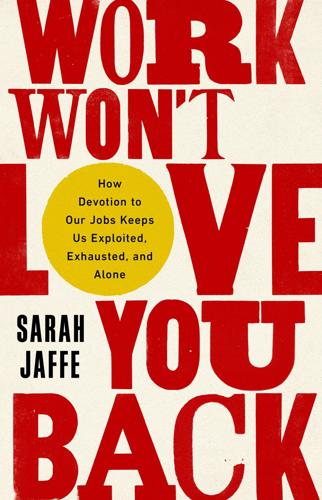
Work Won't Love You Back: How Devotion to Our Jobs Keeps Us Exploited, Exhausted, and Alone
by
Sarah Jaffe
Published 26 Jan 2021
Siqueiros argued, as had Morris before him, that real, pure art could only exist in a radically changed society; his revolutionary activities were therefore a way of “fighting for pure art.” 15 The Mexican muralists inspired artists around the world, but particularly across the border in the United States, where during the Great Depression artists and public officials alike sought to create, through relief programs, a more democratic public art. Through the programs of the New Deal, particularly the Federal Art Project (FAP), part of the larger Works Progress Administration, artists were hired and paid as workers, leveling the playing field for art creation for the first time. They were paid to make art in community spaces, where it could be seen by many more people than previously had access. Work was the subject, too, of much of the art, from photographs by Lewis Hine capturing factory workers in luminous black and white to Stuart Davis’s brightly colored abstracted workplaces.
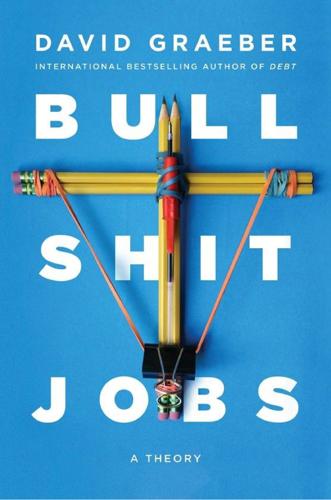
Bullshit Jobs: A Theory
by
David Graeber
Published 14 May 2018
For much of the twentieth century, state Socialist regimes dedicated to full employment created bogus jobs as a matter of public policy, and their social democratic rivals in Europe and elsewhere at least colluded in featherbedding and overstaffing in the public sector or with government contractors, when they weren’t establishing self-conscious make-work programs like the Works Progress Administration (WPA), as the United States did at the height of the Great Depression. All of this was supposed to have ended with the collapse of the Soviet bloc and worldwide market reforms in the nineties. If the joke under the Soviet Union was “We pretend to work; they pretend to pay us,” the new neoliberal age was supposed to be all about efficiency.
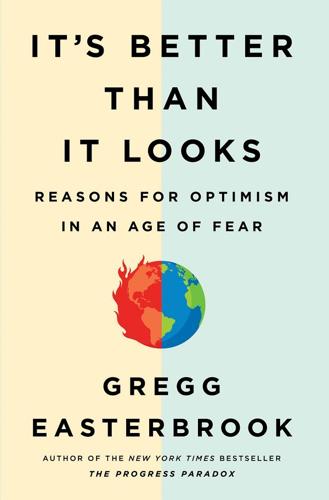
It's Better Than It Looks: Reasons for Optimism in an Age of Fear
by
Gregg Easterbrook
Published 20 Feb 2018
(Canada already had a similar system; today all developed nations do.) New Deal legislation transferred money in other ways, including the National Industrial Recovery Act, whose primary purpose was to raise prices—today this sounds daft, but made sense for the conditions of the time—plus the 1935 bill that created the Works Progress Administration and the 1939 food stamps legislation. Federal intervention in the marketplace both helped the economy recover from the Depression and put inequality on a slope of decline, by transferring income toward the lower quintiles. By the 1960s, inequality was rising again and government intervened again, through enactment of Medicare and Medicaid, plus a range of social welfare programs, including cash payments, housing vouchers, and federal, state, and local funding for construction of low-income housing.

The Rise and Fall of American Growth: The U.S. Standard of Living Since the Civil War (The Princeton Economic History of the Western World)
by
Robert J. Gordon
Published 12 Jan 2016
One Wyoming ranch woman called the day when electricity arrived my Day of Days because lights shone where lights had never been, the electric stove radiated heat, the washer turned, and an electric pump freed me from hauling water. The old hand pump is buried under six feet of snow, let it stay there! Good bye Old Toilet on the Hill! With the advent of the REA, that old book that was my life is closed and Book II is begun.77 Other New Deal programs were developed to provide jobs and reduce unemployment. The Works Progress Administration (WPA) at its peak in 1938 created 3 million jobs, equal to about 7 percent of the labor force. The WPA specialized in infrastructure—roads and public buildings—and is credited with constructing many of today’s U.S. post offices.78 The Civilian Conservation Corps (CCC) hired mainly young men, limited in number to 330,000 at any one time, to do manual work that focused on the planting of trees, increasing the amenities of national parks, and otherwise improving the infrastructure of government-owned land.
…
See labor unions United Airlines, 393–94, 404 United States: American exceptionalism of, 245–46; European opinion of (1851), 27–28; obesity in, 346; population of (1870), 31–36; Tocqueville and Bryce on, 28–29 Universal Product Code (UPC), 451 unpleasant work, 256–57 urbanization, 6, 97–102, 320–21, 553–54; in 1870, 35; in 1940, 94–95; shift from credit to cash as result of, 294 urban life: in 1870, 43–46; bungalow movement in, 108–10; diet in, 68; electricity for, 95; horses in, 159; housing in, 99–104; population in (1870 to 1940), 266; retailing in, 77–78; Riis on, 97; suburbs and, 363–70; See also public transportation vaccinations, 218, 232, 324; against polio, 467–68 vacuum tubes, 191, 556 Van Camp Company, 73 Vanderbilt, Cornelius, 136 Vanguard (firm), 598 Varian, Hal, 447 Varney, Walter, 394 Varney Air Lines, 393–94 vegetables, 334, 339 Verne, Jules, 590, 592 Viagra (drug), 486 Victor Talking Machine Company, 187 Victrolas (phonographs), 187 video cassette recorders (VCRs), 426–27, 436, 439 video streaming, 436–37 Vijg, Jan, 480, 594 violence, 475–76; homicides, 240–42 Visa (credit cards), 450 Vitascope (motion pictures), 198 Voting Rights Act (1965), 419 wages, 278–82; in 1950s and 1960s, 503; differences, by sex, in, 508–10; downward pressure on, 613–17; increased during Great Leap Forward, 541–43, 548; loans against, 293; minimum wage, 644, 645 Waldock, Katherine, 646 Walgreen’s (drug store chain), 90 Walkman, 428 Walmart, 78, 343, 349, 443, 581 Wang Laboratories (firm), 452 Warburton, Clark, 71 Ward, Aaron Montgomery, 63, 90–91 Warner Bros., 201 War of 1812, 4 washing machines, 121, 356–60 water, 57, 95; diffusion of running water in homes, 114; for farmhouses, 113; fluoridation of, 486–87; indoor plumbing, 122–25; mortality rates and, 215–16; running water, 216–17 water systems, 51 Watson (computer program), 593 Watt, James, 568 WCBW (television station), 413 wealth, 620 Weber, Adna, 104 Welty, Eudora, 166 Western Union, 179 Westinghouse, George, 192 Westinghouse Electric and Manufacturing Company, 128, 192 Wetzel, Donald, 450 Wheatstone, Charles, 177 White Castle (restaurant firm), 76, 167 white-collar employment, 256; in 1870, 56; after 1940, 501–3; gender differences in, 509 whites: families among, 631; as homicide victims, 241; life expectancy among, 210; literacy rates among, 174–75; Murray on decline of, 632 Whole Foods, 343 Wiener, Norbert, 592 Wi-Fi, on airplanes, 406–7 Wikipedia, 456, 579 Wilde, Oscar, 219 Wilson, Woodrow, 261 Windows 95 (operating system), 454 window screens, 113, 207 wireless telephony (radio), 21, 191, 192, 197 Wise, David, 493 The Wizard of Oz (film), 202, 421 WNBT (television station), 413 Woman’s Christian Temperance Union (WCTU), 223 women: birth control for, 486; childbirth by, 229–31; clothing for (1870), 43; in colleges, 510–12; elderly, in labor force, 253; as housewives, 275–78; in labor force, 32–34, 248, 286–87, 326, 499, 504–10, 521, 526, 628, 642; in Ladies’ Protective Health Association, 221; market-purchased clothing for, 85–88; medical care for, 477; participation in labor force of, 249–50; ratio of men to, 630–31; social life of (1870), 49–50; tastes in clothing for, 350; teenagers (1870), 58; trapped at home (1870), 106; as victims of violence, 475–76; work hours of, 260; in working class (1870), 56; work of, 273–74 Wood, Edith Elmer, 303 Woolworth Building (New York), 90 Woolworth’s (chain stores), 90 Worcestershire sauce, 73 WordPerfect (word processing software), 453 word processors, 452 work: in 1870, 52–57; from 1870 to 1940, 254–58; after 1940, 498–504, 526; of American farmer, 261–66; by children, 282–85; in iron and steel industries, 267–69; in mining industry, 266–67; quality of, 10; wages for, 278–82; of women, 273–74; work week and hours, 258–61; See also employment workers’ compensation (WC), 230, 272–73 workforce. See labor force working class: American, versus European (1870), 29; housing for, 102–4, 111; life of (1870), 56–57; Riis on, 97 working hours, 10, 258–61, 325; in 1940, 520; decline in, 13–14, 326–27; eight-hour day, 543 Works Progress Administration (WPA), 315 World War II: aircraft production during, 397; contribution to Great Leap of, 537; economy during, 548–53; food rationing during, 335; Great Leap Forward and, 563–64; movies during, 414–15; productivity increase during, 18, 540, 546–47; radio news broadcasts of, 197, 413–14; women in labor force during, 504 World Wide Web, 454, 459; See also Internet Wozniak, Steve, 452 Wright Brothers, 568 Xerox Company, 442, 451 X-rays, 226 yellow journalism, 177 Young, David M., 144 youth: in 1870, 58–59; in labor force, 248, 251–52; social media used by, 457; after World War II, 499–500 YouTube, 456 zoning laws, 649 Zuckerberg, Mark, 457, 567 Zworykin, Vladimir, 412–14 THE PRINCETON ECONOMIC HISTORY OF THE WESTERN WORLD Joel Mokyr, Series Editor Growth in a Traditional Society: The French Countryside, 1450–1815 by Philip T.
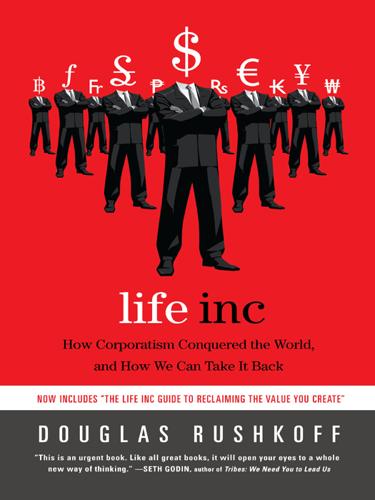
Life Inc.: How the World Became a Corporation and How to Take It Back
by
Douglas Rushkoff
Published 1 Jun 2009
Roosevelt held that the free market should always be adjusted and regulated by government to meet the social needs of society. In his annual message to Congress in 1935, FDR argued that “Americans must forswear the conception of the acquisition of wealth which, through excessive profits, creates undue private power over private affairs and, to our misfortune, over public affairs as well.” His Works Progress Administration, ostensibly a massive employment relief program, also funded films, plays, and art projects dedicated to driving home this new message to a disheartened public. Murals depicted people working together to build bridges and grow food, while movies celebrated the communities and cooperatives that defined New Deal America.

Water: A Biography
by
Giulio Boccaletti
Published 13 Sep 2021
In 1933, as Franklin Delano Roosevelt opened the longest presidency in American history, the country was staring into an abyss of economic destruction. Roosevelt waded into the unfolding credit crisis with remarkable speed, stemming the run on banks. In his first hundred days, he set up programs, from the Works Progress Administration to Social Security, to inject cash into the economy (although admittedly preserving Hoover’s fiscal discipline). Many of these programs modified the landscape in the process. Electrification was a central concern, particularly for rural communities. In 1930, almost all cities in the U.S. had been electrified, but only 10 percent of farms had any access.
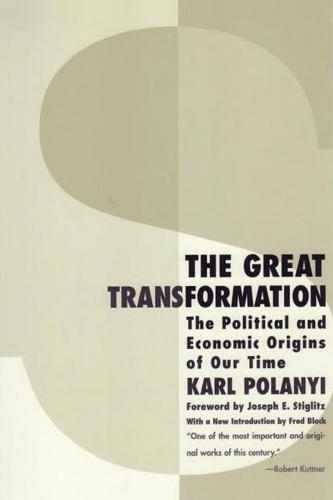
The Great Transformation: The Political and Economic Origins of Our Time
by
Karl Polanyi
Published 27 Mar 2001
Edward, 297, 300 Wilson, Woodrow, 23, 24 Wissel, Clark, 301 Wood, J., 297 Woollen industry, 36, 39, 77 Working class. See Labour. Workmen’s Compensation, 153–154 Workmen’s Compensation Act, 153–154 Workers’ Educational Association, 11 World War I, 21–22, 24, 197, 199, 221; compared with World War II, 30 W. P. A. (Works Progress Administration), 288 Wright, Quincy, 273 Young, Arthur, 112, 288, 289 Young, Sir W., 297 Young Plan, 224 Zamindar, 158 Zapotec Indians, 302 Zeisel, Hans, 11 Beacon Press 25 Beacon Street Boston, Massachusetts 02108–2892 www.beacon.org Beacon Press books are published under the auspices of the Unitarian Universalist Association of Congregations
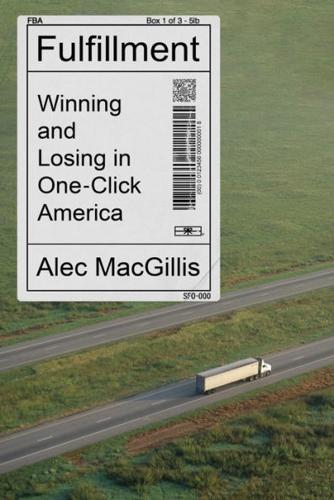
Fulfillment: Winning and Losing in One-Click America
by
Alec MacGillis
Published 16 Mar 2021
Whatever it was, by the time of his first run for office, Taylor had discovered his identity as a latter-day New Deal Democrat, a style that might’ve looked precious on someone else his age somewhere else, but seemed less out of place on a young man in Nelsonville, a place whose historical peak had come at a time not that far removed from the days when Franklin Roosevelt’s Works Progress Administration laid the water pipes through town. By the time Taylor returned to Nelsonville, more than a third of its population was living under the poverty line, one of the highest rates in all Ohio. The bricks were still there, a curiosity for any traveler who happened through town—a rarer occurrence after the Route 33 bypass opened in 2013.
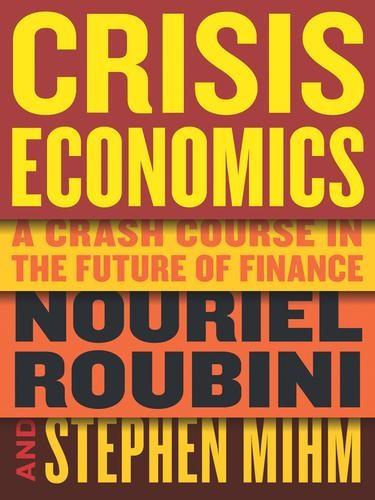
Crisis Economics: A Crash Course in the Future of Finance
by
Nouriel Roubini
and
Stephen Mihm
Published 10 May 2010
Beginning with Hoover’s early experiments and culminating with Roosevelt’s New Deal, public works projects large and small put people back to work and propped up the demand for goods and services. The amount of construction undertaken then remains impressive even today. The Public Works Administration, the Works Progress Administration, and the Civilian Conservation Corps built 24,000 miles of sewer lines, 480 airports, 78,000 bridges, 780 hospitals, 572,000 miles of highways, and upwards of 15,000 schools, court-houses, and other public buildings. The results, though hardly miraculous, were dramatic: from 1933 to 1937, unemployment fell from approximately 25 percent to a little under 15 percent.

Make Your Own Job: How the Entrepreneurial Work Ethic Exhausted America
by
Erik Baker
Published 13 Jan 2025
And like direct selling, odd-jobbery was a very old form of work that, due to its apparent imperviousness to the Depression, came to seem innovative—entrepreneurial—in the 1930s. The concept of “odd jobs” became central to the conservative approach to the issue of unemployment relief in the 1930s, which rejected federal deficit spending and the direct job-creation of the Works Progress Administration in favor of moral suasion aimed at both prospective employers and jobseekers. “There is one very good way in which the public generally can do its bit toward relieving the unemployment condition,” wrote Republican Senator Arthur Capper, chairman of the District of Columbia Committee, in a 1932 appeal to Washington home- and businessowners.

To Serve God and Wal-Mart: The Making of Christian Free Enterprise
by
Bethany Moreton
Published 15 May 2009
The Corporation’s subsidiaries included the Commodity Credit Corporation, the Electric Home and Farm 286 NOTES TO PAGES 32 – 3 4 26. 27. 28. 29. 30. 31. 32. 33. 34. 35. 36. 37. 38. Authority, the RFC Mortgage Company, the Federal National Mortgage Association, and the Export-Import Bank. Its loans fiÂ�nanced New Deal programs like the Agricultural Adjustment Act, the Tennessee Valley Authority, and the Works Progress Administration. Torbjorn Sirevag, The Eclipse of the New Deal (New York: Garland, 1985), 79; Timmons, Jesse H. Jones, 279–82. Bethany E. Moreton, “The Soul of the Service Economy: Wal-Mart and the Making of Christian Free Enterprise” (Ph.D. diss., Yale University, 2006), 47–49. Jesse H. Jones to the American Bankers Association, Chicago, September 5, 1933, quoted in Timmons, Jesse H.
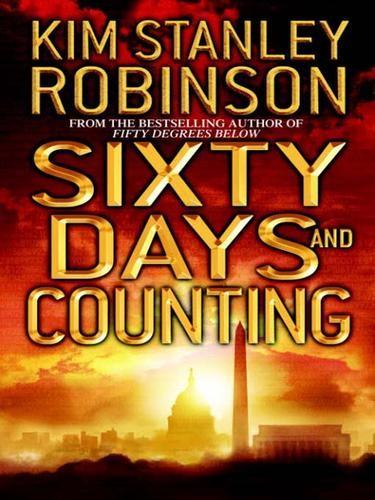
Sixty Days and Counting
by
Kim Stanley Robinson
Published 27 Feb 2007
It’s not a market commodity. Admitting that and moving on would remove one of the greatest fears of all. Another thing we could do would be to institute full employment. Government of the people, by the people, and for the people could offer jobs to everyone who wants one. It would be like the Works Progress Administration during the Depression, only more wide-ranging. Because there’s an awful lot of work that needs doing, and we’ve got the resources to get things started. We could do it. One of the more interesting aspects of full employment as an idea is how quickly it reveals the fear that lies at the heart of our current system.
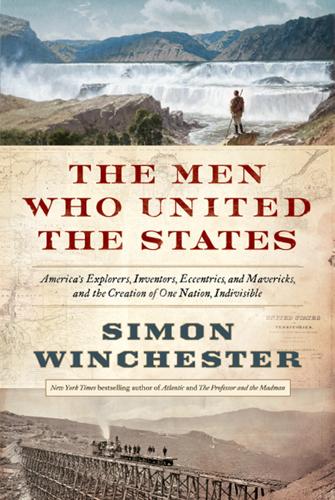
The Men Who United the States: America's Explorers, Inventors, Eccentrics and Mavericks, and the Creation of One Nation, Indivisible
by
Simon Winchester
Published 14 Oct 2013
There were as many as a hundred such bodies, some of them so small and hidden from view as to escape government audit; some massive, with gigantic budgets that were rammed through Congress by presidential fiat (and later found to have been unconstitutional—except that by then they had done their job of helping lift America out of the Depression). The bigger of the alphabet agencies ranged from the AAA, the Agricultural Adjustment Administration, a vital part of FDR’s farm-relief program, down to the WPA, the Works Progress Administration. For eight years, the WPA provided gainful employment for millions of jobless Americans, undertaking all manner of public works. Writers wrote government-supported books, poets performed in government-backed slams, and artists and musicians were commissioned to beautify hitherto unadorned corners of federally administered property.
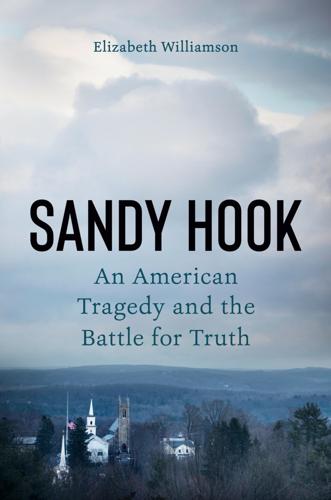
Sandy Hook: An American Tragedy and the Battle for Truth
by
Elizabeth Williamson
Published 8 Mar 2022
Steel had been on a team that had won a Pulitzer for revealing the millions of dollars in secret settlements Fox News had paid to women sexually harassed and victimized by Bill O’Reilly, at the time one of Fox’s star commentators. I summoned RideAustin, the city’s anti-Uber alternative, to take me to the Travis County courthouse on Guadalupe Street, a grand, gray “Depression Moderne’’ building with elaborate justice-themed bas-relief friezes, completed in 1931 by the Works Progress Administration. In a dark stone entryway I met up with Mark Bankston, Bill Ogden, and Bankston’s parents, Don and Susan, who had come in from Richmond for the hearing. Don, a grizzled and gruff central-casting Texas judge, was keen to talk with Mark and Ogden about the details of the case. Susan, a journalist in the mold of Texas humorist Molly Ivins, is a force of nature with wavy, wayward burnished-gold hair, big jewelry, and a big laugh.

Capitalism in America: A History
by
Adrian Wooldridge
and
Alan Greenspan
Published 15 Oct 2018
Coughlin started out as a fan of FDR, declaring that “the New Deal is Christ’s deal,” but, unsurprisingly given Coughlin’s overtowering ego and idiosyncratic politics, the two soon fell out, and Coughlin lambasted Roosevelt as an agent of various international conspiracies. FDR dealt with these criticisms by introducing the second New Deal—Social Security to provide a safety net, the Works Progress Administration (WPA) to provide an economic stimulus, and rights for trade unions—to provide a payback to some of his strongest supporters. The Social Security bill, unveiled on January 17, 1935, and enacted into law seven months later on August 14, was by far the most significant of these measures because it was intended to provide a permanent entitlement rather than a short-term stimulus to the economy.

Fodor's Oregon
by
Fodor's Travel Guides
Published 13 Jun 2023
Jordan Schnitzer Museum of Art ART MUSEUM | Works from the 20th and 21st centuries are a specialty in these handsome galleries on the University of Oregon campus. They feature works by many leading Pacific Northwest artists, and European, Korean, Chinese, and Japanese works are also on view, as are 300 works commissioned by the Works Progress Administration in the 1930s and ’40s. You can also view an ever-changing collection of important works from private collections by internationally recognized artists through the museum’s Masterworks On Loan program. E 1430 Johnson La., Eugene P 541/346–3027 w jsma.uoregon.edu A $5 C Closed Mon. and Tues.

Frommer's San Diego 2011
by
Mark Hiss
Published 2 Jan 2007
You can also check out the HMS Surprise, which had a star turn in the film Master and Commander: The Far Side of the World; a Soviet-era B-39 attack submarine; the Californian, a replica of a 19th-century revenue cutter; the Medea, a 1904 steam yacht; and the Pilot, which served as San Diego Bay’s official pilot boat for 82 years. From this vantage point, you get a fine view of the: 2 County Administration Center This complex was built in 1936 with funds from the Works Progress Administration, and was dedicated in 1938 by President Franklin D. Roosevelt. The 23-foot-high granite sculpture in front, Guardian of Water, was completed by Donal Hord—San Diego’s most notable sculptor—in 1939; it depicts a stoic woman shouldering a water jug. The other side of the building features carefully tended gardens.

The Relentless Revolution: A History of Capitalism
by
Joyce Appleby
Published 22 Dec 2009
Welfare legislation had been much more common in Europe than in the United States with its traditional partiality to individual liberty and self-help. In his famous “first hundred days,” President Franklin Delano Roosevelt shepherded through Congress laws giving direct relief to the jobless. Next came funding for work projects, later incorporated into the Works Progress Administration and the Public Works Administration, which built everything from aircraft carriers to schools, bridges, and roads. Millions entered the government’s payroll, constructing post offices, public art, and conservation projects. The major effort to coordinate industrial policies, the National Recovery Act, ran afoul of one of the strongest and most distinctive American values, the commitment to freedom over social planning, to individual rights over the general welfare.
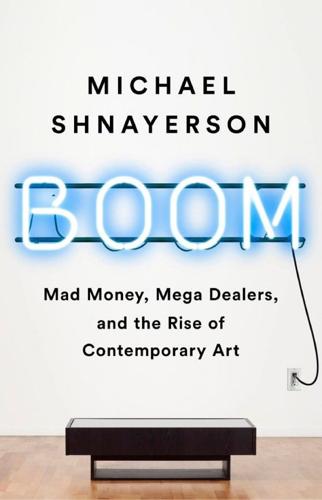
Boom: Mad Money, Mega Dealers, and the Rise of Contemporary Art
by
Michael Shnayerson
Published 20 May 2019
The Dutch-born De Kooning had grown up working-class in Rotterdam and, unlike most American artists, had formally apprenticed at a commercial decorating firm, immersing himself in Art Nouveau. He had arrived in New York as a stowaway in 1926 and supported himself by doing commercial art through the twenties. During the Depression, he had worked as a Works Progress Administration (WPA) artist, but a growing passion for his own art relegated him to penury by the late 1930s. It was on the verge of World War II that De Kooning’s circle expanded with the arrival of kindred spirits from the chaos of Europe: Marcel Duchamp, Marc Chagall, and André Breton, among others.

The Survival of the City: Human Flourishing in an Age of Isolation
by
Edward Glaeser
and
David Cutler
Published 14 Sep 2021
The federal administrators decided that if a neighborhood wasn’t sufficiently white, then it wasn’t sufficiently reliable. One Home Owners’ Loan Corporation report on Boyle Heights describes the area’s “class and occupation” as “Jewish professional & business men, Mexican laborers, WPA [Works Progress Administration] workers, etc.” The report claimed that the neighborhood was “literally honeycombed with diverse and subversive racial elements,” and its writers doubted “whether there is a single block in the area which does not contain detrimental racial elements.” The report was written in April 1939, a little more than two years before America went to war against the racist regime of Nazi Germany.

The Library: A Fragile History
by
Arthur Der Weduwen
and
Andrew Pettegree
Published 14 Oct 2021
In Los Angeles, after the stock market crash, book circulation rose by 60 per cent and the number of patrons doubled, even though the public library’s budget was cut by 25 per cent.29 Federal funding programmes of the New Deal era also brought some money for libraries, not least the packhorse librarians’ unit established by the Works Progress Administration (WPA) to serve mountain communities in Kentucky in 1936: a service that might well have been more useful for photo opportunities than as a real public amenity. By this time the birth of the automobile era had brought new, more cost-efficient opportunities to serve the needs of rural readers.
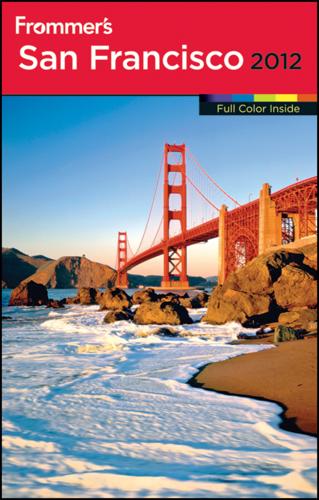
Frommer's San Francisco 2012
by
Matthew Poole
,
Erika Lenkert
and
Kristin Luna
Published 4 Oct 2011
In 2003, a 4-year renovation was completed and the building is now a spectacular mixed-use landmark building featuring a 660-foot-long, skylit nave, which had been partially filled in and destroyed in the 1950s. If you stop by the Ferry Building, you might also want to go to Rincon Center, 99 Mission St., to see the WPA (Works Progress Administration) murals painted by the Russian artist Refregier in the post office. Several important buildings are on or near Nob Hill. The Flood Mansion, 2222 Broadway St., at Webster Street, was built between 1885 and 1886 for James Clair Flood. Thanks to the Comstock Lode, Flood rose from being a bartender to one of the city’s wealthiest men.
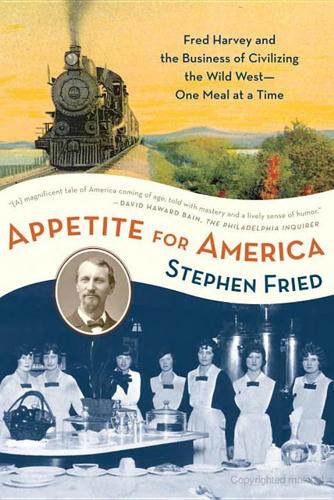
Appetite for America: Fred Harvey and the Business of Civilizing the Wild West--One Meal at a Time
by
Stephen Fried
Published 23 Mar 2010
BY 1935, THE DEPRESSION seemed as if it might be starting to lift, in response to a barrage of economic innovations from Franklin Roosevelt’s New Deal, which was entering its second phase. Some of the New Deal programs became permanent parts of the American economy, such as Social Security, the Securities and Exchange Commission, and the FDIC, which insured bank deposits. Others had lasting impact, like the Works Progress Administration, which among its many jobs programs created public art all across the country. And some were experiments that ultimately failed, including the price and wage controls attempted under the short-lived National Recovery Administration (NRA), an attempt to create a “code of fair competition” for each industry.

The Splendid and the Vile: A Saga of Churchill, Family, and Defiance During the Blitz
by
Erik Larson
Published 14 Jun 2020
Yet this was Harry Hopkins, the man Churchill would later describe as playing a decisive part in the war. Hopkins was fifty years old, and now served as Roosevelt’s personal adviser. Before this point, he had led three major programs of Roosevelt’s Depression-era New Deal, including the Works Progress Administration, or WPA, which put millions of unemployed Americans to work. Roosevelt named him secretary of commerce in 1938, a post he held well into 1940 despite declining health. Surgery for stomach cancer had left him plagued by a mysterious suite of ailments that in September 1939 led his doctors to give him only a few weeks to live.
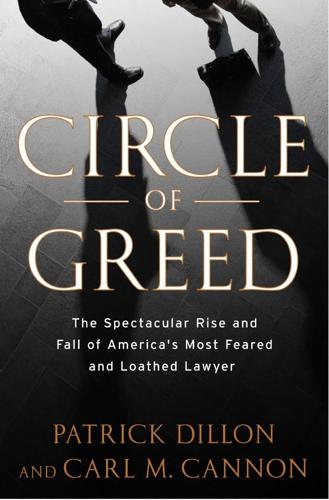
Circle of Greed: The Spectacular Rise and Fall of the Lawyer Who Brought Corporate America to Its Knees
by
Patrick Dillon
and
Carl M. Cannon
Published 2 Mar 2010
Then he turned somber, recounting the assault on trial lawyers such as himself, during the current decade, by corporate and Wall Street interests, various would-be populists, and politicians of various stripes, particularly conservatives in and out of the Bush administration who, in the name of “tort reform,” were making it more and more difficult for attorneys to seek redress in the name of shareholders. “But remember, no good deed goes unpunished,” he had warned the future lawyers in Pittsburgh, not aware that his speech contained an element foreshadowing his own life. Cucinotta turned the limo off Wilshire toward the stodgy-looking federal district courthouse, a Depression-era Works Progress Administration project finished in 1940. Lerach had appeared in its courtrooms hundreds of times. Finally, a right turn to their destination, 255 East Temple Street, the address of the twenty-one-story modern office tower sheathed in red granite named the Edward R. Roybal Federal Building. Because of the size and scope of the Los Angeles federal court jurisdiction—it services nearly eighteen million residents and processes nearly 12,000 criminal and civil cases yearly—two buildings, the old courthouse and the Roybal Building, handle the load.
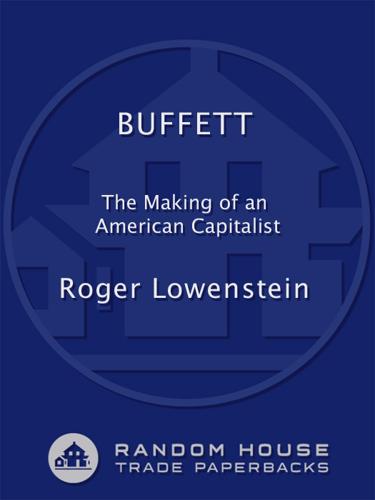
Buffett
by
Roger Lowenstein
Published 24 Jul 2013
Warren’s sisters declined to discuss their mother’s “moods” in detail, but confirmed that Leila had such outbreaks and provided background. 18. Peter Buffett. 19. Stuart Erickson. 20. Arthur W. Baum, “Omaha,” Saturday Evening Post, September 10, 1949. 21. “Omaha: A Guide to the City and Environs” (unpublished, part of the American Guide Series, Federal Writers’ Project, Works Progress Administration, 1930s). For descriptions of Depression Omaha, see also A Comprehensive Program for Historic Preservation in Omaha (Omaha: Landmarks Heritage Preservation Commission, 1980); Baum, “Omaha”; Larsen and Cottrell, The Gate City; and Leighton, “Omaha, Nebraska.” 22. “Buffett Files for Congress, Fights ‘Political Servitude,’ ” Omaha World-Herald, June 29, 1942. 23.

USA Travel Guide
by
Lonely, Planet
This incredible library contains more than 3.5 million genealogy-related microfilms, microfiches, books and other records gathered from more than 110 countries. GREATER DOWNTOWN State Capitol HISTORIC BUILDING (www.utahstatecapitol.utah.gov; admission free; 8am-8pm Mon-Fri, 8am-6pm Sat & Sun) The grand, 1916 State Capitol is set among 500 cherry trees on a hill north of Temple Sq. Inside, colorful Works Progress Administration (WPA) murals of pioneers, trappers and missionaries adorn part of the building’s dome. Free hourly tours (from 9am to 4pm) start at the 1st-floor visitor center. Pioneer Memorial Museum MUSEUM (www.dupinternational.org; 300 N Main St; admission free; 9am-5pm Mon-Sat year-round, 1-5pm Sun Jun-Aug) Vast, four-story treasure trove of pioneer artifacts.
…
FISHERMAN’S WHARF Aquatic Park Bathhouse HISTORIC BUILDING Offline map Google map ( 415-447-5000; www.nps.gov/safr; 499 Jefferson St, at Hyde St; 10am-4pm) A monumental hint to sailors in need of a scrub, this recently restored, ship-shape 1939 streamline moderne landmark is decked out with Works Progress Administration (WPA) art treasures: playful seal and frog sculptures by Beniamino Bufano, Hilaire Hiler’s surreal underwater dreamscape murals and recently uncovered wood reliefs by Richard Ayer. Acclaimed African American artist Sargent Johnson created the stunning carved green slate marquee doorway and the verandah’s mesmerizing aquatic mosaics, which he deliberately left unfinished on the east side to protest plans to include a private restaurant in this public facility.
…
New York’s 1913 Armory Show was merely the first in a series of exhibitions evangelizing the radical aesthetic shifts of European modernism, and it was inevitable that American artists would begin to grapple with what they had seen. Alexander Calder, Joseph Cornell and Isamu Noguchi produced sculptures inspired by surrealism and constructivism; the precisionist paintings of Charles Demuth, Georgia O’Keeffe and Charles Sheeler combined realism with a touch of cubist geometry. In the 1930s, the Works Progress Administration’s (WPA) Federal Art Project, part of FDR’s New Deal, commissioned murals, paintings and sculptures for public buildings nationwide. WPA artists borrowed from Soviet social realism and Mexican muralists to forge a socially engaged figurative style with regional flavor. Abstract Expressionism In the wake of WWII, American art underwent a sea change at the hands of New York school painters such as Franz Kline, Jackson Pollock and Mark Rothko.
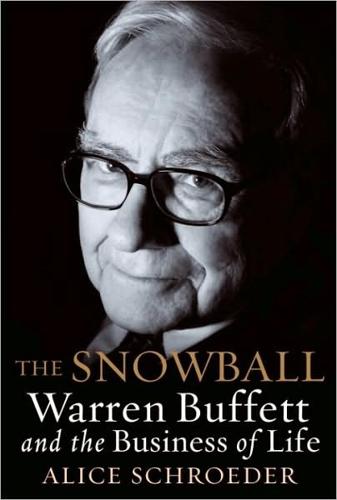
The Snowball: Warren Buffett and the Business of Life
by
Alice Schroeder
Published 1 Sep 2008
In letters like one to his son Clarence in January 1931, he analyzed the effect of railroad automation on unemployment and suggested that the best solution for the Great Depression was a great public-works project. It seems ironic that he and his son Howard became such foes of Roosevelt when he initiated the Works Progress Administration after the next election. 16. Ernest Buffett letter to Fred and Katherine Buffett, undated, “ten years after you were married,” circa June 1939. 17. He died young, in 1937, in an auto accident in Texas. 18. Coffee with Congress, radio interview with Howard, Leila, Doris, and Roberta Buffett, WRC Radio, October 18, 1947, Bill Herson, moderator.
…
Omaha to Have Belated Party,” Omaha World-Herald, August 9, 1933; “Nebraska Would Have Voted Down Ten Commandments, Dry Head Says,” Omaha World-Herald, November 15, 1944; “Roosevelt Issues Plea for Repeal of Prohibition,” Associated Press, July 8, 1933, as printed in Omaha World-Herald. 26. U.S. and Nebraska Division of Agricultural Statistics, Nebraska Agricultural Statistics, Historical Record 1866–1954. Lincoln: Government Printing Office, 1957; Almanac for Nebraskans 1939, The Federal Writers’ Project Works Progress Administration, State of Nebraska; Clinton Warne, “Some Effects of the Introduction of the Automobile on Highways and Land Values in Nebraska,” Nebraska History quarterly, The Nebraska State Historical Society, Vol. 38, Number 1, March 1957, page 4. 27. In Kansas, a banker sent to foreclose on a farm turned up dead, shot full of .22-and .38-caliber bullets and dragged by his own car.
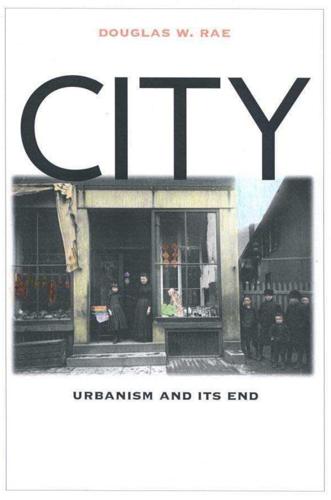
City: Urbanism and Its End
by
Douglas W. Rae
Published 15 Jan 2003
Yankees were “shrewd and set in their ways,” Poles “slow-witted” and “stubborn and phlegmatic,” Jews “ambitious” but “aggressive and loud,” Italians “slow learning” and “emotional and temperamental” but musically and artistically inclined, African-Americans were carefree and happy, and (like Italian children) gifted in music and art. Carl F. Butts and Joseph Young, “Education in Connecticut: A Study of Public, Parochial, and Sunday School Education in Connecticut, with Emphasis on the Ethnic Factors” (Peoples of Connecticut Ethnic Heritage Project, Works Progress Administration, Federal Writers’ Project, New Haven Division, April 1939), box 37, folder 134:5a, 264 –65; Manuscripts and Archives, University of Connecticut Libraries, Storrs. Lassonde, “Learning to Forget.” Enrollments in the elementary schools ranged from 100 to a few hundred pupils, and between 1,500 and 2,000 students attended the junior high schools.

The Making of Global Capitalism
by
Leo Panitch
and
Sam Gindin
Published 8 Oct 2012
capacities, 7–9, 21, 30, 35, 45, 48, 53, 55, 58, 61–3, 68, 81–2, 89, 105, 112, 131, 147, 205, 224, 230, 251, 259, 277, 298, 312, 315, 325, 330, 336 conflict within not between, 21, 330 ‘effective’, 18, 220, 241–2, 247 internationalization of, 4, 8, 14, 35, 37, 124, 153, 224 and markets, 1, 3, 105, 405n22 relative autonomy, 4, 7, 9, 46, 55–6, 70, 74, 79, 93, 105, 170, 232, 324, 389n65 theory of capitalist, 3–5, 342n.9, 344n. 19 weak vs. strong, 8, 26, 259, 351n.33, 403–4n11, 422n57 welfare, 9, 59, 80, 89–90, 98, 106, 158, 198, 227, 336, 338 State, Department of (US), 35, 39, 69–73, 87, 91–5, 123, 148, 158, 216, 230, 232, 256–261, 355n.1, 357–8n29, 358n.30, 362n.4, 364n.19, 366n.42, 370n.81, 372n.14, 373n.21 Stead, William, 31 Stedman Jones, Gareth, 343n14 Strange, Susan, 13, 90, 406–7n.53 sterling, 12, 36, 49, 52–4, 57, 76–7, 92, 102, 117, 127, 143, 157–8, 366n41, 380n18 Stiglitz, Joseph, 269, 424n.95 Stimson, Henry, 73, 80, 90, 373n27 Streek, Wolfgang, 404n13 Strong, Benjamin 51 stock market, 29, 138, 180, 199, 200, 305 crash of 1907, 42 crash of 1929, 46, 52–3 crash of 1987, 180–3, 209–10, 267 crash of 2000, 301, 400n83 ‘irrational exuberance’, 304 and Japan, 205, 211 recovery after 1987, 183 and workers’ pensions, 192 structural adjustment, 17, 165, 171, 216, 223, 239–41, 244, 248, 257, 304, 328, 421n36, 424n95 Marshal Plan as, 89, 96, 357n. 20, Mexico, 214–5, 251 New York City, 165 Thailand, 421n36 See also IMF, World Bank structural power, 13, 133, subprime mortgages, 140, 307, 311, 318 Suharto, 261 Summers, Lawrence, 18, 229, 256, 260–2, 261, 268, 277–8, 418n2, 422n60, 424n94, 425n95 Supreme Court (US), 59, 117, 178, 228, 234, 352n36, 361n63, 412n18 Lochner decision (1905), 34 Sweden, 98, 123, 143, 198 financial liberalization, 198, 403–4n11 Meidner Plan/wage earners fund, 143, 198 Sweezy, Paul, 380–1n24 Switzerland, 72, 97, 123, 154, 253 Systemically Important Financial Institutions (SIFIs), 323, 441n80 Taft, William Howard (administration of), 35, 41, 48 Taft–Hartley Act (1947), 83 Taiwan, 94, 97, 205, 288, 296, 298 Tax Reform Act (1986), 269 Taylorism, 30 Tea Party, 329 Tett, Gillian, 176, 205, 262, 275 Thailand, 106, 213, 254–5, 261, 278, 280–1, 328, 421n36 Thatcher, Margaret, 15, 158, 196, 206, 405n22 Third World, 2, 12–3, 17, 91, 104–7, 105, 112, 116, 125, 133–4, 144, 155–7, 179, 213, 218, 220, 230, 275, 292 Thompson, E.P., 342n8 Tocqueville, Alexis de, 27, 31 Toyota, 106, 207, 402n113 Trade Act (1934), 94, Trade Act (1974) 151, 156, 164 224–5 Trade Expansion Act (1962), 125 transnational capitalist class, 11, 345n26 Treasury, Department of (US), 10, 13–7, 21, 32, 42, 48–9, 86–7, 119, 123–30, 134, 145, 151, 156–8, 170, 208, 214–6, 237–40, 243, 247, 251, 256–63, 266–70, 280–1, 313–6, 320–5, 335–6 1951 accord with Federal Reserve, 86, 122, 239, 369n76 and ‘An American Proposal,’ 362n3 and approaching 2007 crisis, 312–14, 439n.46 and Asian Crisis, 18, 247–61, 422n66 and Bretton Woods, 70–80, 366n42, 367n50 and deregulation, 178, 399n75 and the dollar crisis, 123–7, 130–1, 381n37, 382n46, 395n19 Exchange Stabilization Fund (ESF), 250, 252–3, 257 and IMF, 428n37 and New Deal, 61, 361n74 international division of, 250 failure containment, 18, 248, 266, 268, 302, 321–2, 332 lender of last resort, 250, 302 listening post for Wall Street, 250–1 Mexican bailout, 250–4, 420n21 under Obama, 320–4 See also banks/banking; bonds; crisis; finance; OCC Treaty of Detroit, 83–4 Treaty of Rome, 100, 113 Trilateral Commission, 163 Tripartite Monetary Agreement (1936), 72, 366n39 Troubled Assets Relief Program (TARP 2008), 316–7 Truman, Harry, 86, 93–4, 105, 226, 360n62 Truman Doctrine, 94–5 Truth-in-Lending Act (1968), 142 Turkey, 51, 97, 105, 217, 231, 281, 287, 301, 303, 429n47 Turner, Frederick Jackson, 29 UK See Britain United Nations. 74, 97, 116, 156, 332 Charter of Economic Right (1974), 144, 219 Underwood Tariff (1913), 49 unemployment, 27, 29, 52, 54, 56, 59, 61, 80, 127, 133, 138, 140–1, 152, 165, 167–9, 171, 182–3, 197, 202, 260, 291, 304, 310, 321, 326, 329, 368n61, 397n46 unions, 29, 33–4, 52, 58–61, 82–4, 97, 103, 115, 136, 141, 171, 259, 271, 337, 398n66 attack on, 60, 82–4, 106, 127–8, 165, 172, 177 collective bargaining, 58–60, 83–4, 121, 136, 171 rank-and-file militancy, 83, 137, 171 strikes, 33, 58–61, 82–4, 127–8, 136, 140–1, 165, 171–2, 198, 258–9, 337 wage militancy, 104, 172, 385n17 weakness of, 171, 187, 205, 269, 337–8, 394n11, 397n46 See also individual unions United Auto Workers (UAW), 83–4, 136, 171, 397n46 US: balance of payments, 14, 19, 52, 74, 76–7, 118, 125–7, 129, 147–8, 156, 182, 224–5, 292, 300, 311, 313 banker for the world, 124, 126 Civil War, 27–9, 32 Constitution, 26, 32 economic restructuring (1980s–90s), 187–93 exports, 16, 34–5, 45, 49, 70, 80, 98, 100, 127, 207, 209–11, 229, 283, 291 films, 25, 50 food aid, 125, 156, 408n87 foreign production in, 210, 226, 281 isolationism misleading, 45–6, 50 as new ‘Great Power’ 36, 63, and imperialism, 1, 6–7, 11, 67–8, 87, 90, 232 early industrialization, 27–8 imports, 12, 19, 52, 70, 81, 89, 99–100, 151, 181, 188, 190, 207, 214, 225, 229, 283, 291, 334 lender of last resort, 250 Navy, 36, 47, 353n50 and global oil security, 103 trade deficits, 12, 17, 19, 183, 208, 291, 300 supports rivals, 89, 112, 201–2 unique responsibilities of, 334 United States Trade Representative (USTR), 17, 182, 280, 224, 226, 231–2 Underwood Tariff (1913), 152 Van Harten, Gus, 232 Venezuela, 215, 241 Versailles Treaty, 356n15 Vietnam War, 127, 129, 133, 143, 421n36 Vittoz, Stanley, 360n58 Vogel, David, 387n34 Vogel, Steven, 397n52 Volcker, Paul, 14, 18, 87, 124–6, 130–1, 141, 145, 152, 155, 163, 167–73 175, 177–81197, 206, 214–5, 236, 239, 262, 301, 305, 320, 322, 3 388n49, , 435n15 Volcker shock, 14, 127, 138, 163, 168–73, 178–9, 206–7, 214, 249, 397nn43–4 Volcker Rule, 323 Volkswagen, 101, 202 Wade, Robert, 429n33 Waddell, Brian, 361n68, 362n77, 365n30 Wagner Act (1935), 59–61, 361n63 Walker, Richard, 348n8 Wall Street Reform and Consumer Protection Act (2010), 322 See also Dodd–Frank Act Wal-Mart, 289 Walters, Andrew, 442n95 Warburg, Paul, 43 Warner, John DeWitt, 43 Washington, George, 25 Washington Consensus, 239, 282 Washington Mutual, 315 Watergate, 145 Watson, Justin, 142 Weiss, Linda, 422n57 White, Harry Dexter, 72, 74–6, 78, 80, 123, 240, 365n27, 366n39, 366n41, 367n48, 369n76 Williams, William Appleman, 343–4n16, 353n50 Williamson, John, 239, 388n53 Wilson, Woodrow (administration of), 45–8, 356n11, 356n15 Wilkins, Myra, 30 Wolf, Martin, 264, 320 Wood, Ellen Meiksins, 342n12 Woodcock, Leonard, 143 Wooley, John, 382n29 World Trade Center, 301 World War I (Great War), 5, 25, 29, 41–5, 48–54, 57–8, 76, 79, 81, 282, 330, 339 World War II, 7, 10–12, 26–7, 45–6, 49, 63, 69–72, 79–82, 89, 94, 128–9, 142, 195–6, 207, 224, 228, 318–9 Works Progress Administration (WPA), 60 World Bank, 9, 18, 91, 122 146, 220, 223, 239, 269, 278, 339, 418n2, 418n83, 424n95, 428n37 conception of, 75, 78 ‘effective states’ 18, 220, 241–2 and Mexican bailout, 254 Nixon vs, 155 protests against, 271 US dominates, 391n96 voting power in, 76 World Trade Organization (WTO), 17, 220, 223, 229–30, 233, 276, 291, 293–4, 296, 300 Yeo, Edwin, 158–9 yen, 203–4–207–10, 255, 261 Zetsche, Dieter, 201 Copyright First published by Verso 2012 © Leo Panitch and Sam Gindin 2012 All rights reserved The moral rights of the authors have been asserted 1 3 5 7 9 10 8 6 4 2 Verso UK: 6 Meard Street, London W1F 0EG US: 20 Jay Street, Suite 1010, Brooklyn, NY 11201 www.versobooks.com Verso is the imprint of New Left Books Epub ISBN-13: 978-1-84467-945-4 British Library Cataloguing in Publication Data A catalogue record for this book is available from the British Library Library of Congress Cataloging-in-Publication Data Panitch, Leo.
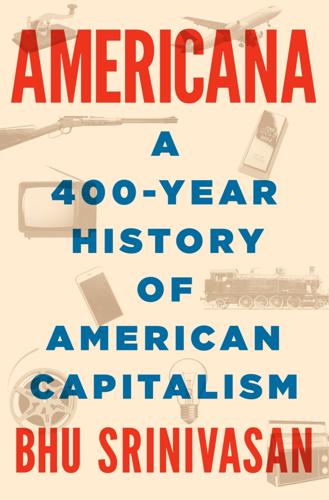
Americana: A 400-Year History of American Capitalism
by
Bhu Srinivasan
Published 25 Sep 2017
His father was out of work, and Reagan was desperate himself, looking at bleak career prospects to start his adult life. In the 1932 presidential election, the first he was eligible to vote in, he enthusiastically cast his ballot for FDR and then watched the government’s emergency measures resuscitate the economy. His father was a prime beneficiary, becoming the local head of the Works Progress Administration, which put people to work building roads and bridges. Reagan, as he came of age, saw the depths of misery afflicting the small-town merchant and the beleaguered farmer and, at the time, approved of the government’s role in easing the crisis. Soon after graduation, Reagan applied for a job at a local Montgomery Ward to head up the sports department, but he lost the job to a fellow basketball star from his high school.

Americana
by
Bhu Srinivasan
His father was out of work, and Reagan was desperate himself, looking at bleak career prospects to start his adult life. In the 1932 presidential election, the first he was eligible to vote in, he enthusiastically cast his ballot for FDR and then watched the government’s emergency measures resuscitate the economy. His father was a prime beneficiary, becoming the local head of the Works Progress Administration, which put people to work building roads and bridges. Reagan, as he came of age, saw the depths of misery afflicting the small-town merchant and the beleaguered farmer and, at the time, approved of the government’s role in easing the crisis. Soon after graduation, Reagan applied for a job at a local Montgomery Ward to head up the sports department, but he lost the job to a fellow basketball star from his high school.

Frommer's Oregon
by
Karl Samson
Published 26 Apr 2010
Barlow blazed a trail across the south flank of Mount Hood, and the following year he opened his trail as a toll road. The Barlow Trail, though difficult, was cheaper and safer than rafting down the river. The trail is now used for hiking and mountain biking. During the Great Depression, the Works Progress Administration employed skilled craftsmen to build the rustic Timberline Lodge at the tree line on the mountain’s south slope. Today the lodge is a National Historic Landmark and is the main destination for visitors to the mountain. The lodge’s vista of Mount Hood’s peak and of the Oregon Cascades to the south gets my vote for the state’s most unforgettable view.
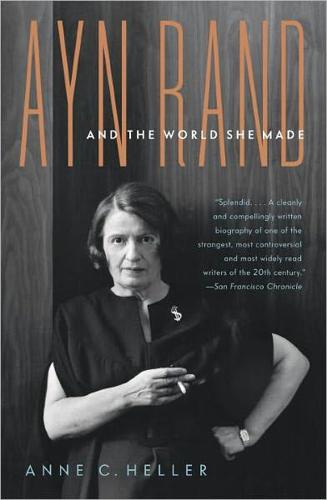
Ayn Rand and the World She Made
by
Anne C. Heller
Published 27 Oct 2009
By the time the play had closed on April 4, 1936, three days before the publication of her novel, theatrical rights had been sold to producers in London, Vienna, Budapest, Berlin, Switzerland, Poland, and elsewhere. A return engagement was already filling seats in the El Capitan Theatre in Los Angeles, and a road show was about to open in Chicago. Somewhat ironically, Watkins had negotiated a contract with Franklin Roosevelt’s new federal Works Progress Administration to bring performances of the play to local theaters across the country. Although by 1936 Rand strongly disapproved of Roosevelt and his New Deal programs, the WPA provided her with royalties of ten dollars per performance, a small fortune, throughout the later 1930s. And because the play’s single courtroom setting made for easy staging, it also became a favorite of privately run summer-stock companies, generating a sometimes larger, sometimes smaller stream of income until her death.

USA's Best Trips
by
Sara Benson
Published 23 May 2010
Stop in the town of Hood River where you’ll find loads of great restaurants, two breweries and some of the best windsurfing and kiteboarding conditions in the world. It’s a great place to spend a few days taking windsurfing lessons, hiking and exploring Mt Hood, only 45 minutes away via Hwy 35. Be sure to eat at, sleep at or just plain walk around the historic Timberline Lodge on the south side of the mountain. Built by Oregon’s Works Progress Administration in 1936 and 1937, the 73,700-sq-ft log-and-stone lodge is a masterpiece of national-park architecture. Inside, the Cascade Dining Room serves expertly prepared, gourmet meals with an emphasis on local cuisine. The all-you-can-eat buffet breakfasts are a great way to enjoy the dining room if you’d rather not shell out for dinner.
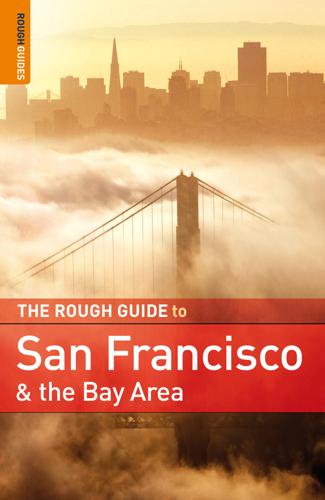
Rough Guide to San Francisco and the Bay Area
by
Nick Edwards
and
Mark Ellwood
Published 2 Jan 2009
Provided there isn’t too long a line for the cramped elevator, the trip to the open-air viewing platform is well worth the few dollars – it’s a stunning, eightway panorama with unimpeded vistas in every direction. Coit Tower’s ground-floor lobby is notable for more than its handy restrooms: the frescoes wrapped around the interior’s base were part of a project overseen by the Public Works of Art Project (a forerunner to the better-known Works Progress Administration), which employed artists to decorate public and government buildings during the Depression. Over two dozen painters were chosen for this project – entitled Aspects of Life in California – all of them students of the famous Mexican Communist artist, Diego Rivera. As with much of Rivera’s work, the figures here are muscular and somber, emphasizing the Loopy Lillie, the fireman’s mascot | Telegraph Hill and around glory of labor, although there’s a wide variation in style and quality between panels despite their thematic cohesion.
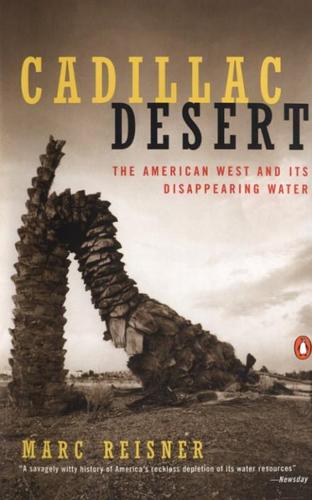
Cadillac Desert
by
Marc Reisner
Published 1 Jan 1986
Ickes ran not only the Interior Department—in which were the Bureau of Reclamation, the Civilian Conservation Corps, the National Park Service, and the Fish and Wildlife Service—but the Public Works Administration as well. The PWA was a catch basin of programs with a chameleon identity (it was also known as the Civil Works Administration and the Works Progress Administration) and interchangeable leaders (first Harry Hopkins, then Ickes, then Hopkins again). In a few years, it had overseen the building of the Lincoln Tunnel, the Washington Zoo, the Triborough Bridge, Fort Knox, Denver’s water-supply system, a deepwater port at Brownsville, Texas, the huge Camarillo Hospital in southern California, and the causeway to Key West.
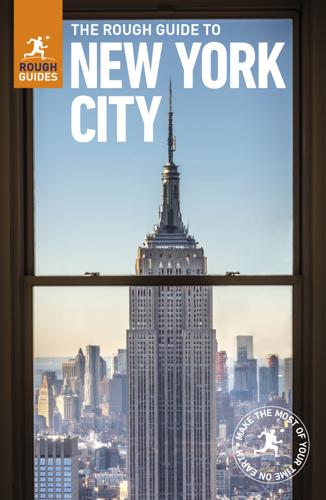
The Rough Guide to New York City
by
Rough Guides
Published 21 May 2018
By 1932 approximately one in four New Yorkers was out of work, and shantytowns, known as “Hoovervilles” (after then-President Hoover, widely blamed for the Depression), had sprung up in Central Park to house the jobless and homeless. The 1930s were a mixed bag in the city. The decade that began with the Great Depression also saw a number of architectural landmarks built (see box opposite) as well as – with the help of the Works Progress Administration (WPA) – New York’s largest pool, in Astoria Park, Queens. In 1939–40, Queens hosted the World’s Fair, in Flushing Meadows–Corona Park; the year-long event focused largely on technology and the future. The country’s entry into World War II in 1941 saw New York take on a top-secret role: the Manhattan Project, wherein scientists at Columbia University performed the experiments crucial to the creation of the first atomic weapon.
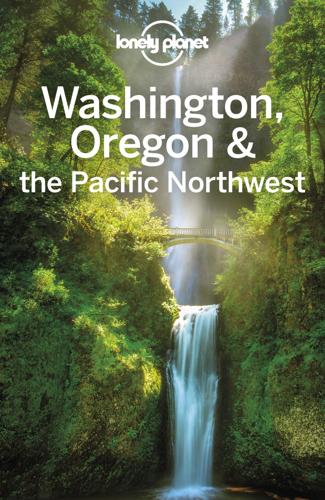
Lonely Planet Washington, Oregon & the Pacific Northwest
by
Lonely Planet
Together with the Columbia River Hwy, these routes comprise the Mt Hood Loop, a popular scenic drive. Government Camp, the center of business on the mountain, is at the pass over Mt Hood. 1Sights Timberline LodgeLANDMARK (%800-547-1406; www.timberlinelodge.com; 27500 Timberline Rd) The building of Timberline Lodge in 1936–37 was a huge project for the Works Progress Administration (WPA), which employed up to 500 workers to construct the 43,700-sq-ft, log-and-stone lodge by hand, using local stone and timber. To emphasize the area’s natural beauty, architects designed the six-sided central tower to echo the faceted peak of Mt Hood. Lost LakeLAKE (www.fs.usda.gov; 9000 Lost Lake Rd; day use per vehicle $7; hMay-Oct 15) Take your own postcard photo of Mt Hood from Lost Lake, which frames the white peak rising from a deep-blue lake amid thick green forest.
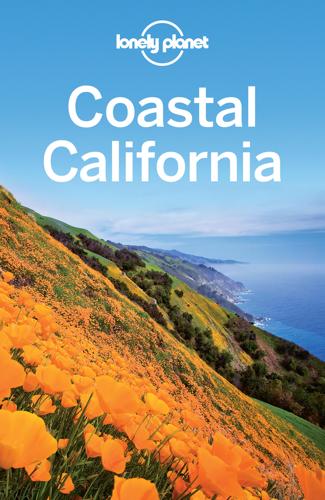
Coastal California
by
Lonely Planet
Pop artists captured SoCal’s ethos of conspicuous consumerism through Wayne Thiebaud’s still-life gumball machines, British émigré David Hockney’s acrylic paintings of LA pools and Ed Ruscha’s canvas and film studies. LATINO MURALS: TAKING IT TO THE STREETS Beginning in the 1930s, when the federal Works Progress Administration sponsored schemes to uplift and beautify cities across the country, murals came to define Californian cityscapes. Mexican muralists Diego Rivera, David Alfaro Siqueiros and José Clemente Orozco sparked an outpouring of murals across LA that today number in the thousands. Rivera was also brought to San Francisco for murals at the San Francisco Art Institute, and his influence is reflected in the interior of San Francisco’s Coit Tower and scores of murals lining the Mission District, now being expanded by Precita Eyes (www.precitaeyes.org).
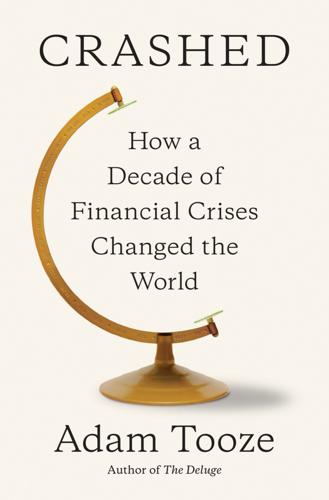
Crashed: How a Decade of Financial Crises Changed the World
by
Adam Tooze
Published 31 Jul 2018
This left $279 billion for discretionary spending, of which the president’s priorities of green energy and improvements to broadband received $27 billion and $7 billion, respectively.8 Altogether, the stimulus would patch up or replace 42,000 miles of road and 2,700 bridges. But unlike in the era of the New Deal, there would be no eye-catching logos, no charismatic monuments like those left by the Works Progress Administration.9 Nevertheless, it was substantial. In absolute terms it was on a par with the spending of the New Deal. Though it was smaller in relation to a much larger national economy, the Obama stimulus was concentrated over a shorter space of time.10 In 2009 it placed America alongside the Asian states in the league of activists, outstripping any discretionary fiscal measures taken in Europe.
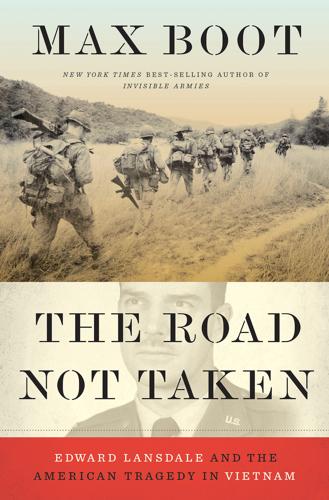
The Road Not Taken: Edward Lansdale and the American Tragedy in Vietnam
by
Max Boot
Published 9 Jan 2018
“Final Report of the Select Committee to Study Governmental Operations with Respect to Intelligence.” Washington, DC: Government Printing Office, 1976. U.S. Senate. “Executive Session of the Senate Foreign Relations Committee.” Vol. XVII. 89th Congress, 1st sess., 1965. Washington, DC: Government Printing Office, 1990. U.S. Works Progress Administration. Los Angeles in the 1930s: The WPA Guide to the City of Angels. Berkeley: University of California Press, 2011. ______. San Francisco in the 1930s: The WPA Guide to the City by the Bay. Berkeley: University of California Press, 2011. ______. The WPA Guide to New York City. New York: New Press, 1939.

Presidents of War
by
Michael Beschloss
Published 8 Oct 2018
Contradicting his alleged hostility toward Lash, the President wrote Eleanor, six days before his death, that “probably the same crowd” (most likely he meant the FBI and G-2) was “trying to ‘get’ Joe.” He assured her that he was wiring Stimson “to do nothing further about withholding his commission until I get back.” *27 The Works Progress Administration, a cornerstone of Roosevelt’s early New Deal, which fought unemployment by offering millions of public works jobs, was a conservative bugaboo. *28 Some later speculated that he also suffered from one or more forms of cancer that may have spread to his brain. Most of his medical records disappeared after his death
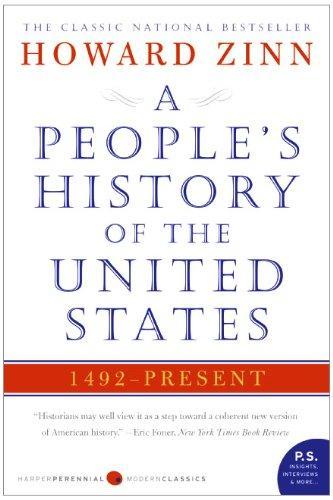
A People's History of the United States
by
Howard Zinn
Published 2 Jan 1977
The Southampton Slave Revolt of 1831. Amherst, Mass.: University of Massachusetts Press, 1971. Wiltse, Charles M., ed. David Walker’s Appeal. New York: Hill & Wang, 1965. *Woodward, C. Vann. Reunion and Reaction: The Compromise of 1877 and the End of Reconstruction. Boston: Little, Brown, 1966. Works Progress Administration. The Negro in Virginia. New York: Arno Press, 1969. 10. THE OTHER CIVIL WAR Bimba, Anthony. The Molly Maguires. New York: International Publishers, 1970. Brecher, Jeremy. Strike! Boston: South End Press, 1979. *Bruce, Robert V. 1877: Year of Violence. New York: Franklin Watts, 1959.
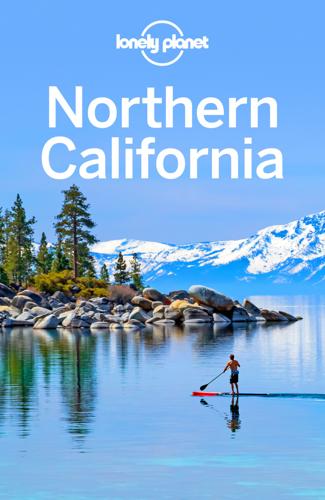
Northern California Travel Guide
by
Lonely Planet
oCoit TowerPUBLIC ART ( MAP GOOGLE MAP ; %415-249-0995; www.sfrecpark.org; Telegraph Hill Blvd; nonresident elevator fee adult/child $8/5; h10am-6pm Apr-Oct, to 5pm Nov-Mar; g39) The exclamation mark on San Francisco's skyline is Coit Tower, with 360-degree views of downtown and wraparound 1930s Works Progress Administration (WPA) murals glorifying SF workers. Initially denounced as communist, the murals are now a national landmark. For a wild-parrot's panoramic view of San Francisco 210ft above the city, take the elevator to the tower's open-air platform. To glimpse seven recently restored murals up a hidden stairwell on the 2nd floor, join the 11am tour Wednesday or Saturday (free; donations welcome).
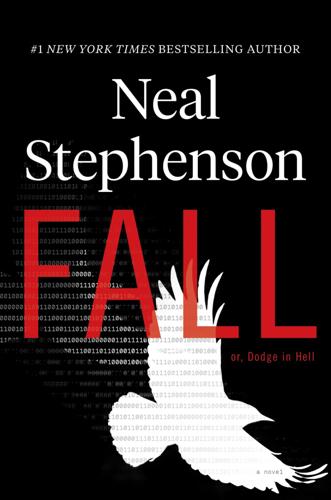
Fall; Or, Dodge in Hell
by
Neal Stephenson
Published 3 Jun 2019
A windowless steel door, painted Parks Department green, bore testimony to generations of bored teens’ fruitless efforts to kick their way in—or, failing that, to attest to who sucked. A plaque next to the door supplied information they’d already seen in their glasses, which was that the tower had been erected by otherwise idle laborers during the Depression under the auspices of the Works Progress Administration. This seemed like the kind of historical/political minutia that Princeton kids ought to have heard of, so they all followed the inevitable hyperlink and spent a minute standing there reading about it. It was the sort of basically dead and inert topic that Wikipedia had actually been pretty good at covering, and enough time had passed that AIs had gone over all of this material and vetted it for mistakes.

The power broker : Robert Moses and the fall of New York
by
Caro, Robert A
Published 14 Apr 1975
La Guardia LI Long Island LIE Long Island Expressway LIRR Long Island Rail Road LISPC Long Island State Park Commission MCTA Metropolitan Commuter Transportation Authority MRTC Metropolitan Rapid Transit Commission NYC New York City NYT The New York Times OHR Oral History Reminiscence(s) O'D William O'Dwyer PD Park Department PEM Paul Emanuel Moses Post New York Post PWA Public Works Administration RM Robert Moses TA New York City Tunnel Authority TBA Triborough Bridge Authority TBTA Triborough Bridge and Tunnel Authority WF World's Fair WPA Works Progress Administration WT New York World-Telegram WT&S New York World-Telegram and Sun INTRODUCTION : Wait Until the Evening NOTES Swimming team episode: Author's interviews with E. C. M. Richards; although no other person was present at the Moses-Richards poolside confrontation, Richards' over-all story of the dispute over the approach to Ogden Reid is confirmed by three other members of the team: George Gordon Hyde and two others who agreed to discuss the matter only after a guarantee of anonymity.
…
Henry Rogers, 149, 185, 278, 279, 299 Wise, Stephen S., 961 Witkin, Richard, n 44 Witt, Erwin, 1103, 1104 WNYC radio station, 611-12 Wolfe's Pond Park, 331, 335 Women's City Club, 92, 109, 435; and Title I, 969^76, 978, 983, 1006, 1025 Wood, Franklin S., n 20, 1128 Woodring, Harry H., 672-4 Woolworth, F. W., 150 Wordsworth, William, 284, 286, 555-6 Works Progress Administration (WPA), 471; aid for N.Y.C, 451, 453, 465, 468, 474, 491, 5ii, 513, 5i6, 540, 549, 566, 614, 704, 745, 989; RM and, 457, 476, 487, 515, 550, 569, 573; and non-park projects, 451, 464-5 World War I, 78, 82, 86, 580 World War II, 595, 833; Brooklyn-Battery Tunnel construction stopped by, 683, 689-90; public works construction stopped by, 692, 757, 796; traffic drought of, 690-1, 913 WPIX-TV, 1159 Wren, Sir Christopher, 508 Wright, Frank Lloyd, 471 Yale Alumni Weekly, 49, 51 Yale Courant, 39-40, 42, 43, 44 Yale Daily News, 40, 42 Yale Literary Magazine, 39, 40, 44, 46 Yale University: RM at, 1-2, 35, 38-47, 49, 64, 297, 469, 570, 614, 823, 1089; Kit Cat Club, 44, 46, 443; Minor Sports Association, 2, 3-4, 15, 42-4, 457 Yale Verse, 44 Zaretzki, Joseph, I ill, 1124 Zeckendorf, William, 484, 772-3, ion, 1061 Zenger, John Peter, 648 PHOTO CREDITS Arnold Newman: Section III: plates 4-$, 6.

Southwest USA Travel Guide
by
Lonely Planet
Utah State Capitol HISTORIC BUILDING (www.utahstatecapitol.utah.gov; 8am-8pm Mon-Fri, 8am-6pm Sat & Sun) The 1916 Utah State Capitol, modeled after the US capitol, cost an amazing $2.7 million to build back in the day. After six years, and 500 cherry trees, a full renovation of the building and grounds was completed in 2007. Look for colorful Works Progress Administration (WPA) murals of pioneers, trappers and missionaries adorning part of the building’s dome. Free hourly tours (from 9am to 4pm) start at the 1st-floor visitor center. Other Historic Buildings HISTORIC SITE (www.utahheritagefoundation.com) The Utah Heritage Foundation puts out a free self-guided downtown walking tour brochure available from the visitor center and online.
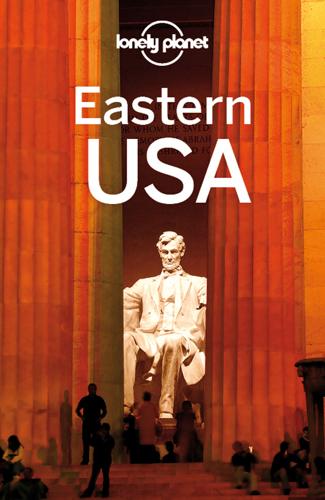
Eastern USA
by
Lonely Planet
He sent $500 million to states for direct relief and saved a fifth of all homeowners from foreclosure. He also sent people back to work on a grand scale. He created the Civilian Conservation Corps, which gave jobs to 250,000 young men to work in the parks and forests; they would go on to plant two billion trees. He also created the Works Progress Administration (WPA), which put another 600,000 to work on major projects across the country – building bridges, tunnels, dams, power plants, waterworks, highways, schools and town halls. The New Deal wasn’t just about infrastructure. Some 5000 artists (including famed Mexican painter Diego Rivera) were employed painting murals and creating sculptures in public buildings – many still in existence today.
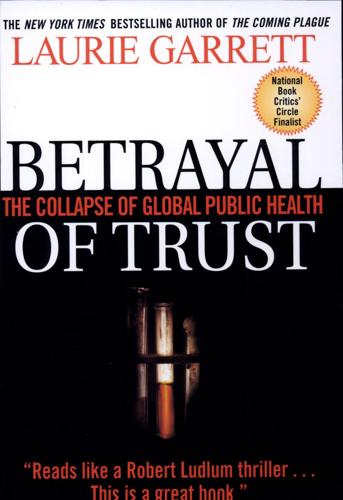
Betrayal of Trust: The Collapse of Global Public Health
by
Laurie Garrett
Published 15 Feb 2000
Among the many New Deal initiatives that affected health programs were Aid to Dependent Children (1933); the Civil Works Administration (1933); the federal Emergency Relief Administration (1933); the National Recovery Administration (1933); the Public Works Administration (1933); the Tennessee Valley Authority (1933); the Rural Electrification Administration (1935); the Works Progress Administration (1935); and the Social Security Act (1935). In the same period Congress passed a series of federal initiatives specific to health. They included the Venereal Diseases Act (1935); the National Cancer Act (1937); and the Venereal Diseases Control Act (1938). 129. One of the most colorful figures in the history of U.S. politics, La Guardia was an improbable hero.
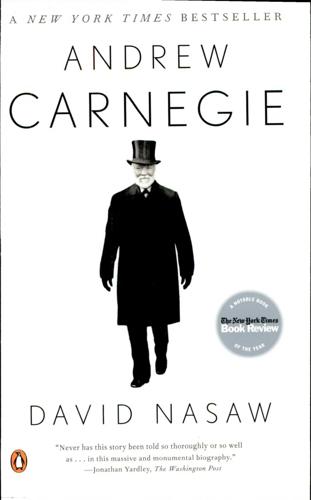
Andrew Carnegie
by
David Nasaw
Published 15 Nov 2007
Tarr, “Infrastructure and City-Building,” in Samuel P. Hayes, ed., City at the Point: Essays on the Social History of Pittsburgh (Pittsburgh: University of Pittsburgh Press, 1989), 216–28; Leland D. Baldwin, Pittsburgh: The Story of a City (Pittsburgh: University of Pittsburgh Press, 1937), 203, 211–12, 241–43. 15. Writers’ Program of Works Progress Administration (WPA), Story of Old Allegheny City (Pittsburgh: Allegheny Centennial Committee, 1941). 16. Ormsby O. Gregg, Isaac Gregg, and Moses F. Eaton, Pittsburgh, her advantageous position and great resources, as a manufacturing and commercial city: embraced in a notice of sale of real estate (Pittsburgh: Johnston & Stockton, 1845). 17.
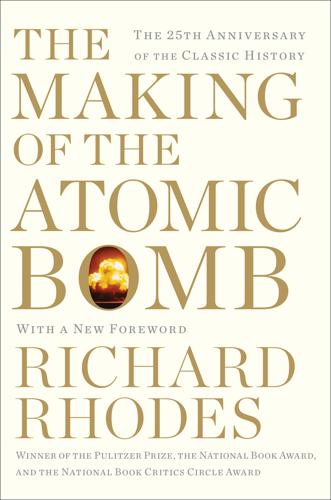
The Making of the Atomic Bomb
by
Richard Rhodes
Published 17 Sep 2012
A small-town Iowa boy, idealistic and energetic, Harry Lloyd Hopkins had fallen into New York social work after four years at Grinnell and won appointment at the beginning of the Depression administering emergency state relief. When the governor of New York was elected President, Hopkins moved with Roosevelt to Washington to help out with the New Deal. He ran the vast Works Progress Administration, then took over as Secretary of Commerce. His performance moved him closer and closer to the President, who picked up talent wherever he could find it; as war approached, Roosevelt invited Hopkins to dinner at the White House one evening and moved the man in for the duration as his closest adviser and aide.

Parks Directory of the United States
by
Darren L. Smith
and
Kay Gill
Published 1 Jan 2004
Facilities: 25 campsites with electrical hookups and showers, 2 camping cabins, picnic area, picnic shelters, boat ramp, hiking trails, swim beach, playground. Activities: Camping, hiking, boating, canoeing, fishing, swimming, water-skiing. Special Features: A stone cairn in the park commemorates the work accomplished by the Works Progress Administration (WPA) crews of the 1930s. ★3625★ North Dakota Forest Service 307 1st St E Bottineau, ND 58318 (701) 228-5422 - Phone (701) 228-5448 - Fax Web: www.ndsu.nodak.edu/forestservice Owns and manages approximately 13,278 acres of forest land in five designated state forests. ★3629★ BLACK TIGER BAY STATE RECREATION AREA 152 S Duncan Dr Devils Lake, ND 58301 Web: www.ndparks.com/Parks/DLSP.htm Phone: 701-766-4015 Location: 7 miles east of Devil’s Lake (5 miles south, then 3 miles west).
…
Facilities: Picnic areas with shelters, pond, swimming pool, amphitheater, playground, sports courts, ball fields, horse stables (for groups of disabled and disadvantaged persons), 18-hole golf course, arts center, rec center with weightroom facility. Activities: Hiking, biking, swimming, horseback riding, golf, basketball, tennis, football, soccer, baseball, softball. Special Features: Park’s stone grills, wooden pavilions, and walking trails were built in the late 1930s by Works Progress Administration. Chastain’s amphitheater hosts jazz, rock, and pop concerts during the summer. ★4806★ GRANT PARK 537 Park Ave SE Atlanta, GA 30312 Phone: 404-624-0697; Fax: 404-624-0823 Size: 131 acres. Location: In Southeast Atlanta; bordered by Boulevard on the east, Atlanta Ave on the south, Cherokee Ave on the west, Sydney St on the north and Park Ave on the northeast.
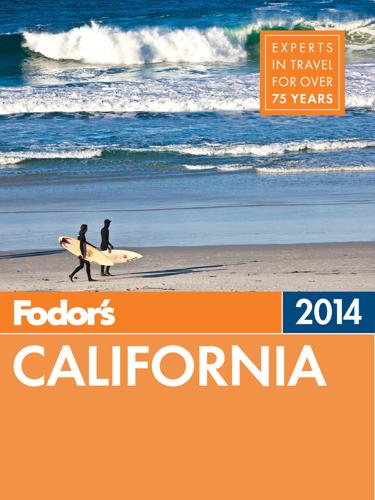
Fodor's California 2014
by
Fodor's
Published 5 Nov 2013
Newport’s best beaches are on Balboa Peninsula, where many jetties pave the way to ideal swimming areas. The most intense bodysurfing place in Orange County and arguably on the West Coast, known as the Wedge, is at the south end of the peninsula. Created by accident in the 1930s when the Federal Works Progress Administration built a jetty to protect Newport Harbor, the break is pure euphoria for highly skilled bodysurfers. TIP Since the waves generally break very close to shore and rip currents are strong, lifeguards strongly discourage visitors from attempting it—but it sure is fun to watch an experienced local ride it.
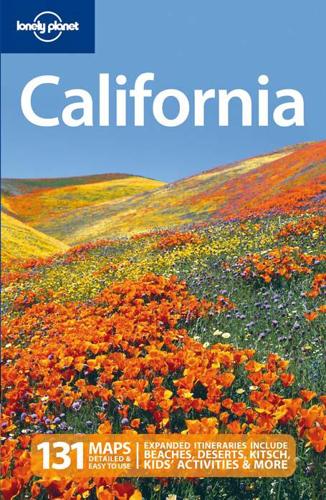
California
by
Sara Benson
Published 15 Oct 2010
* * * When the 1906 earthquake hit San Francisco, the visiting Metropolitan opera lost all its costumes and tenor Enrico Caruso was thrown from his bed. Caruso never returned, but the Met played free shows in the rubble-choked streets. * * * * * * TAKING IT TO THE STREETS Beginning in the 1930s, when the federal Works Progress Administration sponsored schemes to uplift and beautify California cities, murals defined California cityscapes. Mexican muralists Diego Rivera, David Alfaro Siqueiros and Jose Clemente Orozco sparked an outpouring of murals across LA that today number in the thousands. Rivera was also brought to San Francisco for murals at the San Francisco Art Institute, and his influence is reflected in the interior of San Francisco’s Coit Tower and some 250 murals lining the Mission District preserved and expanded by Precita Eyes.
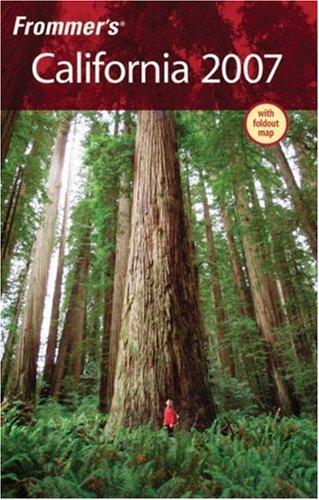
Frommer's California 2007
by
Harry Basch
,
Mark Hiss
,
Erika Lenkert
and
Matthew Richard Poole
Published 6 Dec 2006
Bus: 16AX, BX, 5, 6, 7, 66, or 71. BEACH CHALET Listed on the National Register of Historic places in 1981, the Spanish-Colonial Beach Chalet, 1000 Great Hwy., at the west end of Golden Gate Park near Fulton Street (& 415/386-8439), was designed by Willis Polk in 1925. In the 1930s, the Works Progress Administration (WPA) commissioned Lucien Labaudt (who also painted the Coit Tower frescoes) to create frescoes, mosaics, and wood carvings of San Francisco life. Today, after a renovation several years back, the chalet houses the frescoes and other historic artifacts and details downstairs, a restaurant upstairs, and a great café in the back.
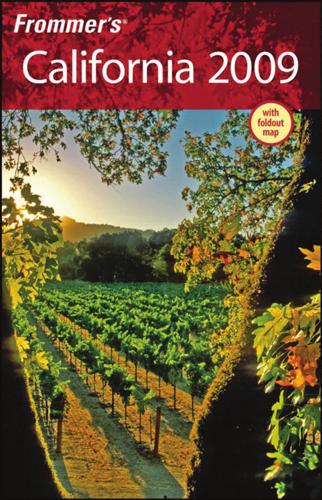
Frommer's California 2009
by
Matthew Poole
,
Harry Basch
,
Mark Hiss
and
Erika Lenkert
Published 2 Jan 2009
Enter the park at K ezar Drive, an extension of F ell Street; bus riders can take no . 5, 6, 7, 16AX, 16BX, 66, or 71. BEACH CHALET Listed on the N ational R egister of H istoric places in 1981, the Spanish-Colonial Beach Chalet, 1000 Great Hwy., at the west end of Golden Gate Park near F ulton S treet ( & 415/386-8439), was designed b y Willis Polk in 1925. I n the 1930s, the Works Progress Administration (WPA) commissioned Lucien Labaudt (who also painted the Coit Tower frescoes) to cr eate frescoes, mosaics, and wood car vings of San F rancisco life. Today, after a r enovation sev eral y ears back, the chalet houses the frescoes and other historic ar tifacts and details do wnstairs, a r estaurant upstairs, and a S A N F R A N C I S CO great cafe in the back.
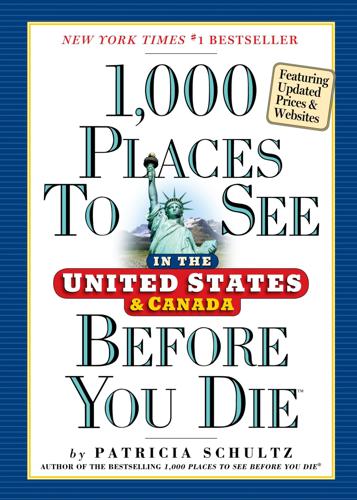
1,000 Places to See in the United States and Canada Before You Die, Updated Ed.
by
Patricia Schultz
Published 13 May 2007
Many visitors to Portland take a day trip to Mount Hood—which reaches into the sky like a mighty incisor—and some make it a vacation destination. Campers may claim that a tent tucked into a forested glade is the best place to stay on Mount Hood, but those looking for creature comforts among the mountain wilderness will check in at Timberline Lodge. Built during the Depression by unemployed craftspeople hired by the Works Progress Administration, Timberline is the very model of rustic Northwest Craftsman design, with handmade furniture in the lodge rooms, handwoven curtains, and newel posts hewn from giant logs. The lodge’s Cascade Dining Room is considered the best on the mountain. This is also where you’ll begin the 41-mile Timberline Trail for a summertime trek encircling the mountain.